

Budget for Backpacking South America: Our first 6 months of travel costs

Sometimes, I use affiliate/sponsored links with my recommendations, which if bought through might earn me a few pennies at absolutely no extra cost to you . This helps with the cost of keeping this site alive so I can continue to guide you on your travels. Please remember that I would never ever ever recommend anything I don’t or wouldn’t use myself. Big thanks to each and every one of you who have trusted my recommendations so far! Lozzy x
To help you plan any upcoming travels in the region, we’ve put together our spending vs original travel budget for backpacking South America for the first 6 months of our trip. This covers Uruguay, Argentina, Chile, Bolivia, Peru and Ecuador.
Once we got to Colombia, we had our first parental visitors, and since they were set on travelling in a bit more style than we were used to, and also offering to pay for some of the food and experiences we had, our budget tracking got kind of messed up. However, we have written a guide to the cost of living in Colombia for those interested.
After reading our first 6 months of travel budget for backpacking South America write-up, you may also be want to have a look at:
- Essential things you need to know before you backpack in South America
- A year with the Osprey Aura 50 L backpack: an honest review
- 8 hand luggage essentials I couldn’t fly without
We didn’t set off on our travels on a super tight leash, since we had been saving for a while, and planned to find freelance work later down the road. Both of us left the UK with £9000 each budgeted. Those savings lasted us until we reached Colombia, 9 months into our trip, but by then we had started to take remote work projects in brand consultancy, so we didn’t have to worry about cash flow so much.
2020 update: in the end, I returned to the UK after 26 months with more in savings than when I’d left to go travelling. Cue Smuggo McSmugface. See my details of the income streams I used to fund my travelling here .

One thing that helped us keep our travel budget for backpacking South America low was that we were slow travelling. For the first few months, we would usually spend at least 5-7 days in one place. If you have a small amount of time and you’re trying to cram in as many destinations as you can, the extra money needed for flights, more reliable transfers and tours that you book online ahead of your arrival are going to create a need to greatly increase your budget for backpacking South America.
In addition to this, the Revolut app has made it easy to keep track of the spending on our card (and to watch the IVA tax refunds come in!). Revolut has been great in giving commission-free foreign exchange. It gives up to £5000 in card transactions without any fee and up to £200 cash withdrawals without a fee. After that it’s just 2% per withdrawal, no different to UK banks being used abroad. Don’t forget to check out our list of South American Bank ATMs that give free cash withdrawals to Revolut cards.
Budget for backpacking South America: The first 6 months of travel spending
Budget for 4 weeks in uruguay.
As the first destination of our travels, it was hard to know what to budget for backpacking South America’s most expensive country. We eventually set our budget for 4 weeks in Uruguay at £1800 – £450 a week – with max £30 a night on accommodation for both of us. Et voilà, in total we spent £1800, exactly on budget for 4 weeks in Uruguay. Bang on!
Although the country feels expensive, it was actually easy to fit into that budget without missing out on anything. Granted, we’re not avid sky-divers, and we don’t have a taste for expensive wines, but by keeping a close eye on what we were spending and skimping on the odd hostel-kitchen meal, we were able to treat ourselves when we wanted to.

Meal-wise, an average dinner for two with a beer would cost around £20. Note that beers are mostly served in litre bottles here, so you’re expected to share. Cooking supermarket food for two people, you can easily make £15 stretch across 4 meals without skimping too much. Pasta and rice are cheap in Uruguay, as is meat, but veg is relatively expensive. Imported alcohols such as Patagonia beer or Captain Morgan rum are much more expensive than their native counterparts, but still cheap enough by UK standards, so still fit nicely into our budget for 4 weeks in Uruguay.
Our accommodation in Uruguay was mostly private rooms with private bathrooms. We were prepared to dorm it up but found that the price difference for 2 dorm beds vs private double was usually not worth losing sleep over (ba-doom-doom-tsch). We thought dorms would be needed to make friends, but in our experience the easiest conversations are struck up in common areas.
Only one hostel went over £30 ( El Viajero, MVD , £31), but included a decent breakfast so we weren’t too fussed. Our cheapest accommodation was glamping at Patas Negras in Punta del Diablo for £11 per night for both of us. However, bearing in mind the far out location and the ‘experience’ of using outdoor showers and dry toilets, this price was probably quite just.
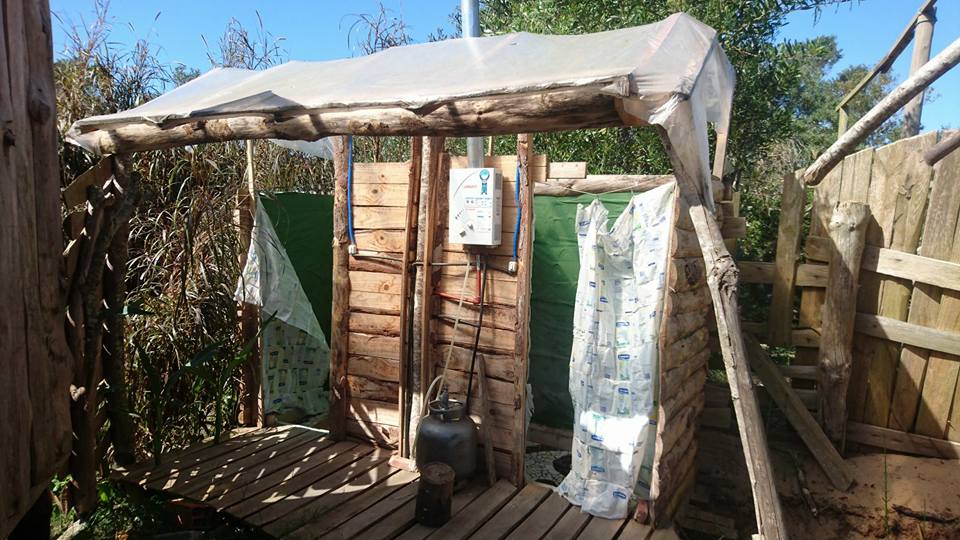
Most consumer goods cost around the same in Uruguay as the UK, but strangely shampoo and conditioner are seriously expensive here (minimum £5 for a very small bottle). There must be some odd import taxes applied in Uruguay as surrounding countries seem to have normal pricing for these items. Make sure you stock up on these before visiting. Not something we expected to have to consider in our budget for backpacking South America!
Budget for 5 weeks in Argentina
Whilst slightly less pricey than Uruguay , you still need a fairly chunky travel budget for backpacking South America if you’re planning to survive long in Argentina without missing out on too many experiences. Whilst Buenos Aires was the most exciting city we’d been to so far, we recommend that if you’re on a budget you don’t stay too long, as the cost of living there when coupled with the party lifestyle can quickly rack up.
Eating in, bunking up and opting for public transport over taxis can of course minimise your costs. We also saved a fair bit of money doing tours ourselves (such as the Sierras in Cordoba and Mendoza wine tour ), and although it took more effort on our part, we loved the freedom of it.

In the capital, you can find meals for £6-7, but the average price for food in Buenos Aires will be around £10-12 per person (saying that, the Argentinian economy is particularly volatile so these prices may all change by next year). Outside the capital, £6-8 per person is normal for a decent dinner. A beer will cost you 80-100 pesos (around £4).
In total, we spent around £2400 , which was close enough to our £2250 (£450 a week) budget for 5 weeks in Argentina for us to be happy.
2020 UPDATE: Since writing about our spending during our trip, the Argentinian economy has indeed gone tits up (again), so prices for foreigners have essentially halved. Expect there to be more hassle with getting money out of the already tightly-limited ATMs though.
Budget for 4 weeks in Chile
Our original 4-week budget for backpacking South America’s skinniest country was £450 a week, so £1800 for the month. In total, we spent a little more than £2000 for the both of us during just over a month in Chile, living pretty well.
Everyone travelling from the North of Latin America, having hit the cheapness of the likes of Colombia and Bolivia first, complains about how expensive Chile is, so we were prepped for a slam on the old bank account. However, having come from Argentina and Uruguay, we were pleasantly surprised at how cheap Chile felt.

In the majority of places in Chile, you can find good meals for £5-7. A litre of beer in a bar will cost you 3000 pesos – just over £3. The hostels we stayed in (excluding New Years because things get pricey everywhere around that time) cost between £10-15 per person. More importantly, you can get a decent bottle of wine (or a few) for £2 each.
Budget for 4 weeks in Bolivia
Bolivia is the cheapest country we’ve ever been to. Meals cost 10 Bolivianos – £1 – for two courses (even if you think you’re just ordering a main, you’ll normally be brought a noodle soup to start). You can find good dorms for around £5 each per night and even a swanky, gated apartment in La Paz only cost us £15. For buses, the general rule is £1 per 1 hour, but be warned that the quality of buses is much lower than in surrounding countries, so it’s not really the bargain you first thought – it’s more like paying for your own minor torture experience.
Even with the £120 cash stolen in Torotoro and £100 spent on replacing our nicked speakers, we still came in under our budget for backpacking South America’s cheapest nation. Not counting these mishaps, we spent around £1400 for both of us over 4 weeks, including £300 on the salt flats tour – yes, we got ripped off online!

Budget for 4 weeks in Peru
Our budget for 4 weeks in Peru was £1600. Overall, actual spending in Peru came to £1690 for the both of us. You can usually get a 2-course Menu del Día meal for 10-20 soles, and a pint for around 10 soles (£2.50). An average private double room in a decent hostel costs around £20 (80-90 soles) a night.
Transport is a tiny bit more expensive in Peru due to the big spike in the quality (of course, shite buses are still available but why bother when the quality ones still don’t break the bank?). We travelled 22 hours on a luxury Excluciva bus with dinner and a full 180-degree cama bed from Lima to Máncora for 120 soles – less than £30 each.
Our biggest hit to this part of our budget for backpacking South America was on guided tours & excursions, which previously we hadn’t made a habit of going on (with the exception of the Uyuni Salt Flats and Death Road in Bolivia). Still, we only spent around £200 each in total on organised tours, which included trips to Rainbow Mountain , Machu Picchu and the floating islands of Los Uros .

Budget for 3 weeks in Ecuador
Ecuador wasn’t as pricey as we expected. Our budget for 3 weeks in Ecuador was around £1000, but we spent a mere £860 ($1200) between the two of us.
You can still find lunchtime Menu del Días in Ecuador for $2.50-3 USD which will normally include a soup, main and drink, sometimes a pudding too. As always, dinners are a little more expensive; expect to pay around $5 for a decent meal. Beers will cost you $1.50-2. Good hostel accommodation can be found for around $10 each per night. The cost of travel in Ecuador is really not as bad as everyone makes out!

Summary of our spending vs budget for backpacking South America:
So that accounts for our first 6 months of travel budgets vs spending in South America! As you can see, creating a budget for backpacking South America very much depends on which countries you’re planning on spending the most time in, and how slowly you are able to travel. Hopefully this extra info therefore helps you to plan and budget for backpacking South America for your own trip. Don’t forget to give yourself a boost with a trusty Revolut card !
Now that you’ve reached the end of our first 6 months of travel budget for backpacking South America write-up, you may also be interested in reading:

Liked this post on our first 6 months of travel budget for backpacking South America?
Save it as a pin on Pinterest to be able to find again later!

Last Updated on 23 December 2022 by Cuppa to Copa Travels
Read these posts next!

Learn from our travel mistakes

Bitesize LatAm: Which country to visit in Latin America?

The best cities in South America for history lovers to travel to
Leave a comment :) cancel reply.
- Meet the Team
- Work with Us
- Czech Republic
- Netherlands
- Switzerland
- Scandinavia
- Philippines
- South Korea
- New Zealand
- South Africa
- Budget Travel
- Work & Travel
- The Broke Backpacker Manifesto
- Travel Resources
- How to Travel on $10/day
Home » South America » Backpacking Travel Guide
Backpacking South America Travel Guide (TRAVEL TIPS • 2024)
So you are getting ready to travel South America, eh? Great call!
Backpacking through South America is like learning to ride a bike without the training wheels. There is just the right amount of danger and curve balls to keep you alert, focused, and totally stoked on life.
With the exception of a handful of backpacker hotspots, South America is the wild west frontier of backpacking. This is the land of crazy parties, epic surfing, sprawling cities, and wild landscapes including the Andes and the Amazon jungle.
Above all else, South America is stunningly beautiful. Though challenging to navigate at times, it’s budget backpacker friendly, diverse, relatively safe, and one hell of a travel experience…
But South America is MASSIVE. Deciding where to go and how to plan travel to South America is a mind-boggling task. That’s where I come in, amigos. This South America travel guide will provide you with EVERYTHING you need to know to prepare for your trip through South America.
Here’s the full low-down on backpacking South America itinerary and routes, country profiles, tips and tricks for South America budget travel, and much more.
Lace up your bootstraps and prepare to have your travel inspiration skyrocket. We’re going on an adventure!
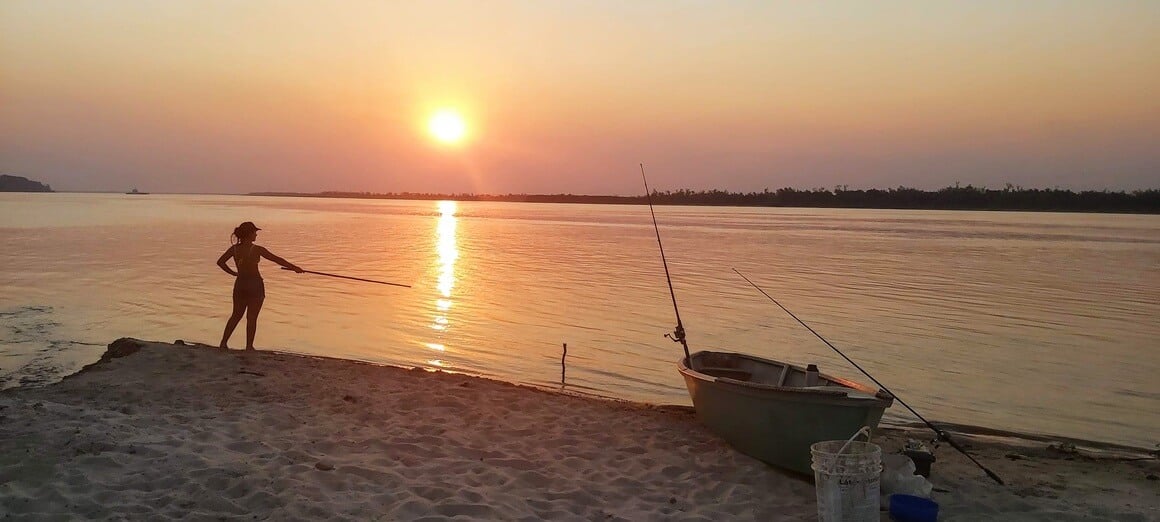
Why Go Backpacking in South America?
The South American continent is one of my favourite places on earth. It was always a place that mystified me: the traveller group was generally older and more mature. So when I got invited (by a sexy South American), I jumped at the chance.
It’s a place where I learned the art of budget travel , fell in love countless times, and had a multitude of life-changing experiences along the way. If you want to get off the beaten track whilst still having the option to meet plenty of other travellers, South America is the place to level up your backpacking skills and head on a real adventure…
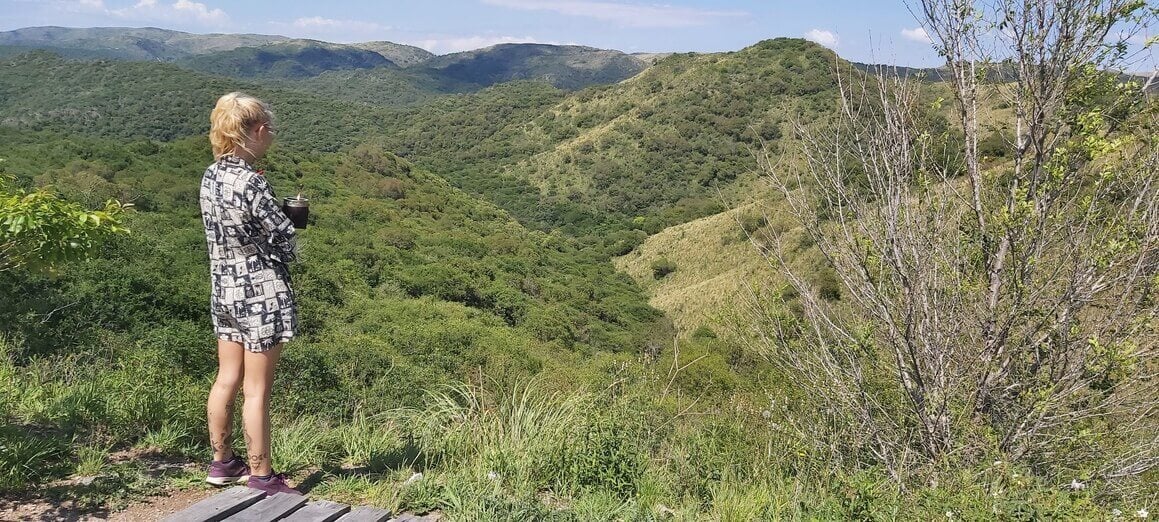
South America is one of the most diverse continents on earth. It is home to the world’s second-highest mountain range in the Andes, world-class surf beaches, the Amazon Basin, the world’s driest desert, huge plains of lush grassland, glaciers, and unique wildlife not found anywhere else on Earth…
Each country you visit whilst backpacking South America offers up the opportunity to experience the incredible natural and cultural forces unique to that region.
Backpacking South America is generally a cheap endeavour – although it’s not as cheap as Southeast Asia or India. There are some fairly expensive corners of South America that you should avoid if you’re travelling on a budget .
You will fall in love with South America (and maybe a person or two along the way). So let’s dive into some South America travel itineraries and backpacking routes for your trip.
Best Travel Itineraries for Backpacking South America
Best places to visit in south america – country breakdowns, 9 top things to do in south america, backpacker accommodation in south america, south america backpacking costs, best time to travel to south america, staying safe in south america, getting into south america, how to get around south america, working in south america, what to eat in south america, south american culture, unique experiences in south america, faqs about backpacking in south america, final thoughts on backpacking south america.
When making a South America backpacking itinerary, remember that travel distances are HUGE, internal flights expensive, and sometimes you want to stay somewhere longer than anticipated.
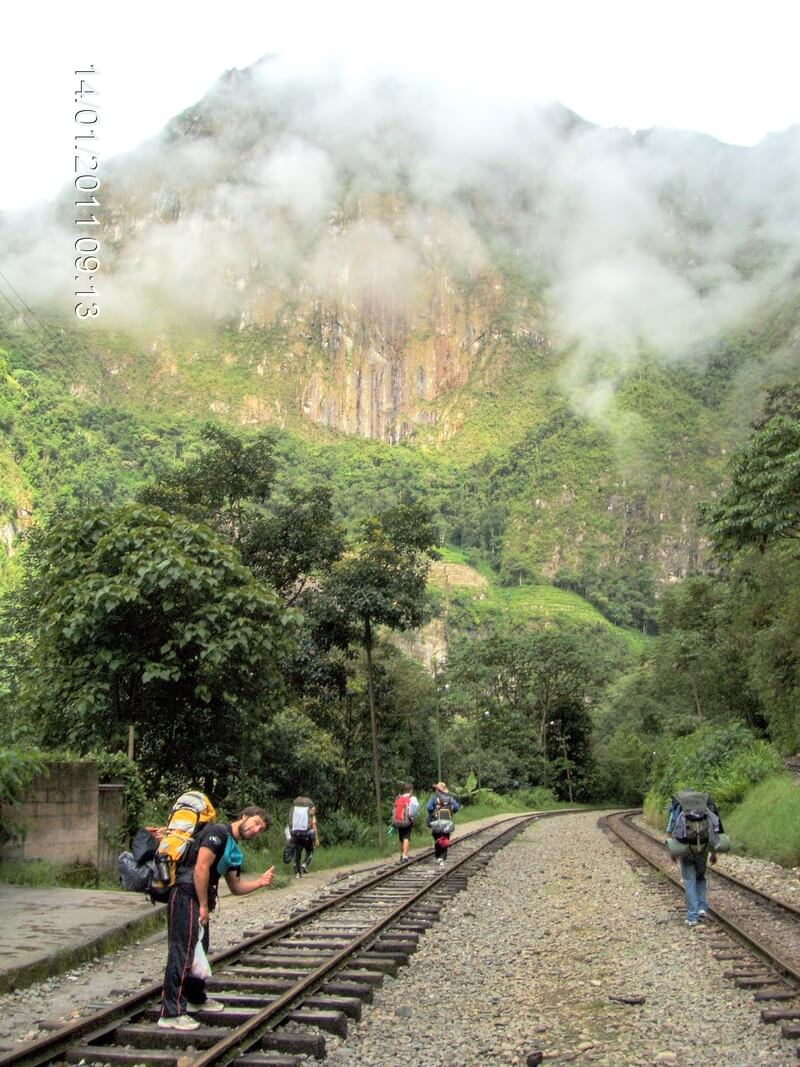
So choose your South America backpacking route carefully. Unlike other continents, how much time you have really matters; you simply can’t do all of it.
If you only have 2 or 3 weeks for travelling South America, forget about seeing the whole continent. I recommend sticking to one country and devoting your energy to exploring it properly.
In one month, you could explore some countries closer to each other. You could visit Bolivia and Lake Titicaca in Peru for example. It’s good to have room for spontaneity in your South America travel itinerary too.
2 Week South America Travel Itinerary – The West Coast Appetizer
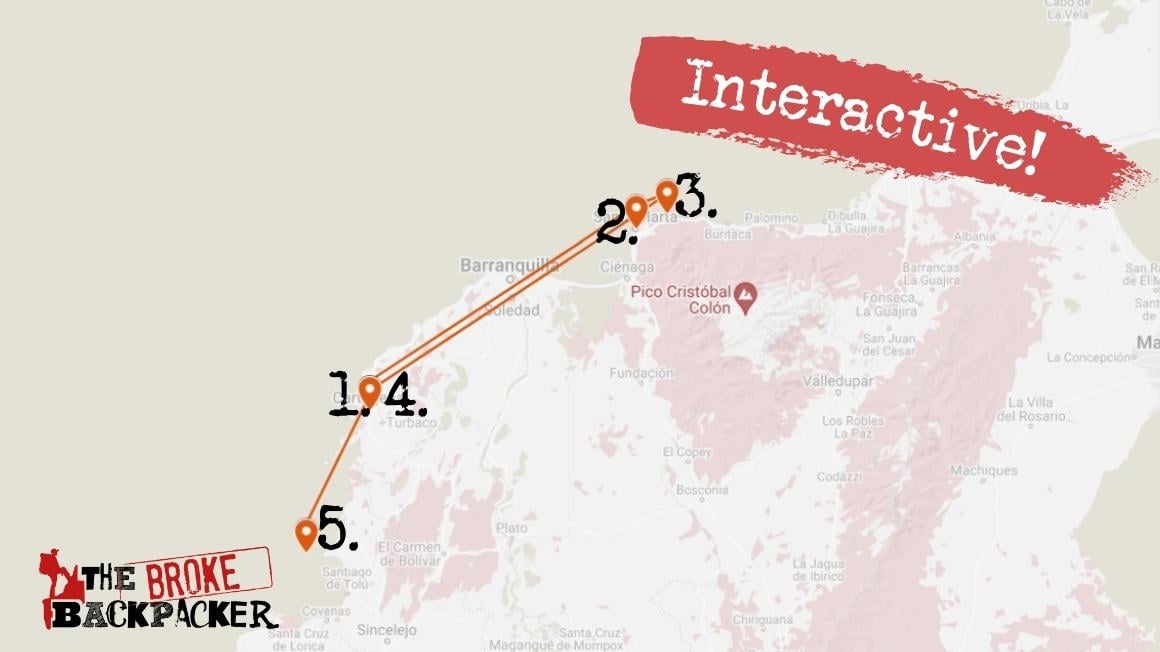
You’ll have to keep moving to make this itinerary happen in 2 weeks, but I believe in you!
Start your backpacking South America itinerary in Colombia by visiting Cartagena . After a few days, head to Santa Marta , the jump-off point for Minca – a charming mountain town – and Tayrona National Park.
Get a bit off the beaten path, and head east to Cabo de la Vela (where the desert meets the sea) and Punta Galinas , where you can feast on fresh seafood along the Caribbean coast. Doubling back to Cartagena , head to nearby Playa Blanca and Tolú (mangrove) before heading to Islas de San Bernardo (white-sanded islands).
Or you could start in Lima , Peru. Explore the city for a day or two before heading to the Nazca Lines , Arequipa , and Colca Canyon .
Then head to Cusco in the Andes. Take a few days to get used to the altitude before setting off on a multi-day trek to Macchu Picchu.
Alternatively, start in Buenos Aires . Then you can head south to trek in Patagonia . In southern Argentina and Chile, you can do the world-famous Torres del Paine circuit . 2 weeks is cutting it fine but – if you hustle – you could pull it off.
In 2 weeks, you can get a good taste of Colombia, Ecuador , or Bolivia . Don’t miss out on the Salt Flats .
1 Month South America Travel Itinerary – The Starter
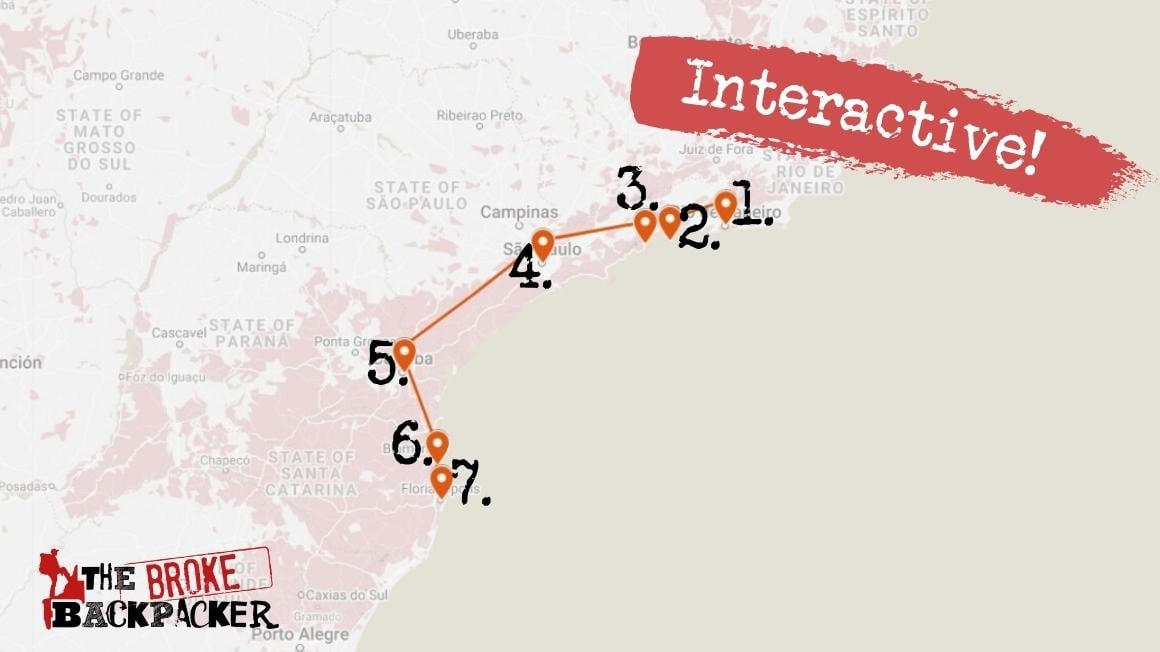
With 1 month, you can make an epic backpacking South America itinerary. If you want to explore more than one country in South America, you’re gonna need more than 3 weeks.
For surf bums, you could easily spend a month heading beach to beach from Southern Peru all the way to Colombia , in 1 month. Or you could do 2 weeks in Argentina followed by 2 weeks of hiking in Chilean Patagonia .
If it were me, larger countries like Argentina, Chile , and Brazil are better to explore with more than 1 month. You can do it but you will spend a long time on bus journeys, so I would just stick to one area.
Southeast Brazil is a good choice for 1 month on a South America itinerary: travel from Rio de Janeiro all the way south to Florianópolis and hit up everything in between. Bear in mind that you’ll probably want to stay in Rio AND Floripa longer than you expect.
Highlights of this route include exploring the megapolis of São Paulo , idyllic getaways of Ilha Grande and Paraty , eco-friendly and laidback Curitiba , and the crazy nightclubs of Balneário Camboriú .
Or, you could fly into Ecuador and spend 3 weeks exploring here: stay at a great hostel in Guayaquil before heading to Montañita . In Montañita you can party and surf to your heart’s content. Head North towards Bahia de Caraquez and Canoa for surf towns that are more off the beaten path.
Next head to the mountains, stopping first in Quito . There are some excellent treks in the Ecuadorian Andes .
If you have time, definitely hit up the Volcano Loop trail on the outskirts of Cotopaxi National Park . A trip to the jungle around Puyo is recommended as well. Then head for a week of trekking in Colombia .
3 Month South America Travel Itinerary – The Great South America Main Course
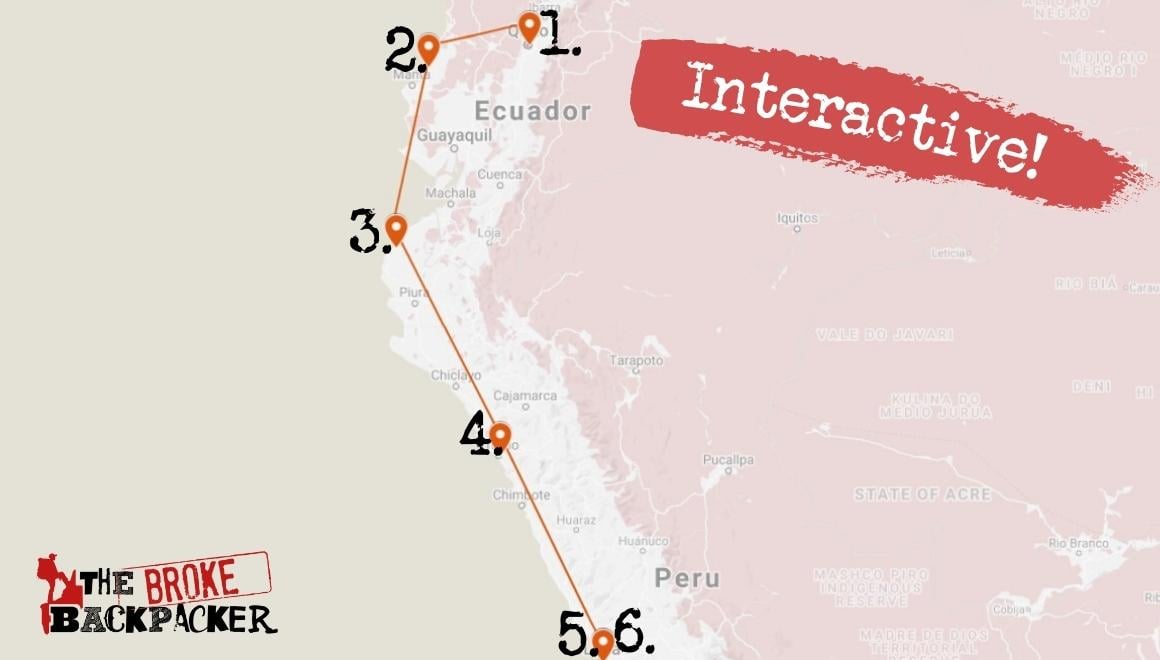
3 months backpacking South America, eh? Hell yes!
I recommend flying into Lima, Peru unless you know you want to start in the north (Brazil or Colombia) or further south (Argentina or Chile). Explore Lima and the coast before heading to the Andes. There Machu Picchu awaits in all of its glory.
Definitely do a trek to the famous Inca city! (More on hiking in South America later). From here, you can either drop down on the other side of the Andes and explore the Amazon basin or you can head south to Bolivia and eventually Argentina and Patagonia .
Alternatively, you can slowly start making your way north via the Coast. You could spend a month (or more) in Ecuador, Colombia, or Brazil respectively.
Personally, I started off in Buenos Aires then went north to Brazil and Colombia . The distances were truly massive. I’m talking 30-hour bus rides (on comfortable buses I must say).
Travelling in South America is never a quick affair, so plan your itinerary accordingly.
6 Month South America Travel Itinerary – The Full 3-Course Latin America
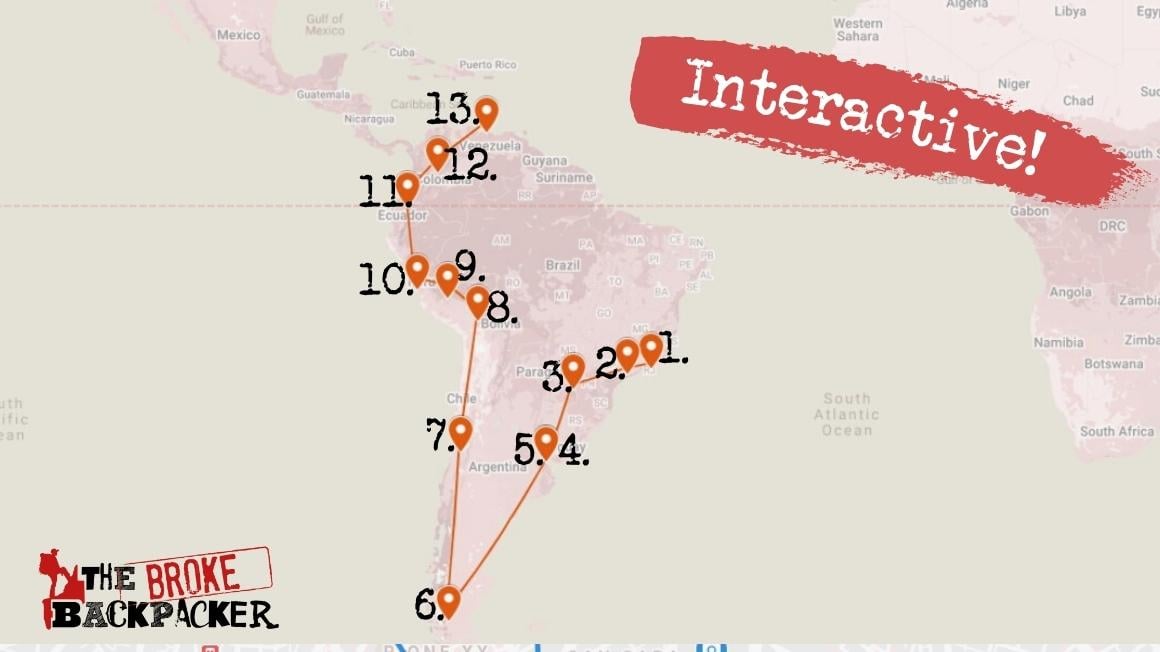
Life has brought you to the fortunate crossroads of having 6 months to travel South America? Good on you!
With a 6-month backpacking South America itinerary, you have the luxury of really being able to take your damn time. To see multiple countries, it’s a practical choice to begin your journey either in the north or the south to avoid backtracking.
With a 6 month itinerary, you can explore many South American countries in depth. I’ll be honest with you, the itinerary shown on the map is really fucking ambitious. But hopefully, it gives you an idea of what crossing this vast continent would look like.
Starting your journey in Rio de Janerio or São Paulo might be a bit of a rough landing, though you will be a primed bad-ass by the time it comes to move on to another country. Other options are starting with some days in Buenos Aires , in Argentina, and Chile, in the south.
You could be surfing it up on the coast of Ecuador one day, and be in the mountains of Peru several days (and many bus rides) later. I advise taking a chunk of your time to really explore and get off the beaten path in top destinations like Brazil , Colombia , and Bolivia .
Having 6 months or more to go backpacking truly means you have a total blank slate to work with. So get ready to write your own beautiful backpacking destiny!
Each country in South America has something unique and profoundly exciting for backpackers. But they also have some common themes: they are Spanish speaking (minus Portuguese in Brazil), they have stunning natural beauty, and some of the nicest people you will meet whilst travelling. So finding the best places to backpack in South America has a lot to do with your own interests.
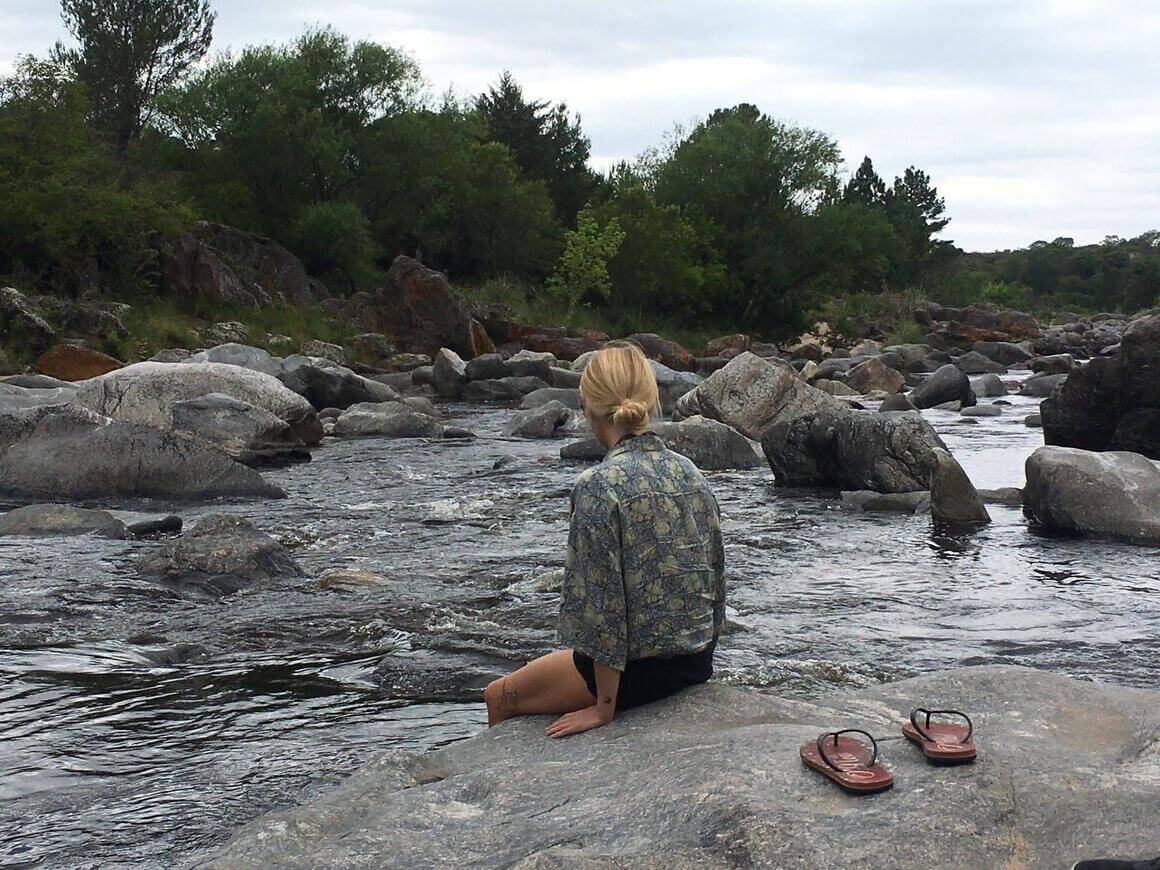
Maybe you’ll explore the epic snow-capped peaks of Patagonia in Argentina and Chile. Party with beautiful people at the Carnival in Brazil.
Trek to the Lost City in Colombia. Experience the sun-drenched deserts of Bolivia and the colourful Rainbow Mountains of Peru.
Backpacking through South America truly is a life-changing journey through one of the planet’s most fascinating landmasses. When you visit South America, you can be sure that it will be some of the most fun you will have in your life.
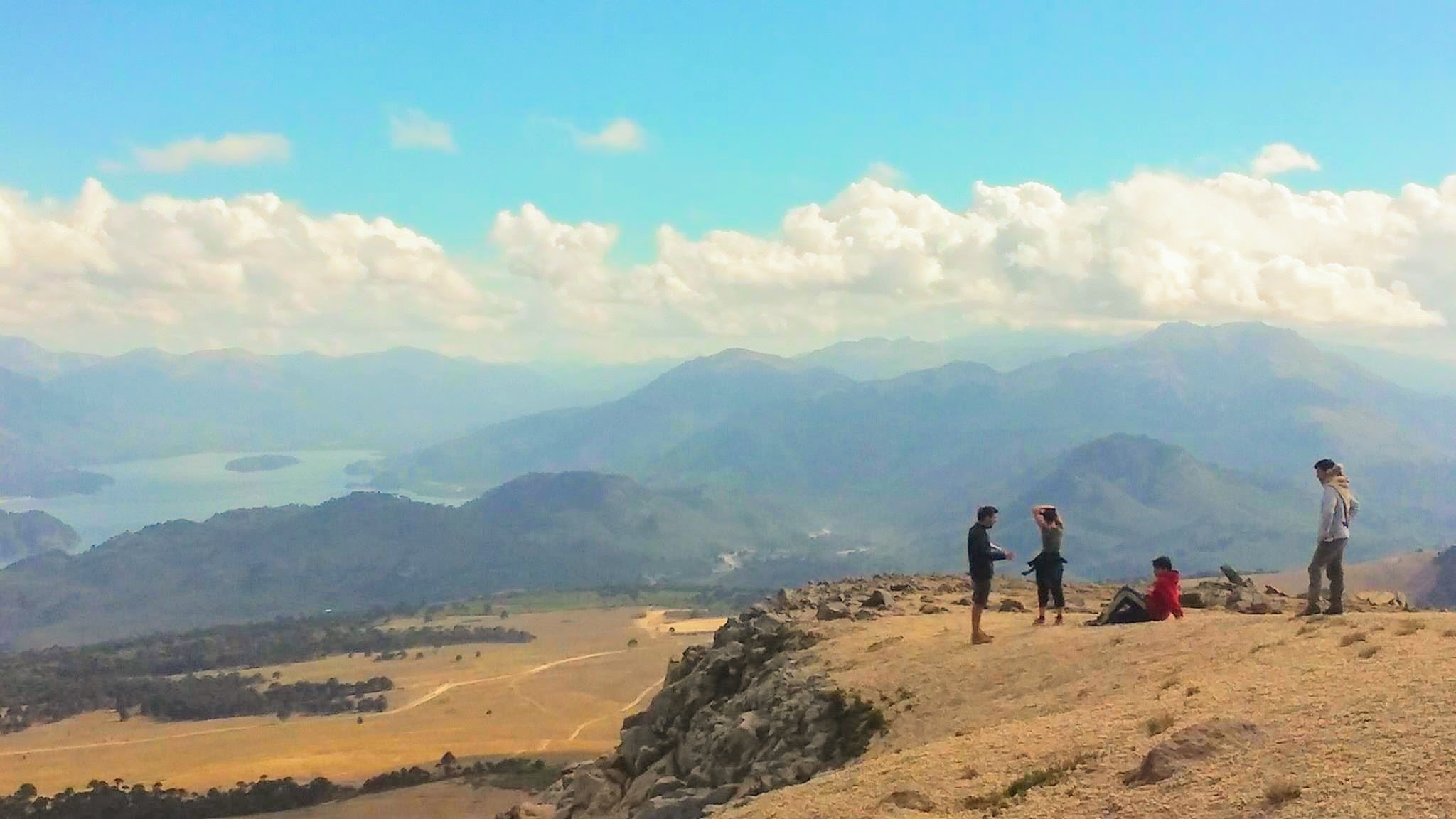
South America is a vast continent on the move. The number of people travelling to South America is increasing every year. Whilst the cost of living in South America remains quite low, each country requires a different budget for travellers.
Once you begin to discover a few of the South American countries, you will be entranced by the jaw-dropping landscapes, fascinating history, vibrant culture, and awesome food.
Let’s take a look at the countries that make backpacking in South America so damn special.
Backpacking Brazil
Brazil is, hands down, one of South America’s most dynamic countries. It’s all about the extremes. Whether it’s the parties, the people, or nature, the vibrations run through everything – and connect everyone.
Backpacking in Brazil offers up sick surf beaches, fun-loving locals, insane parties, and landscapes that would make even the most seasoned traveller say “no shit, mate, look at that!”
Of course, the Brazilian festival Carnival is legendary – and for good reason. Get your mind blown on the Brazilian side of Iguaçu Falls , visit the Amazon , drink a Caipirinha on the beach! Plus Brazil’s home to big up-and-coming cities like Belo Horizonte, Curitiba, and Natale.
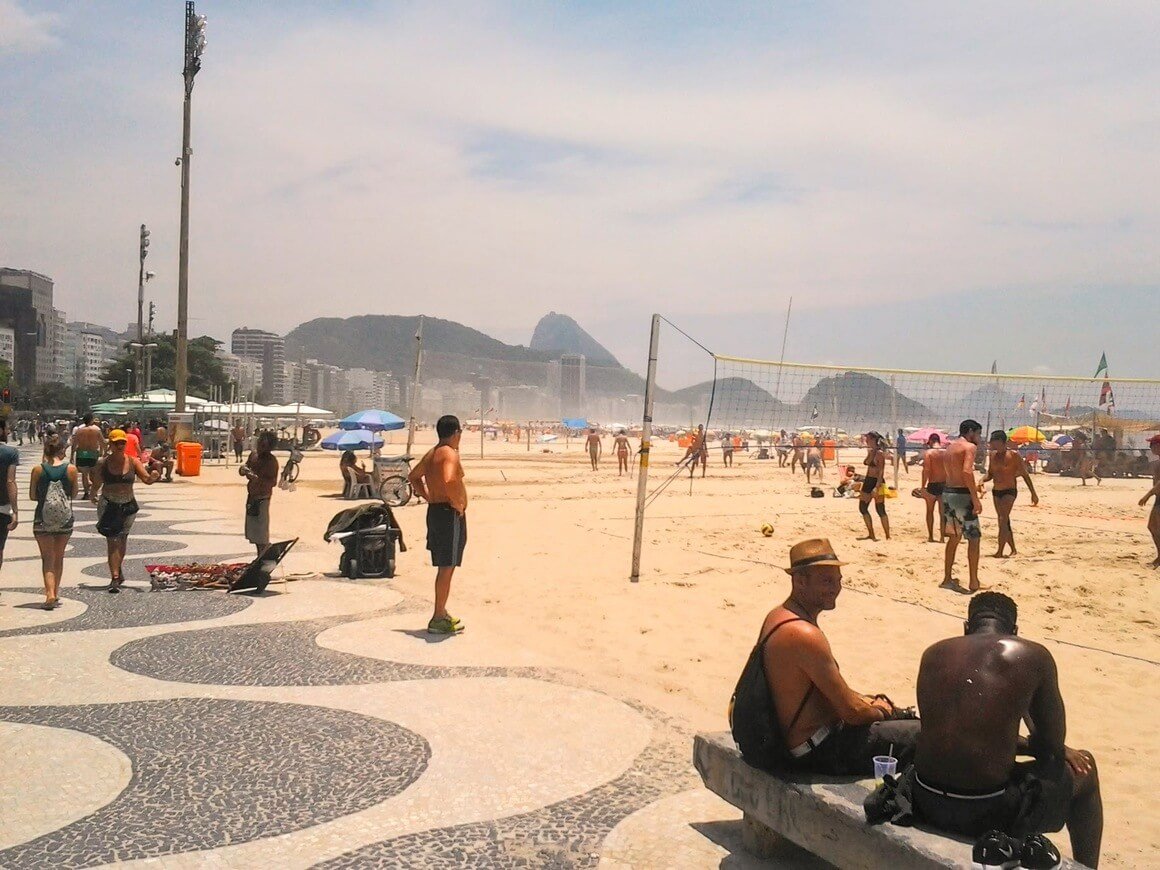
And when I say ‘extreme’, I mean extreme : Brazil is absolutely MASSIVE and covers nearly half (47%) of South America’s landmass! That should give you an idea of how big it is.
But, more importantly, it gives you a better idea of how much diversity Brazil has on offer. In fact, there’s a lot going for Brazil that you may not be aware of.
For example, trekking probably isn’t the first thing that pops into your mind when you think about backpacking through Brazil. It’s a shame because Brazil has truly gorgeous trails spread throughout the country. It’s also home to Iguazu, one of the most incredible waterfalls on Earth.
The best hiking opportunities are usually found in Brazil’s national parks (parques nacionais ). Brazil has over 70 national parks and – in terms of beauty – these can contend with any other on Earth.
What to Know Before Visiting Brazil
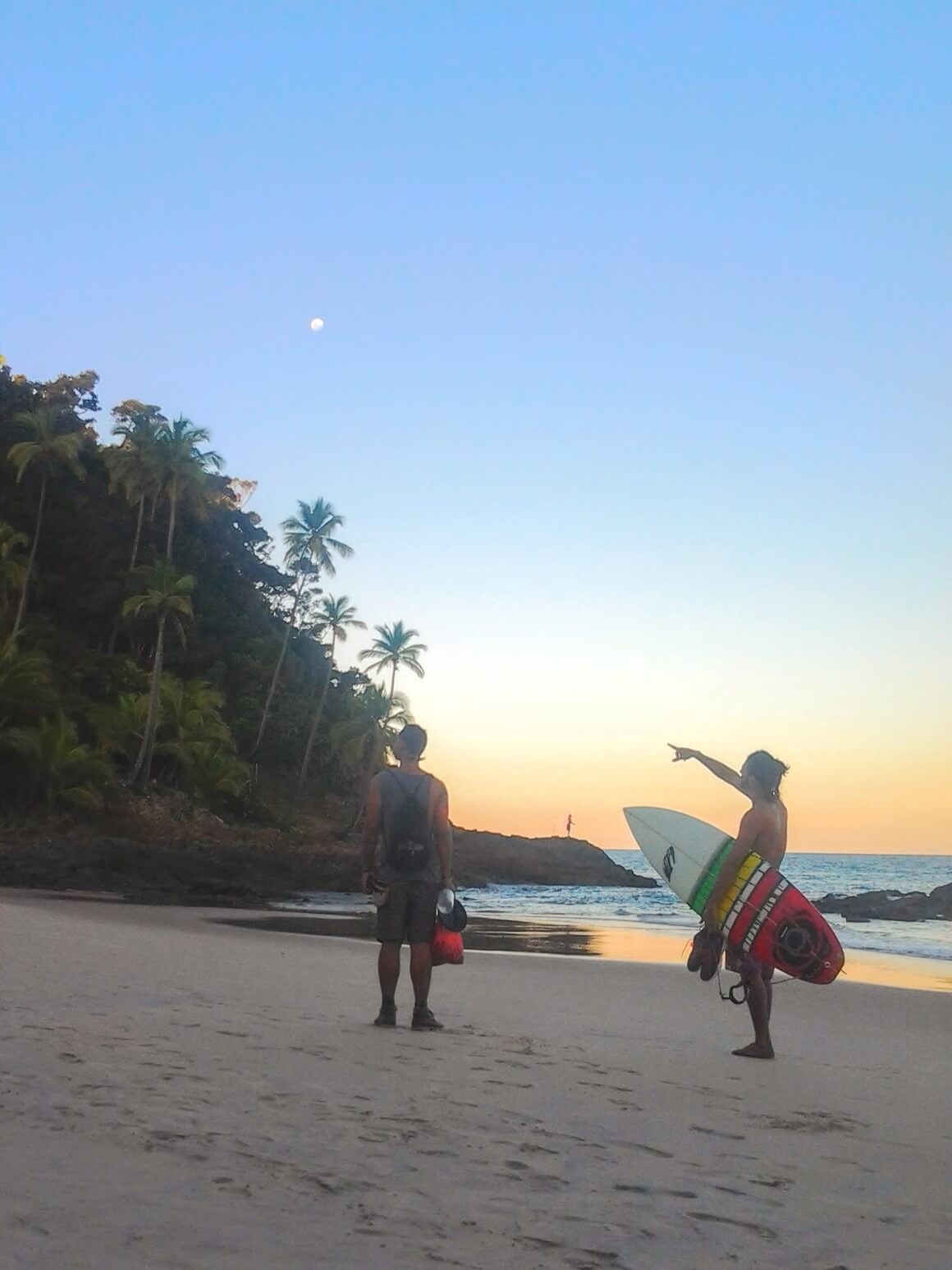
- Don’t miss out on… Florianopolis. The Brazilians favourite place to visit for a reason. It’s chilled, safe, and gorgeous. You plan to stay in Floripa for a week, it grabs you by the balls, and you get stuck for months.
- Keep an eye out for… Travel distances. Don’t be fooled: they’re way longer than they seem on the map. Give yourself plenty of time to get from A to B.
- The coolest hostel is… Hostel do Morro . In one of my favourite destinations in Brazil, this hostel is a true nature immersion. In the “mato”, with sea view and monkeys visiting. A true good vibes place!
- The best food is found in… Belo Horizonte. There is an amazing energy to this place; everyone hangs out on the streets, eating and drinking at plastic tables, all night long.
Backpacking Colombia
Whilst South America has many countries that I consider to have the full package , Colombia is the most complete. It’s a relatively small country. So considering the scale of epic surf, neverending parties, untouched jungle, happening cities, and towering mountains, Colombia is a reason for backpackers to keep travelling!
Cali, Cartagena, Bogotá , and Medellín are a few major cities in Colombia where you can really let loose. Go and have some extraordinary conversations with the locals about life in Latin America and not taking life too seriously.
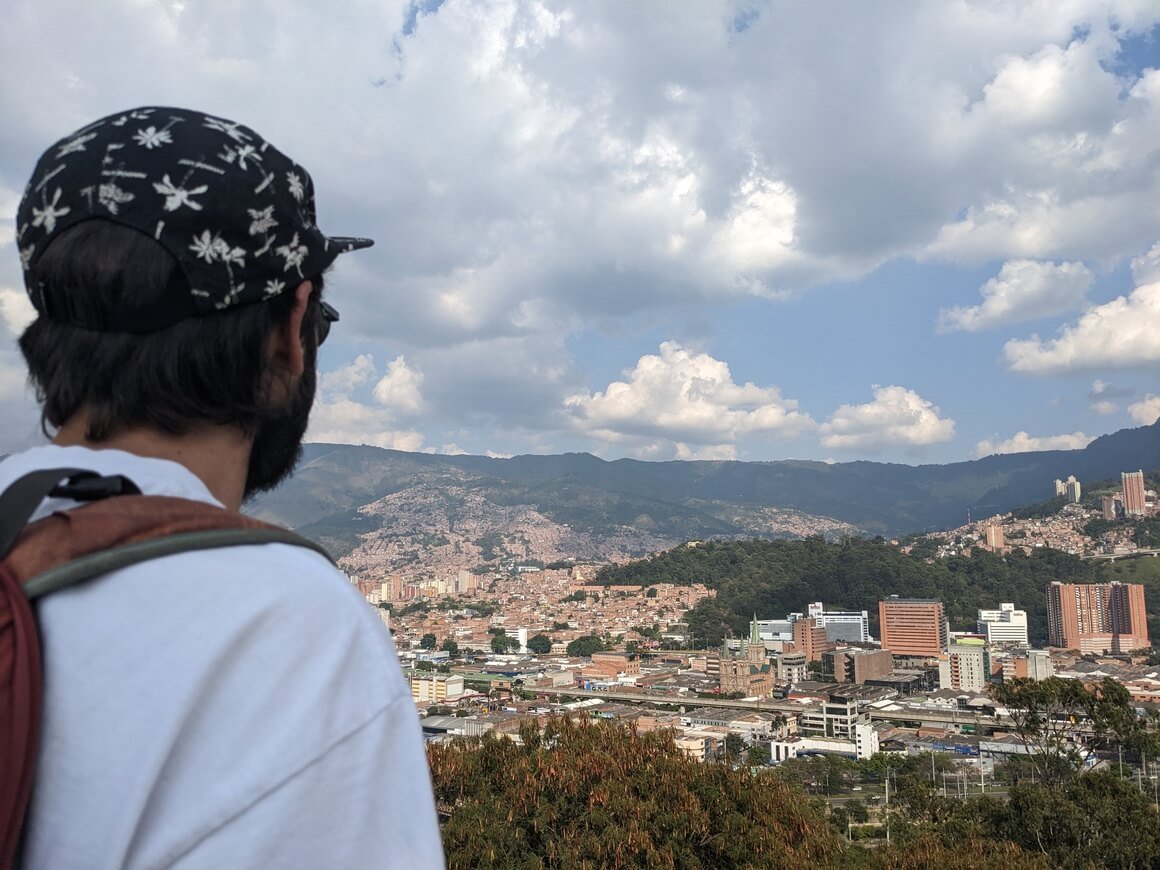
Is Colombia safe ? Perhaps your mum would love to know. Hell yes, it is !
As much as Colombianos are ready for the disassociation with Pablo Escobar, it’s hard not to mention the impact that he made on the country and the South American continent as a whole. But his reign of terror is over.
Modern-day Colombia couldn’t be more different from the days when narco-traffickers ruled the country. Visiting Medellín now vs 20 years ago is a COMPLETELY different experience. The Medellín of today is a great experience.
Colombia is for adventure junkies and nature lovers too. The northern terminus of the Andes Mountains ends here and you can take your treks into the deep jungle in Colombia’s National Parks .
What to Know Before Visiting Colombia
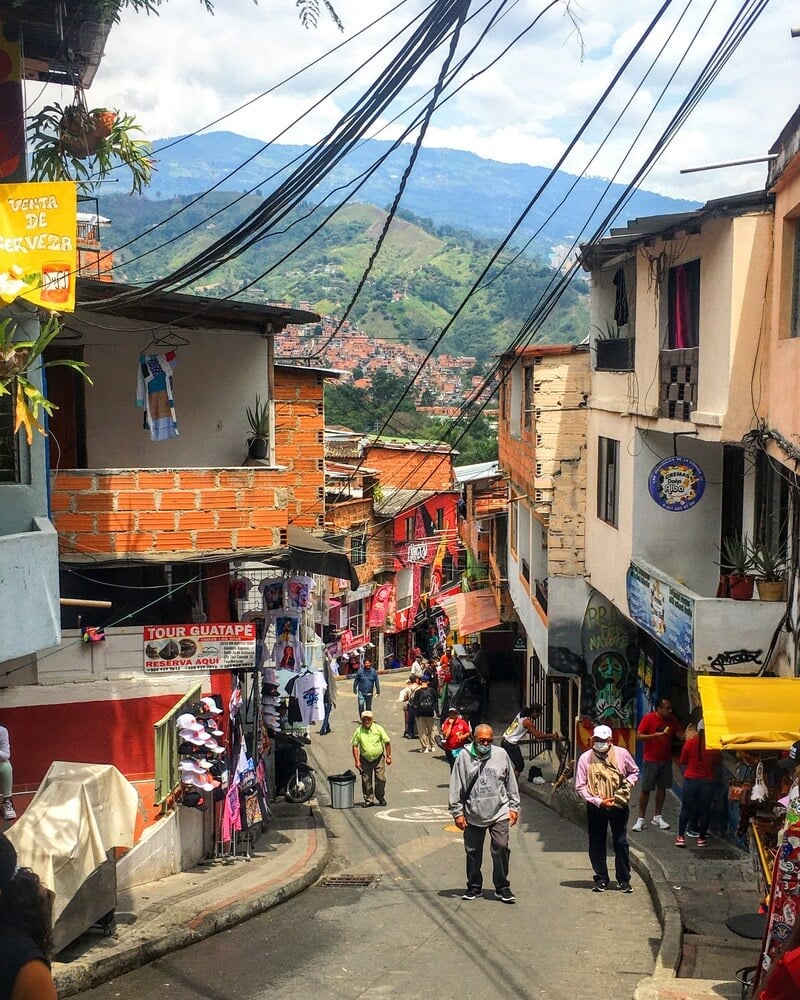
- Don’t miss out on… Carnival in Barranquilla. Most of the time, this industrial town is overlooked by travellers. But for one week of the year, this place goes NUTS.
- Keep an eye out for… how difficult the trek to Cuidad Perdida is. It’s long, treacherous, and hot as shit, but absolutely worth the effort in the end. The Lost City is one of the best places to visit in South America.
- The coolest hostel is… Viajero Santa Marta Hostel . Great location and has lazy and peaceful vibes. Amazing rooftop and activities to connect and meet other travelers.
- The best food is found in… the local restaurants. Look for the menu del dia to feel like you’ll never need to eat again.
Backpacking Ecuador
Ecuador might be small but it certainly packs a punch. I spent 3 months backpacking in Ecuador and could easily spend many more.
The diversity is incredible and it’s a great place to experience Andean Highland culture. The people who live in the Andes have a distinct and ancient culture rooted in mountain life. They even speak another language called Quechua . It’s a relatively safe country , and isn’t ruined by mass tourism.
In addition to staying in colonial cities like Quito , Ecuador’s natural landscape is the biggest draw. You can spend weeks or months exploring the coast before heading to the mountains and vice versa. Towering over the shore, volcanoes, waterfalls, and massive snow-capped mountains all make incredible trekking routes.
Surfing reigns supreme on the Ecuadorian coast. It attracts surfers from all over the globe. Even if you’re a beginner, it’s a great place to catch your first waves. Towns like Montañita and Canoa are famous surf beaches and party hotspots.
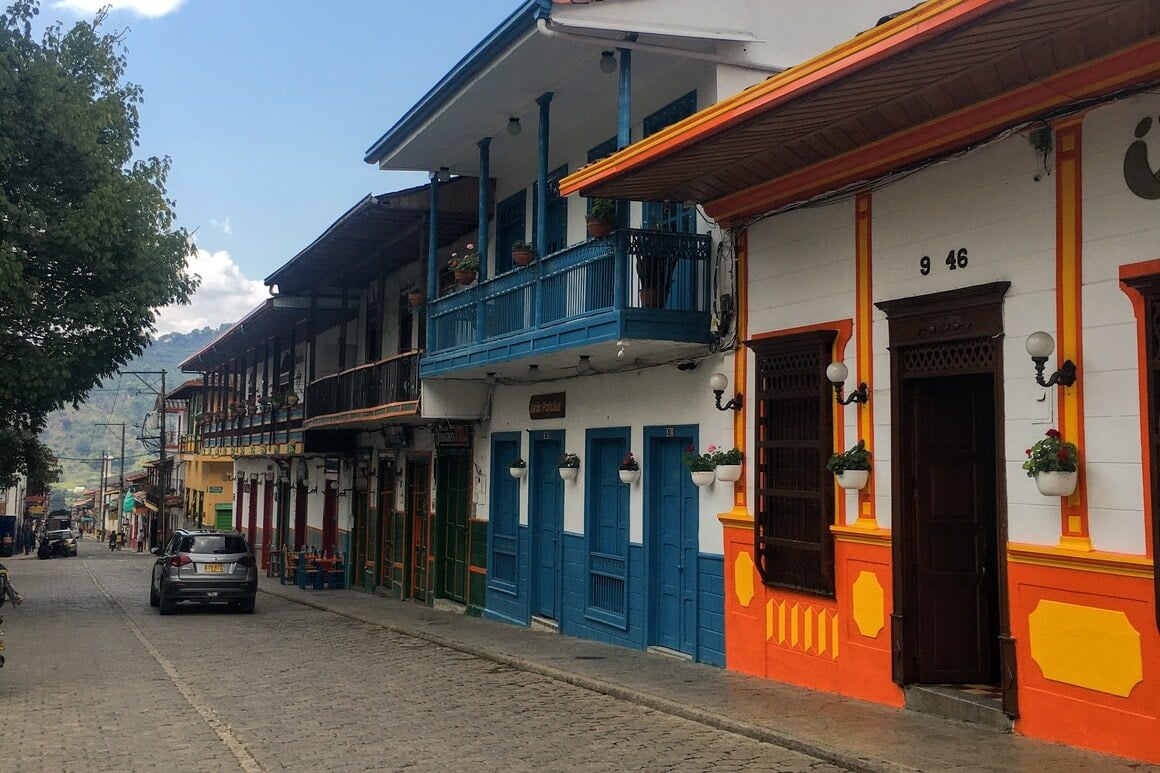
If you have some extra cash in your budget, you can visit The Galápagos Islands . But be warned – this is not a cheap endeavour, especially for excursions like diving (though it is AWESOME). So prepare yourself to shell out some cash!
Then there is the Amazon Basin of Ecuador. The Amazon region is what helps make Ecuador one of the most biologically diverse places on earth. The Amazon is best explored by boat with a local guide and is bound to be the adventure of a lifetime!
What to Know Before Visiting Ecuador
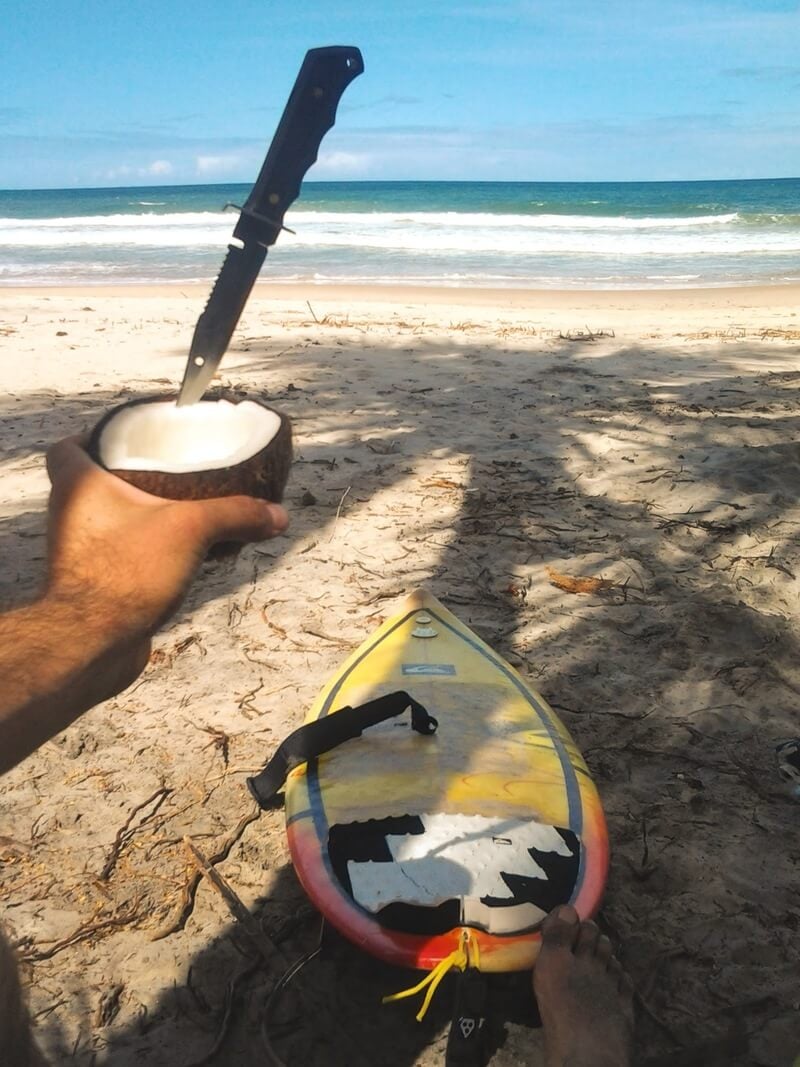
- Don’t miss out on… exploring the highlands and Cotopaxi National Park. Easily accessed from Quito and totally epic.
- You know what’s overrated … Montañita. It’s not all it use to be and is mostly catered to foreigners who want to get wasted and high. If you want real Ecuadorian culture, there are better places nearby.
- The coolest hostel is… Casa del Sol . Relaxed vibe at a few steps from the beach. Close enough to go party and far enough to have a good sleep. THE place for yoga and Surf.
- The best food is found in… the small almuerzo (lunch) cafes found across the country.
Backpacking Peru
Ah Peru. Backpacking Peru is the essence of travelling in South America. Though tourism has spiked in Peru in recent years, there is still plenty of magic to be found here.
The cost of backpacking Peru is a little higher than you might expect. Expect to pay between $30-40 USD a day whilst travelling here. (But more about the cost of backpacking South America later.)
Peru has a super long coastline dotted with prime surf beaches and scuba diving sites. In the Andes lies a whole other form of beauty.
I mean, who isn’t aware of Machu Picchu and hiking the Inca Trail ? Besides the obvious, there is much, much more to the Peruvian Andes than Machu Picchu. Although, you still have to go there!
Peru has some truly fascinating colonial cities as well, including Cuenca and Cuzco, which is the gateway city to Machu Picchu. The off-the-beaten-path potential in Peru is enormous.
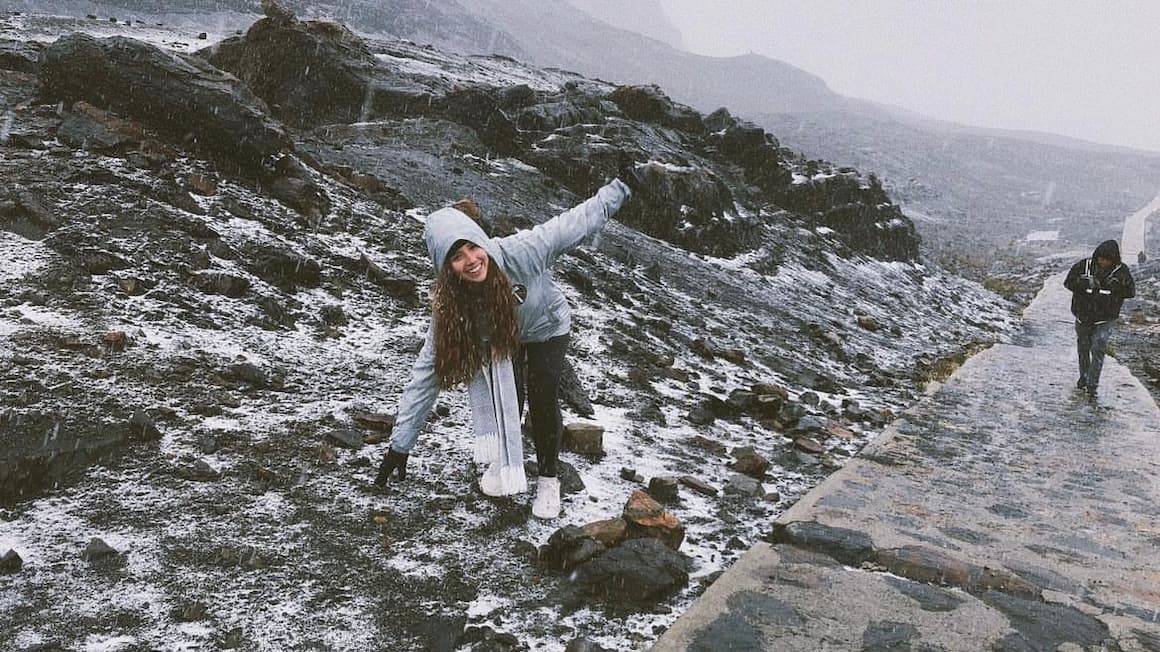
Check out the Rainbow Mountains to see nature at its most colourful. Hike the majestic Cordillera Huayhuash . Explore Colca Canyon and sleep out under a billion stars.
If you want a truly magical experience, there are many eco-lodges in Peru that are nestled in the best nature spots, from the Amazon jungle to the Andes mountain range.
Wherever you decide to travel in Peru, be sure that it will be a highlight of your South America backpacking adventure.
What to Know Before Visiting Peru
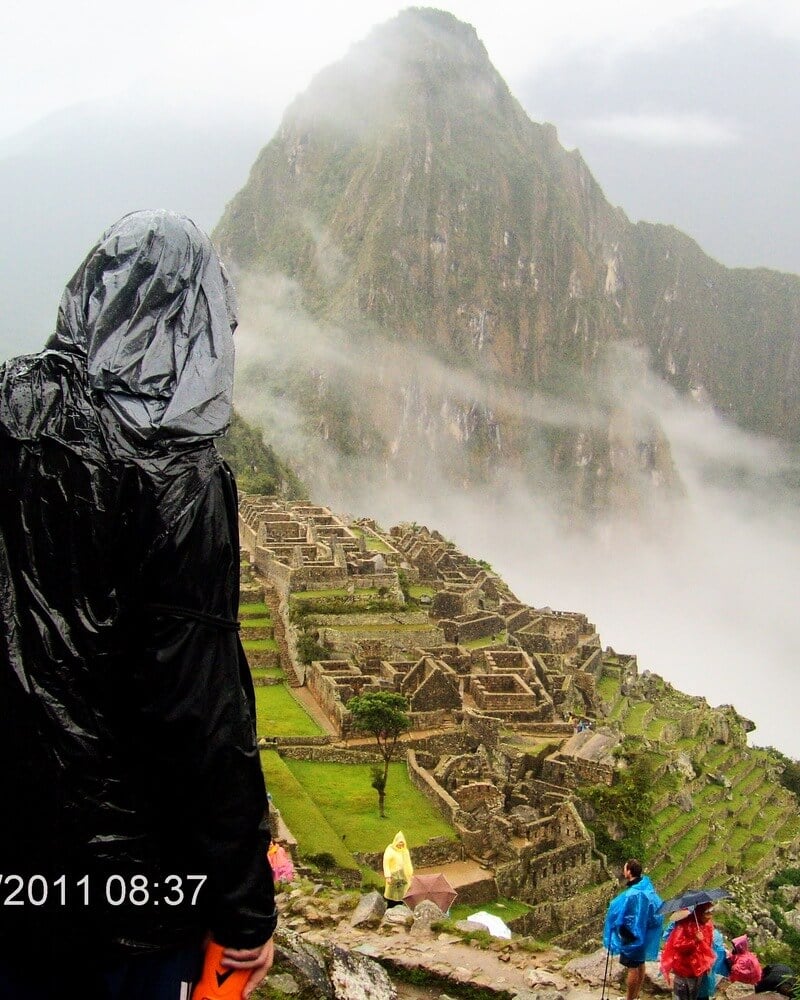
- Don’t miss out on… a motorcycle journey through the Sacred Valley outside Cuzco. It’s definitely worth staying in Cuzco a little longer for this.
- You know what’s overrated… the Inca Trail. Go for the less-trod Salkantay Trek to Machu Picchu instead.
- The coolest hostel is… Banana’s Adventure Hostel . In an unreal location (an oasis in a desert) this is a sociable and relaxed vibes hostel. With a great rooftop plus a lovely garden with hammocks, and an outdoor pool.
- The best food is found in… Lima. This city is full of cafes, local lunch spots, and street food vendors. The best are in Barranco and Miraflores. Pig out on ceviche !
Backpacking Bolivia
Backpacking in Bolivia offers up a glimpse of what South America was like 30 years ago. It’s a country looking to the future in many ways whilst still having one foot firmly rooted in the tradition of the past.
Expect super friendly locals, dramatic desert and mountain landscapes, and the kind of low prices which make the dirtbag within us very happy. You could easily get by on $20-25 a day here, and even less by roughing it a bit.
Bolivia is home to plenty of adrenaline-pumping activities including the Road of Death , which, in essence, is a road down through the mountains in which people ride bicycles to the bottom at top speed. The ride goes on for at least 30 kilometres and it is straight down. Can you guess why it’s called the Road of Death yet?
Aside from the high-risk adventure activities, Bolivia is safe for the most part as well.
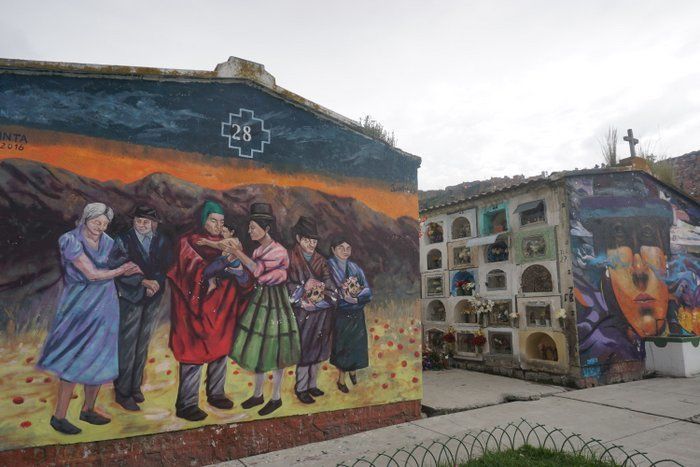
World-class trekking is abundant in the Bolivian Andes. If you love to hike, all the more reason to visit Bolivia. Bring along a good sleeping bag as temperatures can plummet at night.
La Paz has the best hostels (particularly for partiers) and is a cool city to base yourself in. Lake Titicaca is breathtaking, however, it has become far too touristy – I personally can’t deal with that many people taking selfies. I don’t blame the locals as they need to make a living. Just the way it has been done is unfortunate.
The Salt Flats are also cool AF. Okay, admittedly it’s pretty touristy too, but it’s still worth a visit.
What to Know Before Visiting Bolivia
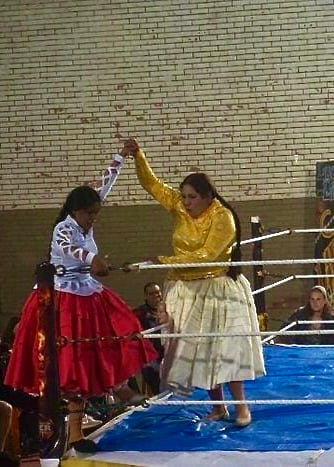
- Don’t miss out on… the Salar de Uyuni. Yes, everyone who comes to Bolivia does this and, yes, it’s touristy. Regardless, it’s still in-fuckin-credible.
- Keep an eye out for… the altitude. Some people fly directly to La Paz from sea level and get sick almost immediately. At 3640 meters, La Paz is the highest major city in the world.
- The coolest hostel is… Wild Rover La Paz . A dynamic and festive hostel. The perfect place to start your Bolivian experience connecting with other travellers. Great location in the central area.
- The best food is found in… La Paz. This is the epicenter of Bolivia’s newly emerging food culture.
Backpacking Chile
There are no half measures while Backpacking Chile. From trekking through gorgeous glacial national parks to exploring the martian bone-dry Atacama desert , you’re all in for one hell of an experience.
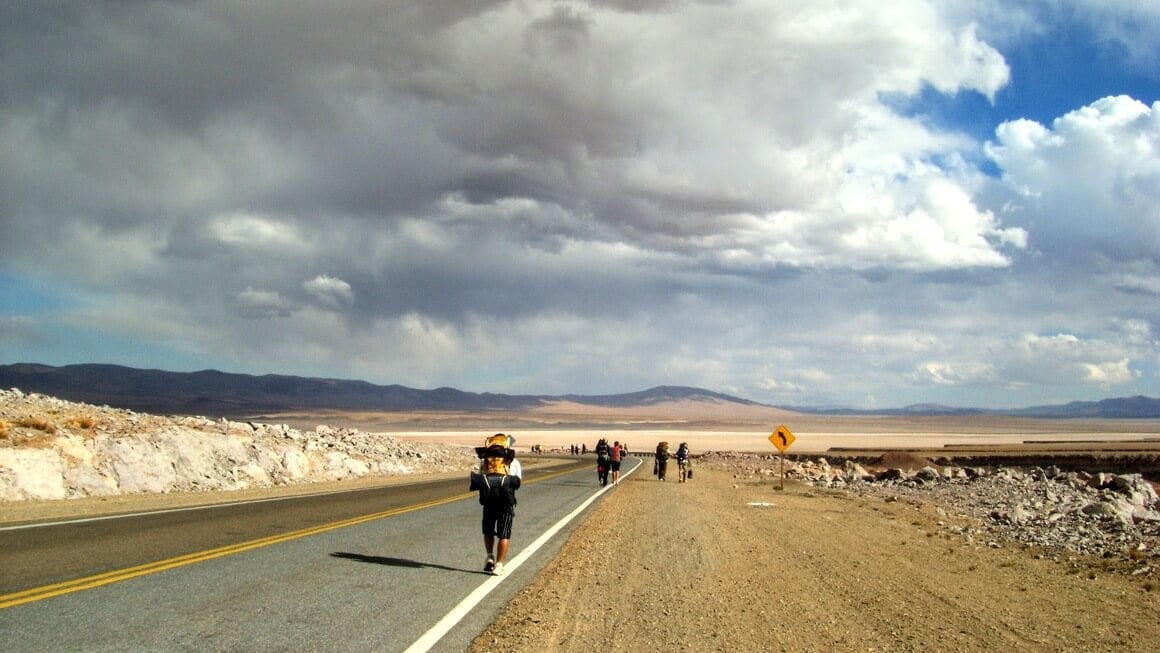
There are 36 National Parks in Chile ; all of them are beautiful and unique in their own way. Chile is also home to Easter Island , one of the most mysterious places on the planet.
Like Argentina, Chilean Patagonia is a paradise for trekkers and adventure types – though it does take some effort to reach the places you want to go trekking in. That said, the journey is well worth it; experiencing some of the planets last truly wild places is an indescribable feeling that you can only understand by doing it!
Most backpackers will start their backpacking journey in Santiago. But you can come to Chile from one of its borders in the South (as I did).
Oh yeah, one more thing: Chilean wine is cheap and it is damn good! Do you need more reasons?
What to Know Before Visiting Chile
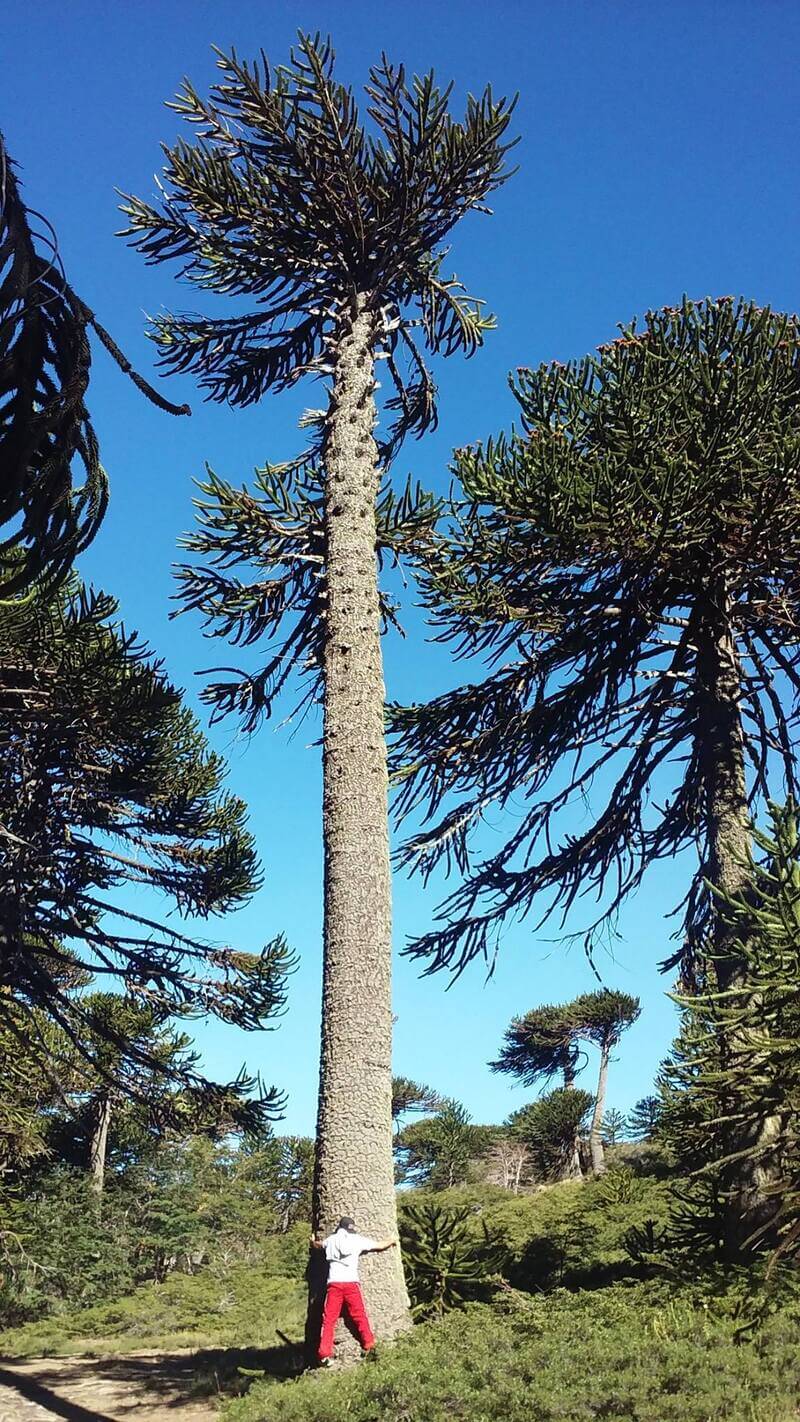
- Don’t miss out on… Patagonia, and not just the usual spots. Chilean Patagonia is vastly unexplored, especially the fjords. Look out for whales, dolphins, penguins, and elephant seals.
- Keep an eye out for… fire bans in Torres del Paine. A lot of nature has been threatened because of dickhead backpackers using gas burners, despite warnings.
- The coolest hostel is… MaPatagonia Hostel . Near a beautiful lake, this place has what you need. Kitchen facilities, a nice big garden, some cats, and a jacuzzi! There is also a fireplace for those cold nights.
- The best food is found in… Santiago. Staying in Santiago will unlock the most culinary options, including the cheap street food stalls.
Backpacking Argentina
Viva Argentina!
Backpacking Argentina is one for the ages. Welcome to the land of wine, excessive meat, football, tango, incredibly passionate people, and the final frontier – Patagonia.
Argentina is an immense country with very distinct regions. Eat to your heart’s content, party harder than you ever have before, and fall deeply in love.
You’ll probably land in Buenos Aires , arguably the cultural capital of all of South America.
Unquestionably, you’re going to find incredible hostels in Buenos Aires and reasons to stay. But don’t stay too long!
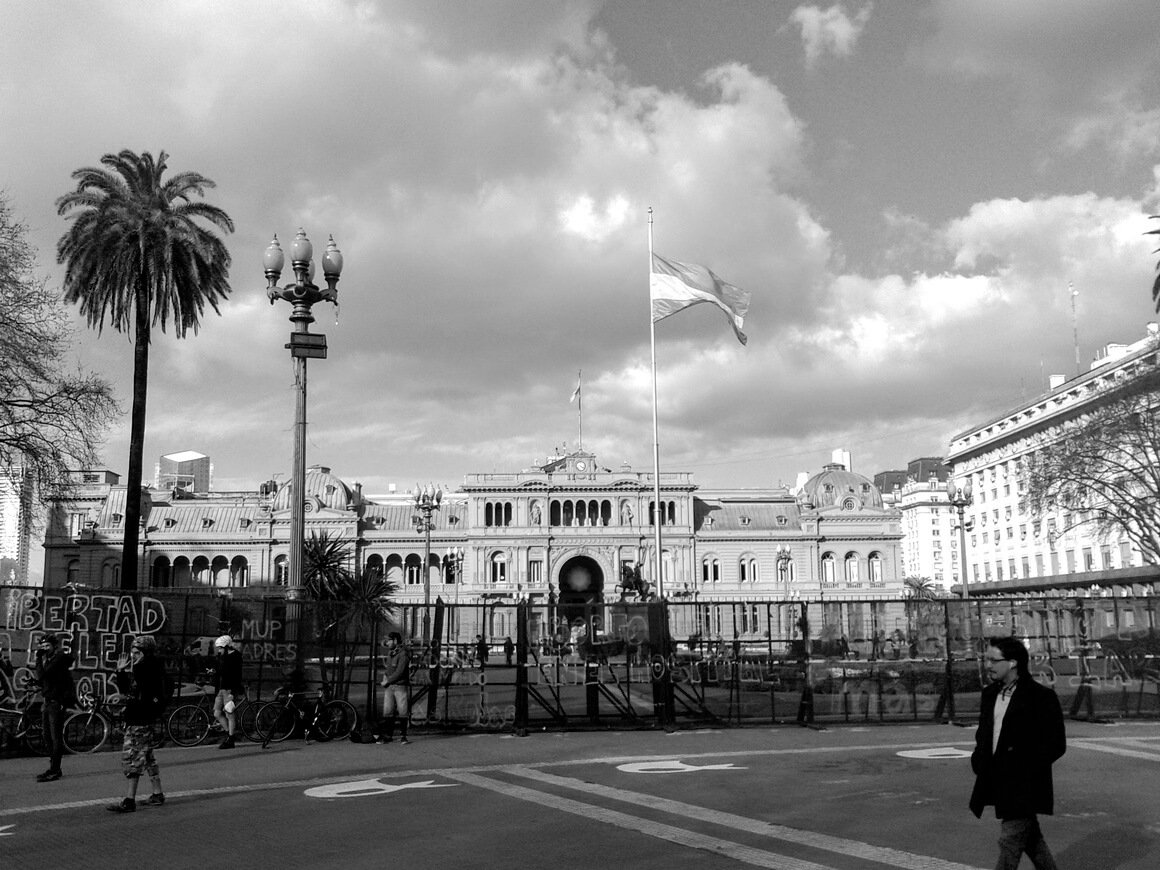
Rosario and Cordoba are cities like Buenos Aires but, in my opinion, better. They’re a perfect place to head to if you want to steer clear of the heavily populated capital. Mendoza is the wine region home to the “ best wine in the world ” (according to Argentinos).
Further south lies Patagonia : one of my favourite places on Earth, and home to many Argentinian National Parks . Patagonia is a truly expansive, desolate wilderness area where the weather is harsh and civilization is few and far between.
Trek mountains and glaciers, or sea kayak around them,. There, you could go days without seeing many (if any) backpackers! Now THAT’S the dream.
Staying at an Argentine mountain hut (refugio) is a wonderful experience not to be missed. Few who travel to Argentina manage to make it as far as Tierra del Fuego (the Land of Fire). Visit one of the most dramatic places in Argentina with its long summer days and epic arctic landscapes.
Speaking of the arctic, you can arrange trips to Antarctica from Ushuaia ! This would be the adventure of a lifetime but it’s by no means cheap.
What to Know Before Visiting Argentina

- Don’t miss out on… El Chaltén, which is the base for seeing some of the most dramatic peaks on Earth: Cerro Torre and Fitz Roy.
- You know what’s overrated… La Boca in Buenos Aires. These much-hyped multi-coloured houses are pretty rundown and actually quite dangerous, I strongly suggest you avoid it. The whole area feels like a tourist trap. There are much better things to do in Buenos Aires .
- The coolest hostel is… America del Sur Hostel (El Calafate). Cozy, super social, and with an insane view of the lake, the town, and beautiful sunsets. Great place to chill, and work (if you need to).
- The best food is found in… your neighbour’s personal asado . Nothing beats grilling grade-A Argentinian beef with some locals.
- The official exchange rate is NOT THE EXCHANGE RATE . Because of the fluctating exchange rate, many of the locals withdraw their cash by using what is referred to as a “blue dollar rate” from Western Union. This way gives you 50% more pesos than withdrawing pesos from an ATM or exchanging currency.
Backpacking Uruguay
Not many travellers end up backpacking in Uruguay. There are a few reasons why:
- It’s small
- It’s out of the way
- There’s not a ton to do
All of the above are true to some extent: Uruguay is not overflowing with adventurous activities or jaw-dropping sights. But let me tell you, they have some of the best quality of living in South America.
One of the perks about Uruguay is you don’t HAVE to do anything here. People are friendly and, compared to some chaos you find in other areas of the continent, it’s pretty chill. The beautiful coast is the perfect place to get away from the usual backpacking South America route and to avoid traveller’s burnout .
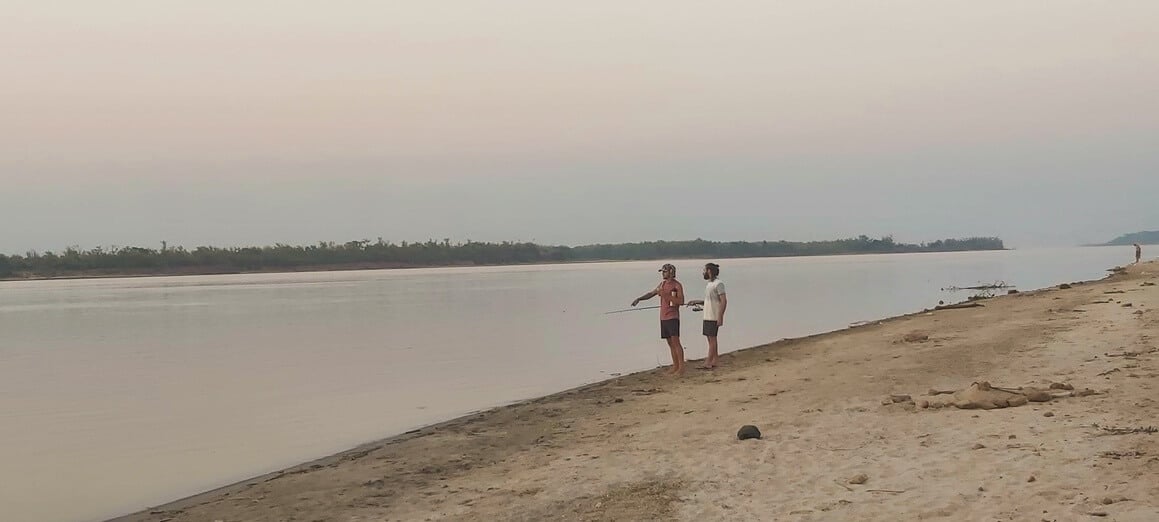
Outside of Montevideo , there are nice beach towns worth crashing at; Punta del Diablo is the quintessential lazy surfer town. Punta del Este is fun in the summer if you like partying. Colonia del Sacramento is an old colonial outpost and UNESCO heritage – although it is admittedly more of a day trip rather than a base.
Oh but here’s the kicker: weed is legalised. Yes, Uruguay is famous for allowing the smoking of the devil’s lettuce. And the quality of it is surprisingly good.
Lots of locals keep a weed garden on their balconies. Perhaps your hostel in Montevideo will have one?
Head to Uruguay if you want to chill out and do your own thing. It’s easy to travel to Brazil and Argentina from there too.
What to Know Before Visiting Uruguay
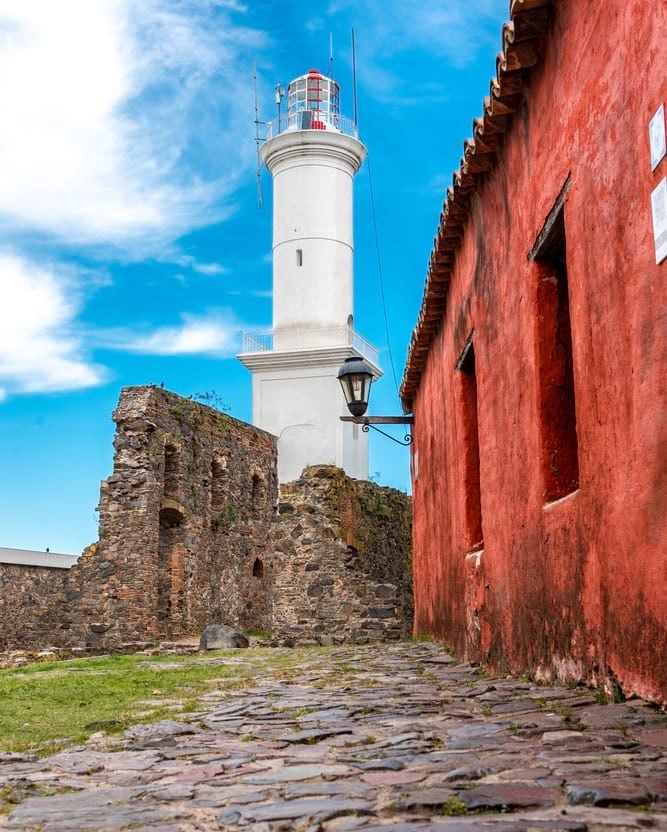
- Don’t miss out on… Punta del Diablo. This is laid-back surfer town evades most backpackers. It is arguably one of the best beach towns in South America.
- You know what’s overrated… Punta del Este. This place literally exists for the sake of Argentinians on holiday. In the off-season, it’s empty.
- The coolest hostel is… La Brújula Hostel . It’s near the beach, eco-friendly, has a family vibe, and is great to meet new people. This is a gem next to the sea.
- The best food is found in… Montevideo. Can’t beat a giant chivito after you’ve got the munchies!
Backpacking Venezuela
Venezuela is a truly incredible country. With towering mountains, steaming forests, endless beaches , and just enough danger to keep you on your toes, this country is every budding adventurer’s dream destination.
A Disclaimer on Visiting Venezuela
Unfortunately, due to the political situation in Venezuela , The Broke Backpacker absolutely does not condone visiting the country right now . It is simply not safe and it would be irresponsible to even attempt to Venezuela at present.
Unless you somehow have absolutely solid and trustworthy contacts on the ground , Venezuela is not the place to travel for the foreseeable future. We do not have any contacts to give out.
That being said, there are many team members at The Broke Backpacker that hold a special place for Venezuela in their hearts. For this reason, we are leaving this information available to you, our readers, as an homage to a country we love. We can’t wait for the day that it will be safe to visit again.
Backpacking Venezuela has a truly terrible reputation. Don’t get me wrong, travelling Venezuela has been dangerous in recent years: this is a country where you need to keep both eyes on your gear, watch who you’re with, and be on the lookout for iffy situations before they get the chance to rear their ugly head.
Backpacking in Venezuela is, in my opinion, one of the last great adventures out there. Plus it’s one of the cheapest countries in the world to backpack in.
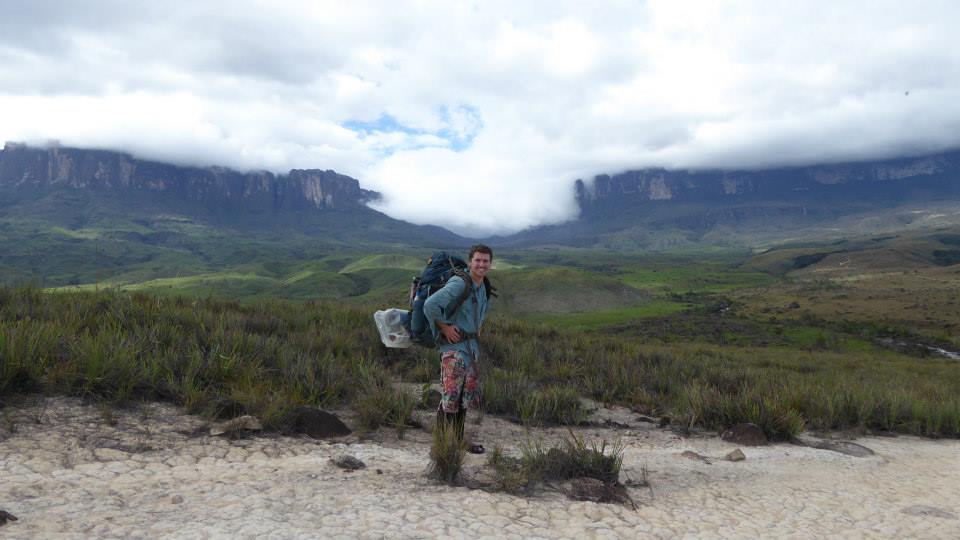
Venezuela is a mysterious country. It attracts adventurers looking for a raw adventure.
It’s a country yet to be polluted by heavy tourism with incredible landscapes of mountains, forests, lakes, and caves. It is a kind of Shangri-La for adventurers and extreme sports lovers.
A South American backpacking trip to Venezuela is getting into the wild. To feel like the old explorers, Venezuela will not disappoint you. But backpacking Venezuela is not for the faint-hearted: this is a veteran explorer country.
What to Know Before Visiting Venezuela
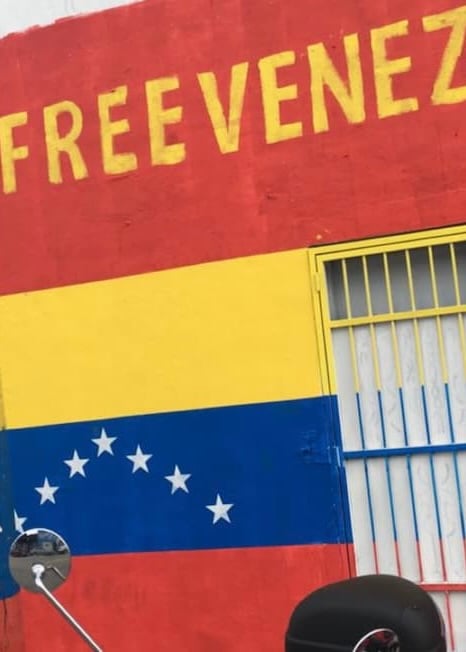
- Don’t miss out on… Mt. Roraima – the highest tabletop mountain in the world; an incredible place to explore. Sometimes you feel like you’re walking on an island in the sky.
- Keep an eye out for… the seasons when visiting Angel Falls. When it’s dry, the falls are actually quite weak (it’s more like a trickle).
- The coolest hostel is… El Sofá Caracas . Safe, quiet, cozy place in the big city. You’ll feel at home instantly. And they have a unique boat pool to chill when it gets too hot.
- The best food is found in… the buffet places where you pay by the weight of your plate. A little goes a long way here and you won’t be disappointed!
Getting Off the Beaten Path in South America
South America is totally full of wild places, tiny villages, far-flung settlements, lonesome valleys, sparsely inhabited jungle… Point being, there are plenty of great places to get off the beaten path . With a little motivation, you may well find yourself cutting your own path and writing your own backpacking destiny, one adventure at a time.
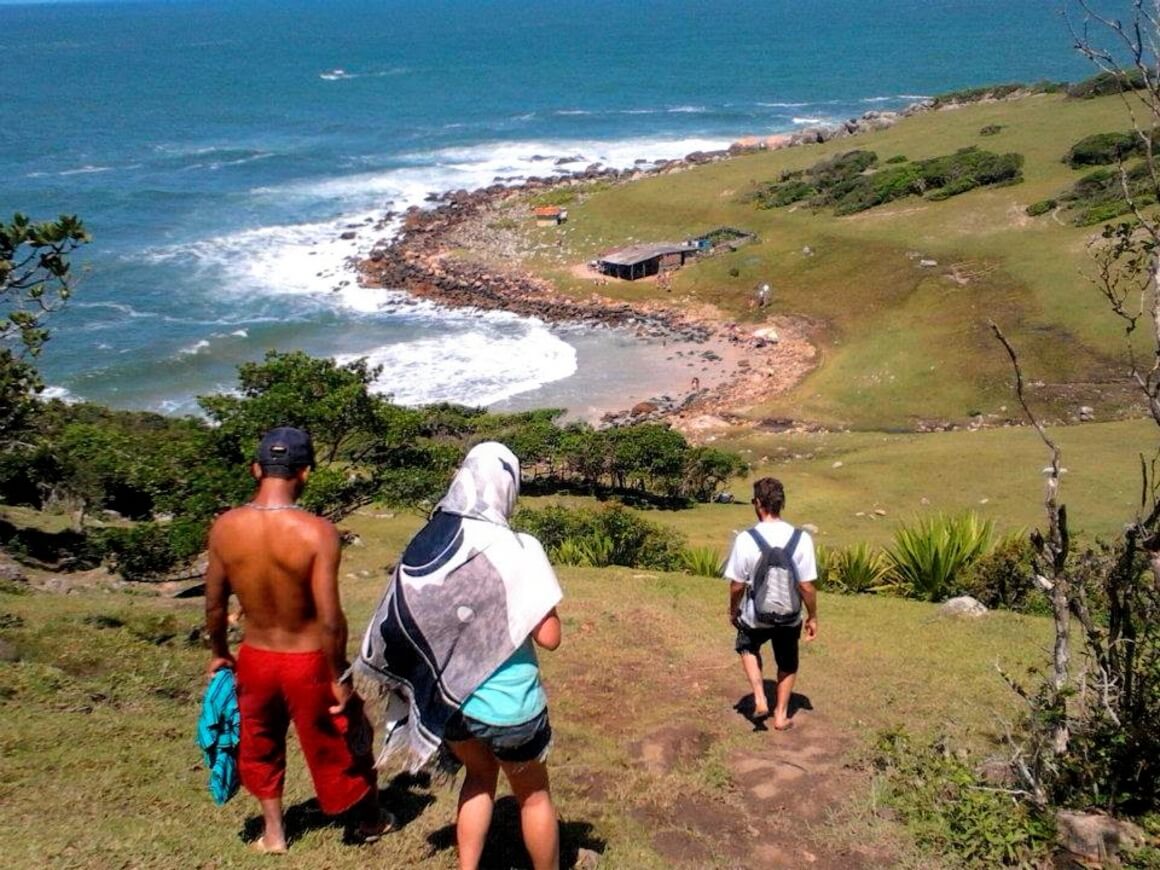
Explore the national park systems of South America as much as you can. Investigate the little interesting-looking food stalls where all the locals are queuing up.
Don’t rely on a guidebook of popular places. In South America, those tiny towns in the middle of nowhere are where the real culture is, and the real adventures. All you need is a bus ticket…

We’ve tested countless backpacks over the years, but there’s one that has always been the best and remains the best buy for adventurers: the broke backpacker-approved Osprey Aether and Ariel series.
Want more deetz on why these packs are so damn perfect? Then read our comprehensive review for the inside scoop!
You can make your South America backpacking route totally unique. No matter what things you get up to, they’re going to leave a big print on your heart. But here are some things I definitely recommend considering planning for your itinerary .
1. Explore Patagonia
Patagonia is still one of the last untouched wildernesses on the planet. Not everyone gets to experience this in their lifetime! In addition to the usual superlative locations, like Cerro Torre and Torres del Paine, there are heaps to discover off-trail.
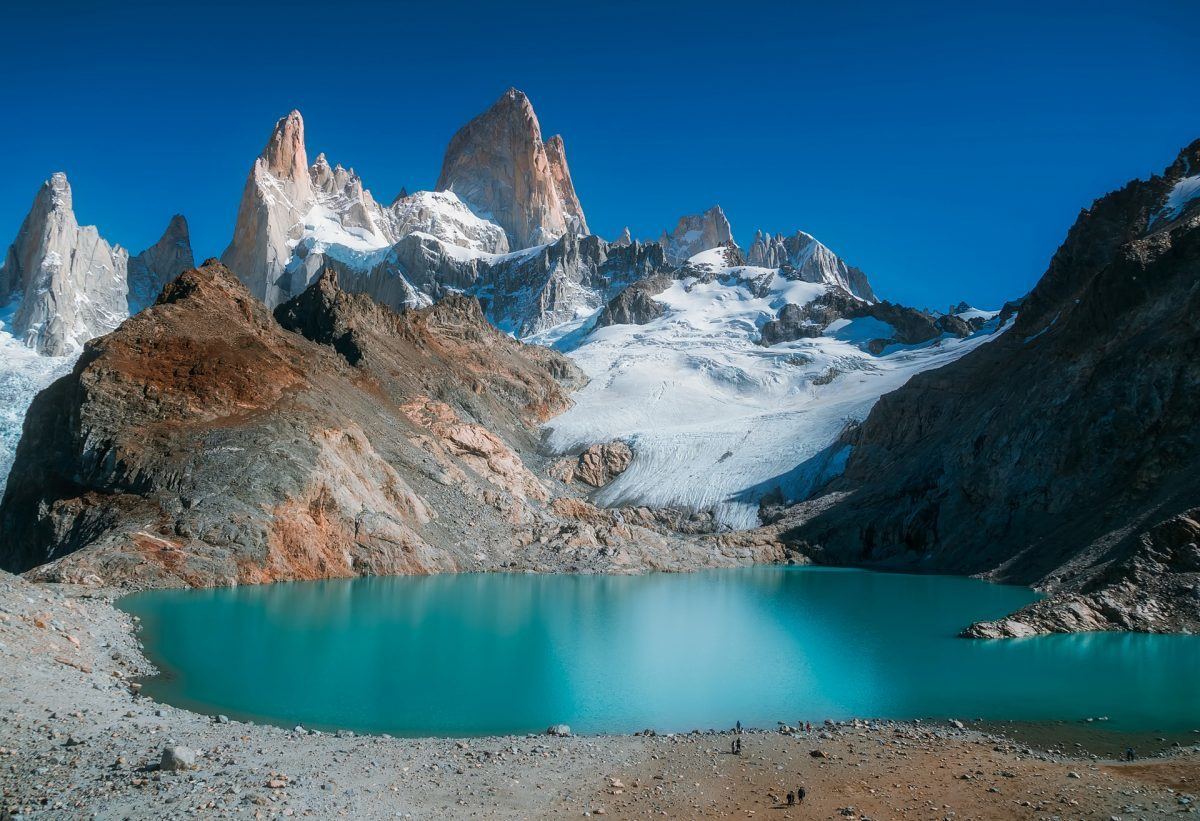
2. Party hard at Carnival
It’s the biggest party on the planet! Grab yo’ body paint, yo’ finest feathers, whatever else you can get your hands on, and join the festivities!
You won’t ever forget the time you spent Carnival in South America. The carnivals in Bahia, Rio, and Barranquilla are particularly good.
3. Explore the Salts Flats of Uyuni
It’s one of the most unique places on the planet and a highlight of any South America backpacking trip. Get ready to be wowed by this alien landscape.
I know broke backpackers usually cringe hard at the idea of an organised tour (because I’m one of them) but the Salt Flats is one that’s really worth shelling out for.
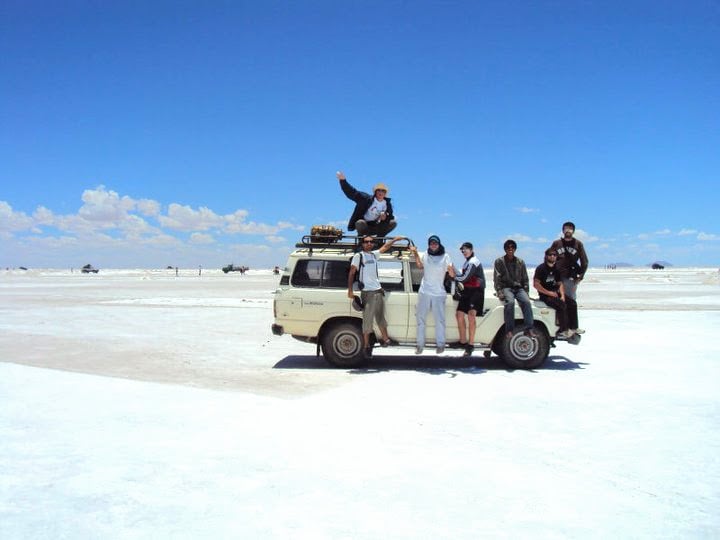
4. Find your own secret beaches
It wouldn’t be a proper backpacking South America itinerary without some beach time! Every kind of beach imaginable is found on the continent.
From tropical slices in Brazil to surfer’s paradises in Ecuador to even fjords in Chile, you won’t be lacking in choices. There are plenty of them secret spots that make those magical days. Take a beer, bring your mates, get busy.
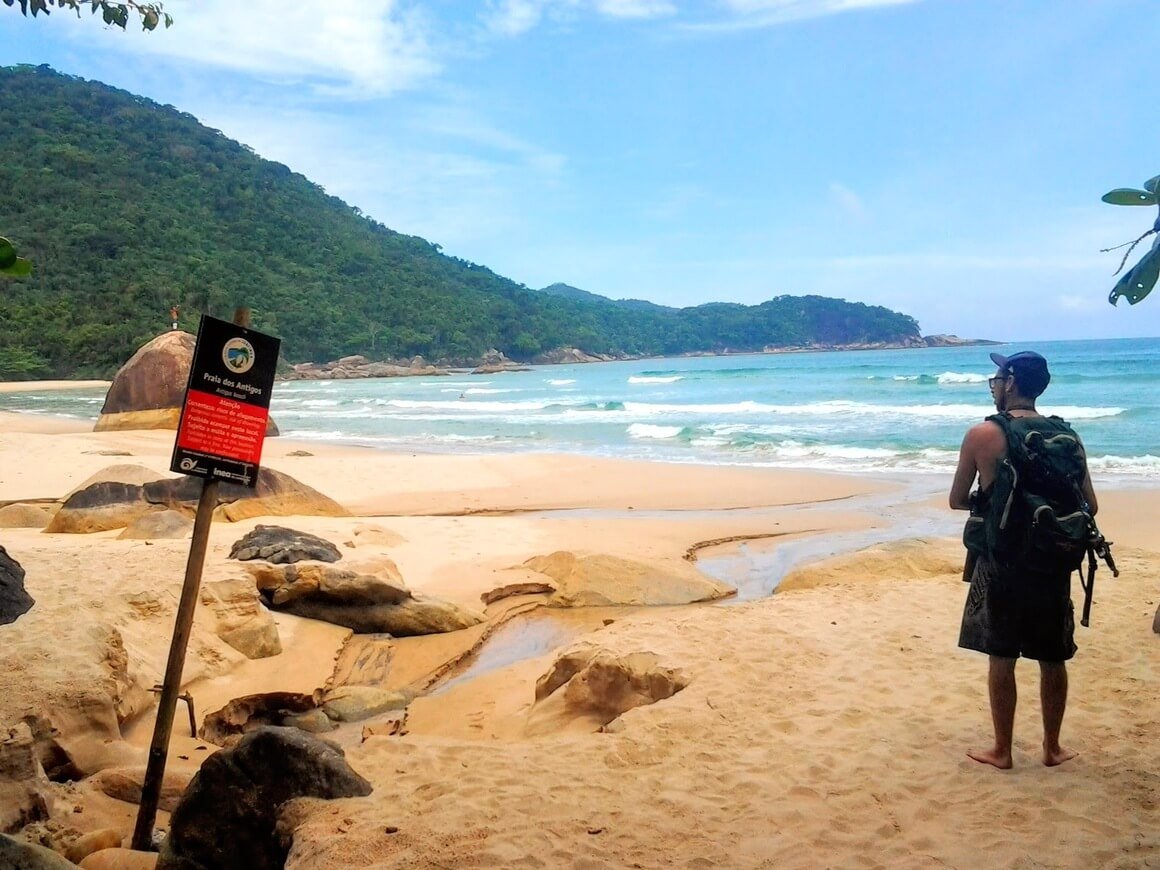
5. Check out Medellín
Medellín is one of the most popular cities to visit in South America right now. The choice between Medellín or Bogota has never been easier.
It’s fun, safe, comfortable, and (most impressively) completely different than it was before. Medellín has shed its violent past and is ready to host the next wave of backpackers.
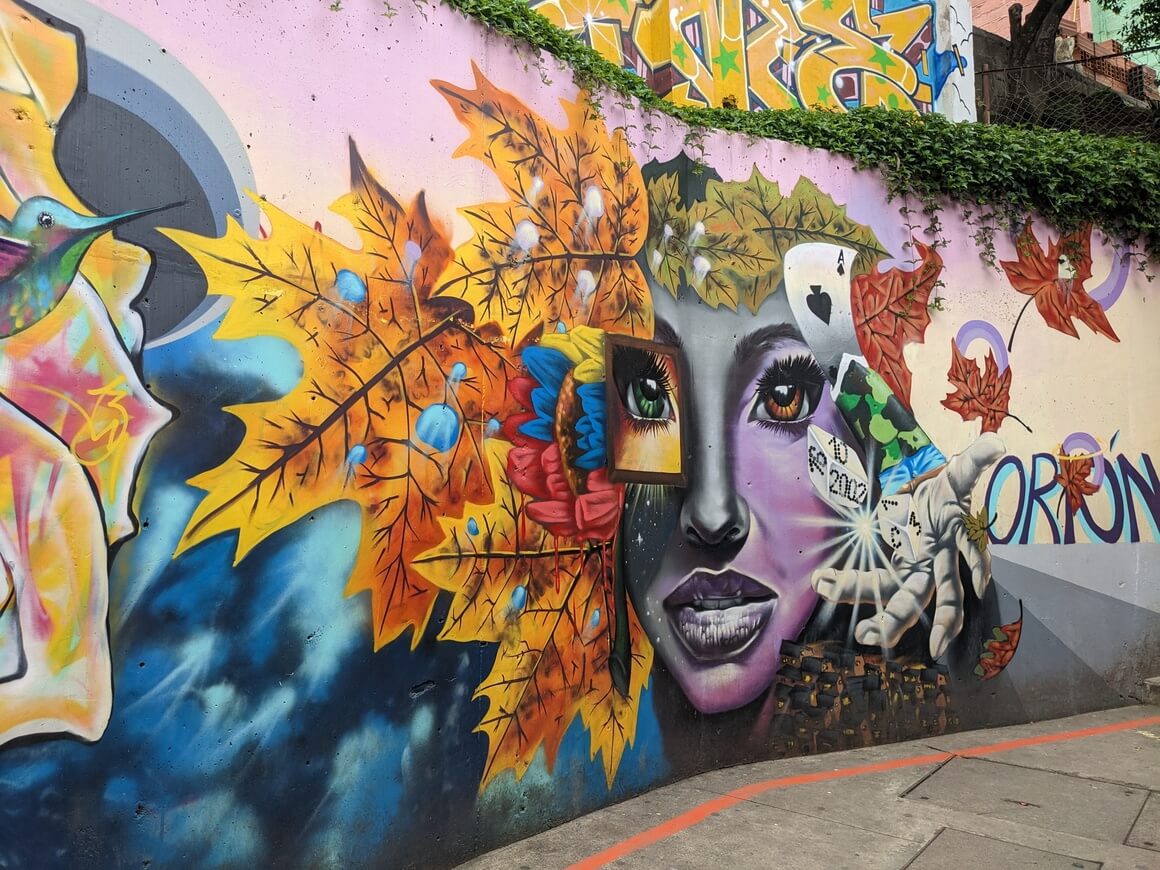
6. Visit Machu Picchu
I mean, you’re reading a backpacking South America guide: I know you already know about this one. It is the place that attracts most people to visit South America… but I’d be lying if I said it wasn’t worth visiting.
You can hike the Inca Trail like everyone else. But if you want to visit Machu Picchu in an alternative way, try one of the other Inca trails like Salkantay Trek.
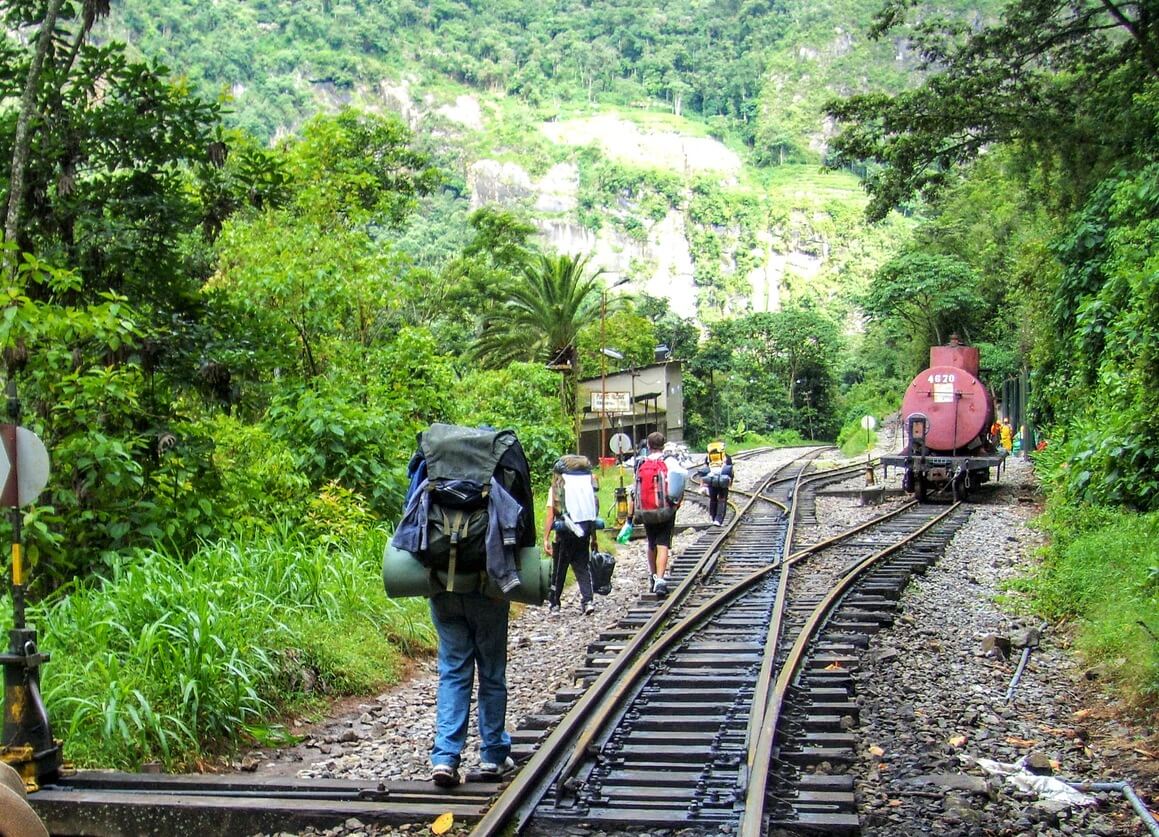
7. Hike in the Andes
The Andes are one of the greatest mountain chains in the world, known mostly for hosting the aforementioned Machu Picchu and the gargantuan Aconcagua. But there is more to these mountains than just these popular destinations: the highlands of Ecuador, Cordillera Huayhush in Peru, the Cordillera Real in Bolivia are all stunning. Even Colombia gets a slice of the pie at Cocuy National Park.
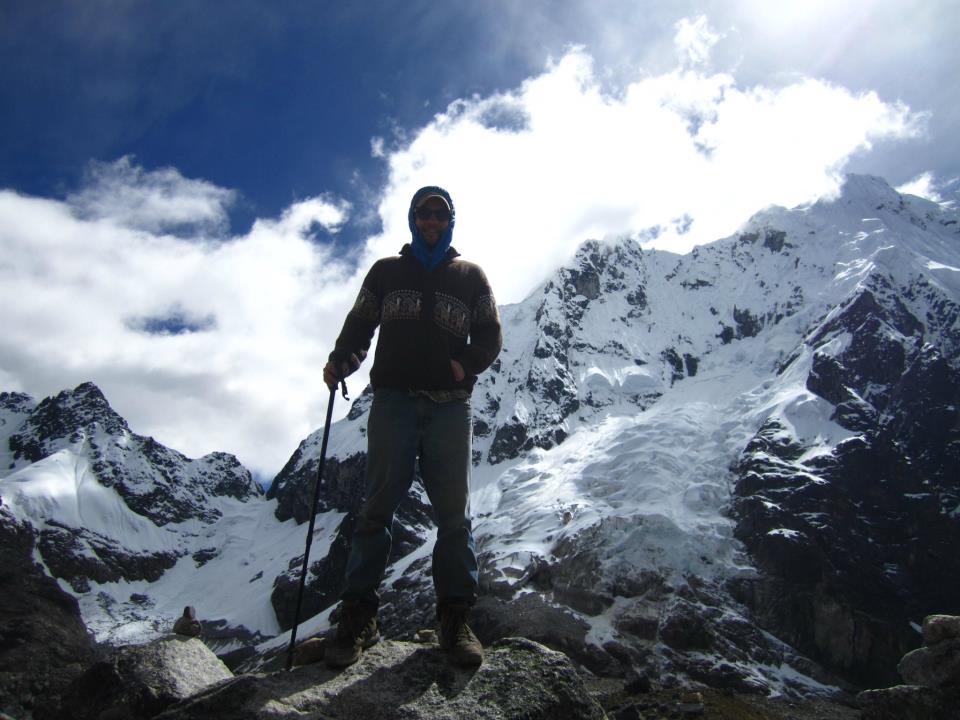
8. A South American
Hey, most backpackers will vouch for love and sex on the road being something memorable to take part in…
They love, and they love passionately. And the sex… well, maybe you’ll find out.
9. Get “stuck” somewhere
South America is full of sticky places AKA places where you get stuck for months on end. Florianópolis, La Paz, Medellín, Mancora… All of these locations start off as a simple stop on your South America backpacking route but turn into temporary homes.
Don’t fight it! Find your sticky place and stay awhile.

Wanna know how to pack like a pro? Well for a start you need the right gear….
These are packing cubes for the globetrotters and compression sacks for the real adventurers – these babies are a traveller’s best kept secret. They organise yo’ packing and minimise volume too so you can pack MORE.
Or, y’know… you can stick to just chucking it all in your backpack…
South America has a wide range of budget accommodation options for backpackers. Airbnbs are fantastic for private rooms if you’re travelling as a couple or as a group.
For solo travellers, when you are not passing the night from the comfort of your tent in the Andes or with a Couchsurfing host , you’ll likely be booking hostels.
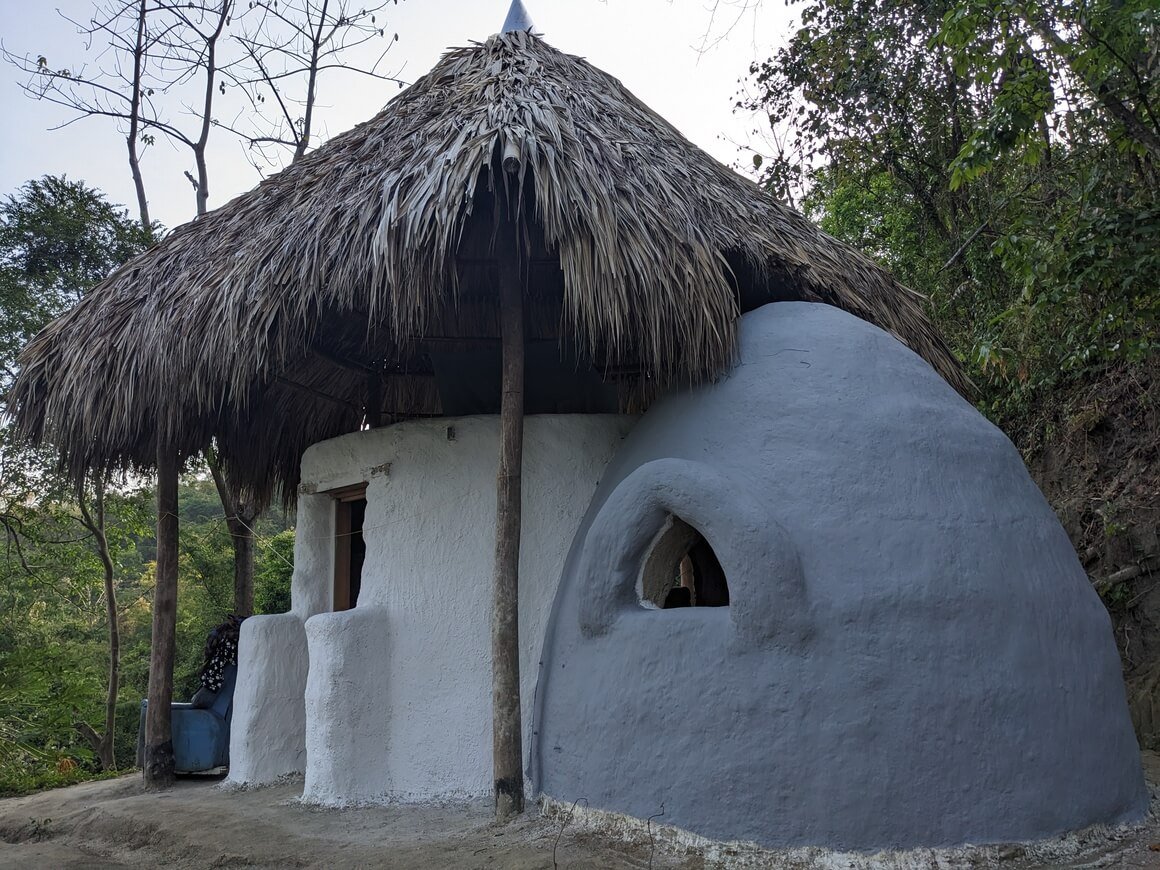
Whether you just need a place to lay your head or a spot to meet fellow backpackers like yourself, hostel life is clearly where it’s at… In fact, I love South American hostels, even travelling with my partner, you get perks in a hostel that you don’t get in a hotel or Airbnb.
I’ve had some of the best nights of my life in them and met some of the best people in my life. The South American countries are home to some of the best hostels in the world .
- Best Hostels in Sao Paulo
- Best Hostels in Cusco
- Best Hostels in Cartagena
- Best Hostels in Mendoza
- Best Hostels in Lima
- Best Hostels in Medellin
- Best Hostels in Quito
- Best Hostels in Salvador de Bahia
- Best Hostels in Santiago
- Best Hostels in Valparaiso
Insider tip: If you want to see all your hostel options to visitbackp South America, Booking.com is the perfect one-stop-shop to book hostels. You can even filter your personal travel needs to find the perfect place for you.
It is the common belief that backpacking in South America is dirt cheap. In some places this is true, but it doesn’t go for the entire continent.
But fear not! Travelling South America on a budget can definitely be done.
Due to the nature of Patagonia being one of the most remote areas on earth, expect higher travel costs than the rest of South America. Peru also takes some navigating in order to travel on a tight budget.
Brazil is one of the most expensive countries in South America. The cost of living in Brazil is higher and it is notorious for jacking up accommodation prices during the high season.
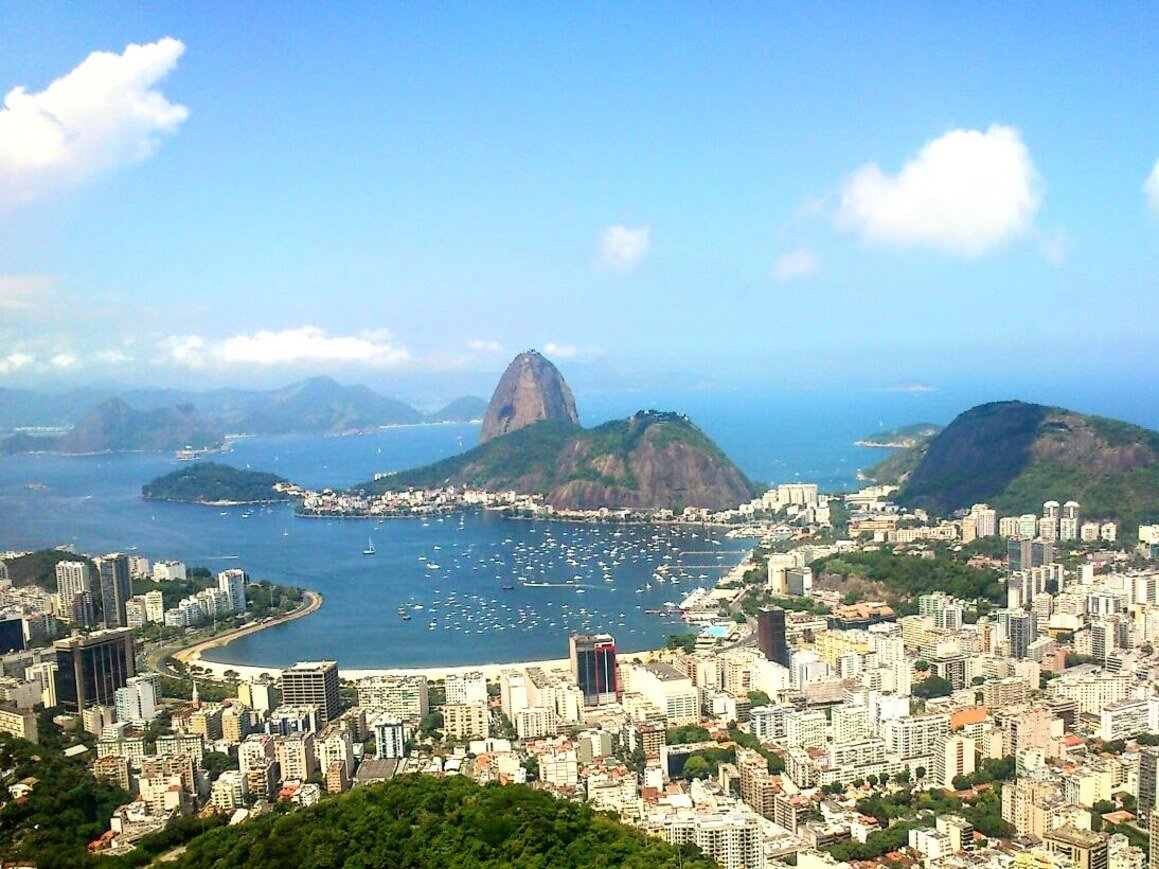
With a few travel tips up your sleeve, you will save a ton of money and have the time of your life. Bring your haggle game whilst backpacking through Latin America to ensure you get the best possible price for things, including accommodation. South Americans love smooth talkers so keep it playful but don’t get too cheeky.
Taking long-distance buses, buying beer and drugs, paying entrance fees to national parks… these things add up fast. But sometimes you have to shell out the dough in order to do the things you want. Overnight buses are a good way to save some money.
Remember to always leave a little extra wiggle room in your budget so you can go scuba diving or go on a trek that you have been dreaming about!
Daily Budgets for South America
Here is a breakdown of what you can expect to pay on a daily basis on a backpacking South America trip…
Travel Tips for Broke Backpackers in South America
Hey, all those dollaridoodles add up to more fun times. So saving whatever you can on your journey means you can be on the journey… for longer. So here are a few budget travel tips for South America :
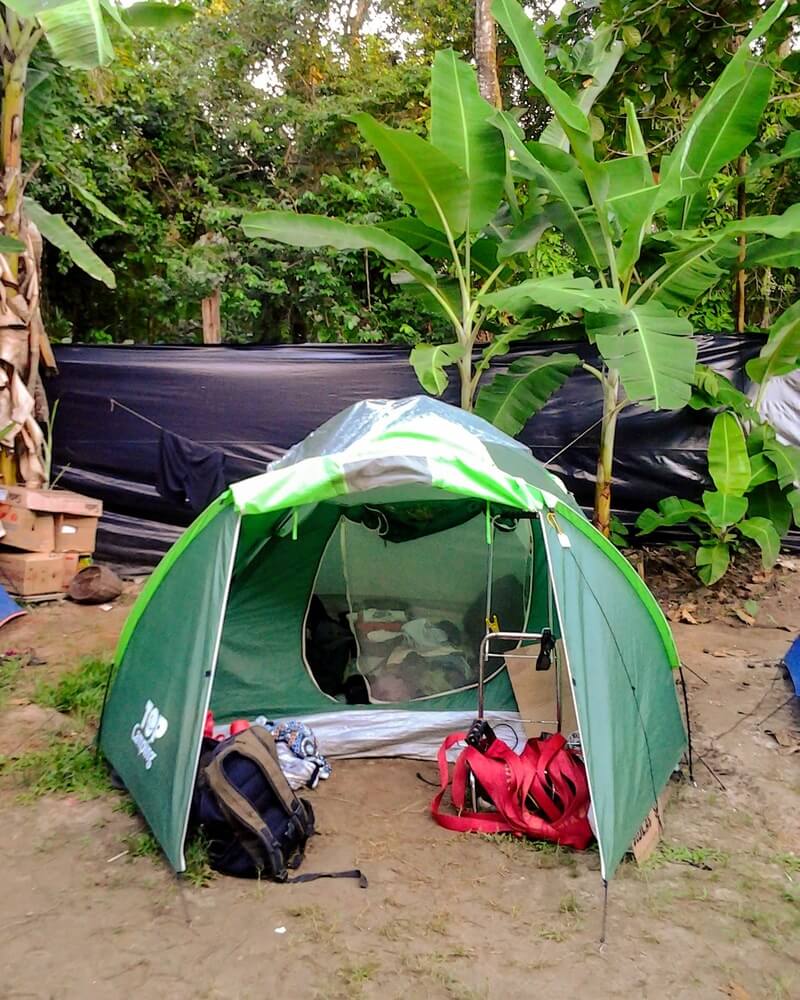
- Camp : With plenty of untouched beaches, forests, stunning countryside, and far-flung jungle, South America is a great place to carry a good backpacking tent . Camping saves you money and can help you get off of the beaten path.
- Cook your own food: Travel with a portable backpacking stove and cook your own food to save some serious cash whilst backpacking across South America. If you plan to do some overnight hiking trips or camping on the beach, having a backpacking stove will be a great asset.
- Haggle: Haggle as much as you can. You can always get a better price for things, especially while in local markets. Learning Spanish will go a long way!
- Couchsurf: South Americans are awesome. Get to know some! Check out Couchsurfing to make some real friendships and see the real continent. When using Couchsurfing, be sure to send personalized messages to your potential host. A generic copy-and-paste message is much more likely to get turned down. Make yourself stand out.
- Hitchhike: Although some countries are friendlier than others, hitchhiking across South America is common practice, so you won’t struggle too much to find a ride. Speaking at least a little Spanish will go a long way though. You want to explain exactly what you’re doing and where you want to go.
Why Should You Travel to South America with a Water Bottle?
Plastic washes up on even the most pristine places… So do your part and keep the Big Blue beautiful!
You aren’t going to save the world overnight, but together we CAN make a difference. I hope you become more inspired to continue being a responsible traveller .
Plus, now you won’t be buying overpriced bottles of water either! Travel with a filtered water bottle instead and never waste a cent nor a turtle’s life again.

Drink water from ANYWHERE. The Grayl Geopress is the worlds leading filtered water bottle protecting you from all manner of waterborne nasties.
Single-use plastic bottles are a MASSIVE threat to marine life. Be a part of the solution and travel with a filter water bottle. Save money and the environment!
We’ve tested the Geopress rigorously from the icy heights of Pakistan to the tropical jungles of Bali, and can confirm: it’s the best water bottle you’ll ever buy!
You know by now that we are talking about an enormous amount of land with regards to the South American continent. Countries in South America near the Equator do not experience distinct seasons. As you start to head south you will find the seasons to be the opposite of what they are in the Northern Hemisphere i.e. winter in June.
Patagonia experiences bitterly cold and windy winters. I do not advise travelling there during the winter unless you are a serious mountaineer and have all the right gear.
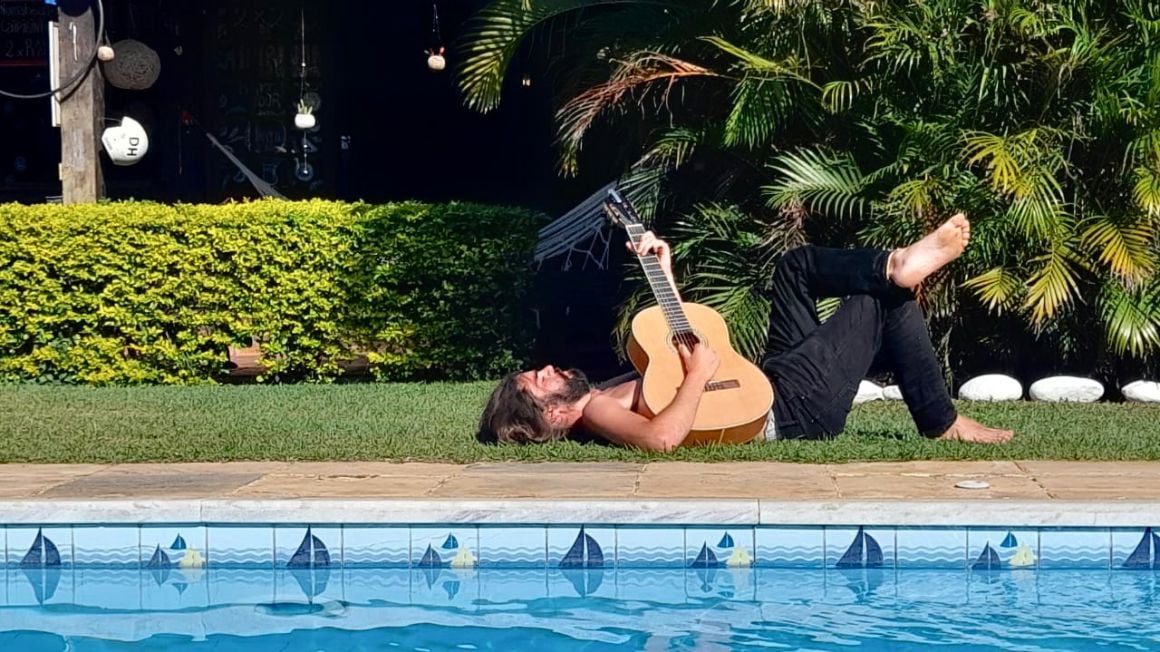
Dry season depends on the country. Generally, the cooler months from June to September are the driest in the coastal areas. In the Amazon – given that it is the world’s biggest rainforest – is wet pretty much all year. The Andes are the driest from April – November.
High season for all countries is, without a doubt, from December – February. This is due to holidays occurring over that time and it is also the time when many gringos and locals alike take their holidays. Backpacking in the low or shoulder seasons will definitely make for a cheaper trip, especially with regards to accommodation.
Best Time to Visit – Country Breakdown
Here are the best times to visit South America broken down by country!
Best Months to Travel: September – April
What’s the climate in Brazil like?
In the south, the hot, wet summer season runs from November – March. In the north, the rainy season is from April – August. In the Amazon, it rains pretty much all year.
If you want to visit during the festival season though, September-March is best.
Best Months to Travel: November – March
What’s the climate in Colombia like?
Generally speaking, travellers should visit Cartagena and the Caribbean coast between November and March when the weather is dry. The rest of the country is good year-round. Bogota, Cali, and Medellin are always pleasant weather-wise.
Best Months to Travel: March – May, September – November
What’s the climate in Ecuador and Peru like?
Lots and lots of micro-climates in the Ecuador Peru region. But there are some general trends:
- The highlands/Andes are dry from May – September. These are the best months for hiking and visiting Machu Picchu.
- The coast is warm and dry from December – May. This is the best time for the Galápagos.
- The Amazon is always wet and humid as shit.
- The south of Peru is much drier than the north, and Ecuador for that matter.
You’ll need to plan your trip carefully around what you want to see and do.
Best Months to Travel: May – October
What’s the climate in Bolivia like?
The winter season (May – October) is also its dry season, and the best time to visit Bolivia. This means that nights can be very cold, especially when you’re at higher altitudes. Although Bolivia is generally drier than its neighbours, it stills gets dumped on in the wet, summer season.
Best Months to Travel: March – April, October – November
What’s the climate in Chile like?
Summers in Chile are generally the high season. That being said, this may not be the best time to visit. Prices are at their highest, the Atacama Desert is a furnace, and the winds are VERY strong in Patagonia.
Like almost anywhere, the shoulder months (October – November & March – April) are better.
Best Months to Travel: October – April.
What’s the climate in Argentina and Uruguay like?
Summer for most of the country is from December – February. In the north, the summers can see rain and temperatures that soar to almost unbearable. In the south and Patagonia, summers are dry(ish) and pleasant.
The winters, obviously, are extremely cold in the south. Whereas the north generally has pretty mild winters.
What to Pack for South America
Travelling through South America is a lot easier if you have the right gear. A thorough backpacking South America packing list goes a long way – literally.
On every adventure, there are 6 things I never go travelling without:

Snoring dorm-mates can ruin your nights rest and seriously damage the hostel experience. This is why I always travel with a pack of decent ear plugs.

Hanging Laundry Bag
Trust us, this is an absolute game changer. Super compact, a hanging mesh laundry bag stops your dirty clothes from stinking, you don’t know how much you need one of these… so just get it, thank us later.

Sea To Summit Micro Towel
Hostel towels are scummy and take forever to dry. Microfibre towels dry quickly, are compact, lightweight, and can be used as a blanket or yoga mat if need be.

Monopoly Deal
Forget about Poker! Monopoly Deal is the single best travel card game that we have ever played. Works with 2-5 players and guarantees happy days.

Grayl Geopress Water Bottle
Always travel with a water bottle! They save you money and reduce your plastic footprint on our planet. The Grayl Geopress acts as a purifier AND temperature regulator. Boom!
South America IS a safe place to go backpacking. Is backpacking in South America safe all the time?
Hell no. But nowhere in the world is safe 100% of the time. Does that mean we let it stop us?
Hell no.
In recent years, security in South America is increasing. Using the common sense safety rules of backpacking is usually enough here.
The thing with South America is understanding your surroundings and self-awareness. Coordinating your safety in Rio de Janeiro is completely different than hiking the Inca Trail.
Robberies are rare and could happen to anyone – in any country. Sometimes people in desperate circumstances are forced to do bad things. They see a foreigner and they see a chance to temporarily relieve the stress of their situation.
Odds are, you should be just fine. If ever you run into a hold-up situation just give them what they want.
Your iPhone and wallet aren’t worth dying over, ever! But it’s worth hiding your money well just in case .
Political wobbles are pretty common. Due to the political situation in Venezuela right now, this is probably the most dangerous country in Latin America. I hate to say it but the situation is what it is.
In general, being out late, drunk, and/or alone is a recipe for trouble. Always take a taxi home at night, even in a group.
Do know which neighbourhoods you should avoid too, especially in major cities – even during the daytime. Ask the locals which these are. There’s no real reason to head into these areas anyway, but it’s worth noting so you don’t stumble into the wrong places.
- Is Peru Safe?
- Is Argentina Safe?
- Is Chile Safe?
- Is Brazil Safe?
Sex, Drugs, and Rock n’ Roll in South America
South Americans love to party! They start the party late and they don’t stop until the sun is way up.
Of course, Brazil is very famous for Carnival AKA the biggest party on the planet . But it’s a big deal in most South American countries – so you’ll find great parties everywhere.
The backpacker circuit is notoriously rowdy. Traveller hubs like Cusco, Buenos Aires, Montañita, Mancora, La Paz, and Medellín are legendary for their nightlife.
It is very easy to meet people, stay up all night, and fall in love with a sexy South American. Much of the continent is LGBTQ+ traveller friendly too!

Alcohol is freely available, freely consumed, and good quality too. I’m telling you, I’ve had beer in South America which puts Germany to shame.
South America is stoner-friendly too! Weed is legal or decriminalized for recreational use in many places – some countries are more relaxed than others. It’s best to ask the locals how it’s currently being handled where you are.
Cocaine is just about everywhere; particularly in Colombia, Peru, and Bolivia. But be aware, this isn’t the stuff you find back home – it’s much purer. One line is enough to keep you up all night.
To find drugs on the road, just ask a local to help you. Don’t go out alone looking to score in strange places and don’t give cops a reason to shake you down.
Ayahuasca retreats are gaining popularity as well. But remember, it is a ceremonial spiritual medicine of indigenous people. If you do want to try it, make sure you’re doing it with a real shaman, for real reasons; it’s not like acid and not a drug just to get mindless with.
Staying Healthy in South America
Travellers should be properly vaccinated before backpacking in South America. Consult a medical professional before travelling about which shots you should get.
You should have all the usual travel vaccinations before heading out: hepatitis A & B, typhoid, tetanus, etc. Rabies is also recommended particularly if you’re going to the rural areas or parts of the jungle. You don’t want to mess around with that one because it can be really nasty.
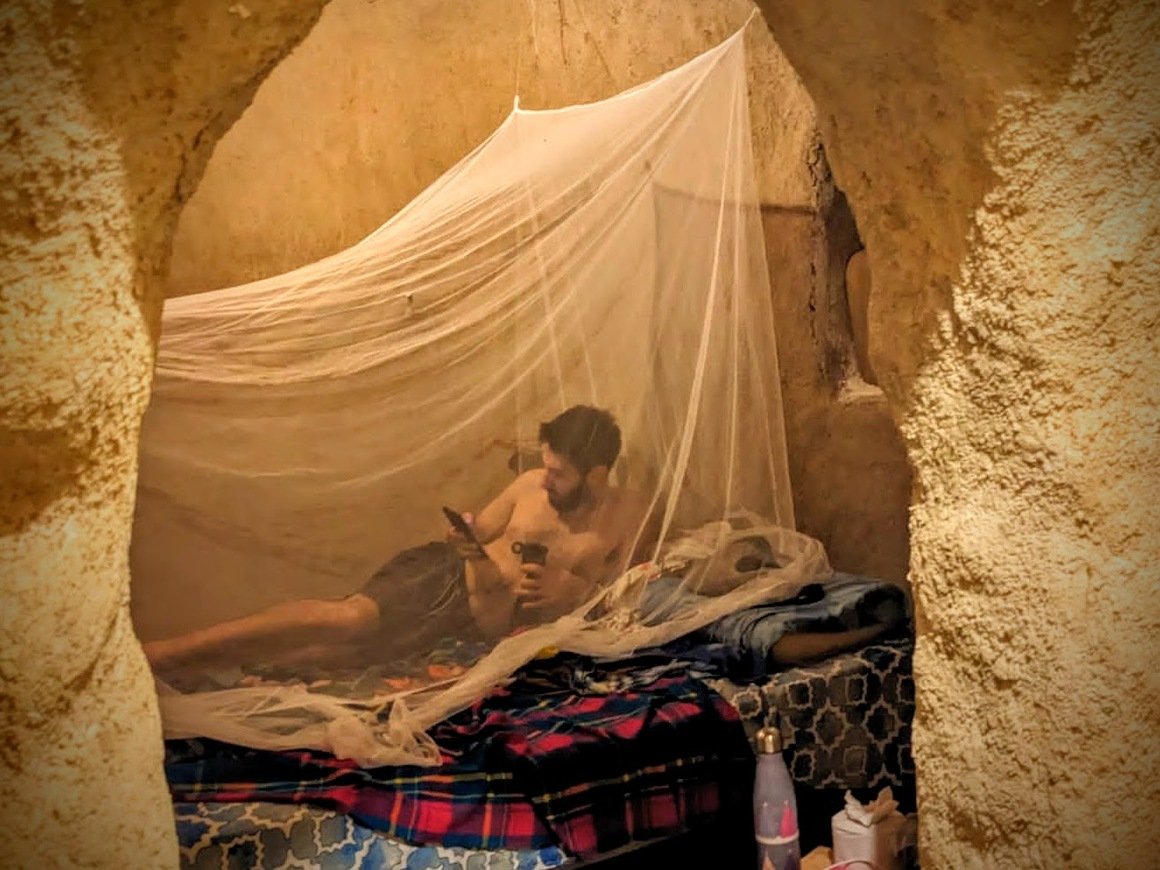
It is worth checking if you need the Yellow fever vaccine before entering some countries. In some places, it is only recommended.
It’s also worth noting that in most places in South America, the water isn’t fit for consumption. The best travel water bottles have a filter.
Getting Insured BEFORE Visiting South America
Travelling without insurance in South America is risky. I broke my back in Brazil and will be happy to tell you why GOOD travel insurance is so important.
So consider getting travel insurance sorted before you head off on an adventure. You don’t want to be struck with a big, unexpected bill, or, worse, to put your health at risk.
ALWAYS sort out your backpacker insurance before your trip. There’s plenty to choose from in that department, but a good place to start is Safety Wing .
They offer month-to-month payments, no lock-in contracts, and require absolutely no itineraries: that’s the exact kind of insurance long-term travellers and digital nomads need.

SafetyWing is cheap, easy, and admin-free: just sign up lickety-split so you can get back to it!
Click the button below to learn more about SafetyWing’s setup or read our insider review for the full tasty scoop.
Where you will start your trip will be determined by what backpacking route you have chosen. Obviously, if you plan to tackle a specific country, the capital city of that country is a popular starting point and – usually – the logical option.
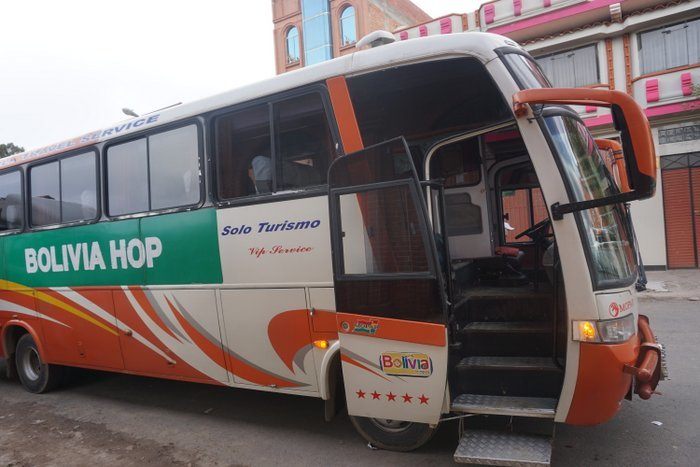
South America is not the cheapest country to fly to, but you can sometimes bag a cheap direct flight from another major airport. It’s pretty expensive to fly within it too. Unless you are coming by boat to Colombia via the San Blas Islands, you will certainly be arriving by plane.
São Paulo, Lima, Buenos Aires, Santiago, and Rio de Janeiro are all major hubs for South America. Compare the prices between these top destinations, and base your South America itinerary from there.
Entry Requirements for South America
Good news everyone! Most South American nations DO NOT require a visa to visit! This applies to those travelling from the USA, UK, EU, Australia, and most other Western nations.
This is a positive trend in the last few years. A few years ago, travellers sometimes had to apply for (expensive) visas to enter countries like Argentina and Brazil. Luckily, this is no longer the case .
Once you’ve entered the country, you can remain for a period of 90 days visa-free. Extensions are possible but these vary on a country-by-country basis. Most South American governments do not take kindly to people who overstay.
Of course, ALWAYS double-check visa policies before travelling .
City Bus. Local Bus. Long-distance bus. Overnight bus.
That’s right. Buses are the most economical way of getting around South America. Every major capital has buses going to the far reaches of the country.
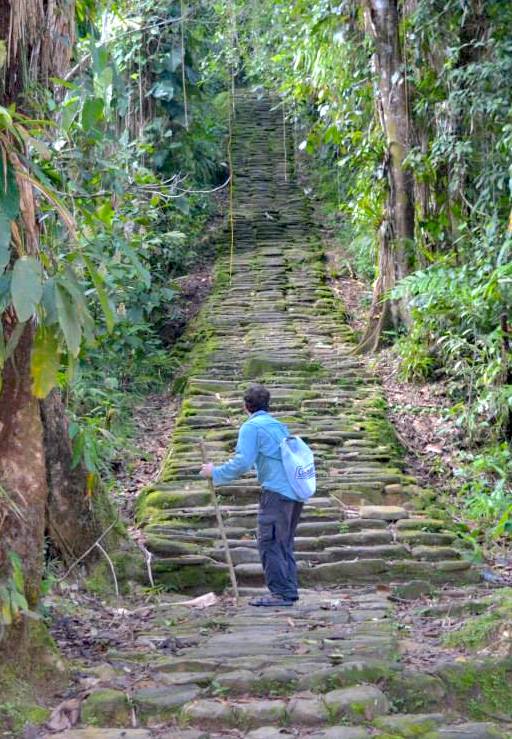
Local buses are typically super cheap. You can book online but the bus stations are organised really well too.
Taxis are an option within cities and sometimes Uber too, depending on the city. If you opt for a taxi ride, make sure they are legit, set the price beforehand, and haggle the shit out of the driver without being rude.
Flights between countries in South America can be expensive. Internal flights within the country aren’t the cheapest either, though they are cheaper if you buy them while you’re inside the country (you’ll save money on taxes).
As a general rule when backpacking, cheap travel is slow travel . Buses can be slow but as you will be taking many if you are backpacking South America long term, you want to go for the cheapest option.
If you want to go full Che Guevara style you can travel by motorbike pretty easily (and cheaply) in most places in South America. I recommend that you have some experience riding motorbikes before you even think about sauntering into a capital city or down a winding road in the Andes. If you do go the motorcycle route you can be sure that it will be the ride of your life.
Hitchhiking in South America
Travelling by hitchhiking is always an option. Your success will greatly depend on the area and the country; I wouldn’t recommend hitchhiking in a major city or at night.
Hitchhikers aren’t that common in countries like Colombia, mainly due to paranoia about the security situation in the country. Not everyone here is a drug lord that wants to kidnap you for ransom money. You can hitchhike throughout Colombia AND it’s such an awesome experience!
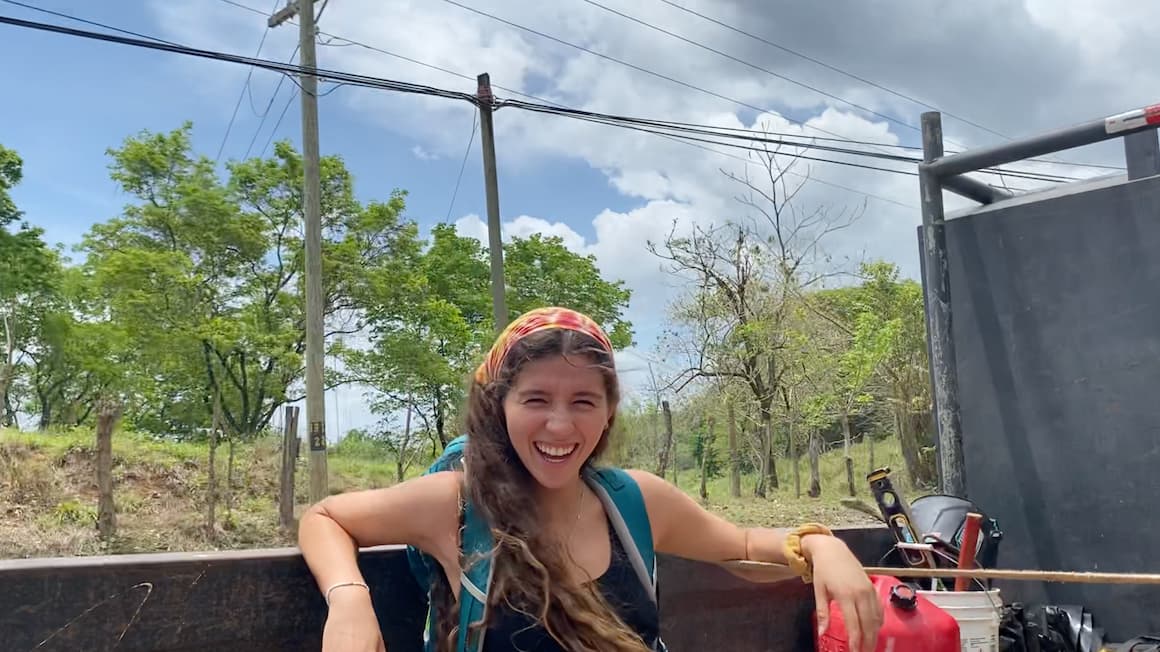
Rural areas of South America are especially impacted by high rates of poverty. Expecting free rides from folks with limited means isn’t morally fantastic. That said, even if you offer the driver a few bucks, it could very well end up being cheaper (and more rewarding) than taking the bus.
I would never assume that the ride is free initially. Always ask to avoid having an awkward scenario in which the driver who picked you up is demanding an unexpected fee. This is when learning Spanish comes in very handy.
Onwards Travel From South America
Your only options for leaving the continent are by boat or by plane. Most likely you will fly out of the country where you are finishing your trip if it makes sense and is the cheapest option. Try to book your flights in advance in order to find the best flight deals .
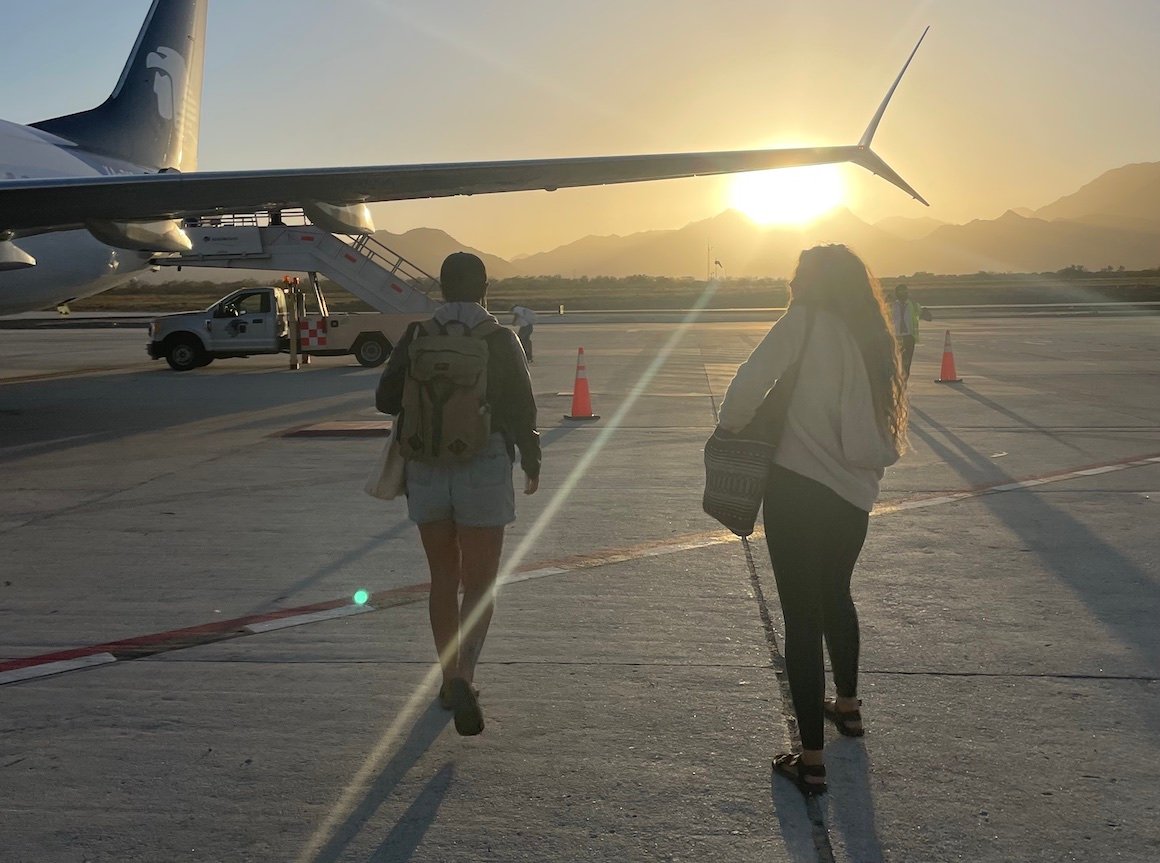
It is technically possible to cross the Darien Gap to Panama overland. Rumour has it that you can hire a guide for quite a bit of money and cross the Darien on foot.
In the past, this was impossible though due to narco-terrorist/guerrilla activity. May the Gods of Backpacking be with you if you attempt the journey on your own without a guide.
South America is becoming a digital nomad hub. After the pandemic, the boom really: a generally low cost of living, relatively reliable internet, and tons of expat communities.
Medellín is the current front-runner. This city is growing at a RAPID pace and is becoming the apple in every backpacker’s eye.
Plus, Medellín is safer than ever. Lots of people want to stay here for an extended period of time, digital nomads included.
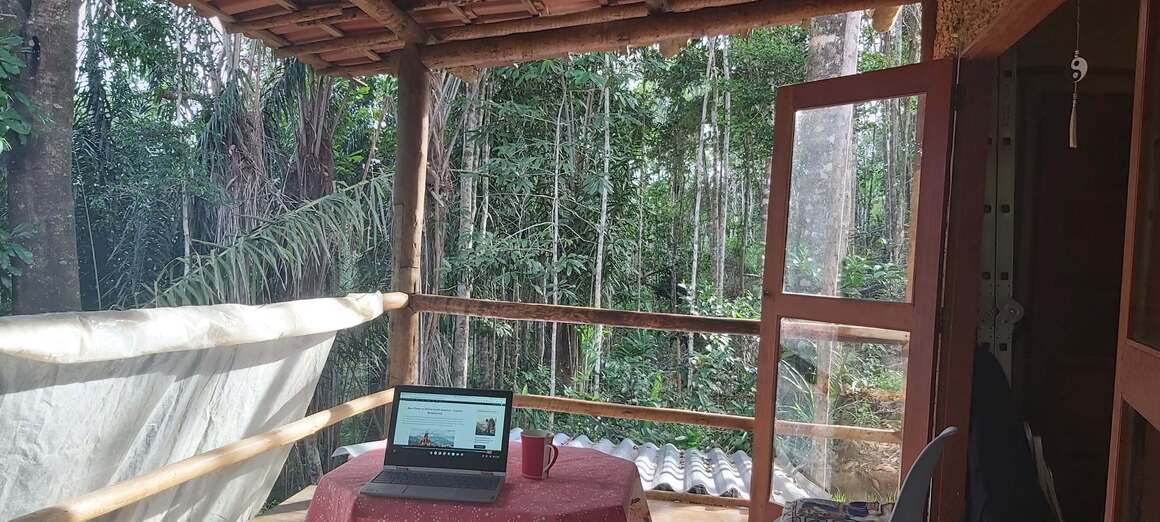
Close behind are larger South American cities like Buenos Aires, São Paulo, and Quito. Being big cities though, you’ll have to overcome higher prices and crime. Safety in Buenos Aires can be sketchy but so can every massive city, right?
Note that, at the moment, most South American countries do not offer a special digital nomad visa.

A new country, a new contract, a new piece of plastic – booooring. Instead, buy an eSIM!
An eSIM works just like an app: you buy it, you download it, and BOOM! You’re connected the minute you land. It’s that easy.
Is your phone eSIM ready? Read about how e-Sims work or click below to see one of the top eSIM providers on the market and ditch the plastic .
Teaching English in South America
Most people who end up living or staying long-term in South America do one of two things: teach English or volunteer.
Teaching English in South America is very popular. Some people make a living out of just going from one city to the next city and hitting up all the English schools in between. Some are accredited though many find success using their own merits.
If you have a TEFL certificate it will be much easier to score teaching gigs in South America. I recommend getting yours with MyTEFL – Broke Backpacker readers get a 50% discount on TEFL courses when you enter the code PACK50 at the checkout.
Volunteering in South America
Volunteering abroad is a great way to experience a culture whilst doing some good. There are loads of volunteering gigs in South America ranging from protecting the Amazon to teaching in barrios of Buenos Aires.
Arguably, you may need a permit in order to volunteer. But in reality, the continent is pretty chill and this is unlikely to ever be enforced.
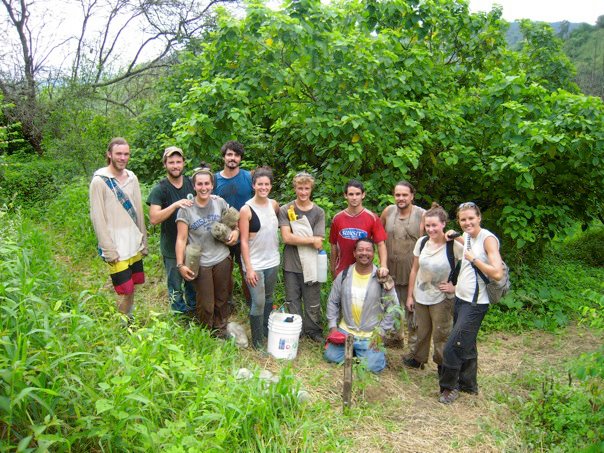
I spent a few weeks volunteering in the mountains in Northern Colombia and it was the best way to get to know the land, people, and lifestyle. Finding volunteering opportunities in South America is about learning, building community, and making an impact in a place you visit.
The best way to find volunteer jobs is word of a trustworthy mouth. But programs run through reputable work exchange programs like Worldpackers , Workaway , and WWOOF help you get your foot in the door of volunteer communities.
They’re a great opportunity for unique experiences and make amazing connections with people. But you do have to stay vigilant, especially when working with animals or children.
If you sign up for Worldpackers with a discount code, memberships are only $39 a year. For that price, it’s often worth giving it a try.
Summing up food in South America is like trying to explain what music is. It’s incredibly diverse and every country, every region, every household has a different definition.
First of all, meat is hard to avoid. They like it juicy, tender, slow-cooked, and accompanying pretty much everything. Especially in the southern part of the continent, Argentina, Uruguay, and South Brazil, the smell of cooking cow is heavy in the air.
The Argentinian way of grilling is Asado . And it’s not just a delicious barbecue – oh no – that’s just the centrepiece. The event is a huge part of the culture.
The vegetarian movement is gaining momentum, though it’s harder in some places than others. In more rural places, you may go hungry if you don’t want to eat meat now and again, but in general, it’s not impossible.
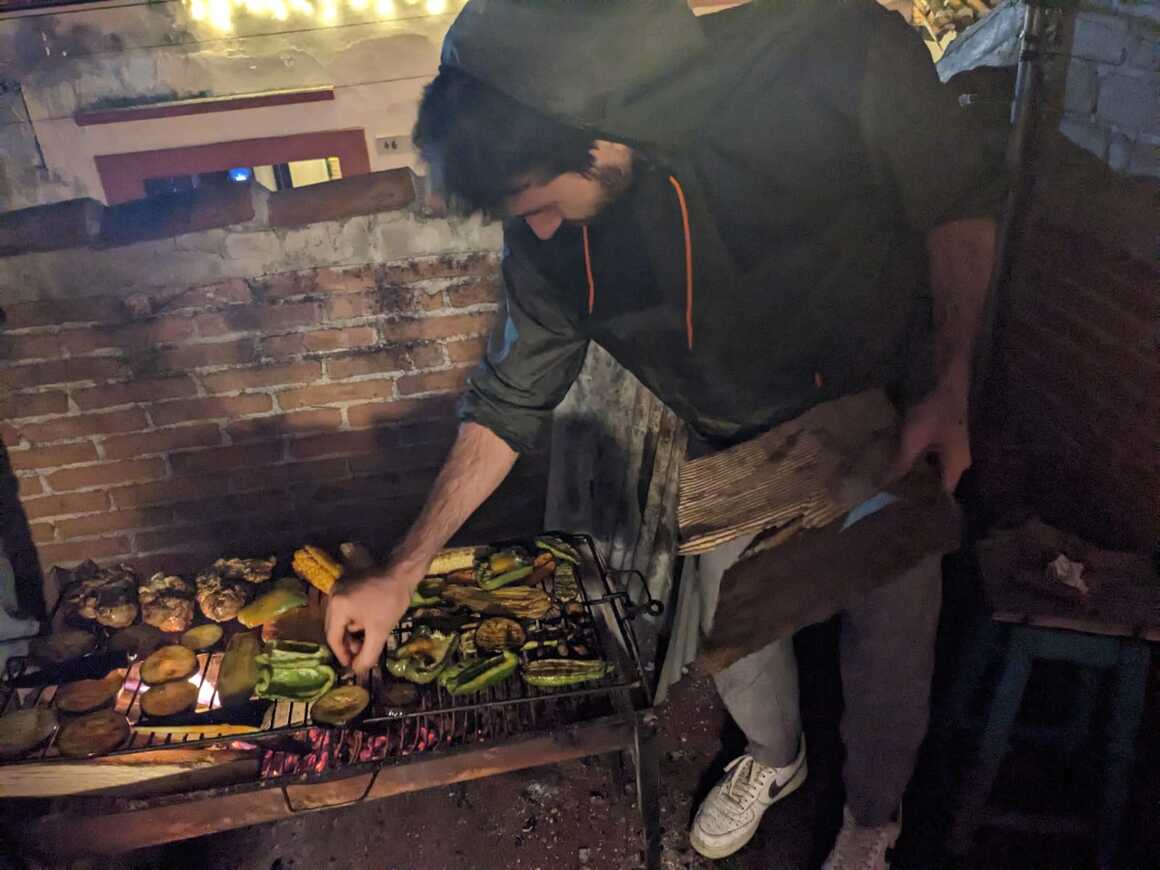
Andean countries like Peru and Bolivia have chronically underrated food scenes. In fact, Peruvian food is often regarded as some of the best in the world. You’ve never felt fresher than after chowing down that ceviche.
In the Amazon, they have a whole different gastronomic world; obviously, everything grows here. There are ingredients that come from the Amazon that just don’t exist anywhere else.
There are strange fruit and vegetables in abundance. Then, of course, the fresh fish comes leaping out of the river, almost directly to your plate. Catching your own fish is never a bad idea either.
The food in the north of South America, like Colombia and Venezuela, is the definition of comfort food. If you’re eating right, you’re going to be gaining a few kilos. Don’t pass on an opportunity to gorge yourself silly.
Street food usually involves lots of deep-fried goodness. But it’s the abuelas that make the best pastries, with oodles of love. And ooh, those arepas… they have a special place on my plate.
The Best Food in South America
Here are some of the best South American foods that you definitely shouldn’t miss out on.
- Feijão (Brazil) – Beany stew for everyday eating.
- Acai (Brazil) – Superfood berry.
- Empanadas – Your trusty stuffed pastry friend.
- Dulce de leche – Just try it… thank me later.
- Asado (Argentina) – Grilled meat with a side of meat.
- Antichucho (Bolivia) – Mmmm… cow’s heart.
- Ceviche (Peru/Chile) – raw but not raw fish, in lemon juice.
- Cuy (Peru) – A large cooked guinea pig.
- Encebollado (Ecuador) – Ecuadorian Grandma’s comfort stew.
- Arepas (Colombia) – Corn pockets to fill your hungry belly.
South America is a very complex continent. Colonization by Western Europeans technically makes it the youngest member of modern civilization. But saying this disregards all the history that came before the “ conquistadors” arrived.
South America has hosted many advanced civilizations like the Incan Empire, whose influence still lasts to this day. Though much of the native culture was lost with the mass killing by said conquistadors .
Long story short: South America is an enormously diverse region, maybe more so than anywhere else. Yes, European culture has largely shaped the entire continent. But indigenous and African cultures are just as important, if not more so.
Northern Brazil is very Afrocentric. This was the first charted part of the continent and ideal for rowing sugarcane. Consequently, it’s the place where all the slaves were brought.
Slavery is over. But it leaves behind a blend of African customs and cultures morphed into Latino culture.
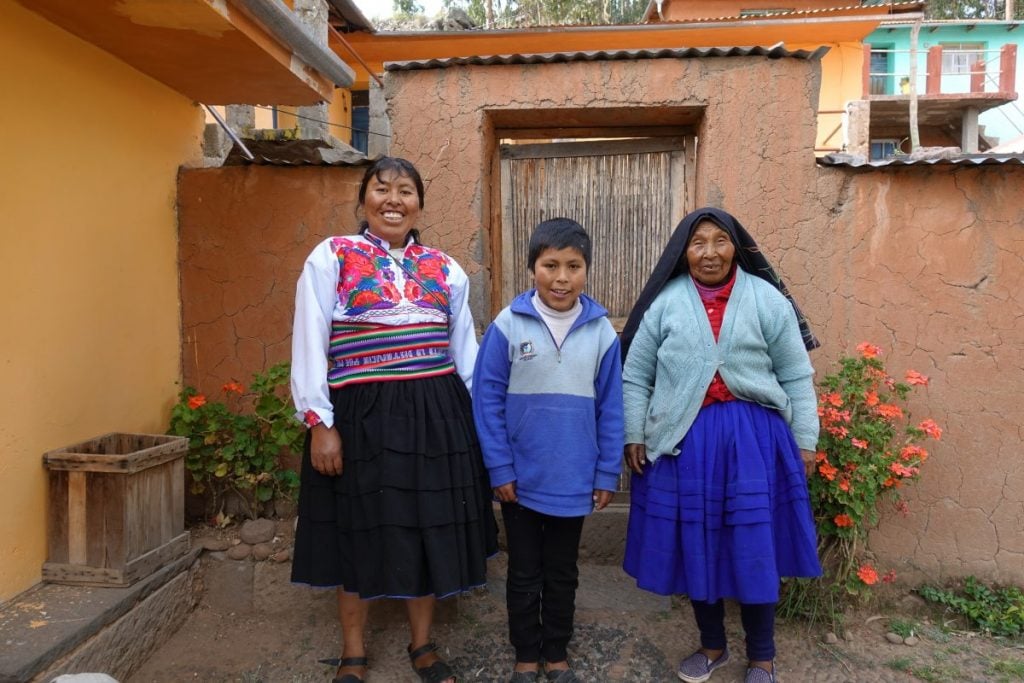
The south, which constitutes Argentina, Chile, and Southern Brazil, is much more European. Aside from the big players – the Spanish and Portuguese – Italians, Germans, and French all settled here following a huge era of migration.
In the Andean countries of Bolivia, Peru, and Ecuador you see a lot of indigenous cultures. Some people still live like their ancestors, living in the highlands and tending the land. Though Spanish is still the dominant language, several local languages, like Quecha and Aymara, are still commonly spoken.
Don’t make the mistake of thinking that all of South America is just an extension of Europe or North America. You’ll miss out on the beautiful subtleties of the region, which make backpacking in South America so wonderful.
A backpacking trip in South America is a unique experience in itself. And within that, there are instance amounts of opportunities to make your South America itinerary different to anyone else who’s travelled here before. Here are some of the best things to add to it:

Things go wrong on the road ALL THE TIME. Be prepared for what life throws at you.
Buy an AMK Travel Medical Kit before you head out on your next adventure – don’t be daft!
Hiking in South America
South America has some of the best hikes in the world . Here are a few iconic options to get your bucket list started:
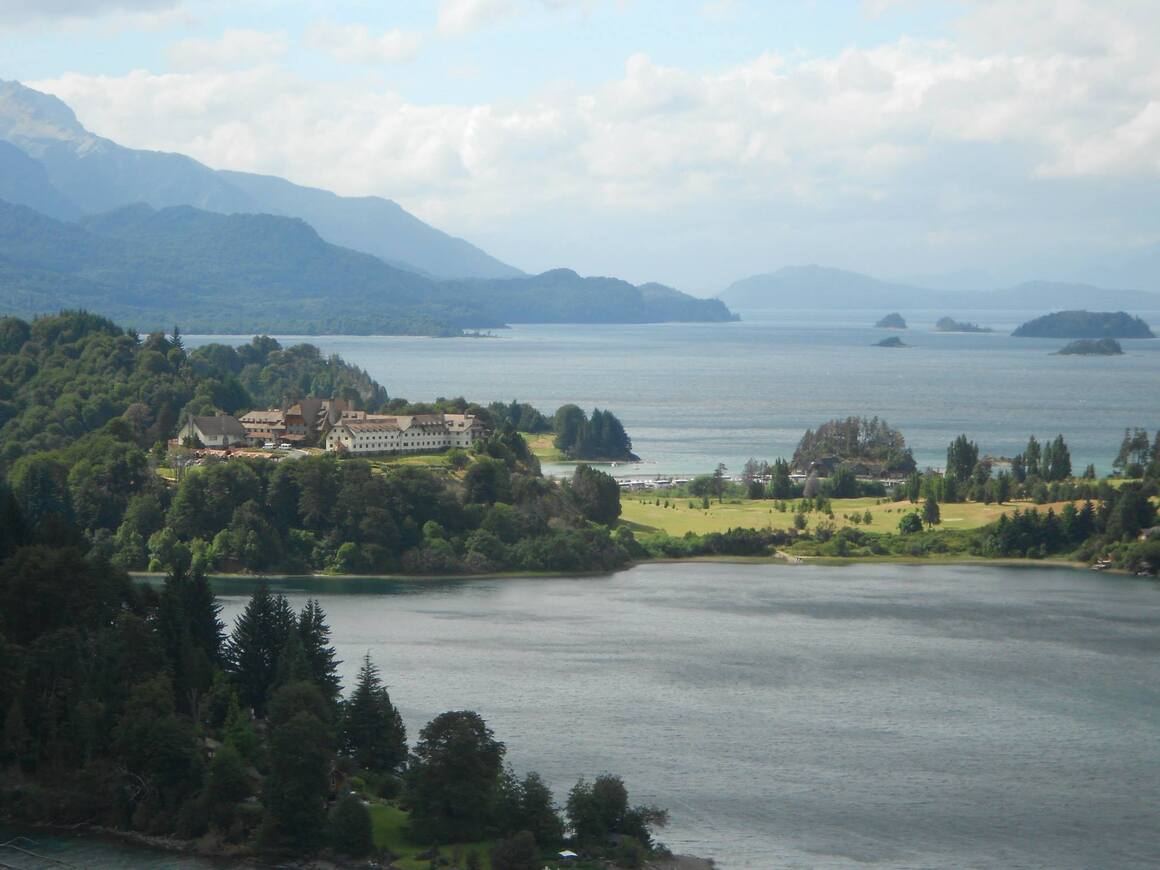
- Lost City Hike, Colombia : This hike through the Colombian jungle will certainly be a highlight of your South America travel.
- Sierra Nevada de Cocuy, Colombia : Snow in Colombia? Here you can find peaks are as high as 5,330 meters above sea level. If you have your own gear and a good sleeping bag , you can probably do the hike without a guide.
- Iliniza-Norte, Ecuador . This is a fantastic 2-day trek that does not require any special gear or equipment. If you are planning to tackle Cotopaxi this is a great warm-up. A solid challenge for the dedicated hiker!
- The Salkantay trek, Peru: Hike to Machu Picchu over 4 days and experience the true beauty of the Andes along the way. One of my favorite South American treks for sure.
- The Cordillera Huayhuash, Peru : Truly one of the most stunning areas in Peru. For serious hikers, planning a trek like this is one for the books!
- Hut-to-Hut in Bariloche, Argentina: Spectacular hike for some of the best views of Nahuel Huapi National Park and its lakes. Tents are optional since you can stay exclusively in the refugios.
- Villa O’Higgins to El Chaltén, Chile/Argentina : One of the greatest ways to experience Patagonia. Walk from Villa O’Higgins in Chile to El Chaltén in Argentina. You’ll see some superlative mountain, forest, and lake scenery along the way.
- Torres Del Paine Circuit, Chile : The hike of all hikes in South America. This epic walk takes 9 – 11 days and passes through some of the most dramatic landscapes one can fathom. A must if you’ve got the time and hiking spirit!
Scuba Diving in South America
You have scuba diving options galore in South America! In general, scuba diving is pricier than it is in other parts of the world but that’s because it’s worth it. If it is something that you really want to do, I say go for it!
Colombia is probably the cheapest and best place to dive AND get certified in South America. You have Providencia and Santa Catalina (a smaller island to the north) which is home to the third-largest coral reef barrier on Earth and includes over 40 dive sites.
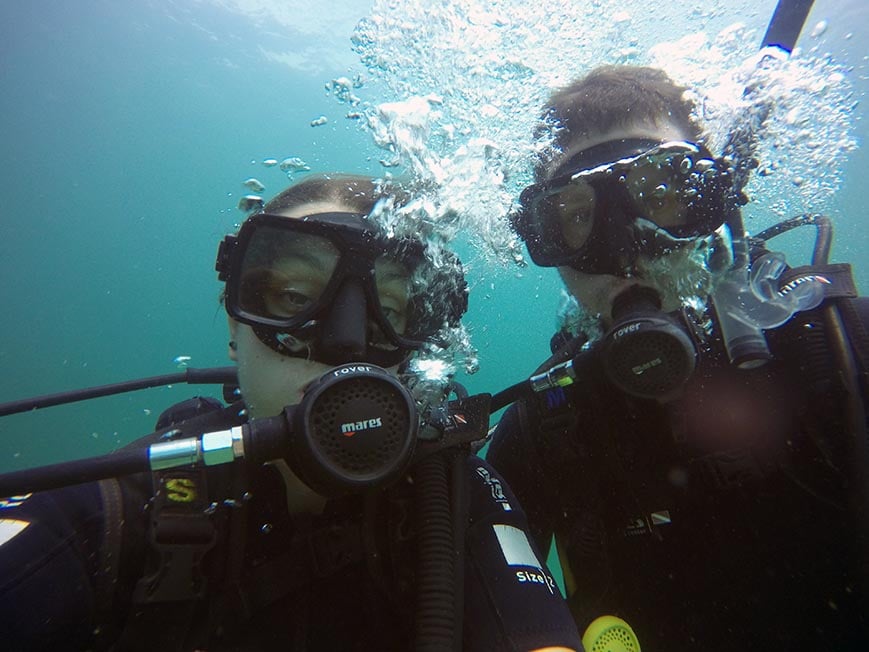
Malpelo is the harder-to-reach version: a jagged rock in the Colombian Pacific, it can only be reached by boat, and divers can only visit here as part of an organized trip. It’s worth the time and money for sure; Malpelo is one of the best places in the world to dive with sharks, including hammerheads, whale, and the rare sun ray shark.
People have reported schools of up to 500 sharks around Malpelo. That’s right. 500!
Peru and Ecuador both have some decent diving right off their coasts. The diving around the Galápagos Islands is world-class, but it will cost you a fortune go diving there.
If you truly want to have the scuba diving adventure of a lifetime, I highly recommend joining a Liveaboard trip.
- Liveaboard the Galapagos
- Liveaboard Colombia
Surfing in South America
Surfing is the number one sport on South America’s coast. From Peru to Brazil, backpackers and locals are coming together and shredding!
Peru is home to the longest left-breaking wave in the world . You can literally ride a wave for five minutes!
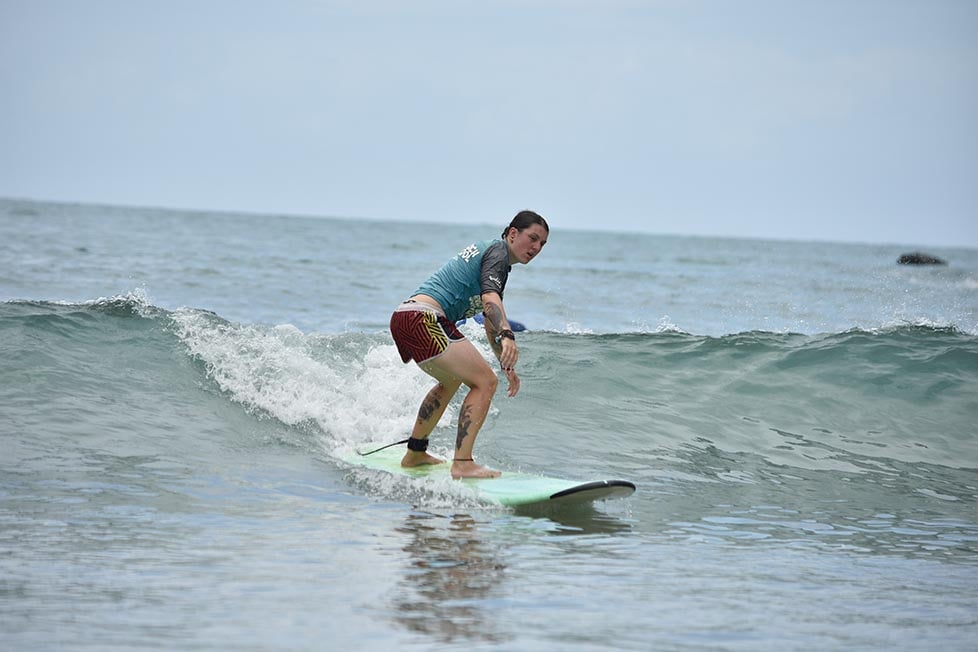
The Pacific Coast is dotted with funky surf towns, where the main activities revolve around the waves and the nightlife. There are a plethora of surf schools in every country. Often these surf schools offer Spanish classes as well if you are wanting to double down (which I highly suggest!).
It is easy to fall in love with the surfing lifestyle. But be careful, you might just fall in love with the whole scene. I wouldn’t blame you for a second.

Our GREATEST Travel Secrets…
Pop your email here & get the original Broke Backpacker Bible for FREE.
Is backpacking South America safe?
Yes. Backpacking South America is safe. Just bear in mind that crime rates are higher than in some other areas of the world. But by following standard safety procedures, there’s no reason why that crime should affect you. Be sensible, show people plenty of respect, and look after your friends.
How are the bus journeys in South America?
The long-distance buses are generally top quality and comfortable. Just be aware that distances on the map can be deceiving and journeys can be long so bring plenty of water, food, something to keep you warm in the baltic aircon, and probably some toilet paper too.
Is travelling South America as a woman possible?
Absolutely! Not only is it possible, it’s awesome. Do remember that, unfortunately, women do have to consider safety as a factor more so than men, especially after dark. But with that in mind, prepare for the adventure of a lifetime.
How are South Americans so damn sexy?
There are too many reasons. Just go and spark up conversation with them and find out for yourself. Beware though, you’re likely to fall completely, madly, deeply in love.
Backpacking South America can be one hell of a party at times. Take it from me, it can be easy to get carried away.
You can make a positive impact on people when we travel and South America is the perfect place to do that. Try to spend your money in places where the experience is mutually rewarding.
When buying a local craft, be fair to the person who spent countless hours crafting it. Pay people their worth and contribute to the local economies as much as possible.
If you visit small or indigenous communities, be respectful: they are normal folks just living their lives. Backpacking South America – or any region for that matter – often illuminates some of the great socio-economic inequalities of the world. Never take it for granted that you are healthy and financially able to go travelling.
Show the world around you some gratitude and help to make a positive impact on it. Most of all have the time of your life and spread the love!
Well, amigos, the time has come for me to send you on your travellin’ way. Armed with your budget travel knowledge, on you go!
Your South America backpacking trip awaits. Have a few cold ones for me, yeah?
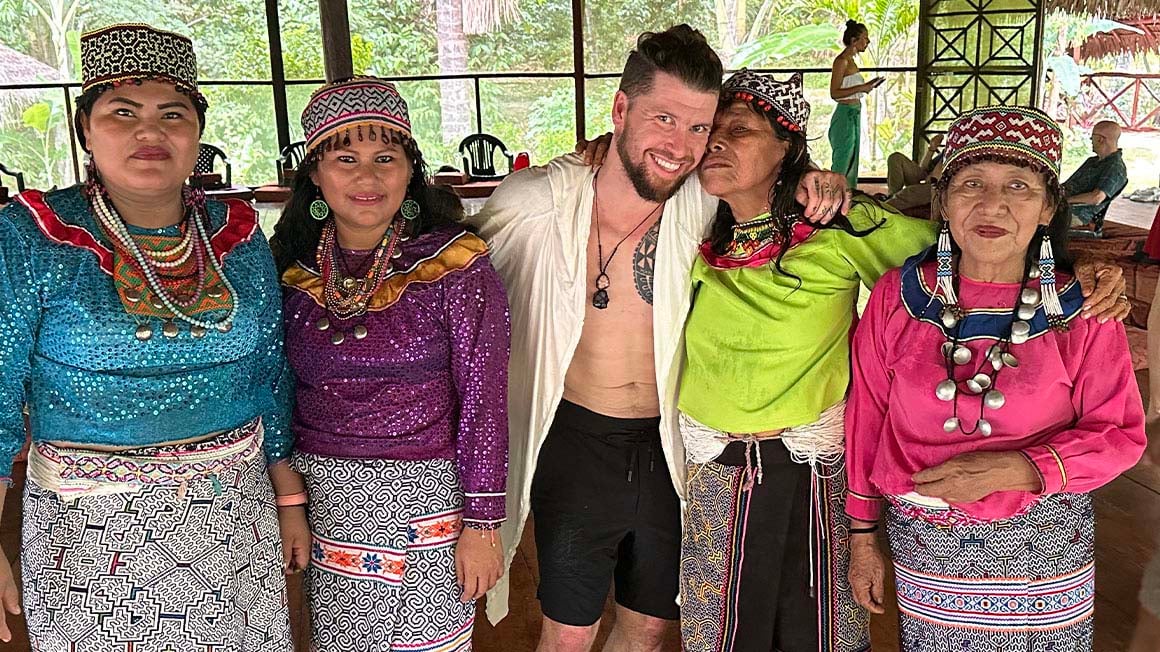
And for transparency’s sake, please know that some of the links in our content are affiliate links . That means that if you book your accommodation, buy your gear, or sort your insurance through our link, we earn a small commission (at no extra cost to you). That said, we only link to the gear we trust and never recommend services we don’t believe are up to scratch. Again, thank you!
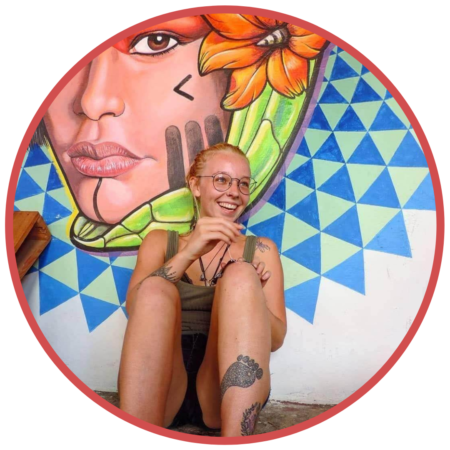
Share or save this post

30 Comments
Great post, loved the detail and enthusiasm you have for South America. I am saving up to travel from northern Colombia all the way down the west to Patagonia and then back up the other side (yes I am aware it will take the best part of a year). I wondered if you had any tips on the best time of year to start this adventure?
Plan your time with the weather and seasons in mind! Have a great time.
Is traveling to brazil unwise right now because of the covid situation? Has it become more unsafe because of the covid situation? It’s been really difficult to find solid information, and making a decision wether to visit or not has been quite difficult. Thanks for the otherwise wonderful post! Super informative.
informative post . best of luck
Hi Kami, glad you liked the article!
Very nice blog, congratulations I found a cheaper way to flight some routes inside Latin America If someone have plans, after this health crisis is gone, just ask me, I will be glad to help
Interesting. However as a Guyanese, that us from Guyana, South America I always find it odd that many persons leave out the English Dutch and French speaking countries of South America. We too have things to offer.
Hello Malkia, We totally agree with you! As soon as we manage to visit Guyana, we will update this guide! I look forward to exploring your country. Cheers
Hey there!! So I am planning a trip to south America this summer. I have a couples questions. I’m flying into Bogota, Colombia. I plan on spending 2-3 months in SA. I’d like to travel from Bogota to Machu Picchu, then to Buenos Aires, and depending on time Brazil. I am trying to figure out the cheapest way to travel from country to country. I don’t care about long bus rides or any of that. I just don’t know where to purchase the cheapest bus tickets. Please help!!!
Simply the cheapest tickets are usually at the bus station, or wherever locals buy their tickets. Look out for agencies and the like that might add a fee for booking the very same thing you could yourself.
I have a good tip to move around if you need to do it by plane, just let me know if you plan (after the whole problem is gone) to fly some stretches.
Hey man great blog, been reading so many of your posts recently, can you email me I wanna chat to someone who knows there stuff… I’m going to South America for about 6 to 8 months on a budget and need help planning a route… hopefully you see this and we can chat thank you
Hey Jamie, What is your question specifcally regarding your route? Cheers!
Thank you so much for sharing these information – they are so useful!
I am planning a trip of a lifetime to South America. To keep cost down, I am likely to stay in hostels for the first time. I like to understand how travellers wash their clothes in hostels. Are there usually any washer or dryer machines in hostels? Do we usually have to pay to use them? What is the price like?
Look forward to hearing from you.
Hi Tina, Some hostels offer laundry services. Other times you can get your laundry done at local lavanderias . Depending on the country, prices are usually pretty reasonable. They usually charge by the weight. Getting a massive load of clothes washed should not cost you more than $10 (sometimes way less) washed, dried, and folded. Cheers!
Thanks Chris for this wonderful article. Bolivia and Brazil is a magical place! Anyone who went there said it was absolutely amazing! That nature is just wonderful here. keep sharing your travel ides about more places of South America.
Cheers, Mate!
I started my South American journey two months ago and this has been a big help. There’s literally so many options once you get down here. Overwhelming in all of the best ways.
Much love from Peru.
Wow! That’s a marvelous article! Unfortunately, not so long ago, I was in South America, and I really had a lot of predicaments while traveling. If only I had read this article before the traveling, most likely, my trip would have been better!
Great content, congratulations.
Really great and in depth guide, thank you! Planning my first trip to South America and really like the look of your 3 month route across Peru, Ecuador and Columbia, was thinking of taking another couple of weeks on top to see Bolivia as well. What month would you advise starting this travel? (would really like to be home for Christmas)
The autumn months would be a lovely time to visit South America 🙂
Awesome content! I took so much advice and suggestions. I feel like I can plan whatever kind of trip ranging in length of time spent there plus budgeting. Thanks!
It’s great that you’re such a strong advocate of reusable water bottles and avoiding one-use bottles and generally I totally agree. However, I normally refill my water bottle from the tap, which obviously isn’t safe everywhere. Geneally can you drink tap water in South America? Or if not how do you safely refill without buying bottled water?
We’ve used lots of things over the years to harvest clean water from taps and streams. The GRAYL filter bottle is one of our favorites. South America is something of a mixed bag when it comes to drinking water. It ranges from safe to unsafe with every shade of chloriney in between.
I am starting my South America trip new month and I found this website extremely useful. One question though – I am worried about the requirement to show proof of onward travel. Any idea if Argentina, Chile, Bolivia, Peru, Ecuador, and Colombia require this?
Hi Neringa,
I never had to show proof of onward travel during my 6 months in South America. There was never a time when a customs officer/border police questioned me about my onward travel plans. You should be just fine 🙂
Thanks, Chris. You have been right! But I was requested to provide proof of onward travel by Avianca when flying for Cusco to Quito. Maybe because my passport expires soon. My friend, however, did not have one and was still allowed to board the plane 🙂 There was a group of Israeli guys who I think had to show this info, too.
Thanks a lot man, I’m planning a 3 month trip to Colombia, Peru and Brazil next year and this really helped me get my head around how to do it and the kind of money I’m gonna need to save! Cheers dude
Thanks, this really helped me a lot for planning my trip next year!
Leave a Reply Cancel reply
Your email address will not be published. Required fields are marked *
Save my name, email, and website in this browser for the next time I comment.
Notify me of followup comments via e-mail.
BACKPACKING SOUTH AMERICA IN 40 STOPS: AN UNUSUAL 6-MONTH TRIP ITINERARY

South America 6-month Itinerary: Adventurous Backpacking Route
South america 6-month itinerary: month 1, costa rica.
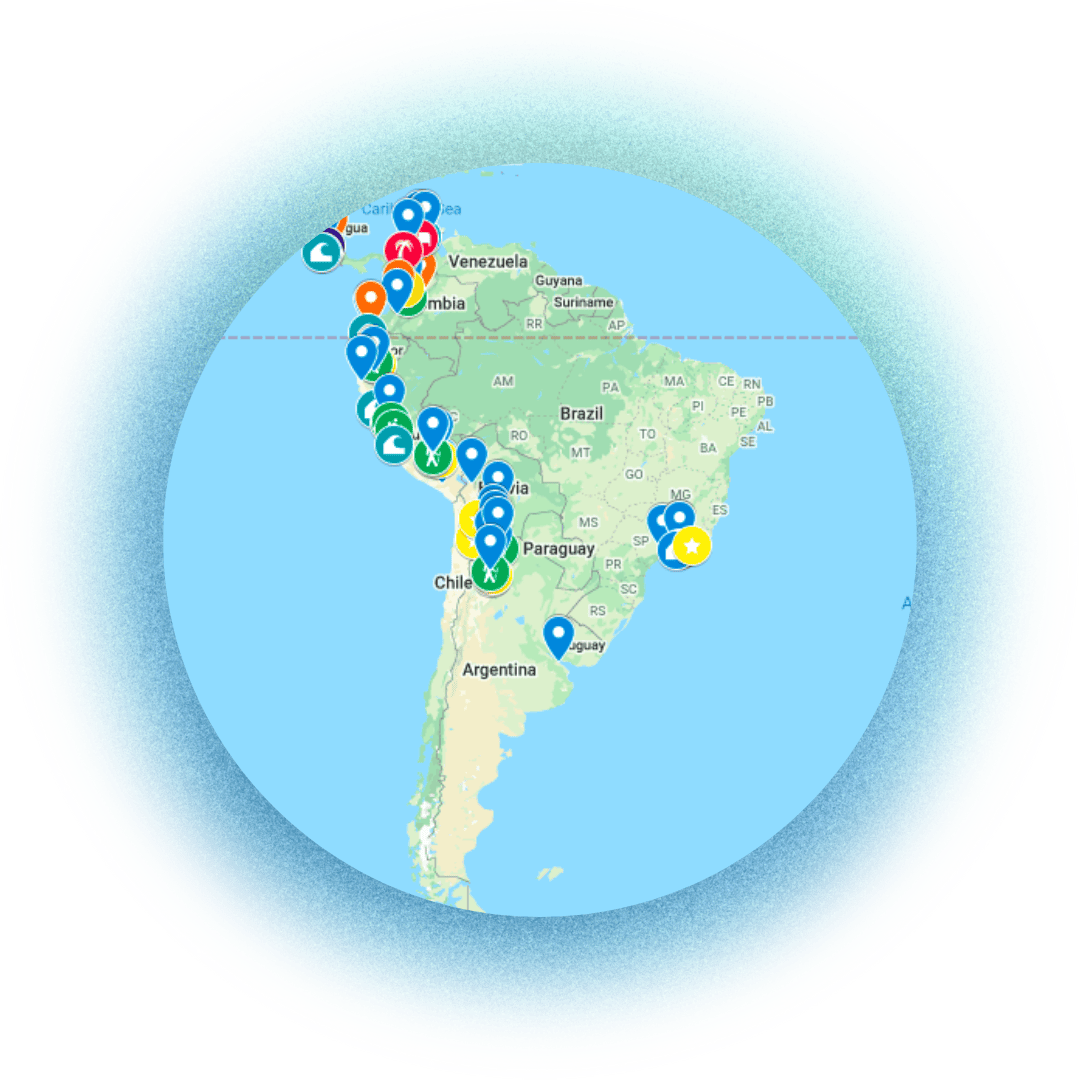
1) Land in San José, Costa Rica
2) san josé to monteverde cloud forest.
3) Monteverde to Montezuma ⭐

4) Montezuma to Santa Teresa
South america 6-month itinerary: month 2, colombia, 5) border crossing ✈️ costa rica to colombia, bogotá, 6) bogotá to salento.
7) Salento to Jardín
8) Jardín to Medellín
9) medellín to santa marta/palomino, 10) palomino to costeño beach.
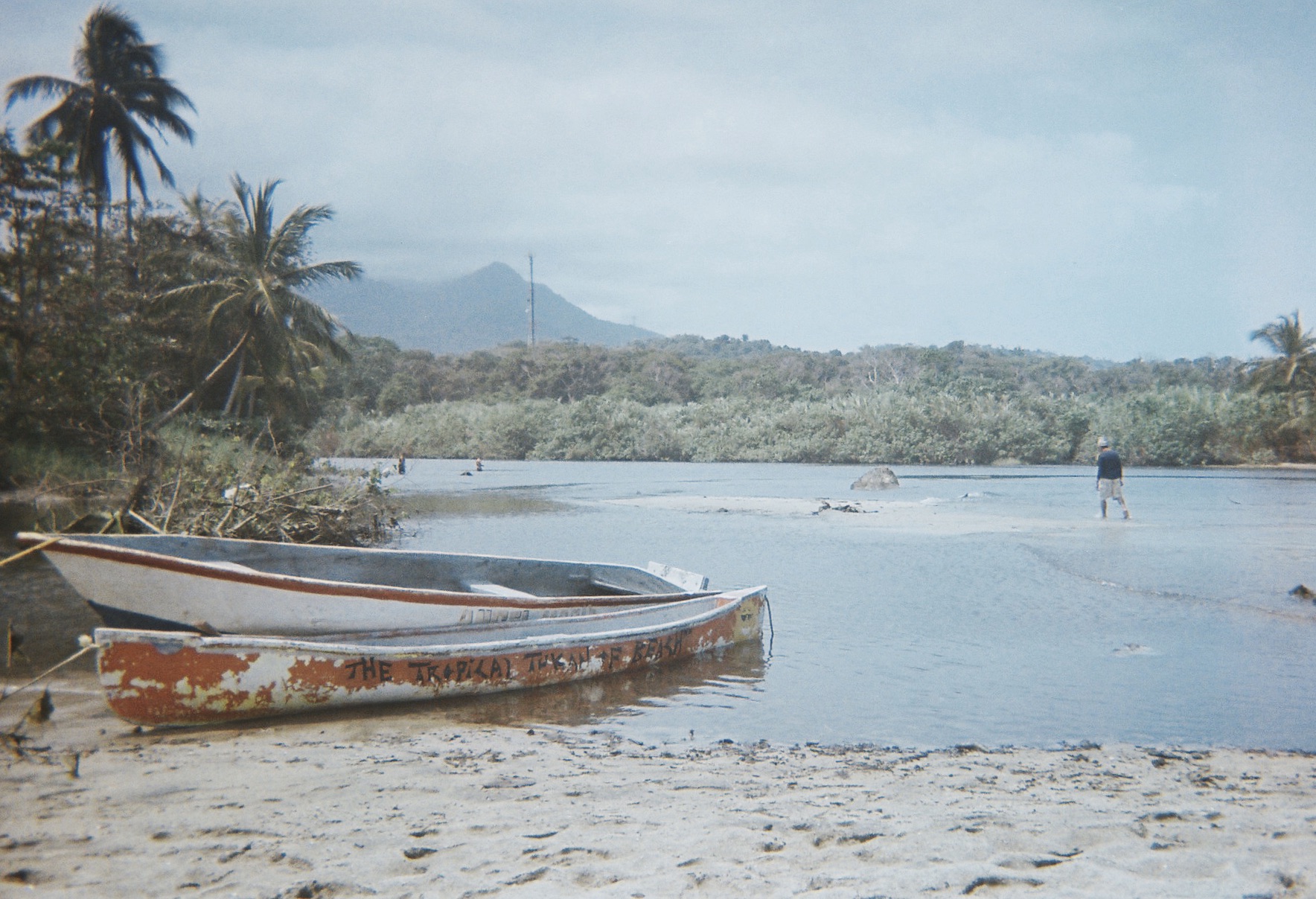
11) Costeño Beach to Minca
12) minca to isla mucura.
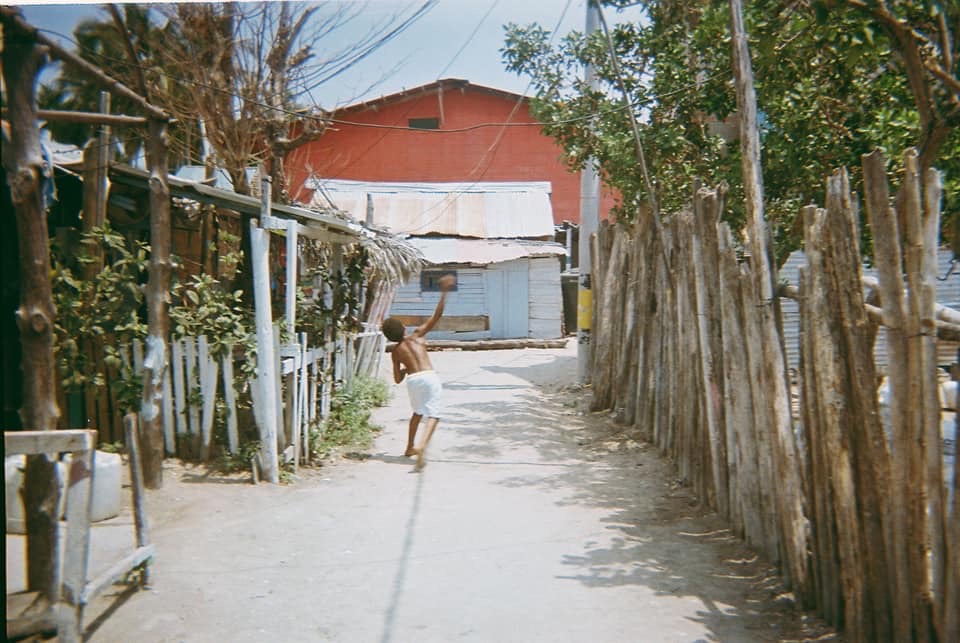
13) Isla Mucura to Cali
14) cali to popayán, south america 6 month-itinerary: month 3, ecuador, 15) border crossing 🚌 popayán to mompiche, ecuador ⭐.
16) Mompiche to Cuenca
17) Cuenca to Vilcabamba
South America 6 month-itinerary: month 4, Peru
18) border crossing 🚌 loja to huanchaco, peru ⭐.
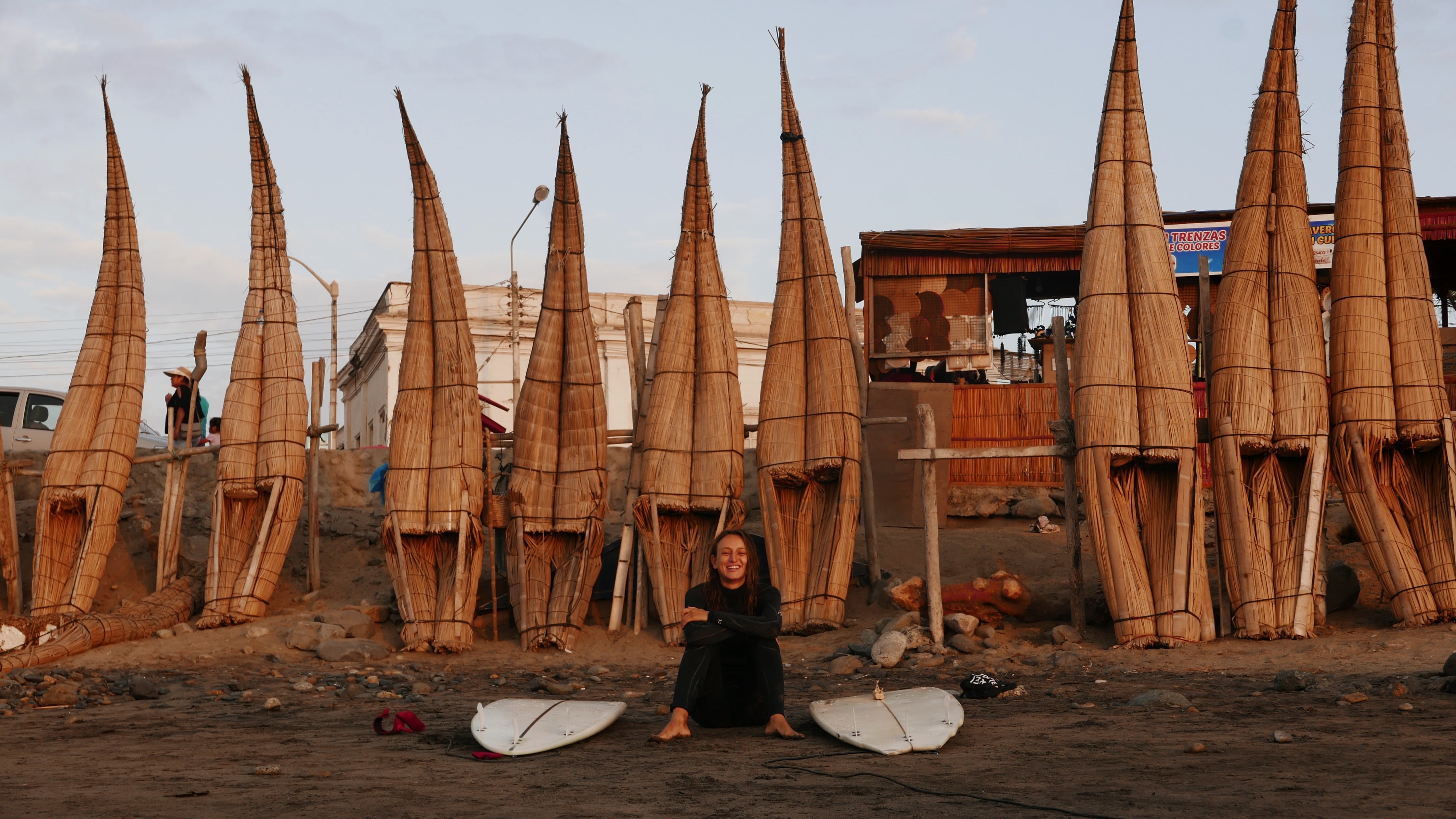
19) Huanchaco to Huaraz ⭐
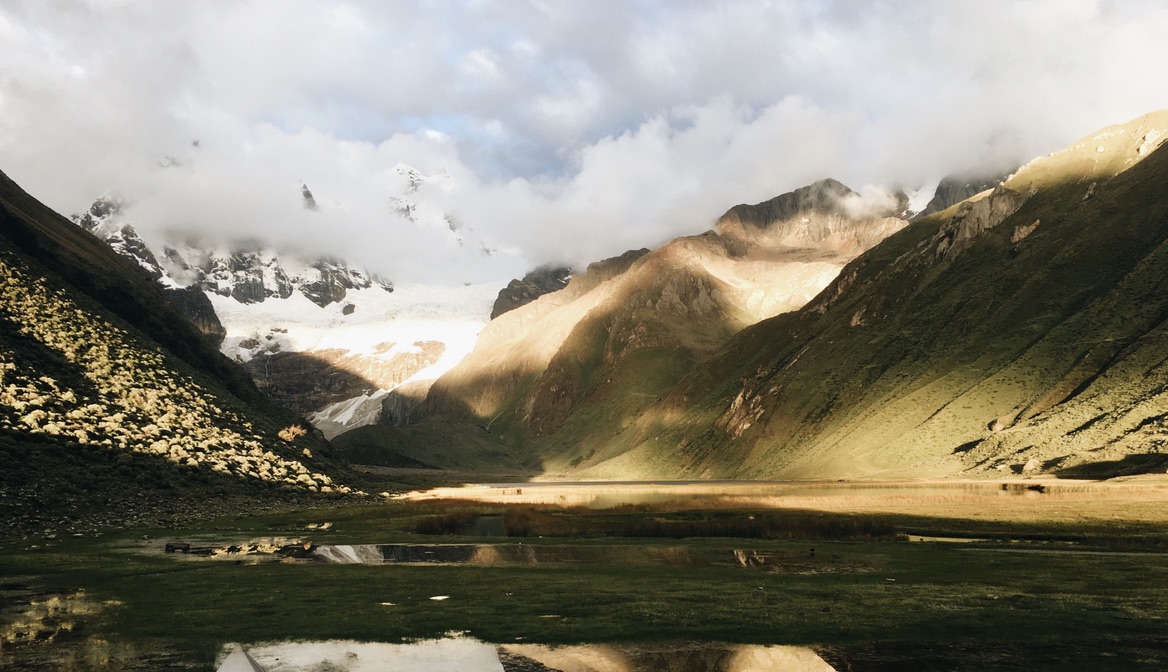
20) Huaraz to Lima ⭐
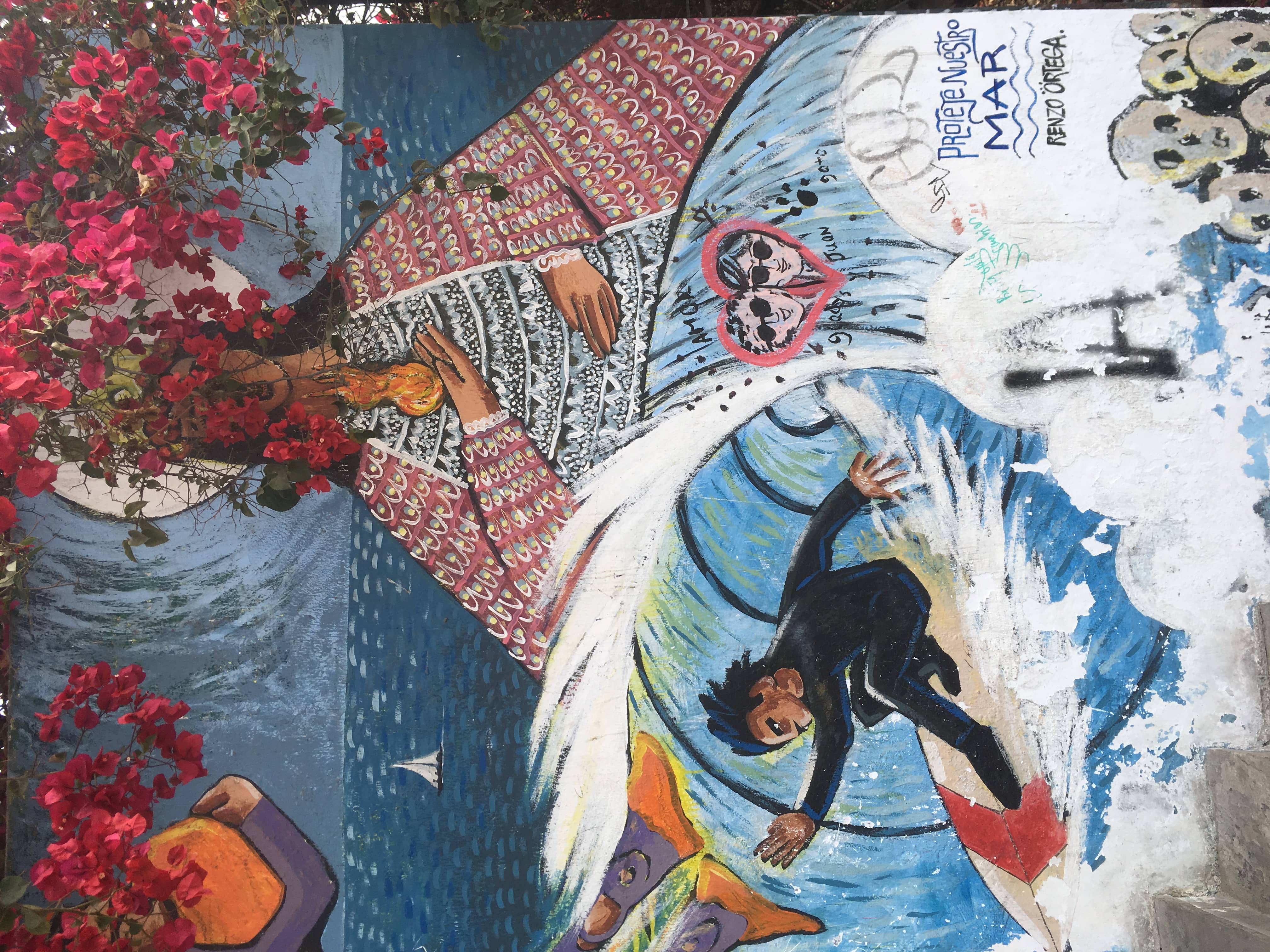
21) Lima to Cusco ⭐
22) cusco to arequipa.

South America 6-month itinerary: months 5, Bolivia & Argentina
23) border crossing 🚌 arequipa to la paz, bolivia, 24) la paz to sucre, 25) sucre to tupiza, 26) tupiza to salar d’uyuni / sur lipez, © maylis moubarak, 27) border crossing 🚌 tupiza to humahuaca, argentina, 28) humahuaca to iruya, 29) iruya to tilcara, 30) tilcara to salta, 31) salta to cafayate/angastaco, 32) cafayate to salinas grandes, 33) cafayate to buenos aires, south america 6 month itinerary: month 6, brazil, 34) border crossing 🚌 buenos aires to são paolo, 35) são paolo to ihla grande, 36) ihla grande to paraty & paraty mirim ⭐, 37) paraty to ubatuba ⭐.
38) Ubatuba to Rio de Janeiro
39) rio de janeiro to são paolo.
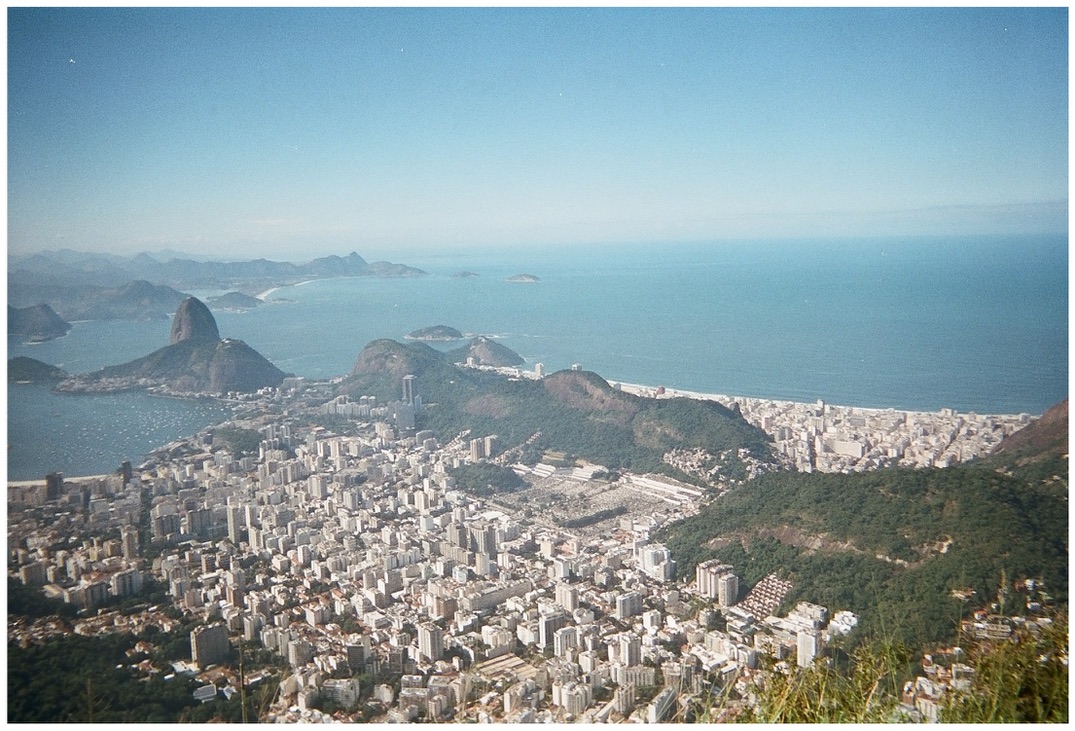
40) São Paolo to Paris
Surf & trek 6-month south america itinerary map.
6-month South America Itinerary Weather Table: January-July
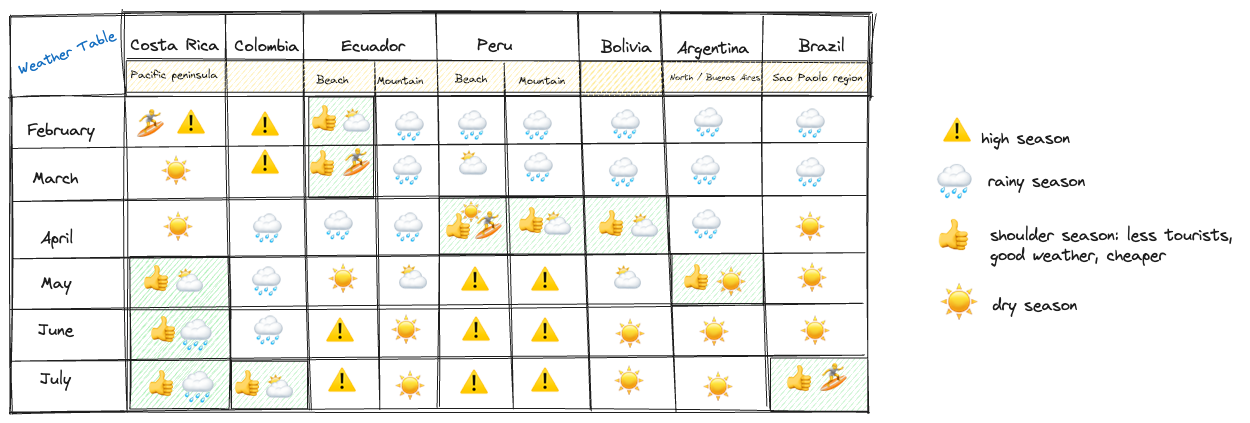
- What to pack for a 6-month backpacking trip in South America
- How to plan a budget-friendly backpacking trip (with a free budget worksheet template)
- Wellbeing on the road: 10 mental health tips for solo backpackers
- The all-in-one backpacking trip planner (free!)
An immersive travel log for outdoor enthusiasts seeking a sweet digital escape.

Look The World In The Eye

6 Month Backpacking South America Itinerary
We started in Chile, headed east to Brazil and made our way north via Argentina, Bolivia, Peru, Ecuador and Colombia before heading into Central America via Jamaica and eventually Mexico, Cuba and the USA. This 6+ Month Itinerary is for those with time up their sleeves! It involves plenty of long bus trips and a couple of days per place.

- Che Lagarto Ipanema
- Christ the Redeemer & Corcovado Mountain
- Sugarloaf Mountain (go in late afternoon to take in the view and then watch the beautiful sunset!)
- Ipanema Beach
- Copacabana Beach
- Sunset at Aproadar Rocks
- Football match at the Maracana
- Chinese Viewpoint (hike up and down!)
- Caprinha Cocktails!
- Kilogramas (pay per weight restaurants)

- Lagoon Backpackers in Buzios & an AirBnb in Arraial do Cabo
- In Arraial h ike to Praia do Atalaia, it’s beautiful
- In Buzios visit the Bridget Bardot Boardwalk
- Caipirinha Cocktails!

- Books Hostel
- Lapa Street Party (Friday night!) underneath the Arches
- NOT the tequila being handed out at the street party!

- Che Lagarto
- Hike to Lopes Mendes Beach
- Day trip with Jeronimo’s Tours
- Circuit do Abraao
- Hike to waterfall (Cachoeira) from Circuit do Abraao

- Che Lagarto
- Cachadaço Natural Pools
- Pedra que Engole “The rock that swallows” (ask at your hostel!)

- Explore town, beautiful cobblestone streets with brightly coloured windows and doors
- Paratiana Cachaca distillery
- Pedra Branca waterfalls
- Toboga – big slippery rock you can slide down!
- Poco do Tarzan (a 12 m jump rock, do it!)

- Barra Surf Hostel
- Visit the turtle sanctuary
- Sand-boarding
- & Much More

- Iguazu Falls (Brazilian side)
- Parque Das Aves (Bird Park) Note.. I didn’t really like it here, although it is a bird sanctuary (or at least started as one) it seemed to much like a zoo for me, lots of animals with not enough room to fly .
Iguaza Falls

- Garden Stone Hostel
- Visit the Falls (obviously)
- Fast Boat Trip under the falls!

- Milhouse Avenue Hostel
- Buenos Aires Free Walking Tour.
- Visit the colourful neighbourhood of La Boca
- Go to a football match (if in season)
- Visit Boca Jnr Stadium
- San Telmo Markets (Sunday)
- Explore Palermo neighburhood
- Visit La Cabrera (if you’re a meat eater)
- Visit Cafe Tortoni (BA’s oldest cafe)

- Lagares Hostel
- Bus wine tour
- Rafting Tour
- Hire Bikes from Mr Hugo and ride around visiting vineyards!

- 7 Duendes
- Go horse riding and BBQing with Sayta Cabalgatas
- Hike up to Cerro San Bernardo
- Go to the Museum to see remains of Incan children sacrifices
CHILE (again)

- Hostel Talar
- Tatio Geysers, Machuga & Thermal Pools
- Moon Valley & Death Valley
SALAR DE UYUNI 3D/2N 4WD TRIP CHILE → BOLIVIA

- Loki Hostel
- Witches Market
- Mountain bike “Death Road”
- Learn Spanish at Pico Verde
- Explore the streets and markets

- Mashaquipe Eco Resort
- Play with monkeys
- Search for Anacondas
- Swim with Pink Dolphins
- Catch (& release) Pirahnas
- Spot Caiman (Crocs!)

- Hostal Las Brisas
- Hike to Horca del Inca
- Hike to Cerro Calvario

- Hostal Del Sol
- Hike from one end of the Island to the other (and back)
- Swim in the lake!
- Enjoy one of the most beautiful places in all of SA!

- San Antonio Suites
- Visit Uros Floating Islands
- Visit Taquile Island

- Mercarderes Backpackers
- City Walking Tour
- Hike the Colca Canyon

- Milhouse Hostel
- Sacred Valley (visit ruins in a day trip or go and stay in villages)
- Hike to Saqsaywaman Ruins
- Free walking tours!
- Chocolate Museum
- The Inca Trail to Machu Picchu (or another trek similar, i.e. The Salkantay) Check out our post on The Inca Trail & Machu Picchu

- Carola del Sur
- Hike the sand dunes
- Sandbar the dunes

- Walk (or run) the cliffs!
- Visit the cat park
- Free walking tours
- Swim at the rocky and cold beach. Still a swim!
- Not sure, cities aren’t our thing and we really only had one day here.

- Hike up to the Church
- Eat ceviche!

- Kontiki Bungalows

Note: This was a necessary stop for our Galapagos trip, definitely not a must see destination for us.
- DreamKapture Hostel
- Visit Malecón 2000
- Visit Cerro Santa Ana

NB: We wrote a HUGE post on how to do the Galapagos Islands extremely cheaply. For more info on that check it out HERE
- 3 different Islands
- See Wildlife
- Everything.. READ OUR POST!

- Hostal Sole Mare
- Spanish Lessons with Miguel!
- Hike towards Olan

- Alternative Hostel
- Explore the town, nice colonial buildings
- Visit Cajas National Park

- Hostel Oasis
- Ride a bike down Chimborazo Volcano!

- Hostel Princesa Maria
- Casa del Arbol
- Visit Virgen Cascada (waterfalls)
- See Diablo Waterfall

- Hostel Tiana
- Hike the Quilotoa Loop!
- Hike up Cotopaxi Volcano
- Ride a bike down Cotopaxi Volcano

- Swim if you dare!

- Secret Garden Hostel
- Discovery Hostel
- Walk around Old Town
- Mitad del Mundo

- Hostel G…. (can’t read Sean’s writing!)
- Visit the markets
- Hike to lookout Point

- Bakano Hostal
- Graffiti Tour
- Mikes Bogota Bike Tours!
- Hike up Monserrate
- Visit Gold Museum
- Drink Chicha

- Black Sheep Hostal
- Real City Tours
- Pablo Escobar Tour

- La Florestra
- Coffee tour @ Finca El Ocaso
- Valle Del Cocora!
- Hike to Santa Rita Waterfalls
- Coffee Info tour at Casa La Eliana
- Coffee at Jesus Martin

We wouldn’t really recommend Santa Marta to spend time other than as a gateway to Minca & Tayrona!
- Go to Minca
- Go to Tayrona
- Go To Costeño Beach
- Go To Palomino

- Coffee Farm tour
- See hummingbirds

- Dreamer Hostel
- Get tubes & float down the river
- Not much else

Share this:
Similar posts, machu picchu and the inca trail booked, our essential packing list.

6+ Week Central America Itinerary
Cooking classes at the choco museum, cusco, mashaquipe 3 day pampas eco tour, foz do iguaçu, more than meets the eye., leave a reply cancel reply.
Your email address will not be published. Required fields are marked *
Save my name, email, and website in this browser for the next time I comment.
- Work With Me
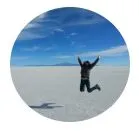
- Central America
- South America
- Solo Travel
- Budget Travel
- Digital Nomad Life
- Work Exchange
- Foodie Experiences
- Responsible Travel
- Winter Travel
- Backpacker Accommodation
- Accommodation In the UK
- Hostel Tips
- Hostel Packing List
- Work as a Hostel Volunteer
- Work in Exchange for Accommodation
- Travel Websites to Book Your Trip
- Travel Planning Checklist
- How to Travel for Free
- How to Save Money While Travelling
- Carry On Packing List
- Long Haul Flight Essentials
- Campervan Packing List
- Flight Tips
- Solo Travel Tips
- Accommodation
- Travel Insurance
- Packing Lists
- Eco-Friendly Travel Products
- Carry On Backpacks
- Backpack Essentials
- Filter Water Bottles
- Camera Gear
- Camping Gear
- Gifts for Travel Lovers
- Backpacking Gifts
- Hiking Gifts
- Campervan Gifts
- Beach Gifts
- Personalised Travel Gifts
- Small Travel Gifts
- World Map Gifts
- Gift Experiences
- Privacy Policy
Backpacking South America: A Backpacker’s Guide to South America on a Budget
Backpacking South America was my dream trip. So many beautiful places, delicious cuisines, friendly people and some of the best parties in the world. It was my first proper backpacking adventure, and I jumped right in at the deep end when my plane landed in Bolivia. It took me a few days to find my feet, then it didn’t take long at all for me to fall in love with this incredible continent. What began as a once-in-a-lifetime journey triggered a desire in me to keep travelling for years to come and led to starting this travel blog. A South America backpacker’s love story in every sense of the word! Here you’ll find tips on backpacking in South America, where to go and when, how much money you’ll need in your backpacking South America budget and much more. Leave any preconceived ideas and judgements at home, and embrace the sights, smells and sounds of South America!
This website contains sponsored and affiliate links. If you click through the links on this page and make a purchase, I may earn a small commission. As an Amazon Associate I earn from qualifying purchases. Thank you for your support. [Learn more]
Skip ahead to read articles on specific countries in South America
Is South America Safe?
Many people panic when they think about safety in South America and assume that you’re going to be killed the second you set foot on the continent, so I want to address this question right off the bat. I didn’t find South America any more dangerous than anywhere else in the world. Big cities like Sao Paulo, Bogota, Lima, are of course riskier than the towns and villages, which is true of any big city anywhere.
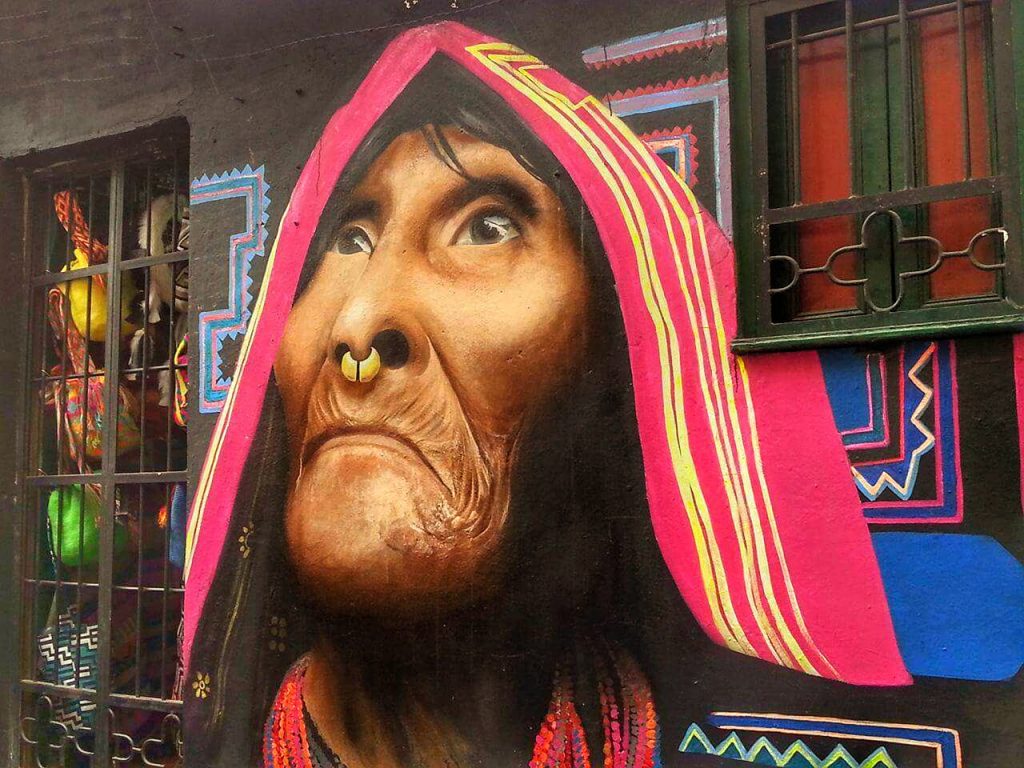
The biggest difference for me was just being aware of my surroundings. Don’t walk the streets alone at night, or if you do take an Uber or a registered taxi. Be aware of pickpockets, travel during the day instead of taking night buses, and take the same precautions that you do anywhere in the world – don’t flash a lot of cash or expensive jewellery, and if you feel unsafe, seek help immediately or get out of there.
I travelled on my own for 10 months in South America and the worst thing that happened was someone breaking into my hostel locker. I found South Americans to be friendly, warm, welcoming and extremely helpful if I ever needed anything and can’t wait to go back to South America to explore more!

Have you got Travel Insurance?
- Unfortunately, things can and do go wrong when you travel. I never leave home without travel insurance, so consider getting insurance for your trip to cover things like adventure sports and activities as well as emergency medical, lost luggage, stolen items, trip cancellation and more.
- Get a quote for your trip from True Traveller if you're based in the UK, or World Nomads or SafetyWing which both offer travel insurance for backpackers and long-term travellers. Alternatively, use a comparison site like Travel Insurance Master to find the best cover for you.
The Safest Countries in South America
If you don’t believe what I’ve just said, according to the Global Peace Index , Uruguay is rated at the 47th most peaceful country in the world, and the most peaceful country in South America, with Chile close behind at 47.
To add some context to those rankings, Iceland, New Zealand and Denmark top the list while the UK is ranked at 33, France is 55 and the USA at 122.
Argentina is 68, Paraguay 75, Peru 86 and Ecuador 88. Bolivia is placed at 105, Brazil 128. Colombia is 144 and Venezuela 152. I’m not sure how much faith I place in these kinds of measuring systems, but the point is though that you are no less safe travelling in South America than you are in the USA or many other countries in the world.
Travelling South America Alone
Backpacking through South America alone is not as scary as people seem to think it is. I travelled solo in South America for 10 months and didn’t feel unsafe at all. It helps if you can speak some Spanish (or Portuguese in Brazil), but I found that most people were eager to help me and felt somehow responsible for this blonde gringa (foreigner) wandering around by herself!
There are lots of backpackers who solo travel in South America, so if you stay in hostels you are bound to meet people to travel with if you want to.
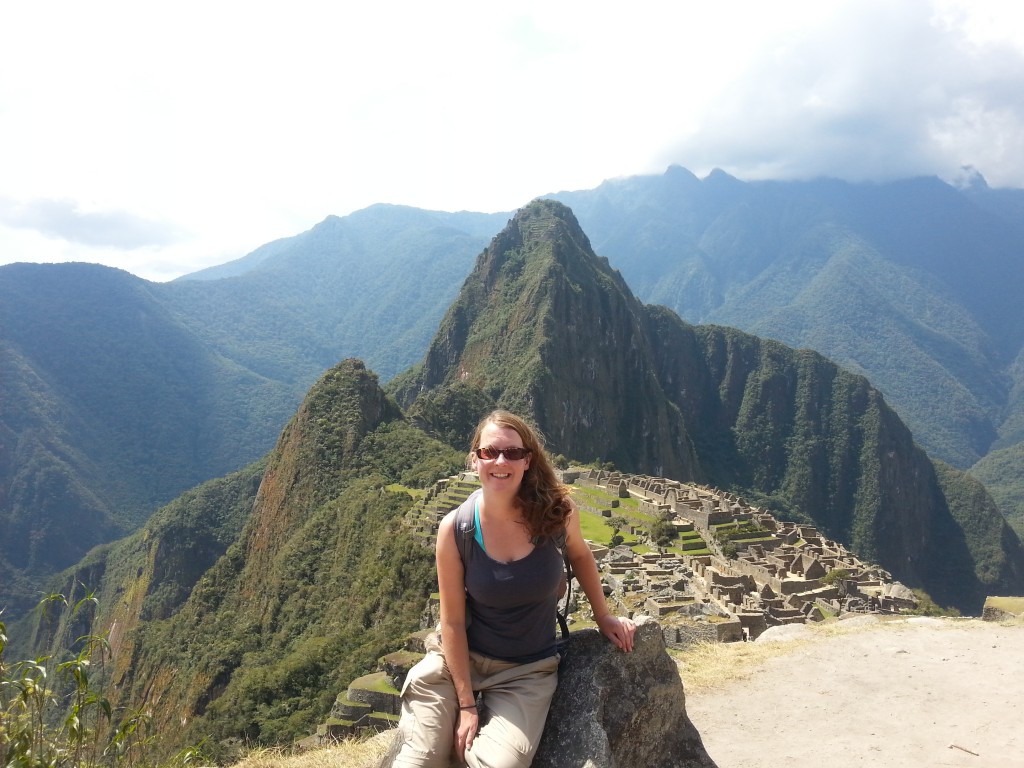
Backpacking South America Budget
The costs of travelling in South America vary greatly depending on the countries you choose to visit, and the economic situation is like at the time. For example, Brazil was quite expensive when I visited in 2016 due to the relatively strong Brazilian real. However, now the exchange rate is much better, it makes it a cheaper country to visit.
Generally speaking though, Chile, Argentina and Peru are the most expensive countries to visit in South America, then Ecuador, Brazil and Colombia. Bolivia and Paraguay are cheaper to visit.
I’d say that a bed in a hostel dorm costs an average of $10 per night, cheaper in rural areas and higher in peak holiday times or popular city destinations. Couchsurfing is also an option in most places if you prefer to do that, but make sure you read reviews carefully.
For food, you can get a good meal for a few dollars, and buying fruit and veg from the markets or street vendors can save you a lot of money. You can get by in cheaper countries on $10 per day but bear in mind that tourist-style restaurants and drinking alcohol will increase your budget a lot.

For transport, bus travel is very cheap, you only need to spend a couple of dollars to get from city to city in most countries, but long distance, luxury buses, of course, cost more.
On a shoestring budget, you can get by on $30 a day. $50 a day is much more generous and can include some tours, better quality meals and some private rooms instead of dorms.
Unique destinations and experiences such as the Galapagos Islands in Ecuador or hiking to Machu Picchu in Peru will take a big chunk of your backpacking South America budget, but these are once-in-a-lifetime experiences which you should definitely budget for if you can.
Regarding currency in South America, it is a good idea to have a stash of US dollars on you, which is the easiest currency to exchange. Be wary of money changers on the street and at borders, but sometimes it is easiest to get rid of your excess currency instead of taking it with you – I had a hell of a time trying to get rid of my Paraguayan currency once I’d left the country!
The Cheapest Place to Fly to in South America

A lot of South American capital cities have direct flights from Europe, particularly from Spain or Portugal, and major hubs like London, Amsterdam and Frankfurt. From the US, Spirit Airlines and Viva Colombia often have good value flights into South America.
Use a flight search engine like Skyscanner to search for the best flights from where you are. Be flexible on dates, days of the week, and airports to see if you can find a great deal.
Bogota is the hub for Avianca which often has decent fares, although I personally chose to fly into Santa Cruz in Bolivia with Air Europa from Madrid. That was partly due to price, and partly for logistical reasons so I could acclimatize to the altitude in Bolivia gradually instead of flying directly into La Paz. Check Skyscanner for the best flight deals here, or download the Skyscanner app .
YOU MAY ALSO LIKE: How to Find the Best Flight Deals with Skyscanner
Amazing Things to do in South America
Discovering ancient ruins.
Peru is THE place to do in South America if you are interested in pre-Columbian cultures in South America. The whole of the Andean region is littered with stunning Inca ruins, in particular, the Sacred Valley and Machu Picchu of course.
But Peru isn’t the only country where you will find the remnants of indigenous settlements, Ecuador and Bolivia have some excellent archaeological sites, as does Colombia where the famous ‘ Lost City’ Ciudad Perdida of the Teyuna people remained hidden in the jungle for centuries, and Easter Island in Chile.

Hiking in South America
The mountains, volcanoes and canyons in South America mean the continent is a hiker’s dream. Hiking Patagonia, the Andes in Peru, Ecuador, Colombia and Bolivia, and jungle treks to hidden cities and lost worlds are all incredible adventures.
READ MORE: The Best Hikes in Peru
Exploring the Amazon
The largest rainforest in the world, stretches across a large proportion of South America, in Brazil, Colombia, Ecuador, Peru and Bolivia. Take a slow boat down the river from Iquitos or Manaus to the mouth of the river at Belem or take an amazing Amazon tour from one of the many launchpads into this incredible forest to discover a haven for rare flora and fauna which is sadly under threat from deforestation and human interference. Visit responsibly with a reputable tour company, and avoid any activities where touching the animals is encouraged.

Nature Spotting
The flora and fauna in South America are as diverse as the continent itself. Aside from the Amazon, other incredible wildlife hotspots include the Pantanal in Brazil and Paraguay, and of course, the Galapagos Islands in Ecuador where endemic species are found nowhere else on Earth.
Partying All Night (and Day!)
South America loves to party! Carnival in February is the biggest festival in South America, celebrated throughout the continent from Rio in Brazil to Barranquilla in Colombia. Expect more festivals and colourful parades for other religious holidays such as Easter, and on the Independence Days of each country.
Eating and Drinking in South America
Food and drink are one of life’s great pleasures for me, and foodies will not be disappointed in South America. Gorge on seafood around the coasts, beef in Argentina, ceviche in Peru and Chile, arepas in Colombia and feijoada in Brazil, and enjoy sampling the local specialities all over the continent. You won’t be short of beverages either, South American wines from Chile and Argentina are some of the best in the world, and you haven’t lived until you’ve had a caipirinha in Brazil or a Pisco Sour in Peru.
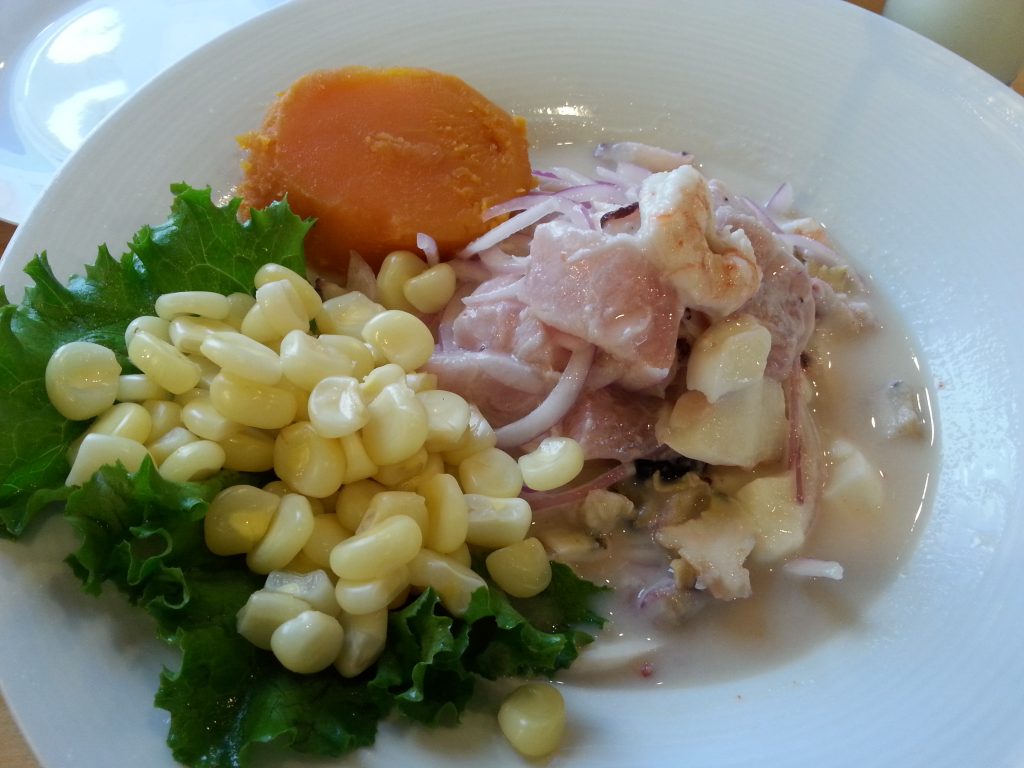
The Best Time to go to South America
As South America is so vast and varied, there is no set ‘best’ time to visit South America, it really depends on where you are going and what you want to do there.
For the southern countries of Chile and Argentina, if you are heading to Patagonia avoid the winter months of June, July and August as these months are simply too cold to get very far south, although skiing is great this time of year.
Patagonia is best visited from December to March, although the peak times also bring more visitors and higher prices, so aim for shoulder seasons if you can. The more northern regions are fine during this time though, Buenos Aires and Iguazu falls will keep you busy.
The summer season from December to March tends to be busier everywhere in South America, especially around Christmas, New Year and Carnival, but there is plenty going on and a great atmosphere which can be worth the higher prices. Just make sure you book your accommodation in advance for the peak dates.
May to September is the dry season in the Andes, so is generally the best time to go to Machu Picchu, and for trekking in the Andean regions of Peru, Bolivia and Ecuador. Although again, peak times mean peak prices too; in April and October, you’re likely to get fewer tourists and better prices.
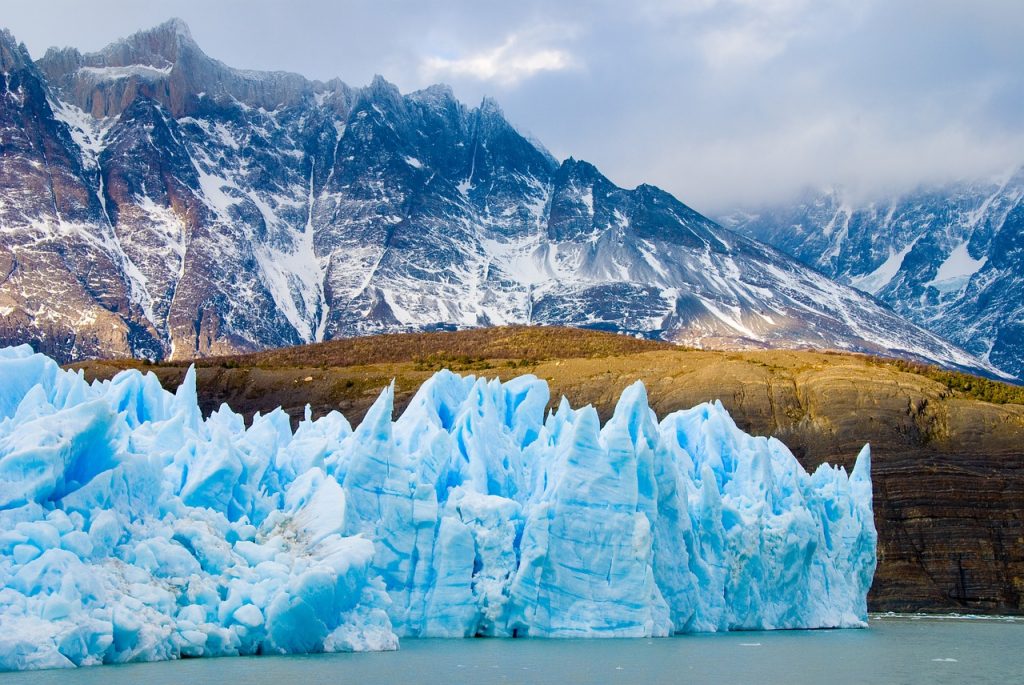
The Best Places to Visit in South America
Given the size and variety in the continent, trying to decide the best places to travel in South America is incredibly difficult, and will vary greatly depending on what you like to do and what you are interested in seeing and doing. When you are deciding where to go in South America you should also consider the time of year you are visiting.
Travelling to Patagonia in the winter for example (July and August) will be very cold, and difficult to get where you want to go. The rainy season also varies depending on the country and the region of the country, so take that into account as well when you are planning your South America backpacking trip.
The Best South American Countries to Visit
Each country in South America has its own charm, attractions and incredible things to do, although admittedly some countries are more popular than others. My personal favourite country in South America was Colombia, closely followed by Peru and Bolivia, but it really depends on what you are looking for. I’ve briefly summarised each country, so you can decide on the best South American countries to visit for your tastes!

Backpacking Argentina
Argentina was expensive to visit while I was in South America, although recent currency fluctuations have made it much more affordable. Argentineans often see themselves as more European than Latin American, and the Italian influences in cities like Buenos Aires are obvious, with a lot of excellent pizza and pasta restaurants! Dining in Argentina is a pleasure – if you like red wine and red meat you’ll be in heaven. Don’t miss the empanadas!
Learn to tango in Buenos Aires, admire the skills of the gauchos (cowboys) in the La Pampa, hike glaciers in Patagonia and marvel at Iguazu Falls in the north. No matter what you do in Argentina you are bound to enjoy it!
READ MORE ABOUT BACKPACKING ARGENTINA
Backpacking Bolivia
In my opinion, Bolivia is the most underrated country in South America. The landscape is stunning, with mountains, volcanoes, salt flats, deserts, jungle, cloud forest, lakes and more, the people are friendly with a fascinating culture and it is cheap.
Ok so the food isn’t amazing, the infrastructure is lacking, and the roads are often horribly maintained, but that was what I loved about Bolivia, that it isn’t just a sterile tourist destination, here what you see is what you get. Bolivia is a perfect destination for adventure lovers, with the Salar de Uyuni, Death Road, hiking in the mountains and the Amazon rainforest to discover. Don’t make the same mistake I did, make sure you visit Bolivia!
READ MORE ABOUT BACKPACKING BOLIVIA

Backpacking Brazil
Brazil is vast. It is the largest country in Latin America and the fifth largest in the world. A large proportion of that is made up of the magnificent Amazon Rainforest, so if you are looking for an Amazon adventure, it doesn’t get much better than taking a slow boat down the river through Brazil.
The beaches in Brazil are legendary, and the Brazilian love for partying even more so. Brazilians are warm and open, and a lot of fun, so if you are looking to kick back, relax and party then Brazil has got to be it. Carnival in February is a riot of colour, music and dancing, with street parties, fancy dress and parades. Don’t miss Rio de Janeiro or the incredible Iguaçu Falls.
READ MORE ABOUT BACKPACKING BRAZIL
Backpacking Colombia
Colombia was my favourite country in South America. Although it is still plagued with a bad reputation, Colombia is truly magical. There are some areas which still aren’t advisable to visit, but stick to the popular regions around Medellin, Bogota, Santander, the Coffee region and the Caribbean coast and you will see why I fell in love with Colombia.
Discover mystical statues left by a culture that disappeared without a trace in San Agustín, take salsa lessons in Cali, see some of the highest palm trees in the world in the stunning Cocora Valley, learn why Medellin has transformed itself from one of the most dangerous countries in the world into a buzzing cultural centre, take a market tour in Bogota and hike to lost cities through the jungle in Santa Marta. There are too many highlights of Colombia to mention here, so read more in my Backpacking Colombia guide.
READ MORE ABOUT BACKPACKING COLOMBIA

Backpacking Chile
Chile was a huge gap in my backpacking South America trip, I didn’t have time to visit this beautiful long country which is one of my great regrets. I would love to go and experience Chile for myself, the hiking, wine tastings, volcanos and deserts, vast coastline and the magical island of Rapa Nui (Easter Island) are all firmly on my bucket list.
Backpacking Ecuador
One of the smaller countries in South America, Ecuador certainly packs a punch. It is one of the most biodiverse countries on the planet and its small size means you can see a lot in a relatively short time. Hike volcanoes at Cotopaxi National Park, zipline through the Mindo Cloud Forest, shop at one of the best markets in South America at Otavalo and cycle the city streets of Quito on a Sunday when traffic is banned.
The Galapagos Islands deserve a special mention here, these beautiful and fragile islands are unique and home to creatures that do not live anywhere else in the world. Hang out on the beach with sealions, see giant tortoises in the wild and snorkel with marine iguanas, sea turtles and penguins. But do it responsibly. Tourism on the Galapagos Islands is taking its toll on the wildlife, so do your research before you go to make sure you do not add to the damage we are inflicting on this delicate ecosystem.
READ MORE ABOUT BACKPACKING ECUADOR

Backpacking Paraguay
Despite its central location, many South America backpackers skip Paraguay or pass through it simply to get to the other side. There aren’t any major tourist attractions in Paraguay its true, but if you’re backpacking South America for a long period, then why not spend a week here to see what the lack of fuss is about?
On my short trip to Paraguay, I visited the missions in the south of the country. I would have liked to visit the Pantanal in Paraguay, but unfortunately, as a solo traveller, it was prohibitively expensive. If you are travelling in a group, it is much easier to get good value tours and excursions in Paraguay.
Backpacking Peru
Peru is probably the most popular country to visit in South America, thanks to the iconic Inca citadel, Machu Picchu. This magnificent city hidden high in the mountains is touristy, yet it is popular for good reason and is still the highlight of my travels in South America. Watching the sunrise over the mountains and the golden rays touch the ruins was an incredible experience.
However, Peru is much more than Machu Picchu. There are plenty of other pre-Columbian civilisations which left their mark in Peru, from the mysterious Nazca Lines to the ruins of Chan Chan and Chachapoyas, history buffs will be fascinated by Peru.
Foodies too will be delighted here, Peruvian cuisine is exceptional, and Lima has some of the best restaurants in the world to delight your taste buds. Thanks to the Andes running like a spine through the country, hiking in Peru is a varied challenge, from day hikes to turquoise lakes to multi-day treks through canyons and across mountains – come prepared to be wowed!
READ MORE ABOUT BACKPACKING PERU
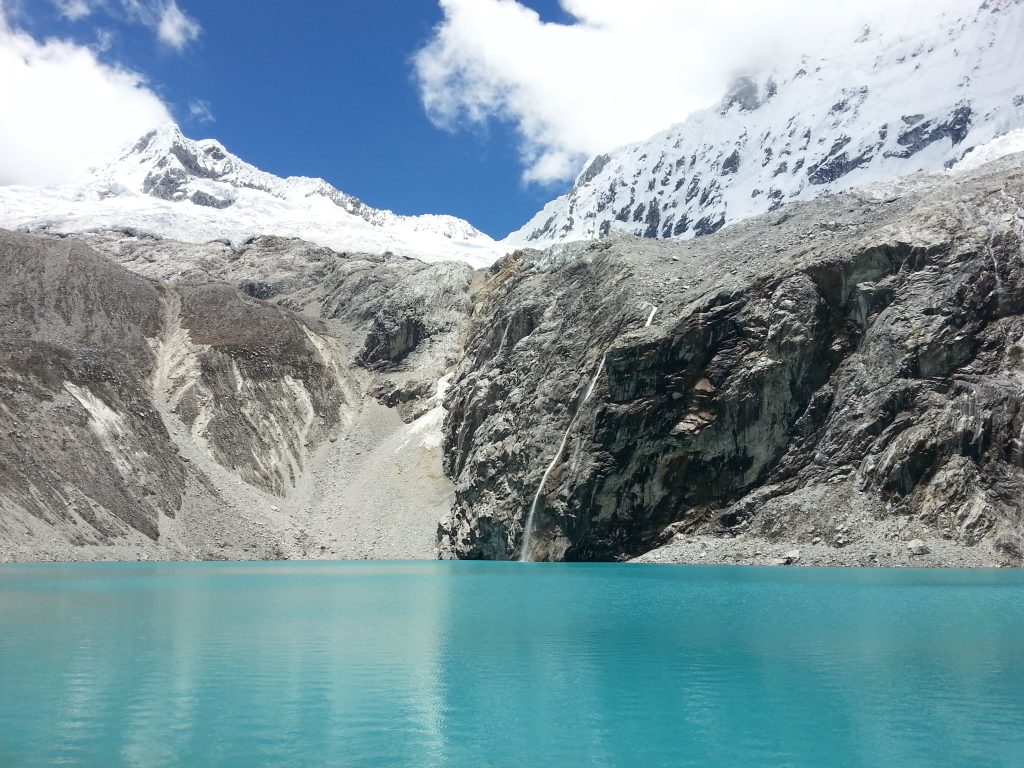
Backpacking Suriname & The Guianas
I’ve included these three together, although they are separate countries in their own right, they are not on the typical South America backpacking route. Guyana, Suriname, and French Guiana are the smallest in South America, tucked away on the northeast coast, north of Brazil and to the east of Venezuela. Certainly off the beaten track, backpackers here may struggle to get around easily, but you’ll certainly have an adventure!
Backpacking Uruguay
This small country on the east coast of South America is a great stop off between Brazil and Argentina. Come here for surfing or chilling on the beach of Punta del Diablo, or to stroll around the beautiful colonial towns like the UNESCO listed Colonia del Sacramento and Montevideo’s old town quarter. If you want to get away from it all, seek out the life of the Gauchos and head off for a day’s horse-riding – Argentina isn’t the only place in South America where you can find cowboys.

Backpacking Venezuela
Unfortunately, Venezuela is off most South America travel itineraries due to the serious safety concerns here. Caracas is one of the most dangerous cities in the world, and despite everything I said above about South America being safe, Venezuela is the exception that proves the rule. I did go to Venezuela for a couple of weeks, to see a friend in Caracas then to go to the incredible Angel Falls, the Orinoco River Delta and to climb Mount Roraima.
These adventures were some of the best I have had in South America, but I simply can’t recommend backpacking Venezuela in good conscience. While other bloggers might wax lyrical about how cheap Venezuela is, Venezuelans have been fleeing the country in their thousands due to food shortages, no medical treatment and violence. Take a look at this article I wrote about safety in Venezuela, and my other Venezuela articles here.
READ MORE ABOUT BACKPACKING VENEZUELA
Suggested South America Backpacking Route
Logistically, travelling around the continent in a roughly circular route makes the most sense, although you’ll find that your plans will change as you meet people along the way who recommend different places to visit. The more time you have, the more flexible you can be, so I would advise you to have a rough plan in mind but expect it to change.

Backpacking South America Itinerary
How to come up with a travel itinerary for a whole continent? It’s not easy! Many backpackers make the mistake of trying to fit too much in and rushing around South America too quickly without being able to appreciate where they are.
I spent 10 months backpacking South America and didn’t even visit Chile, Uruguay, the Guianas or most of Argentina. My best piece of advice would be to take your time and choose your destination carefully. Don’t try to cram it all in two weeks. You can always come back another time! Distances in South America or vast, so if you intend to see a lot in a short time then you will need to take some flights.
2 Weeks in South America
This is really the minimum length of time you will need to see a few of the highlights of South America, in one or two countries. Pick your top country, and spend the two weeks there, or split your time between a maximum of two countries that are close together.

You could spend 2 weeks in Colombia, with a week on the Caribbean coast, a couple of days in Bogota, Medellin and the Coffee Region around Salento. Alternatively, head to Peru for Machu Picchu, Lake Titicaca and the Salt Flats in Bolivia (but make sure you take time to acclimatize!). You could also pick Brazil, for 2 weeks of glorious beaches, partying in Rio and the Iguazu Falls. How about Chile for 2 weeks around Santiago, wine country and Easter Island? Or Ecuador and the Galapagos Islands?
Backpacking South America Itinerary: 1 Month
With a month you can do a lot more in South America, although you could easily spend a whole month exploring one country. Still try to choose countries which are next to each other to allow easier transport options, and remember to not cram your itinerary too much – a month of constant travel is exhausting.
Example Itinerary for Peru, Bolivia and Chile or Argentina
Fly into Lima and spend a couple of days in the capital eating the delicious food and getting used to the South American way of life. Head south to Huacachina, Nazca and Arequipa before going to Cusco for Machu Picchu. Head to Lake Titicaca, La Paz and take a Salar de Uyuni salt flats tour, ending in San Pedro de Atacama. From there, head to Santiago and Valparaíso. Alternatively, finish your Uyuni tour in Tupiza, and head south to Argentina through Salta, ending in Buenos Aires.
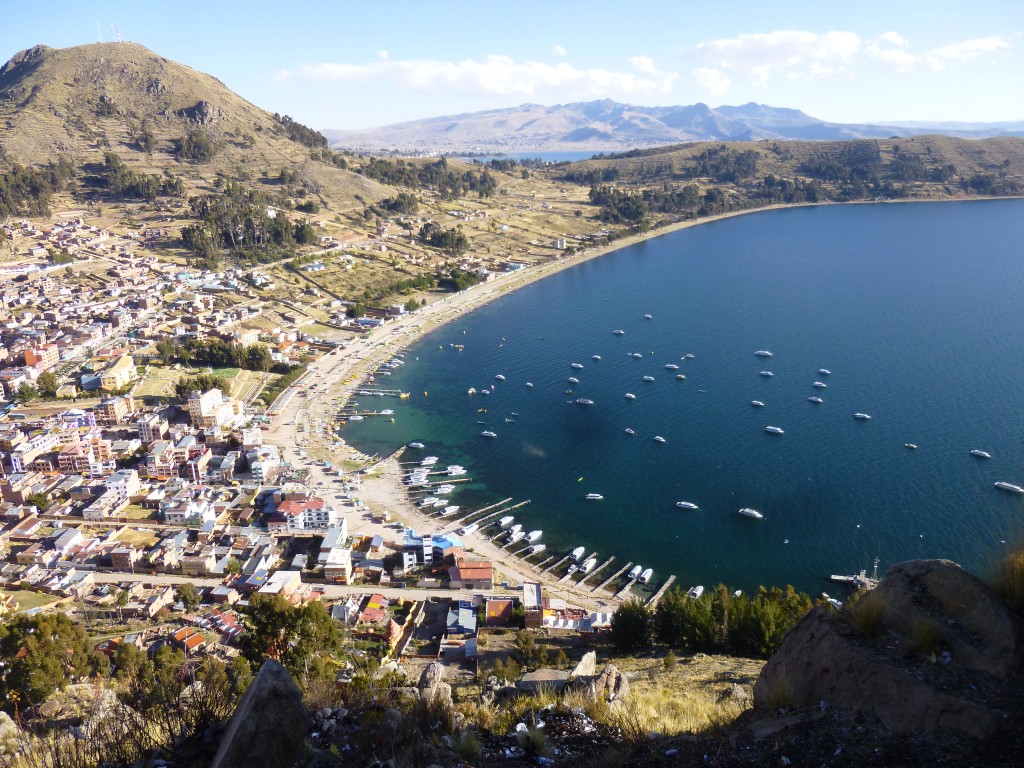
South America Itinerary: 3 Months
If you have 3 months in South America you have more time to explore a few countries in depth, or whizz around and see the highlights of several. Make sure you have time to enjoy your travels and take time to avoid backpacker burnout!
You could start in Brazil and travel south to Uruguay, Argentina and Chile, taking in Iguazu Falls, Buenos Aires and Patagonia as well as wine country and Easter Island in Chile. Ecuador, Peru and Bolivia are well connected and easy to travel through together, or start in Colombia and work your way south. For a real adventure, visit the Amazon in Peru or Colombia and take a boat down the river to Brazil, then travel along the beautiful Brazil coastline. The possibilities are vast, and there are no bad choices here!
South America Itinerary 3 – 6 Months + in South America
If you are able to spend 3-6 months or more in South America this is a good amount of time to allow you to get to know a lot of this vast continent.
Although 6 months seems like a long time, I assure you, it will fly by, although you should be able to see most of what you want. Aim to spend about a month in each country if you want to visit most of them, or really explore a few countries, visiting some more ‘off the beaten track’ towns and villages. With this much time, you could take some Spanish lessons or do some volunteering to help you settle into South American life. Try to take breaks to relax so you’re not constantly on the move. A week or two chilling out will be much needed I assure you!

The Best Way to Travel South America
The best way of getting around South America depends largely on your budget and how much time you have.
Buses in South America
If you have more time, then bus travel in South America is cheap, relatively comfortable (most of the time), and allows you to see much more of a country than you would if you just hopped on a plane. However, some bus journeys in South America can take days so if you are travelling long distances in a short space of time, then flights can be a better option.
READ MORE ABOUT BUSES IN SOUTH AMERICA
Flights in South America
Flying within the same country is much cheaper than flying across several countries – unfortunately, there is no equivalent of British budget airlines like Easyjet or Ryanair here. Each country has its own national airline and own budget airline, but prices increase dramatically when you leave the country.
If you plan to take a lot of flights, looking at a season ticket with one of the airlines could be a good idea, especially if you want to cover a lot of ground in a short time. Oneworld , for example, offers a ticket that allows travel around South America on American Airlines, British Airways, LAN, Qatar Airways, TAM and their affiliates.

Trains in South America
Trains are not common in South America, there are a few lines which are primarily run for tourism, such as the Nariz del Diablo Tren Ecuador route and the train to Machu Picchu from Cusco. They are more expensive than other forms of transport as they are mainly for tourists.
Driving Yourself
Overlanding in South America is a popular choice for couples and families who buy their own campervan and travel around South America at their own pace. I also met people travelling on their motorbikes, and a couple cycling around South America! Remember that you can’t drive all the way from the USA to South America without needing to put your van onto a ship between Panama and Colombia. There are no passable roads between Panama and Colombia.
South America Tours for Backpackers
If you have a higher budget and prefer to travel with the comfort and safety of an organised tour group, there are several companies that offer South America tours for backpackers. If you have never been backpacking before or are backpacking South America solo, you might consider taking the tour option, although it is much cheaper to do it yourself.
Check out companies like Intrepid Travel, Dragoman and Exodus for example trips and itineraries. When I began my epic trip backpacking around South America I booked a tour with Dragoman (a partner of Intrepid) and enjoyed it. Tours offer more support and structure than backpacking South America alone, but obviously cost a lot more, and don’t allow for variations to the itinerary. Choosing what is best for you depends on your budget and how you like to travel.
READ MORE: Dragoman Tour from La Paz to Cusco Review

Immigration & Border Control in South America
Each country in South America has its own rules and regulations regarding entry documents, vaccinations and visas, so check each individual country’s requirements before you go. Bear in mind that local people often don’t have the same border procedures that foreigners have to go through, so when you cross any border, make sure you get an exit stamp for the country you’re leaving, AND an entry stamp for your destination – you may need to ask your bus to wait for you.
READ MORE ABOUT CROSSING BORDERS IN SOUTH AMERICA
British travellers should use this website for up to date travel advice and entry restrictions when planning to backpack in South America.
Americans can use the Department of State website , Canadians click here , and Australians can use has Smart Traveller to help.
Apologies if your country isn’t listed here – a quick google search for “(country name) gov travel advice” should bring up the relevant information for your country.
If you need to arrange any visas, Embassy Pages has a list of all the embassies and consulates for countries around the world.
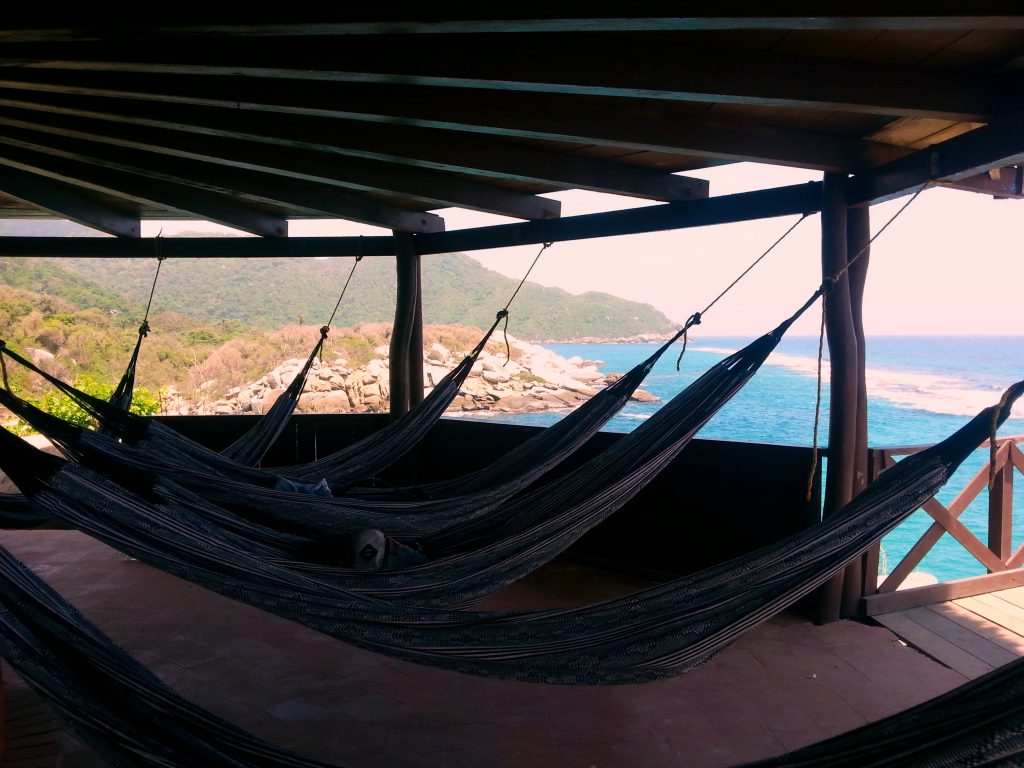
South America Backpackers’ Accommodation
If you are backpacking South America on a tight budget, you could try Couchsurfing , although hostels in South America are plentiful and generally of good quality. Check reviews for recommendations from other travellers and choose your hotel or hostel carefully as you would in any destination.
Hostelworld is a good choice to book hostels and to see what options are available.
READ MORE: How to Find the Best Backpacker Accommodation All Over the World
You can also find homestays , budget hotels, and luxury hotels and resorts in Mexico too, so there is something for every budget if you feel like trying something different. In busy times and public holidays, it is advisable to book ahead, especially in popular destinations.
Volunteering in South America
If you are backpacking South America slowly, you might want to take advantage of the volunteering opportunities available to allow you to travel in South America without spending much money. You can find volunteering placements in South America on sites like WorldPackers , Workaway , and HelpX , where you pay a small fee to register on the site which allows you to browse available opportunities and contact the hosts.
Opportunities for volunteering in South America vary from working on reception at a hostel to teaching in schools, helping to build eco-projects or helping a family to care for their kids. Volunteering in South America like this is a great way to meet local people and become part of the community, and to save money.
In exchange for part-time work, volunteers usually get lodging and some food included. Spanish (or Portuguese in Brazil) is useful but not always essential for volunteering in South America, it depends on the requirements of each placement.

Get a $10 Discount on Your Worldpackers Membership
I’ve teamed up with Worldpackers to offer all Tales of a Backpacker readers a $10 discount , which means you only need to pay $39 USD for a full year’s verified membership. Once you are a verified member you can apply to and message all the hosts on Worldpackers and volunteer all over the world. What are you waiting for?!
Backpacking South America Tips for a Safe Trip
Bring toilet roll everywhere.
Toilet roll, or tissues, spare napkins, whatever. Never go anywhere without something to wipe with as chances are you won’t find it in the public toilets in South America, or you’ll have to pay for the privilege. Hand sanitizer wouldn’t come amiss either!
Expect to Get Robbed
This sucks and I hate myself for saying it, but almost every backpacker I met in South America had had something stolen, be it a wallet stolen by pickpockets, a whole backpack from under the bus or like me someone stealing stuff from their hostel dorm.
Unfortunately, travelling gringos (foreigners) are easy targets for thieves in South America. Please don’t let this put you off, but simply be prepared for it. Follow these general tips for avoiding pickpockets, spread out your cash in several places, don’t take anything priceless with you, and make sure you have travel insurance.
Don’t Sweat the Small Stuff
You really need a sense of perspective when you’re backpacking in South America. Does it matter if your bus arrives 5 hours later than scheduled? Not really. Does it matter that the llama ate your passport? Well yes, that probably does matter, but you can get a new passport if needed!
The point is to relax and enjoy the experience, no stress, no worries. I am quite a laid-back person anyway, but I really learned to stop worrying in South America, as things will usually sort themselves out one way or another.
YOU MAY ALSO LIKE: Things I Learned After A Month Backpacking
Be Open to New Experiences
Be it trying new food and drink, to chatting to locals or learning to dive, that is part of the joy of travelling. In South America, you will discover new cultures, cuisines and a whole raft of new experiences that you never even considered before, so go ahead and dive in!
Backpacking South America is an incredible experience so enjoy the ride!
Like this post? Pin it to read later:

Leave a Reply
Your email address will not be published. Required fields are marked *

How to plan a trip to South America on a budget
Are you soon to be traveling to South America on a budget?
For many first-timers planning an epic South America trip, the first question usually asked is how to stay safe and how to save money on the road.
Both budget and safety are top priorities for backpackers , so we’ll do our best to explain the overall situation and give our tips on a country-by-country basis.
What's in this guide?
The paradox lies in the fact that when we travel to South America on a budget, the aim is to save money, but scrimping and scraping inherently puts us in a risky situation because we tend to choose the budget option over everything.
It does not all have to be like this , especially when it comes to accommodation (for example) or doing tours where you’ll be flying off a paragliding somewhere. This is because you can be at your most vulnerable in both situations.
We believe it is smarter to know what to budget for, and where to spend that little bit extra, to be able to mitigate the safety risk in any one particular place.
Language and Currency
Let’s now look at some important elements of budgeting in backpacking South America that most travelers will need to consider at some point during their trip:
It is no secret that Spanish is the dominant language of South America .
It’s the main language of Colombia, Ecuador , Peru, Bolivia, Chile, Argentina , Uruguay, Paraguay and Venezuela.
The two exceptions (of countries we’ve covered in this guide) are Brazil who speak Portuguese, and Guyana whose mother tongue is English.
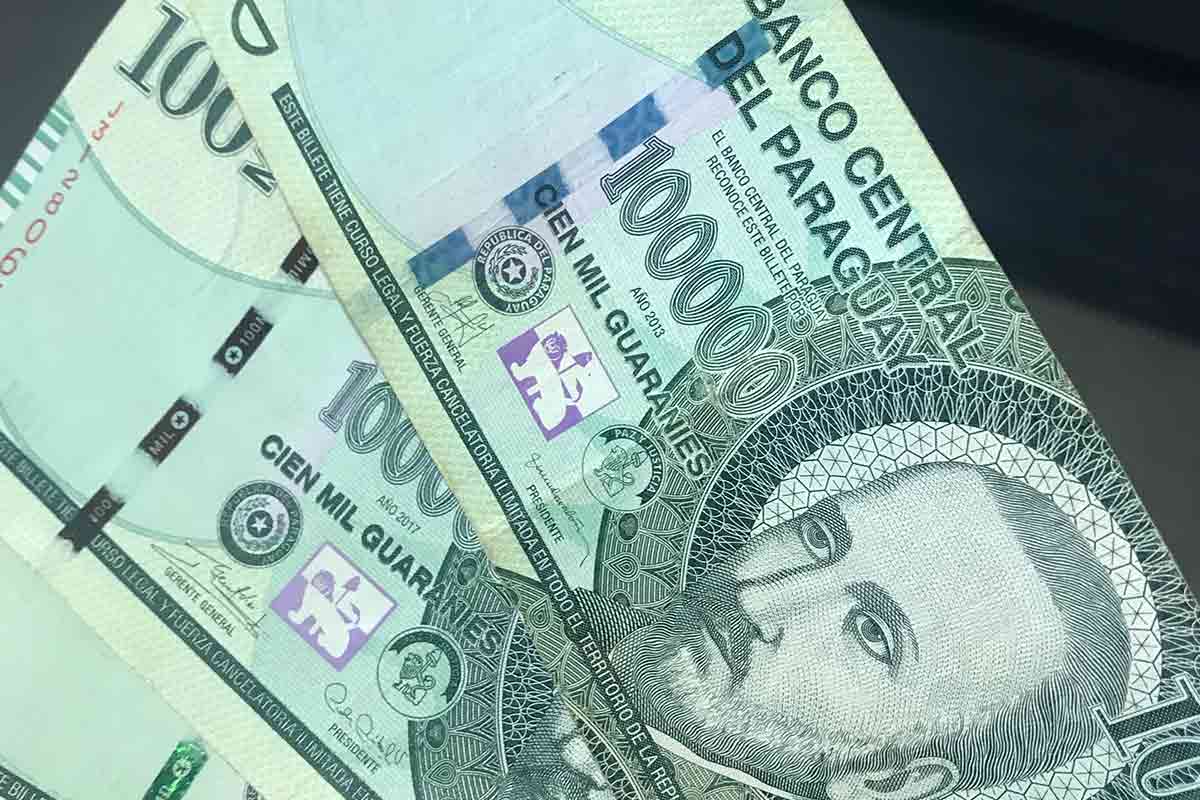
Another notable language is Guaraní, which once used by the indigenous tribes of Paraguay , is now also one of the country’s official languages (although not needed as most speak Spanish).
To be honest, you can get around somewhat comfortably with just English, especially in the bigger cities throughout South America like Rio de Janeiro and Lima.
However, knowing just a bit of Spanish will make the experience so much better (not just ease, but also being able to connect with locals).
Although Portuguese is Brazil’s tongue, most understand Spanish so you’ll somewhat be able to communicate and get both of your points across.
There are many indigenous languages also spoken here, most notably in the Andean regions as well as in Bolivia and Paraguay.
Some of the biggest and still-used today includes Quechua and Aymara. Brazil has the most indigenous languages of all South American countries, with a grand total of 177.
If you’re heading to South America, then be prepared for a myriad of confusing currencies and exchange rates!
Pretty much each country here uses a different currency, so you’ll need to adjust and work out your budget as you move along the backpacking trail .
Ecuador is the only country that uses $USD, and therefore is a lot easier to work out costs. Peru uses Soles; however Dollars are sometimes accepted and can be withdrawn from most ATM’s (similar with other countries too)
- Colombia uses Colombian Peso
- Bolivia uses Bolivian Peso
- Chile the Chilean Peso
- Argentina the Argentinean Peso
- Brazil the Real
- Paraguay the Guaraní
- Uruguay the Uruguayan Peso
- Guyana the Guyanese Dollar
Then of course we have Venezuela, who uses the Venezuelan Bolivar, which tends to be pretty confusing at best. They also widely use dollars, but you’ll need to bring them with you since it’s they are not available in ATM machines.
As all rates are constantly changing, we won’t bother listing them here. You can check currency sites such as XE who provide up-to-date and accurate exchange rates.
Getting Around South America
There are many ways of accessing South America, with the most popular by plane. The international hubs of São Paulo, Rio de Janeiro, Buenos Aires and Lima are the easiest and often cheapest to fly into.
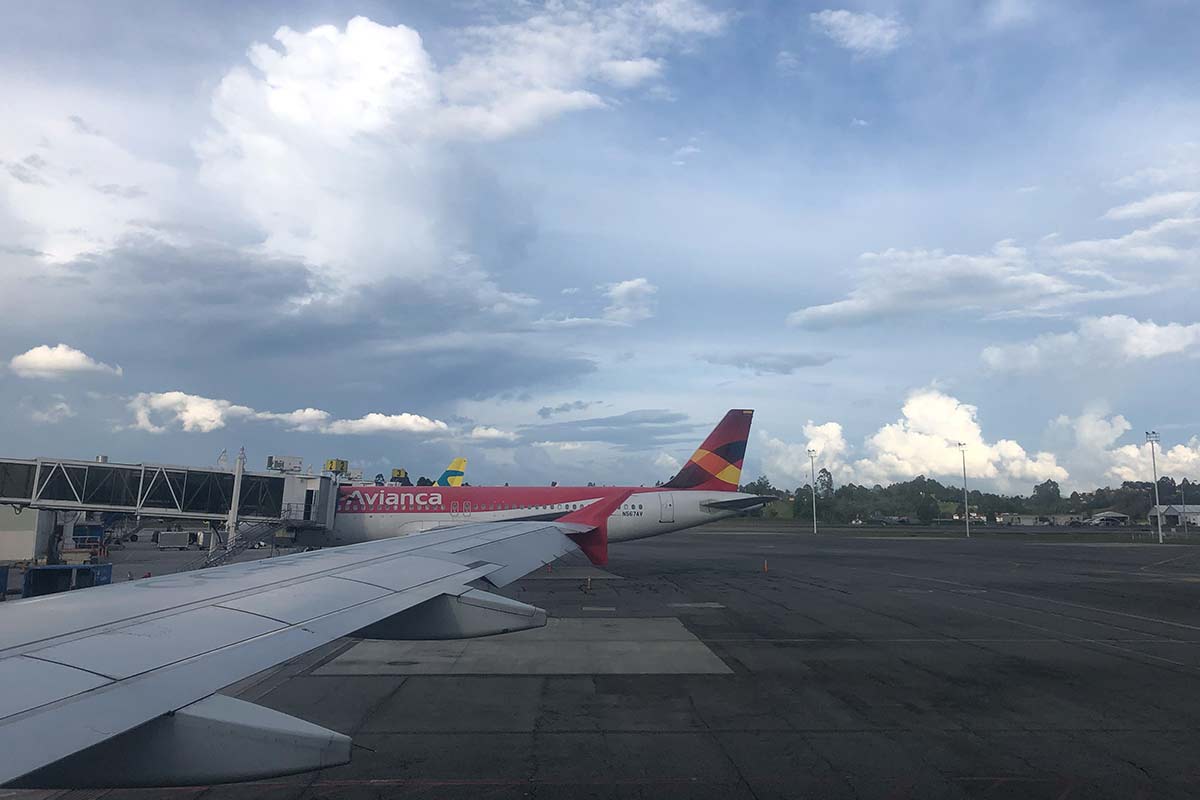
There’s a tonne of flights arriving and departing from these cities daily.
The other (more adventurous way) is arriving by sailboat into Colombia from Panama, which is one of our bucket list items in its own right.
If coming from Central America we would recommend this option , where you’ll spend 3 days crossing the Caribbean Sea and stopping off in the beautiful San Blas Islands along the way.
The only other way really is by cruise ships, which often depart from USA or Asia and have multiple stop-offs in the continent. As these are expensive and not part of the backpacking lifestyle, we won’t go into detail here.
South America is a mammoth of a continent.
Driving from Cartagena in the north of Colombia to Ushuaia in the extreme south of Patagonia would take over 6 days, non-stop!
Many who backpack South America with little preparation are slapped in the face when it comes to the distances between destinations, so we want to give you a more gentle one now so you can properly prepare.
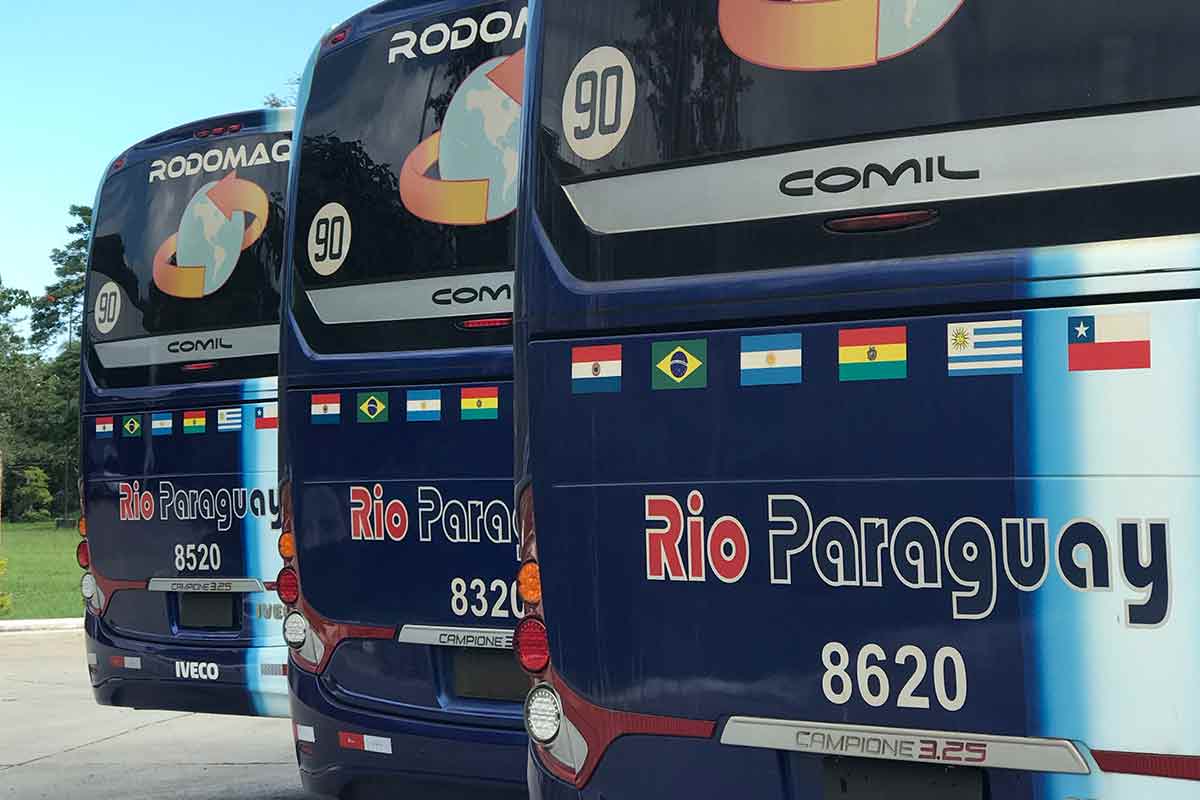
Most of the countries are big in size, and whilst some roads are well-built, many are still lacking and often wind around huge mountains and jungles .
You can expect most bus rides to take between 3-8 hours between top destinations, although the long distance one’s like in Chile and Brazil can often take up to 24 hours. Get yo phone and laptop charged boi!
You can also take regional flights to speed things up. Some of these domestic flights within countries can be pretty cheap, especially in Peru from our experience. However if your budget is tight, then buses win 100% every time .
Costs and Budgeting
One of the most important factors to plan before heading off is your budget.
South America is one of the cheaper continents to backpack around , which is good as your money will go on for longer here (especially good considering the sheer size and amount of things to do and see).
Let’s take a look at how much things tend to be, as well as how to plan a both reasonable and realistic budget.
The costs we listed here as correct as of September 2021 .
South America Travel Costs
Let’s take a look at the typical costs that you’ll be spending on a day to day basis in South America.
Remember these can and will vary depending on where you are!
- Average Dorm Bed = £4-10
- Private Single Room in a Hostel = £10-15
- A Street Food Dish = £1-2
- A Meal at an Inexpensive Restaurant = £5-10
- Beer at a Local Bar or Dive = £0.50-£2.00
- Beer at a Touristy Bar = £2.50-3.50
For example, a town in the Bolivian highlands is going to be much, much cheaper than the popular cities of Rio de Janeiro and Buenos Aires.
South America Travel Budget
As previously mentioned, backpacking around South America is quite cheap.
All countries do vary in terms of budget needed, especially with Latin America’s infamous ability to be unstable both politically and economically.
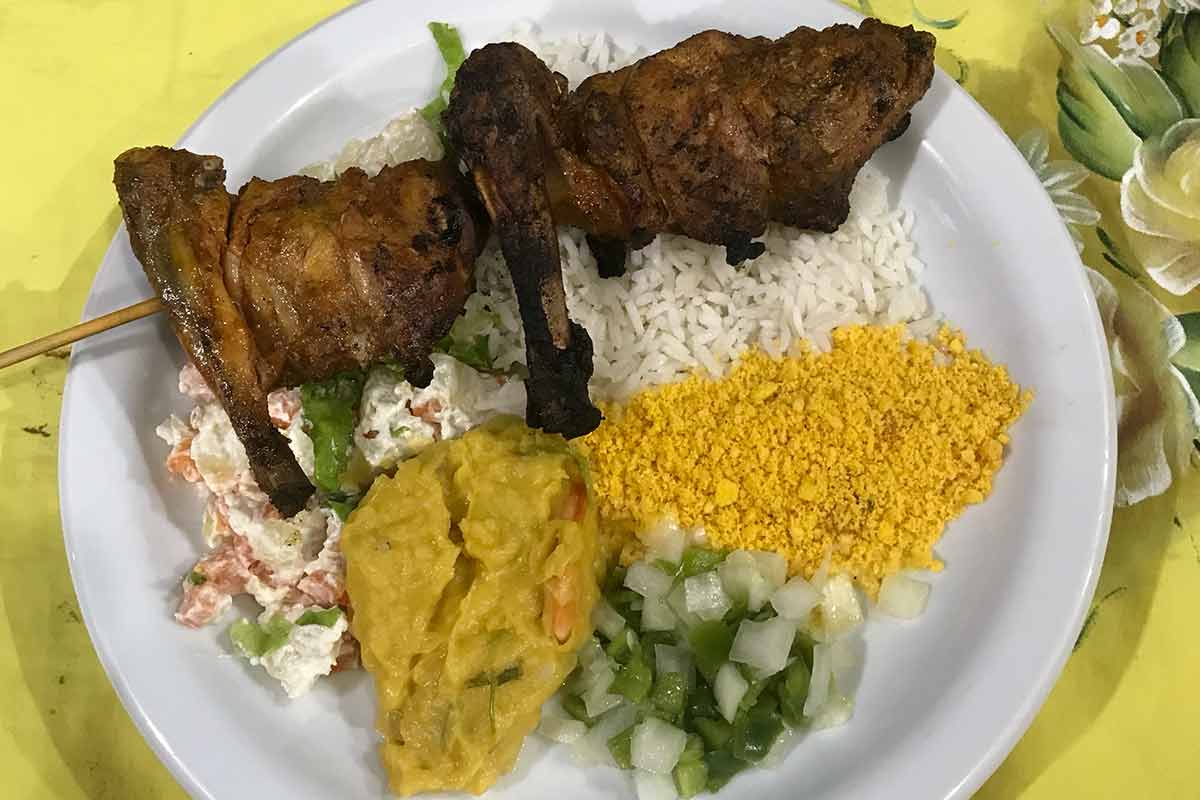
For Brazil, Argentina, Uruguay and Chile, the average backpacker will be spending roughly £25-30 a day . These are by far the more expensive countries to backpack around.
Whilst it’s definitely possible to spend less, the figure above takes into account average dorm bed rates, food as well as transport around cities within these countries.
The rest of these countries you can expect to spend around £20-25 per day .
These countries (especially Bolivia and Paraguay) tend to be poorer in areas, and also a lot cheaper compared with the previous ones.
It’s a lot easier to travel for longer in these countries, so factor more time in these countries to make the most of your journey in this continent.
South America Trip Planning
Whilst backpacking is definitely about being spontaneous and open to the new, solid planning beforehand really does go a long way.
Below we’ll go through some key things you should get sorted before heading out to South America.
What to Pack for South America?
I don’t know about you, but for us pulling out the ol’ backpack and preparing for a trip really gets the adrenaline going.
It’s here where things start to feel real, as you’ll start asking yourself questions like “What do I really need?” and “Will this shirt (or dress if you’re a woman) make me look the sexiest human in Colombia?”.
Hell we’re all human, and we’re here to have the best trip possible .
After you’ve looked at different countries in South America and decided where you want to head, now it’s time to get practical and look at what you need (NEED) not want. See this South America packing list for our best ideas.
For example, it’s probably a good idea to take that pair of hiking boots if planning on going to Patagonia instead of 4 different bathing suits.
One of my best tips that have helped us during planning is to first lay out what we want to take. Second is to divide into two piles; absolute essentials that we need, and others that we want .
Thirdly, add around 50% of the “others that I want” to your essential pile and start filling your backpack. Done.
Remember that whilst your backpack may feel empty this way, this is good as:
- b) it’s a pain trying to fit everything back in every time you move hostel, especially if in a rush.
Pack a range of clothes (as you’ve read, you’ll experience absolutely everything in terms of weather and temperature in South America).
See our much more detailed guide on the best time to visit South America for more ideas on what type of weather to expect depending on where you go.
Toiletries are also important, although try to pack liquids of less than 100ml , as this way you may be able to fly with just hand luggage saving you some dollar.
Other things to pack include your documents in a safe folder, a sleeping mattress, towels, electronics such as a laptop and some backup wallets and spare credit cards etc. High quality Hiking Boots are also an essential bring. We recommend these for men as well as these for women .
South America can be very poor in some areas, so whilst being cautious with food and drink whilst you’re there is important, even better is to get key vaccinations to avoid problems altogether .
Some injections that travelers tend to get before heading to South America include:
- Yellow Fever
- Hepatitis A
- Hepatitis B
However, please see your doctor as we are not medically trained or qualified to give advice. They’ll tell you exactly what you need for each specific country.
Be sure to read our guide on backpacking South America for places to visit.
👉🏽 P.S. If you’ve found this guide helpful, buy us a coffee here to say thanks! Or, support us by downloading our South America Travel Bible to get our best content.
“ Dear traveler! Some links in this post contain affiliate links. Meaning, if you click through and make a purchase, book a hostel or sign up for a tour, we may earn a small commission at no additional cost to you . Your support means a lot and helps us to carry on traveling and maintaining the quality of this site for you.”
Similar Posts
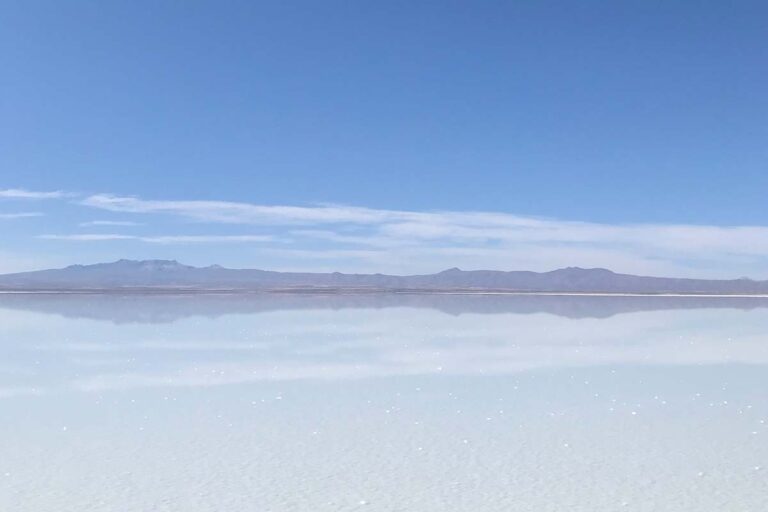
Best Places to Visit in South America
Welcome to our list of best places to visit in South America. Backpacking around South America will reward those who make the trip with a tonne of amazing destinations and one-in-a-lifetime experiences. We’ve compiled 8 of the very best things to do in South America – our bucket list items – which cannot be missed…
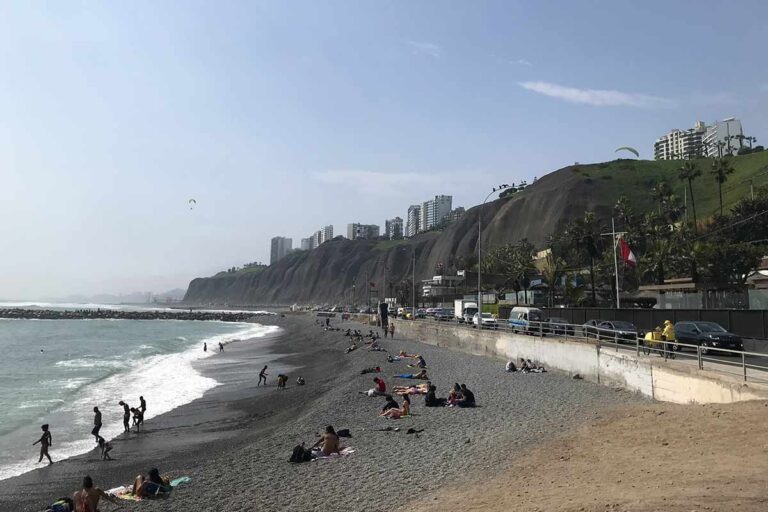
How many days in Lima?
When traveling to Peru, how many days in Lima do you need? The capital of Peru, Lima is an exciting city full of culture and bustle. Known for its cuisine, which ranks among the best in the world, the city is also home to many hip areas and interesting sights too. How many days in…
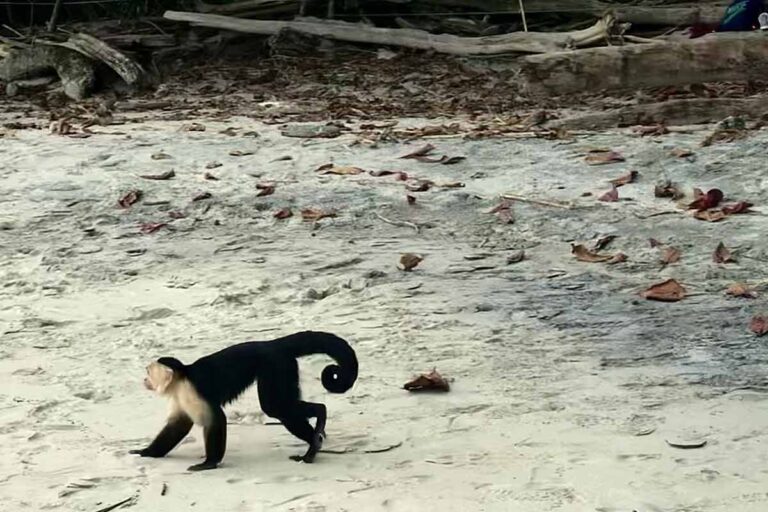
Costa Rica Solo Travel Tips
Welcome to our page which covers a list of Costa Rica solo travel tips. Let’s be real, Costa Rica is a unique country to explore. With dense jungle, a host of exotic animals and birds, world-class beaches and some of the friendliest people on earth, this country is perfect for a solo trip. Costa Rica…
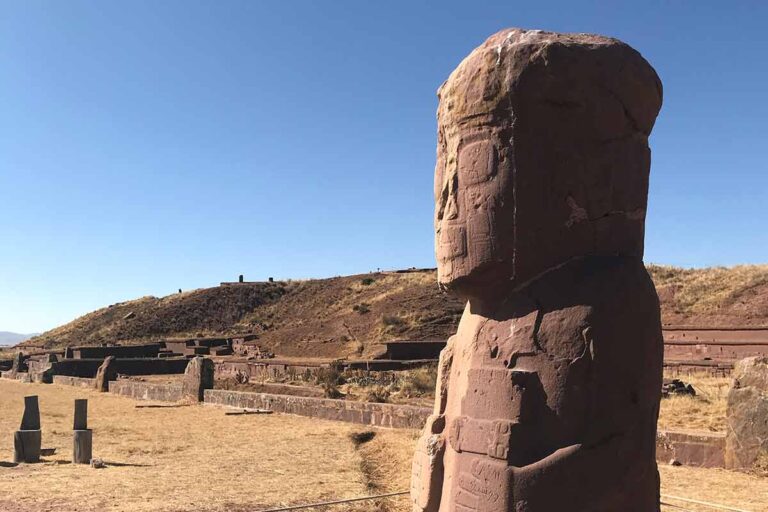
Backpacking South America Travel Tips
There really is no right or wrong when it comes to traveling. Given everyone has different goals, preferences, and tastes, it would be silly to try to follow what everyone else is doing. However, having said that, there are definitely some ways that are better than others. Having spent years living this kind of lifestyle,…
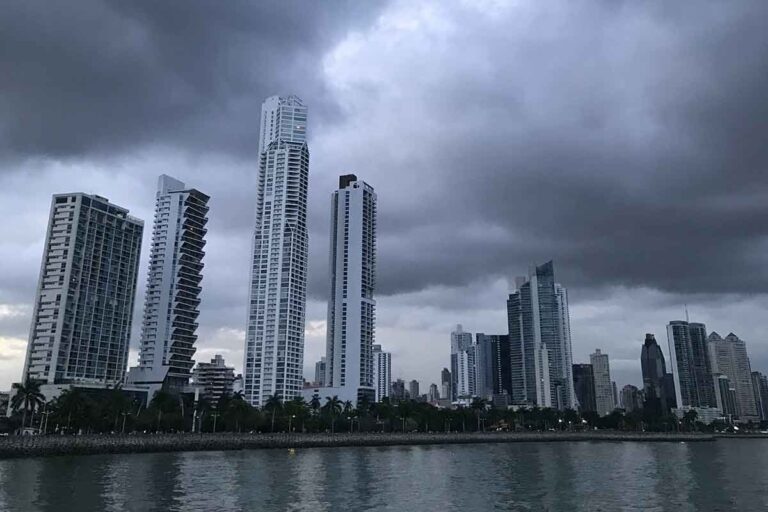
Best time to visit Panama
In this guide, we will explore the best time to visit Panama. This culturally rich country is one of our personal favorites in Central America. Here you’ll find some outstanding beaches and islands such as the San Blas, as well as thick jungle and towering volcanoes further inland. In this guide we’ll explore the best…
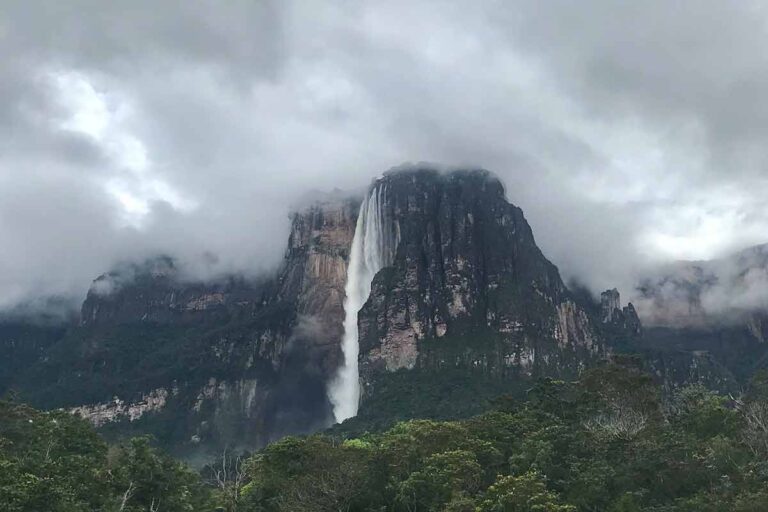
Into the Venezuelan Jungle: The Trek to Angel Falls
The tallest waterfall in the world has always been on my radar. Ever since I was a teen I dreamed of coming here, however, the biggest stumbling block was that it was located in Venezuela, which isn’t the easiest country to visit (and in a pretty remote part of it too). Currently traveling through Venezuela,…

MyFunkyTravel
Backpacking | Budget Travel | Living Abroad
South America Backpacking Budget – How much money do you need?

Overall, South America is quite cheap to travel in, although there are some notable price differences between countries. Below, we’ll take a deeper look at the cost of travel in South America. There are suggested daily budgets for each country and a monthly South America backpacking budget which should help you decide how much you will need to travel around the continent.
Table of Contents
South america backpacking budget, monthly budget to backpack south america, how much money do you need to backpack south america on a more comfortable budget, don’t try to visit everywhere, consider doing work exchanges, eat like a local, cost of travel in south america.
Depending on which country you are in, you will need around $20-40 per day to backpack around South America on a shoestring budget. Things are cheaper in the Andean region of Ecuador, Peru and particularly Bolivia. While Chile, Brazil and Uruguay rank as the most expensive countries in South America for travel.
This budget to backpack South America is based on solo travellers staying in hostels (mostly dorms), travelling everywhere by bus and either preparing their own food or eating mostly in budget restaurants with the odd night out but nothing too crazy nor too often.
Much will depend on your style of travel though and how quickly you move around. Budget a bit more on transport in the bigger countries like Peru, Colombia, Argentina or Chile as the main destinations are typically much further away from each other. Whereas Ecuador for example is much more compact with just a few hours on a bus and only a few US Dollars separating most of the popular places.
Your exact expenditure will most likely differ from the table above depending on some of these factors, although hopefully not by too much. It’s also worth noting that travelling South America as a couple or with a friend is generally very slightly cheaper as you can sometimes split costs on accommodation or transport.
These are uncertain economic times though with some pretty serious economic problems in Argentina for example where inflation soared to a ridiculous 70% in 2022. Therefore, do keep an eye on any important economic developments and changing exchange rates. Costs can rise or fall significantly in a relatively short time if you’re coming to the region with US Dollars, Euros or another currency.
A figure of around $1000 per month is a reasonable starting point for a shoestring budget to backpack South America. You can usually get by on less in the Andes but spend more time in the South of the continent or Brazil and you will probably need more than this.
Travel around the continent at a relatively relaxed pace, including time in most of the major countries and a budget for 6 months in South America might come to around $6000. This excludes the cost of flights to/from the region or any other pre-trip expenses such as the cost of travel insurance for your backpacking trip .
We have focused on the most visited countries in South America for these figures. Visiting any of the other four countries in the continent would certainly mean getting well off the beaten path and would most likely involve spending more money. French Guiana, Suriname and Guyana are on the expensive end of the scale but they are so small, visitors often go for a specific purpose rather than on a general trip around the country. Venezuela meanwhile can also be expensive although things are a bit more complicated there with economic uncertainty and multiple currencies in circulation.
The above figures are very much designed for shoestring travellers. It may be advisable to allow for a slightly bigger daily and monthly spend, particularly if you’ve not got much experience of independent travel.
By increasing your South America backpacking budget by around $10/day or $300/month, you will have far more room for doing lots of extra trips and excursions that a shoestring traveller may not be able to afford. It will also give you more freedom for taking the odd flight (internal ones are much cheaper than international ones) as the thrill of travelling everywhere by bus does quickly wear off.
No matter how hard you try to keep costs down, there will be isolated days where you go way over budget. Prices can really sky-rocket around major tourist hot-spots like Rio de Janeiro, Machu Picchu ( closed at the time of writing ) and the natural wonders of Patagonia .
There are also seasonal variations in some places with costs often much cheaper outside of peak season. However, given “peak season” varies between countries and destinations, these swings typically average out for anyone on an extended trip in South America.
How to save money as a budget traveller in South America
It’s tempting to look at South America on a map and realise that there aren’t many countries, so why not visit them all? That’s not a great idea, unless you’ve literally got a whole year in the region. Even that may not be enough (spoiler: South America is really big!).
Given a significant portion of any South America travel budget goes on bus tickets and getting from A to B, slowing down your pace of travel and focusing on only a few countries will save you money. That’s particularly true if you focus on the Andes and skip more expensive places like Brazil and Uruguay.
There are also the temptation to combine visiting South America with Central America (where travel is also pretty cheap) but again that may be a bit ambitious and will add to you overall costs as getting between the two regions is harder than it looks .
If you’re worried about not being able to stick to the budgets above, then work exchanges are worth considering. Worldpackers is a platform that enables travellers to find placements and while you won’t get paid, you get to experience life in another country and can be provided with free accommodation, food and other benefits, which will allow you to spend longer in South America and spend less money.
It does cost $49/year to sign up but you can use the code ‘ MYFUNKYTRAVELWP’ for a $10 discount on that. The membership fee will easily pay for itself in terms of savings as you’ll be able to cut your daily budget down to almost nothing during the weeks where you are doing work exchanges with hundreds of options across South America.
Many local restaurants across South America offer special set meals for lunch (“menú del dia”). In cheaper countries these may only be a few dollars but are typically generous portions that will keep you going for the day. They are particularly good in Peru which has arguably the best cuisine in the whole region. There are often decent, budget-friendly offerings at breakfast too.
Wherever you are, observe how and where the locals eat and you probably won’t go too far wrong. Knowing a bit of Spanish will help too as menus won’t be in English aside from the more expensive tourist restaurants which will quickly destroy your daily backpacking budget for South America.
All backpacking budgets were last updated in January 2023 according to prices and exchange rates at that time.
46 thoughts on “ South America Backpacking Budget – How much money do you need? ”
Hi, I’m planning on doing a 51 day G Adventure trip across South America which covers different areas, do you have any ideas for budget? It will mainly be spent on activities and potentially souvenirs as accommodation and travel between different places is covered. Also is it best to use local money or USD?
Hi Laura, apart from Ecuador where USD is the currency, it’s best to use local money and USD will rarely be accepted.
In terms of a budget, it’s very hard to give you an accurate estimate as not sure which countries you are going to and what kind of activities you are looking to do. The info on this page is mostly aimed at budget travellers and backpackers who perhaps have more time and spread their spend on activities out across a longer period. If you’re looking to cram as many activities and trips into 51 days as possible, then you could still easily end up spending $20-30/day extra on average, perhaps more if you’re spending more time in the expensive countries and are visiting some of the main tourist places.
Hello! I was planning to do a South American trip in July 2020 – however only for 1 month. What route / countries would you suggest? And how much (for a shoestring and comfortable budget) would you suggest to bring?
I’d suggest maybe flying in to Quito and back from Lima and travelling through Ecuador & Peru, perhaps taking an internal flight in the latter to skip the north and central areas.
Alternatively maybe you could do the section from Cuenca to San Pedro Atacama on our South America route although it may be more expensive getting in and out doing it this way as neither have big international airports so you will need more connecting flights.
It’s hard to give an accurate figure in terms of budgeting for such a short trip. One or two big excursions/activities can change things a lot but you can probably look at $30-50 per day as a rough guide. Trips of a month or less tend to be more expensive than the figures listed above as it’s natural that you will want to fit more in and do more activities if you only have a limited time.
Hope this helps!
I am planning to go to Ecuador in September. I will probably be there for a month. Do you think that 1700$ is enough budget, or do I need more than that?
Thank you, Leo
It sounds like a very comfortable budget for Ecuador. It’s one of the cheaper countries in South America as you can see from the tables above and you should have some room to do lots of extra activities and excursions with that.
However note that the figures above don’t include the cost of flights in & out which could work out as a large % of your total trip if you’ll only be there a month. Depends where you’re coming from obviously.
I’m planning on doing a solo trip starting fall 2020. Do you think there has been any major changes in the prices from 2019 that you have listed?
Wouldn’t have thought there have been any radical changes since then. The one to keep an eye on is probably Argentina where the currency has devalued significantly over the past couple of years. This in theory should make it much cheaper to visit but it’s probably worth monitoring that and trying to find some more up-to-date info specific to that country nearer the time of your trip (if you plan to go there) as the economy appears to be quite volatile.
The figures obviously are quite rough anyway seen as everybody has different travel habits but you should be able to rely on them for a relatively accurate picture even though they are a year old now.
planning on a 5 month trip short shops in brazil and Uruquay (maybe ten days each) then the rest 4 and a months argentina up to columbia! travelling with my girlfriend so splittng some costs, we are thinking of taking 8000 euros each, 5000 for general living, so 1000 a month and 3000 for activities and visa!
do you think this would be enough?
Hi Jake, Would have thought that would be enough. €5000 each sounds like a realistic shoestring budget for your trip, particularly given you won’t be spending long in Brazil. An extra 3000 is a nice safety net to have and should open up some great options for added activities and trips plus maybe even the odd flight to skip save a bit of time in the regions where there is less of interest. Visa requirements aren’t generally that strict in South America and shouldn’t cost much, if any money, although it depends where you’re from!
Thank you for the comprehensive guide. I am planning to do a 3 month trip to South America at the end of 2019 or early 2020. Thinking of visiting Colombia – Ecuador – Peru – Bolivia then Brazil (in this order or the reverse, plan to fly in one of them and fly out at the other). Basically i will spend less time in Brazil (10 days) and Ecuador( 7 days) and the rest of the days it should be split on the other 3 countries. I plan to budget it for 3,000 – 3,500 (excluding the flight in and out of south america), do you think this is feasible? I am a experienced backpacker and it is my first time in south america.
Hi Adrian, That sounds like a realistic enough shoestring budget for your 3 months in those countries (based on only spending 10 days or so in Brazil which is significantly more expensive. It feels like quite a lot to pack into 3 months though so you’d either have to spent a lot of time on buses or maybe try and squeeze in few flights, which can really eat into any budget in South America. I think I’d look to try and find a couple of hopefully reasonably priced flights in advance to cut down on the travelling in Peru and Brazil. If you can do that, then there’s no reason why you can’t stick to that kind of budget seen as you’re an experienced traveller.
I am planning to go to South America in July 2019 for 6 months on a budget of around £6000 – £7000. My rough route is Colombia – Peru – Ecuador – Bolivia – Chile – Argentina. I am planning to stay mainly in hostels and eat any food out cheaply or cook in hostels. I am also planning to do some major activities like Macchu Picchu. Do you think that budget is enough for me?
Hi George, I think £6000-7000 sounds realistic as a shoestring budget for that trip as a whole, especially given you’re missing out Brazil and are focused more on the cheaper countries. There will probably be some activities you’ll have to pass up on in order to stick to the budget but you should still have the funds to do the big ones like Macchu Picchu provided you’re smart when it comes to limiting your accommodation/food costs etc. I’d advise to try and keep a fair bit left for the end of the trip though. Chile is quite expensive by regional standards and although Argentina is a lot cheaper right now, their economy is pretty volatile so things could have changed 12 months from now. Hope that helps!
MyFunkyTravel (:
Hi, im going to South America in August 2019. I will be visiting Colombia, Ecuador, Peru, Bolivia, Chile, Argentina and Brazil. I will be away for about 6 months. My budget is 12.000 dollars. Do you think that is fine? Im sleeping at hostels and in my tent and im travelling with my boyfriend, so we split most of the prices.
Sincerely, Emilie
Hi Emilie, Will be updating this page soon (probably January/February 2019) so it should give you a better idea then – Argentina is quite a bit cheaper now for example but otherwise it’s not so different.
I’m assuming you mean 12,000 is the total for the two of you which I think should be fine unless you are planning to spend most of the trip in the South of the continent or Brazil. The figures we’ve quoted are mostly based on solo travellers and for sure it’s generally a bit cheaper to travel with a partner/friend. 1,000 Dollar/month each would certainly still be a shoestring budget so you will have to be a bit careful but it should be manageable. Staying in a tent is certainly a really good idea in more expensive areas like Southern Chile and Argentina where accommodation is quite expensive.
If you mean you will have 12,000 each for the trip, then you’ll have a lot more freedom to do excursions, activities etc and take a few more flights around to save time.
Hey again, yes we have between 12.000 and 15.000 dollars each to use. So 24.000 – 30.000 together to spend in 6 months.
Is that fine?
Hey, yeah that should be plenty! You should have some left over at the end if you are mostly staying in hostels/tent and travelling around mostly by bus.
Hello there! I am from India and have previously visited Mexico and Colombia for about 15 days each and fell in love with Latin America. I am now planning for a longer travel starting from Ecuador, Peru, Bolivia, Paraguay, Argentina – all the way to the “fin del mundo” (end of the world) in Tierra Del Fuego (Ushuaia). I realize it is ambitious, but I have managed Mexico and Colombia with just a few words of Spanish before. How feasible do you think this trip is and if I give myself between 3-4 months for the whole trip, how much should I expect to spend over all?
I would spend about 10 days each in Ecuador, Bolivia and Paraguay, about 1 to 1.5 months in Peru and Argentina respectively!
Hi Ramesh, Thanks for your comment. If you can manage in Colombia with limited Spanish then it shouldn’t be any different in the other countries. Obviously it helps and you will have a more rewarding experience if you can communicate better with locals but you should be able to get by. 3-4 months is perhaps a little short to cover that much ground by land but if you take maybe one or two flights, it should be possible. Based on doing the whole trip by buses though, staying in hostels etc, then $3500 might be a realistic shoestring budget (not including flights to/from South America etc – Remember that if you end up in Ushuaia, it isn’t the most convenient place to get home from!).
Thinking of taking a 2 month trip to South America sometime soon with a $3000 budget. I was just wondering, about how many countries is feasible to experience in 2 months?
Hi, in two months you are probably best focusing 2/3 countries at most. unless you have funds to cover flights which tend to be very expensive in South America!
Based on travelling overland, some possibilities might be: Colombia-Ecuador-Peru at a bit of a rush or just two of those Colombia & Ecuador or Ecuador & Peru. Lima to Santiago via Inca Trail, Bolivia and Atacama Desert Chile & Argentina – e.g. http://myfunkytravel.com/backpacking-route-patagonia.html Buenos Aires to Rio via Uruguay (budgeting may be a bit tighter here though)
Firstly, thank you for the amazing advice on this website. Someone bought me your book about travelling South America and it’s been so useful and definitely worth a buy if you’re planning a trip there soon!
I am going to South America for 2.5 months. I’ve got quite an ambitious plan of Colombia – Brasil which means I will have to do some internal flights, which i have already purchased. So excluding these costs, I have about £2500 . I’m interested in a 5 day Salkantay trek which costs £300. 2 questions – firstly, is this a reasonable price for this trek? Has anyone done this trek and have any advice? Secondly, if I do this trek, i would be left with £2,200. Is this enough money for the rest of my trip?
Any advice greatly appreciated
Thank you very much
Thanks for getting in touch. Don’t have much info on that specific trek to be honest! Hopefully someone knows or you’ve already found answers on that.
As for £2200 for the rest of your trip, it would depend a bit on which countries you’re going to be spending most of your time in. It’d work out at about £30/day which would be plenty in Colombia-Ecuador-Peru-Bolivia. However you might struggle to get by on that in some of the other countries.
Overall it sounds doable but would be considered a shoestring budget, particularly given the £ has gone down in value recently. If you’re trying to cram a lot in, which sounds like you are, then you won’t have much left over for extra trips and activities etc.
Hope this helps – If you have more questions you can contact us here – http://myfunkytravel.com/contact.html
Hi there, I’m planning on Backpacking from Mexico – Peru visiting a number of countries en route (Guatemala, Nicaragua, Honduras – Bay Islands, Costa Rica, Columbia, Ecuador – Galapagos Islands).
How much do you think i’d need if I went for 6 months? Also could this trip be done in 6 months? Or would I need longer to really see everything?
Hi Ben, Would have thought 6 months should certainly be enough for that route unless you really want to visit every last corner of each country. On the basis of it being 6 months, I’d say $5000 would be a reasonable shoestring budget to have in mind so $25-30/day on average.
That would require some discipline and is not including your flights to or from the region. I’d also treat the Galapagos trip as a separate trip on top of the $5000. Don’t have much info about that I’m afraid but I believe it’s quite expensive getting there.
Hi, Between January and March 2017, we only visited Ecuador and mainly stayed in hostals, although had 4 weeks out of 11 at host family stays when we went to Spanish School in Quito and Cuenca.
thanks for sharing, hope you had a good trip!
I am a late bloomer as I am 53 years old and just starting out on this whole backpacking travel thing. I was thinking of backpacking through South America, however it scares me sooo much I have started looking at overland tours instead (which is my usual mode of travel). The cost is probably 3-4 times higher than solo travel though. I am okay with hostels but what scares me is finding my way around in a country when I don’t speak the language, more than anything. Also how do I get to those out of the way places on my own? I am interested in all those waterfalls that are deep in the jungle and such. Not so easy to get to. If I have to spend heaps on day tours to get to them wouldn’t it be cheaper/easier to go overland? I also am a people person and would find it lonely and miss people to share those wonderful waterfalls with. Not the same alone. Also Visa’s and money exchange worries me. Oh lets face it the whole thing scares the cr#p out of me lol. I am struggling with which way to go on this one. Not planning on going till Sept 2018 if I go with overland tour so have time. If I had a travel companion I would be off like a shot. Its the alone thing, I guess. Sorry for the ramble but would appreciate any advice.
Sorry for the delay getting back to you!
I think your situation is very common and many people, are in the same boat. I’ll try and and answer a few of your points.
On the language thing, yes it’s easier if you speak the language but if you can take a month or so just to learn some basics, particularly on asking for directions then that it’s really not impossible to get around and if you make an effort to speak Spanish, most people will be helpful.
If you’re staying in hostels, it’s very easy to organise trips from there. Chances are you’ll be able to head to the same places the over-land tours go and it will still be much cheaper overall as you’ll be paying for your own transport between towns, own accommodation etc. You’ll also have more options at each destination rather than been stuck to their schedule so overall I think the advantages are much greater.
If you’re a people person, chances are you’ll meet people pretty easily in hostels/travelling anyway but of course there are some days when you’re alone and you might miss the company.
If you’ve not travelled alone before then maybe consider doing a week or two closer to home first and see how you enjoy it. Certainly going to South America for your first solo trip is a big step to take and is a bit scary for anyone!
If you’ve travelled alone before and enjoyed it, then I wouldn’t let fear put you off. Just research your trip, exchange rates, visas etc and it should all become clear!
Hi Tammy I am planning to travel to South America and I am looking for a person to travel with without been necessary to be all the time together. This is a good way to keep the cost low and feel safe if you like to hike in the mountain or hitchhike. If you interested write to me [email protected] Happy travels!
Hello! Sorry to rob the post but I’m interested in traveling to S. America from October – Dec/January..Will either of you be there around then? Thank you!
I will not be there in 2018 as I have to finish some work first. Keep my email [email protected] and keep in touch.
Thank you for the info! I am heading to South America next month. (I want to be gone 6 months) and my only concern is that I will run out of money. I am a budget backpacker, but I also like to see as much as I can. Do you think I could still fit into the $1000 per month if I see Machu Picchu & Patagonia, but stay in cheap hostels/couchsurfing and eat street food/cook my own? Also, do you know if there are areas with bars/hostels that look for english speakers (like they do in South East Asia)? Excited to read more of your articles! -Rachel
Yes it should be possible but it would be a real shoestring trip and there’d be times maybe when you wouldn’t be able to do things you might have liked to, in order to stay on budget.
In Patagonia and in general for Argentina/Chile, hitch-hiking, camping, couchsurfing are all really good options to keep the costs down. The cost of food is rarely a budget-killer in South America but the prices of even budget hostels in Patagonia can be really expensive even by European/North American standards. Probably you will be there in the low-season though by the sounds of it so the prices should be more reasonable.
Aside from one or two places, there aren’t really any bars that principally are geared towards backpackers in South America so finding barwork would be tough without a good level of Spanish. Hostel work should be a bit easier to find though. Maybe you won’t get paid but they ought to give you a bed and food.
Enjoy your trip!
Hi . We spent $3881 in 275 days (over 8 months) so an average budget of $14.11 each per day. We traveled all South American countries on a tight budget, it is very possible. We did a lot of hitchhiking, camping and couchsurfing. Safe Travels For our budget breakdown for each country: http://stingynomads.com/south-america-travel-budget/
Great info! Thanks for sharing. Well worth a read for anyone looking to really get by on a very tight budget.
Most Central American countries can be traveled through very cheaply by using local transportation. Shuttle services catering specifically to tourists are a little more convenient, though can cost as much as ten times more.
Arth@Mapdestinations
Hi, I am planning to spend two months in Central America this summer, with two weeks completing an archaeological dig in Belize. I want to keep my travelling quite compact, as flights from Scotland starting and ending in two places is very expensive from Britain so I would be flying in and out of Belize. I would most likely move into Guatemala, El Salvador and Honduras, so any top tips would be perfect.
Belize would be comfortably the most expensive of those although if you avoid the main tourist places it shouldn’t be too bad. I travelled in Guatemala and El Salvador a few years back. Guatemala is very cheap everywhere (and a wonderful country) so I’d suggest focusing on that. El Salvador receives very few budget travellers, so there aren’t many cheap hostel type places so I found it slightly more expensive but I didn’t stay long.
Thanks, thats a great help. I booked to start and end in Belize as I have a two week archaeological dig in Belize now too. I think Guatemala will be my main focus as many people seem to recommend the country as a main highlight. Thank you for the link too.
I i was able to work doign TEFL or work in hostels for free accomodation would my budget stretch a lot further?
Hi Stan, it would help a little bit but to be honest hostels are generally fairly cheap in Latin America and it’s the transporting between places that tends to take up most of the budget (South America especially). TEFL wages are also quite low there but enough for a reasonable standard of living if you decided to hang around a bit in one place. Certainly if you’re worried about budgeting it would be a good idea to visit just a few places and spend longer there (working would help further) rather than attempt to do the whole region.
Good article! Are the above budgets based on travel alone or a rough guide for everything?
Hi Gary, It’s based on everything apart from flights to/from the region.
Basically it’s a rough guide for how much it might cost to stay in a cheap hostel, travel around the country/region on local transport, eat a few cheapish meals a day and a bit left over for nights out/extra activities etc.
You could get by on less if you don’t do much drinking/extra activities but if you do lots then it will probably be more than the figures here.
Leave a Reply Cancel reply
Your email address will not be published. Required fields are marked *
Save my name, email, and website in this browser for the next time I comment.

Subscribe & get your free guide to going abroad!!
9 Epic South America Backpacking Routes: The Best Itineraries and Ultimate Travel Guide
Backpacking South America is an incredible experience that will leave you with lasting memories and a yearning for more. Planning the adventure of wandering such a vast continent can seem intimidating, but this article will demystify how the adventure can be simple yet more fulfilling than any travel experience you’ve ever had. In this guide to backpacking South America you’ll discover the best options for exploring my favorite continent, tips for getting off the beaten track, and everything you need to make your trip as smooth, amazing, and memorable as possible.
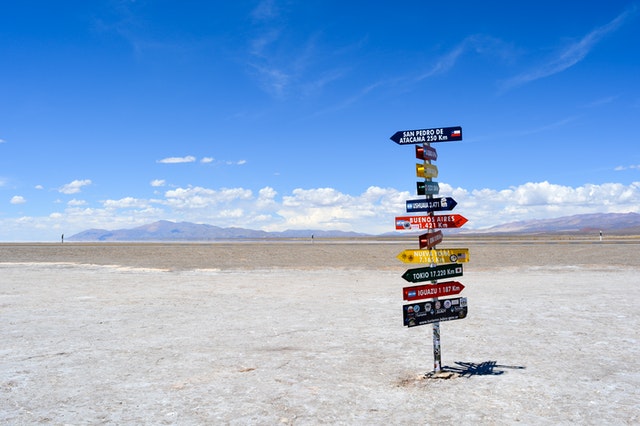
- Why You Should Go Backpacking in South America
- 2 Week Itineraries
- 1 Month Itineraries
- 3 To 6 Month South America Itinerary
- Essential Info for Your South America Itinerary
- South America Travel Budget
- Where To Start Your South America Backpacking Trip Buenos Aires Santiago Or Medellin
- How To Get Between Countries in South America
- The Galapagos Islands
- Where To Next Central America and Beyond
- What About Brazil and Venezuela
- Now That You Understand the Highlights Of Your Destination
- More Essential South America Info
WHY YOU SHOULD GO BACKPACKING IN SOUTH AMERICA
Backpacking South America is an amazing experience! You’ll experience unique cultures, hike up active volcanoes, hike through lush Amazon rainforests, raft down giant waterfalls, and explore some of the most beautiful beaches you’ve ever seen. There will be challenges, but the rewards will be well worth all of the hard work.
TOP 10 HIGHLIGHTS OF SOUTH AMERICA
- Patagonia and Torres del Paine National Park and El Chalten (Los Glaciares National Park)
- The Galapagos Islands: Living among wild animals on land and sea
- Buenos Aires : The gritty Paris of South America
- Machu Picchu: Ruins of an ancient empire
- The Lost City: An often missed highlight just as remarkable as Macchu Picchu
- Food: Lima and Buenos Aires
- Alien Landscapes: The high desert of San Pedro de Atacama and the salt flats of Uyuni
- Wine: Mendoza wine country of Argentina and the equally remarkable Chilean wine country
- Tayrona National Park with a campground nestled against the ocean and Minca highland coffee country, meer minutes away
- Hiking up snow covered volcanoes and sliding back down
- San Carlos de Bariloche and the Lake Districts and trekking through some of the most beautiful nature in the world
- The Perito Moreno Glacier, this vast icefield is the third largest reserve of fresh water in the world
Still planning your trip? Be sure to read our article on the best times to visit South America and wehere to go if you’ve already booked.
THE BEST SOUTH AMERICA BACKPACKING ROUTES AND ITINERARIES
In this article, we’ll share the highlights you need to know about all the best routes for backpacking South America and countries you need to visit on your South America trip to help you figure out the perfect backpacking route for you. However, feel free to click the links below for the perfect itinerary for 2 weeks by region, 1 month by region, and 3 to 6 months in South America.
2 WEEK ITINERARIES

2 Weeks in Patagonia
- San Carlos de Bariloche (2-3 days) and the lake district
- El Chalten (2-5 days) and trekking Parque Nacional Los Glaciares
- El Calafate and Perito Moreno Glacier (1 day)
- Puerto Natales (1+1 day) in prep for the Torres del Paine trek
- Torres Del Paine National Park (4 days for W trek, 7 days for circuit trek)
- Ushuaia (2 days) to expererience the end of the world and fly home
2 Weeks of Argentina, Chile, and Uruguay
- Optional: Montevideo and Colonia in Uruguay (2 days ) Experiencing a smaller more polite Buenos Aires
- Iguazu Falls (1 day) UNESCO heritage site that dwarfs Niagara Falls
- Mendoza (2 days) Argentine wine country experienced by biking between vineyards and wine tastings
- Santiago (2-3 days) Absorbing Chile’s capital through, art, history museums, restaurants, and nightlife
- Chilean Wine Country (1 day) Just as charming and intoxicating as Mendoza
- Pucon (2-3 days) Hike up a volcano and go where Chileans vacation
- San Carlos de Bariloche (2-4days) A trekking mecca (day hike or multi-day) that only a handful of places in the world compare to
- San Pedro de Atacama (2-3 days) : The clearest skies in the world allow you to see more stars than you’ll ever see anywhere else
2 Weeks of the Incan Experience – Peru and Bolivia
- Lima (2-4 days) : The best culinary scene in all of South America
- Cusco (2-3 days) : The gateway to Macchu Pichu against a backdrop of hipster polished Peruvian food and drink
- Sacred Valley (1 day) : A calmer, emptier way to discover the Incas
- Macchu Pichu and Aguas Calientes (1 day) : The highlight of Peru and (for some) South America
- Colca Canyon (2 days)
- Lake Titicaca (1-2 days) : The “highest navigable lake in the world”
- La Paz (1-3 days) : The highest de facto capital in the world, with a “frontier feel”
- Salar de Uyuni (Salt Flats of Uyuni)(2 days – ~3 to 5 days for SUV tour)
- La Paz (1 day) : Returning home
2 Weeks of Alien Landscape – High Altitude Deserts, the Bolivian Altiplano, and Salt Flats
- Santiago (2 days)
- Valparaiso (1 day)
- Atacama Desert + San Pedro de Atacama (2 days)
- Uyuni + Salar de Uyuni (2 days)
- La Paz, Bolivia (1 day)
- Lake Titicaca + Puno , Peru or Copacabana , Bolivia (1 day)
- Cusco (2 days)
- Macchi Picchu (1 day)
- Lima (2 days)
2 Weeks of Animals and Biodiversity – Galapagos, Volcanoes, and the Amazon
- Quito (2 days) : Acclimate to South America in this relaxed and conservative capital
- Otavolo and Otavolo Market (1 day) : Soak up local culture and shop for souvenirs at this uniquely Andean market
- Mindo Cloud Forests (1 day) : An extremely boidiverse subtropical forest that is like few other places in the world
- Galapagos – Isla Isabela (2-3 days)
- Galapagos – Isla San Cristobal (2-3 days)
- Galapagos – Isla Santa Cruz (2-3 days)
- Other options: Avenue of the Volcanoes, Antitana ecological reserve
1 MONTH ITINERARIES
1 month in southern south america.
- Buenos Aires (3-5 days)
- Montevideo and Colonia Del Sacramento (2 days)
- Iguazu (1 day)
- Cordoba (1-2 days)
- Mendoza (2 days
- Santiago (2-4 days)
- Valparaiso (2 days)
- Pucon (2-3 days)
- San Carlos de Bariloche (2-5 days)
- Puerto Natales (1 day – in prep for Torres Del Paines National Park
- Torres Del Paine National Park (4-8 days)
- Ushuaia (2 days)
1 Month in Northern South America
- Bogota (2 days)
- Medellin (2 days)
- Guatape (1 day)
- Cartagena (2 days)
- Zona Cafatera and Cali (2 days)
- Quito (2 days)
- Otavolo Market (1 day)
- Mindo Cloud Forests (1 day)
- Galapagos – Isla Isabela (2 days)
- Galapagos – Isla San Cristobal (2 days)
- Galapagos – Isla Santa Cruz (2 days)
- Sacred Valley (1 day)
- Macchu Pichu (1 day)
- Optional: Colca Canyon (2 days)
- Lake Titicaca (2 days)
- La Paz ( 1 day)
- Salar de Uyuni (Salt Flats of Uyuni (2 days)
- La Paz (1 day)
1 Month of South America Highlights
About the optimal time backpacking South America: The truth: one month aiming to experience all of South America is pushing it as that timeframe is much better suited for a single large country or a couple of small ones than experiencing a whole continent. Argentina, Chile, and Colombia can each easily take a month each when traveling at a comfortable, cost-efficient pace and absorbing the culture. Ecuador, Bolivia, or Peru could be paired as couplets for a good month of travel as well.
But for those with limited time and lots of ambition, we’ll share an itinerary, or more so a list of destinations and minimum timeframes, for blazing through the best of South America in one month.
The balance: Try to absorb the best of nightlife, food, wine, nature, history, and ruins without burning yourself out by being discriminating about your destinations.
How to use this itinerary: Highlight half of the locations that are absolute essentials for you based on your interests and bucketlist, and the 3 places/sites that are your top priority as you’ll want to spend extra time in them. For the remaining half, get comfortable with either breezing through them – to save time – or skipping them altogether – to save money and energy. As such we’ve listed recommended minimum days for each experience so you can patch together the itinerary that suits you based on the best South America Highlights for a month-long trip without burning out or wasting time.
- Buenos Aires (2 days)
- Mendoza (1 day)
- Santiago (1 day)
- Valparaiso (1 day
- San Pedro de Atacama (from Arequipa) (1 day)
- Puerto Natales in prep for Torres Del Paine National Park (1 day)
- Torres del Paine National Park (4 days) – only covers the W Trek
- Ushaia (1 day)
- Salar de Uyuni (2 days – accounting for bumpy transit time)
- Cusco (1 day)
- Maccu Picchu and Aguas Calientes (1 day)
- Arequipa (1 day)
- Lima (1-2 days)
- Guayaquil –> Galapagos Islands (5 days)
- Quito (1 day)
- Cartagena (1 day)
3 to 6 Month South America Itinerary
3 to 6 months is the perfect period of time for backpacking all of South America, with 4 months being the minimum sweet spot. The only difference between a 3 month South America itinerary and a 6 months is that we move at a slower pace and take more rest days.
6 months on the road is exhilarating, exciting, and a wonderful opportunity if you’re spending it all in South America. By being able to slow down, and spend a week in Buenos Aires , Medellin, and Galapagos, instead of mere days you’ll fall deeper into the experience and more in love with the continent. You’ll notice smaller details and absorb more as you will be in a less rushed mindset. Additionally, scheduling 1 to 2 days per week of no travel or sightseeing will leave you rejuvenated, refreshed, and a more hungry and interested traveler.
For this itinerary, we will list all of the recommended highlights of South America with the recommended timeframes for slower travelers. Be sure to take that recommended 1 to 2 days “off” per week, and don’t be afraid of getting stuck in a destination that captures your heart for a little longer than planned – just go with it.
- Buenos Aires (7 days): A perfect introduction to South America with plenty to do and great food. Consider taking Spanish lessons here
- Iguazu (1 day): Account for the extremely long bus ride in from Buenos Aires and know this waterfall will be worth the trip
- Cordoba (2 days) : Practice your Spanish in this university town surrounded by outdoorsy experiences
- Mendoza (2 days): Set aside one day for “bike and wine” tour wine tasting between vineyards of nearby Maipu, and relaxing in Mendoza proper
- Santiago (2 to 3 days): Explore Chile’s capital with heavy focus on history and art museums, nightlife, and just wandering
- Valparaiso (2 days): Explore the hills, graffiti, and nightlife one day, and soak up the towns vibe the next lounging and dropping in on beaches the next
- Pucon (2 days) : Climb Villarica volcano and slide down one day, spend the next sipping coffee and enjoying a popular Chilean vacation spot as locals do
- Puerto Natales and Torres Del Paine (11 days): Give yourself 1 day to prep, 7 to 9 days to do the “Circuit Trek” through Torres del Paine, and 1 day to recover back in Puerto Natales with a warm house and hot meal
- Ushaiia (2 days): Get the post office stamp in your passport denoting “the end of the world,” take a day trip to see penguins, and wander the city to catch “end of the world vibes.
- San Pedro de Atacama and the Atacama desert (2 days) : Give yourself time to explore by night and account for potenital hiccups on the travel to and from Atacama
- La Paz (2 days) : Explore the town, markets, and street food, then day trip to ride the “world’s most dangerous road”
- Salar de Uyuni (2 days): Experience the salt flats on a day tour fromUyuni and allow time for mishaps when arriving/departing
- Cusco (3 days): Visit the museums, do a free walking tour (or 2), and walk within and outside the city to discover ruins everywhere. Additionally, explore the nightlife and food scene thoroughly as it is just as strong as in Lima but with a Peruvian hipster vibe
- Sacred Valley (1 day) : Soak up Incan ruins without the crowds and chaos of Macchu Pichu
- Macchu Pichu (1 day) : Visit the highlight of Peru and inspiration for the character Indiana Jones
- Lake Titicaca + Copacabana/Puno (2 days) : Expereince the highest navigable lake in the world, and the culture that lives by its existence
- Lima (4 days) : Explore art, gourmet food & drink, and nightlife in this metropolis
- Guayaquil –> Galapagos Islands (7 to 10 days) : Slow travel through the Galapagos archipelago choosing as many independent and self guided experiences as possible for a richer, more pleasant experience
- Quito (2 days): Relax and wander, visit the equator, and just decompress in this relaxed and mellow stop
- Bogota (2 days) : Explore the museums (such as Museo del Oro), walking tours that cover the complex history, and nightlife including arguably the best nightclubs in South America in Colombia (and Latin America’s) financial center
- Medellin (4 days): Soak up the good life in a uniquely Colombian, vibrant, and complex place, starting with free walking tours, then visiting museums and eco-parks, following on with nightlife and (ideally) learning to salsa dance)
- Guatape (1 day): Visit a beautiful site in the mountains that looks like thousands of forested islands grew out of a lake
- Cartagena (2 days): Experience the Caribbean at its most “Caribbean” you’ll find in South America – outside of Baranquilla Carnival
- Santa Marta (1 day)
- Minca (1 day): Visit an organic and hydroelectrically powered coffee processing station and plantation
- Tayrona National Park (2 days): Hike in and camp by the ocean for at least a couple of nights
- Cali, Salento, and Zona Cafatera (2-4 days): Discover more than you ever wanted to know about coffee while basking in the home of salsa dancing, and perhaps taking some lessons
ESSENTIAL INFO FOR YOUR SOUTH AMERICA ITINERARY
Travel through South America is uniquely suited for backpacking or any long term travel experience that aims to embrace experiencing local culture, food, language, and nature in a less structured way than package tours, all on a rather small budget. Compared to that required to travel North America, Western Europe, the Middle East, and many parts of Africa, the $40 to $60 per day budget of South American countries (varying by country) is one of the main reasons I recommend South America, as well as Southeast Asia as the perfect first time backpacking destinations.
In return for flexibility of timeline and compromising on 4 star accommodation in favor of hostels, guest houses, and refugios, you’ll receive a one of a kind travel experience in return – a more contiguous expereince than Southeast Asia in culture and language, a more outdoorsy experience that revolves less around beaches and more around mountains, and lastly urban experiences that somewhat echo a gritty yet more vibrant version of traveling Europe. Architecture, food, and travel infrastructure abound but are still uniquely “Latin American” with a different indigenous touch and richness in every country and region.
Here, we’ll review some of the general and basic essentials that you should keep in mind while planning for your itinerary overall as well as each country and segment of your itinerary.
SOUTH AMERICA TRAVEL BUDGET
Travel in South America is in a very reasonable price range – between $40 and $60 a day for a backpacker style budget, averaged across all countries, assuming shared hostels, eating out once per day, and DIY traveling as much as possible.
Compared to other regions of the world, South America travel tends to be more expensive than Southeast Asia travel, which averages ~$35 per day, but slightly cheaper than traveling the Balkans, and much cheaper than traveling the USA, Western Europe, the Middle East, and Africa. In recent years, the price to travel South America has become even cheaper, relative to Europe, the Balkans and Southeast Asia as the cost of living in some of the best cities for digital nomads and backpackers in South America has dropped.
Keep in mind that Argentina, Chile, and Brazil will be the most expensive countries to visit in South America, and Buenos Aires, Santiago, and much of Brazil can become very costly if you get too caught up in the luxury lifestyle. Because of this, when planning your budget for South America plan your budget based on the amount of time you plan to spend in each country and budget much more than the $40 per day for Buenos Aires, Santiago, and Brazil in general. This way, you’ll have enough time and money for an enjoyable experience.

Tips for Saving Money in South America
- Travel by public transport between cities, specifically by bus, as much as possible, as air travel is very expensive
- Travel slower, because the longer you spend in a city, the cheaper the average cost per day becomes
- Cook at home, or at your hostel (this is common) and shop at grocery stores to “brown bag lunch” during the day to save money or order the “menu del dia” at restaurants for a cheaper option
- Quickly check the currency situation of the country you are entering next as bringing in cash dollars or Euros may garner a better exchange rate
WHERE TO START YOUR SOUTH AMERICA BACKPACKING TRIP: BUENOS AIRES, SANTIAGO, OR MEDELLIN
The best places to start your South America backpacking route are Buenos Aires, Santiago, or Medellin, due to location on the “Gringo Trail” and flight access.
Starting in Buenos Aires
Starting in Buenos Aires is the optimal introduction to South America as there are plenty of international flights arriving, the city is easily navigable and welcoming, and, with the exception of Brazil, most everything you will want to see in South America is located west and south or north making it possible to efficiently travel a loop through South America.
Within Buenos Aires, the vibe is welcoming and very European. You will be able to navigate easily in only English while you figure out the ins, outs, and idiosyncrasies of traveling in South America. Additionally, you’ll be able to take some quick and cheap Spanish lessons for a week while exploring the nightlife, robust Argentine BBQ scene, and complex history of a city that is interestingly Italian, Spanish, German, and Argentine at once.
From Buenos Aires you will be able to travel west through national parks, waterfalls, and wine country before traveling south from Santiago, Chile by bus, to hop between Chile and Argentina repeatedly and explore, trek, and camp through Patagonia until reaching the end of the world in Ushuaia.
At this point you can fly back to Santiago and proceed north, exploring Andean South America. On this leg you’ll experience the mountainous and otherworldly Bolivian altiplano, ancient Peru and the remnants of the Incan empire, the biodiverse and animal rich territory of Ecuador and the Galapagos archipelago, and the complex and vibrantly charming gem of Colombia.
From here, if you still have time on your agenda, sneak past Venezuela and explore the vast, complex, and beautiful Brazil wrapping around and ending in Sao Paulo.
Starting in Medellin
For a more direct path, start in Colombia, specifically in Medellin, to enjoy the good life, get acquainted with the vibe and way of South America, and take some Spanish lessons. Medellin is another city that is very accessible, with very cheap flights from almost anywhere in the world, easy to navigate with limited Spanish, and enjoyable while you settle in.
From Medellin, explore northern Colombia and the Caribbean as well as the Atlantic coast – extra points for timing the trip with Carnival as Barranquilla has the biggest and best Carnival outside of Rio de Janeiro and Sao Paulo – not skipping the Lost City of Colombia along the way. Then, continue falling south through Colombia, exploring coffee country and the heartland of salsa.
At the border, continue into Ecuador exploring its diversity and rerouting to Galapagos for a once in a lifetime experience.
After returning to the mainland, follow the backpacking trail south through Peru, exploring the best food scene in South America, remnants of the Incan empires, and some of the best surfing in South America.
Then, explore the rougher side of travel in Bolivia, passing through the extremely mountainous Altiplano and the salt flats.
Proceed into northern Chile and Argentina, switching from an Andean experience to a more heavily European influence, more wine, and more opportunities to camp and hike in the forested, mountainous backcountry of Patagonia instead of the rain forests of northern South America.
Continue the fall south to Ushuaia at the end of the world, potentially hopping a two-week trip by boat to Antarctica before flying up to Buenos Aires.
Spend the remainder of your trip exploring Argentina, traveling from Buenos Aires to the UNESCO site of Iguazu falls, to the university town and outdoorsy Cordoba, and the wine country of Mendoza at the base of Aconcagua, the tallest mountain in South America. Finally, hop a bus across the border to Santiago, Chile to end your South America tour.
Starting in Santiago
From the Santiago start, proceed on much the same path as starting in Buenos Aires, except travel south, Santiago to Ushuaia, then fly from Ushuaia to Buenos Aires followed by traveling west by bus, city-hopping your way to Santiago. End the South America tour traveling by bus north from Santiago to Medellin and Caribbean Colombia.
HOW TO GET BETWEEN SOUTH AMERICAN COUNTRIES
A defining characteristic of traveling South America is that it is best traveled by bus, with the flight from Ushuaia to either Santiago or Buenos Aires being the only logically necessary flight. This is partly why South America is a destination best suited for months of travel if traveling multiple countries or for a single country if traveling for less than a month, to offer sufficient time travel by bus without losing your sanity. Along the way, the slow travel of busses will allow you to soak up smaller destinations that are on the beaten path but simply less traversed.
As off-putting as longhaul bus travel sounds, the “cama,” which translates to “bed,” class of buses in South America, more common in Argentina and Chile than other places, is prevalent and consists of a large comfy seat that seems more like living room furniture and reclines completely into a bed, making overnight trips bearable and interesting but still comfy.
However, if you do decide to fly, note that domestic flights are far cheaper than flights across borders, usually by a few hundred dollars at least, even if the comparable domestic and international flights are the same length, on the same airline. Plan accordingly.
Tips for getting around South America:
- Plan on traveling by bus if possible
- Attempt to keep flights domestic to save money
- Colombia is the exception – with domestic flights being cheap and much more convenient than bus travel
- When flying to Galapagos, fly out of Guayaquil instead of Quito for cheaper prices and less headache
- Check out this article for more information on getting around South America: https://abrotherabroad.com/how-do-you-get-around-when-traveling-the-world/
COUNTRY BY COUNTRY OVERVIEW FOR BACKPACKING SOUTH AMERICA
The”Gringo Trail” through South America is one of the most scintillating and adventurous travel experiences on the planet combining urban experiences, towering mountains and ancient ruins, with friendly, vibrant culture in a way that few other destinations do. All possible on a rather small budget. As much as each country in South America embodies these traits, each country still truly has its own personality.
Argentina is uniquely European in the north, permeated with Italian culture, wine, and European architecture while having a Swiss Alpine feel in its southern experience.
Bolivia is a charmingly “rough” travel experience, taking you through high desert landscapes you might only see elsewhere in the Himilayas, and tying with Peru for its preservation of indigenous culture.
Ecuador is THE most unique place in the world to experience wild animals humanely, in a way that benefits them more than us, along with the most biodiverse landscape on the planet.
And every other country and region in South America carries its own personality and quintessential experiences.
With that said, no single itinerary or South America backpacking route is good for every traveler.
Because of this I highly recommend “getting the vibe” of each country in South America by reading our descriptions below, understanding the most easily traveled and economical route through them (the Gringo Trail) for you, starting in one of the three starting cities that interests you the most (Buenos Aires, Medellin, or Santiago) and just going.
From there, based on your passions and interests – food, wine, outdoors, architecture, nightlife, etc. – plan the travel allowing more days for the destinations and experiences you expect to love, and breezing past the destinations and experiences that just don’t get your heart racing.
In your itinerary, alot one day per activity (maximum two activities per day) and add an extra day or two of empty time in destinations you REALLY expect to love or that appear to have a lot that interests you on paper.
In the following sections, we’ll share the overview and highlights for the countries in South America you need to visit.
Click on any of the following countries to jump to our Country Quick Guides, or simply keep reading to soak it all in.
Argentina is an adventure-filled country with some of the world’s most beautiful landscapes and a great place to experience a mesh of European and Latin American culture. Backpackers should take a road trip between Buenos Aires and the Chilean border stopping at highlight cities along the way, then down South into the lake district and the Patagonian backcountry. On this simple L-shaped path you’ll enjoy the expansive, gorgeous scenery as well as its picturesque cities and easy access to the amazing food that Argentina has to offer – beef in the north and Patagonia lamd in the south.
In Argentina, real travel means experiencing one of the most poetic regions in South America: Patagonia. Throughout Argentine Patagonia, you’ll be able to hike for hours upon hours in federally protected national parks or go rafting down waterfalls through the mountain range. Backpacking Argentinian Patagonia also introduces travelers to food and cultures they likely won’t experience anywhere else in South America. The tradition of Argentine “asado” shifts from beef in the north to wild raised goat and lamb in the south. Additionally, the heritage of beer, brought by the Germans, and the establishment of mountain towns that seems remarkably Swiss and specialize in chocolate (like San Carlos de Bariloche) make for a unique experience on the Gringo trail. Be sure to try the beers by Cervezeria Austral, especially the Calafate berry ale.
Wanderers that do make it south will find endless opportunities for outdoor adventures– anywhere they go, there are infinite landscapes waiting to be discovered – from the frontier mountain of El Chalten, to just across the border in Torres del Paine National Park. while sights like El Calafate (near Perito Moreno Glacier), a quaint little fishing town that is the gateway to Antarctica due to its location near Ushuaia. Travelers in the area can rent boats for day trips onto the frozen glacier or take guided hikes with local tour operators.
There’s no shortage of activities: from trekking alongside llamas in Mendoza wine country, climbing Mount Fitz Roy (arguably one of the most
There is plenty of historic scenery and cultural heritage to explore in the north too. Buenos Aires was one of the earliest colonial settlements in South America for example. Further north “Salta La Linda” maintains an almost indigenous charm, justifying her name.
MY FAVORITES IN ARGENTINA
Buenos Aires is the capital and largest city of Argentina, as well as the third-largest metropolitan area in South America. Backpackers can take a walking tour around Buenos Aires, visiting historic districts such as San Telmo and La Boca that have preserved various architectural styles from different periods. Backpackers may also want to visit the Teatro Colon, an internationally acclaimed opera house that is home to performances from local artists and groups touring inter-America.Sa
When in Buenos Aires, Backpackers should take a walking tour around the city, visiting historic districts such as San Telmo and La Boca that have preserved various architectural styles from different periods. Backpackers may also want to visit the Teatro Colon, an internationally acclaimed opera house that is home to performances from local artists and groups touring inter-America.
Mendoza wine country offers backpackers a unique opportunity. Backpackers will find themselves surrounded by some of the most beautiful vineyards in all of South America with views of snow-covered Andes mountains in every direction. Backpackers can partake in classes about wine
Backpackers will find themselves surrounded by some of the most beautiful vineyards in all of South America with views of snow-covered Andes mountains in every direction. Backpackers can partake in classes about winemaking and tasting in Mendoza wine country. Backpackers will enjoy the expansive, gorgeous scenery as well as its picturesque cities and easy access to amazing food.
San Carlos de Bariloche and National Park Nahuel Huapi: The most beautiful and accessible hiking country I’ve seen in the world. Countless trails through forests, pasts lakes, and up mountains, with more than you could possibly do falling into the half-day category all of the way to the multi-day category making National Park Nahuel Huapi one of my favorite places in the world
El Chalten and Parque Nacional Los Glaciares: A frontier mountain town, simple and adventurous, adjacent to Parque Nacional Los Glaciares delivers a hiking and trekking experience through front country and backcountry that is somewhat of a “Torres del Paine light” experience and free – you just have to buy and pack in your food. each time I’ve visited, this has been of the most peaceful and enjoyable experiences hiking through Patagonia.
HIGHLIGHTS OF ARGENTINA
- Buenos Aires: The Paris of South America, gritty and filled with Argentine BBQ (asado)
- Mendoza and Argentine wine country: Bike tour vineyards tasting world class wines
- San Carlos de Bariloche and the Lake District: A German influenced mountain, surrounded by hiking and trekking opportunities, and the gateway to Argentine Patagonia
- Iguazu Falls, Argentina/Brazil Border: A UNESCO world heritage site, this combined waterfall has the largest flow of any in the world, taller than and twice as wide as Niagara Falls
- Patagonian Backcountry in El Chalten: A small, frontier town that sits on the edge of the Patagonia Glaciares National Park, with great free, rustic camping and trekking with a more adventurous, less refined feel
- El Calafate and the Perito Moreno Glacier: Witness the vast and impressive glacier Perito Moreno while exploring it via a series of walkways for a half day experience
- Puerto Natales, Chilean Patagonia, and Torres del Paine National Park: Hike the “W Trek” over 5 days or the “Circuit Trek” over 7 days in arguably the most impressive park in Patagonia
- Ushuaia: Experience the end of the world and the southernmost civilized city, potentially visit Antarctica
- More of Patagonia and the Wilds
- Argentine Asado (BBQ)
- Latin America meets Europe
- Best wine in Latin America
- Also Consider: El Bolson
WHAT YOU NEED TO KNOW ABOUT BACKPACKING ARGENTINA
Bring us dollars to get a better exchange rate and make your money go further thanks to the “dolar blue.”.
Due to recent history, Argentina is undergoing somewhat of an economic crisis. Though this event is terrible for locals, it doesn’t diminish the travel experience much and actually works in the traveler’s favor. The “Dolar Blue” is a “blue for an exchange rate much more favorable to you than the official rate. For example, at the time of writing this, the official exchange rate is 1 USD to to ~100 Argentine Pesos while by contrast the “Blue rate” is 1 USD to ~200 Argentine Pesos. The Dolar Blue rate alone makes traveling Argentine a great financial decision.
Comparatively, when I first traveled to Argentina in 2010, the currency exchange rate was 1 USD to 3.82 Argentine Pesos. At the current exchange rates, $1 will by you a Latte at an upscale coffee shop and $17 will buy you a ribeye steak at the best restaurant in Argentina (Don Julio’s).
To get the dolar blue, first educate yourself on the daily rate to go in informed. I’ve found https://bluedollar.net/ to be an accurate source. Next, bring your dollars.
If you don’t have any, going to Uruguay to withdraw from an ATM is a solid option, as there are many USD dispensing ATMs in Montevideo and Colonia.
Last, visit an “Arbolito” or unofficial exchange house kiosk. There are many located on the pedestrian street of Calle Florida.
Plan for long haul bus rides between cities
The distance between cities in Argentina are vast, so 12 to 20 hour bus rides aren’t uncommon. Do yourself a favor and only book “full cama” (full bed) bus rides over semi-cama and below
WHAT TO EAT AND DRINK IN ARGENTINA
- Mendoza Region Wine: Aim for Cabernets or Cabernet Sauvignon as these are their strengths
- Argentinian Steaks
- Chimichurri sauce
- Pizza, typical of Buenos Aires in an Argentine style
- Argentinean asados
- Argentine desserts Dulce de Leche and alfajores
DAILY BUDGET FOR ARGENTINA
Backpackers can expect to spend about 40 USD per day if they are traveling solo and making their own accommodation arrangements. Backpackers traveling with one other person can expect to spend about 50 USD per day on accommodations and food; those who travel with two people should
BUDGET FOR EATING AND DRINKING
Backpackers can budget about 40 USD per day if they are traveling solo and making their own accommodations arrangements. Backpackers traveling with one other person can expect to spend about 50 USD per day on accommodations and food; those who travel with two people should budget about 60 USD per
A budget for Backpacking Argentina will depend on a few factors. One factor is the time of year you go. Backpackers will have to take into account the high prices during the winter and shoulder seasons. Backpackers should also remember that accommodations are often much more expensive in the peak season (normally November to March). Other important factors in determining your budget are the length of your trip, how many people you are traveling with, and what type of accommodations you choose.
WHEN TO VISIT ARGENTINA
One of the best times to visit Argentina is during the shoulder seasons of September to November and March to May. Backpackers can explore at their own pace without feeling rushed and should be able to get a good price for accommodations. Those who want to avoid crowds may want to avoid the summer (in Patagonia) and winter months (in Buenos Aires and the North) as these are the peak travel seasons. Also consider visiting Patagonia for fall color in addition to the lighter crowds just before winter.
ARGENTINA VISA INFORMATION
Travelers can stay up to 90 days without being granted any type of permission from immigration authorities and without any fees.
GETTING TO ARGENTINA AND MOVING ON
Traveling into Buenos Aires to start any Argentina backpacking trip is the best option . A perfect Argentina itinerary and path would begin in Buenos Aires traveling the loop west then south through Patagonia and Chile by bus, and then flying from Ushuaia back to Buenos Aires to depart, or to Santiago to travel north and explore more Andean South America.
Keep in mind that as you travel south through Argentina you will (or at least should) bounce across the border into Chile to explore cities such as Santiago, Valparaiso, Pucon, Valdivia, Puerto Montt, Tierra del Fuego, and of course Puerto Natales and Torres del Paine National Park
THE ARGENTINA ITINERARY (**CITY ITINERARIES COMING SOON**)
- Buenos Aires
- Iguazu and Iguazu Falls
- Mendoza and Mendoza Wine Country
- San Carlos de Bariloche and the Lake Districts
- El Chalten (Patagonia)
- El Calafate and Perito Moreno Glacier
We’ve already mentioned that backpacking Argentina is a fantastic adventure, so it’s worth saying that Chile has just as many places and experiences worth exploring too. Backpackers who make the trip from Buenos Aires to Santiago will see the urban, cultured, and heavy European influence in Latin America, in the form of food, wine, university cities, and urban pockets, before following a more beautiful yet equally interesting path into Patagonia. The one up that Chile has is being arguably more outdoorsy and friendlier to the beach loving crowd.
Chileans, compared to Argentines and their neighbors, are remarkably more conservative, so you’re less likely to find them out at 3am on a Wednesday night going hard with work the next morning. On the other hand, thanks to the 4,000 mile coastline and landscape dominated by mountainous Patagoniw, Chileans outside of the bigger cities are know to be more outdoorsy and Salt of the earth. Take that to say Chile is the place you’re most likely to run into a local that’s a surfer, rock climber/mountaineer, and cowboy as well. And if the locals love these activities that means more opportunity for you to join in, safely ,and cheaply. If you prefer the outdoors, big night skies, and rugged landscapes to Italian influenced architecture, Chile is a place you could enjoyable fall through for months ending in legendary Torres Del Paine and Tierra Del Fuego.
By following the path south through Chile, from Santiago, “Valpo”, and Atacama, and bouncing back and forth between Argentina and Chile while falling south, backpackers can explore Torres del Paine National Park, take part in challenging climbing or make their way to Puerto Natales for an enchanting gateway town, climb a volcano (Pucon), explore the lake district on both sides of the Chilean and Argentinean border, pass through hippie towns, and more. Backcountry lovers seek out the many other less popular but equally beautiful national parks in Chilean Patagonia which tend to be more well maintained and improved than their Argentine national park counterparts.
On your way through Chile and Patagonia you’ll stumble past guanacos, pumas, and plenty of other backpackers enjoying life against a backdrop of incredible mountain landscapes while they traverse closer towards the highlight of the region – Torres del Paine National Park.
The further south you travel, the greener the landscape gets, until you’ve reached frost-covered volcanoes and the end of the world in Tierra del Fuego
Once you’ve fallen as far south as you care to, proceed north to experience the Atacama desert and some of the clearest skies in the world, perfect for stargazing in a way you will never experience anywhere else.
Chile’s long strip of land, dominated by coastline and mountain ranges, is an outdoor paradise speckled with fantastic wine. The conservative population, recently complex history (with the military junta), and lack of nightlife – compared to Argentina, Colombia, and Peru – make Chile perfect outdoors and nature lovers. EVERYONE should pass through, but plan how much extra time you spend in Chile according to your love of being outside.
CHILE HIGHLIGHTS
- Santiago: Chile’s capital, largest city, and start point for exploring Chile
- Chilean Wine Country: The Casablanca Valley is Chile’s premier wine region for crisp white wines (Sauvignon Blanc and Chardonnay) as well as Pinot Noir, located halfway between Santiago and Valparaiso. Essentially the Napa Valley to Valparaiso’s “San Francisco of South America” reputation
- Valparaiso : One of the best cities in South America according to lonely planet, Valparaiso is “Little San Francisco” with a South America twist. Hilly, artistic, and charming with its own version of “Napa Valley” (the Casablanca Valley) nearby
- Pucon: An outdoorsy lake town at the base of the permanently snow covered volcano VIllarica which is the trip highlight to trek and literally slide down after. In between you can enjoy the trendy cafes and socializing with international vacationers
- Puerto Natales and Torres del Paine National Park: The town and adventure base for arguably the best National Park in Patagonia and South America hosting a 5 day “W Trek” and a 7 day “Circuit Trek”
- San Pedro de Atacama: A high altitude desert city that boasts the clearest night skies in the hemisphere and unreal views of the stars amid a now trendy and hipster oasis
- Iquiqe: A resort town on Chiles north coast that gives the chance to sandboard HUGE sand dunes enroute to San Pedro de Atacama
- Valdivia: A past hub for German immigrants, as well as chocolate and beer, and now a lively university town with a solid nightlife and social scene
Also Consider:
- Colchagua valley for wineries – south of Santiago
- Chiloe (Region): An archipelago of 40 islands steeped in superstition and locals that are in touch with their heritage and roots of surviving in an adventurously unhospitable locale
- Puerto Varas: A quaint lakeside town that is Chiles conservative, quieter answer to Bariloche
- Central Chile: Great surf breaks, wineries, and Chilean cowboy culture
- Epic Surf Spots: Arica, Pichilemu
- Puerto Montt: The jump off point for travelers in Chile launching into Patagonia – big and busy
- Concepcion: A busy, urban port city and the second largest in Chile
WHAT TO EAT AND DRINK IN CHILE
- Chorillana: A mass of fries, cheese, hot dogs, and guilt that’s perfect drunk food.
- Teremoto: A drink legendary among college students. One drink will shake your world up
DAILY BUDGET FOR CHILE
The estimated daily budget for traveling in Chile depends on the type of traveler and the country they are visiting. Backpackers and modest tourists should expect to spend around $40 to $50 per day (shared hostel, one meal eat at a restaurant daily, self guided tours), but those who enjoy luxury can spend as much as $100 (private hotel room, eat out 3 times daily, several guided tours).
WHEN TO VISIT CHILE
Chile’s extreme climate in the south means that it has a smaller window of time each year in which it is appropriate to visit expecting sunny skies – in Patagonia. However the shoulder seasons are still great to travel Patagonia if you don’t mind surprise rain and weather shifts. Backpackers looking to experience the Patagonian summer months might try visiting from October through February for sunny weather, but expect the most tourists in December and January.
Those who want to see the snow-capped mountains of Chile should plan on visiting during its winter months which typically fall between April and September – and plan on being able to squeeze in some snowboarding and skiing. Backpackers looking to visit Chile during its spring, summer and autumn seasons (October through March) might be interested in exploring San Pedro de Atacama or Patagonia for outdoor-oriented activities.
VISA INFORMATION FOR CHILE
Travelers staying in Chile for less than 90 days will need to pay a $5 USD fee at the port of entry. Make sure your passport is valid for at least 6 months beyond the end-date of their Chilean visa Backpackers.
GETTING TO CHILE AND MOVING ON
As flights throughout South America are pricey, plan on bus travel when moving on to Argentina, Bolivia, or Peru from Chile. The land border crossing will be “interesting,” as Chile is very strict about the foods (mainly fruits and veggies) that cross the border into Chile, so ditch any fruits and vegetables before passing through customs.
ABOUT BUS TRAVEL IN CHILE
For long haul travel within Chile, for most Chileans, flights are out of the question, as they instead of for coach style “Pullman” buses, but likely not the kind you’re used to if coming from the US, Canada, or Europe.
These buses are honestly more comfortable than most plane rides – if you pick the right one. In Chile the longhaul bus classes are “cama” (meaning “bed”) and semi-cama (meaning “semi-bed”). The “Cama” seats fold down completely horizontal to create a bed comfortable enough for a 20 hour trip. I honestly love these buses for road trips as you get a seat more comfortable than any airplane I’ve been on, with the exception of a few first class rides, and a beautiful view out of the window, especially the further you travel south into Patagonia.
The bottom line: Wherever you’re traveling in Chile, go by bus and choose “full cama” for an even more enjoyable travel experience.
BOOKS TO READ ABOUT CHILE
- The House of the Spirits – Isabel Allende
- The Statues That Walked: Unravelling the Mystery of Easter Island – Terry Hunt and Carl Lipo (Rapanui)
South America itineraries commonly focus on countries, but adventures generally don’t stop at borders and Patagonia is a perfect example of that. Patagonia is a vast, wild, and a beautiful region. Located at the southern end of South America, stretching across Chile and Argentina, this legendary rugged landscape is well worth a visit.
For lovers of the outdoors that are pressed for time and craving a trip to South America, I highly recommend skipping the city life, flying directly into Ushuaia, and venturing solely through the region of Patagonia. That experience alone would be rich and satisfying enough to make Patagonia the only part of your itinerary.
HIGHLIGHTS OF PATAGONIA
- San Carlos de Bariloche + the Argentine Lake District: This Alpine style mountain filled with chocolate shops feels like and is the beginning Patagonia filled with deep blue lakes, towering green hills, and days of trekking in the epic Parque Nacional Nahuel Huapi
- Punta Arenas: The gateway to the Antarctic and a Patagonia jump off point that, thanks to its history, is worth a few days to explore its food, festivals (if time right), and character
- Pumalin Douglas Tomkins National Park: A 700,000 acre park gifted back to the Chilean people
- El Calafate: The largest city near the Perito Moreno Glacier. Though El Calafate doesn’t offer much, besides a fantastic all you can eat Patagonian BBQ joint, the city is the perfect place to base for your trip to the Perito Moreno Glacier
- El Chalten + Cerro Fitz Roy : A Patagonian frontier town in Argentina that is one of the quintessentially charming yet relaxing trekking experiences in the region as it is adjacent to the free to use Glacier National park, filled with free campsites, with the Cerro Fitz Roy mountain, the star of the Patagonia brand logo
- Puerto Natales town as a base for the Torres del Paine W and ) Circuit Treks
- Torres del Paine Torres del Paine National Park W or O Trek + Grey Glacier + Peho as the highlight multi-day treks in Patagonia
- Ushuaia: The southernmost civilized city in the world and the main “jumpoff point” for hopping a cruise to Antarctica
WHAT TO EAT AND DRINK IN PATAGONIA
- Austral Brewery Calafate Berry Ale
- Patagonian cordero (lamb) cooked Argentine asado style
- Chocolate (from San Carlos de Bariloche)
- Empanadas with a Patagonian twist
- Octopus and squid grilled on the beach
- Comparsa (deep fried corn pancakes with cheese)
WHAT YOU NEED TO KNOW ABOUT BACKPACKING PATAGONIA
- Distances are far between cities, so plan accordingly with snacks, bathroom breaks, and the potential for a bus to break down
- The weather can be unpredictable don’t think you’ll be able to travel Patagonia in the winter, and plan for sun, rain, and snow (potentially) year round
- Carry cash ATMs are fewer than in other cities in south America. Some cities only have one ATM and they’re commonly broken too
DAILY BUDGET FOR PATAGONIA
Plan on spending ~$50 per day minimum in cities throughout Patagonia not including drinks and entertainment, and significantly less when camping in places, outside of Torres del Paine Park.
Hostel Accommodation: ~$20 per night
Budget Hotel Accommodation: ~$50 per night
Transportation between cities: $20 per movement
Campsites: Free to ~$10
Food costs per day: $20
Budget for Torres del Paine National Park W Trek: ~$150 if you bring in your own food
Budget for Torres del Paine National Park Circuit Trek: ~$100 if you bring your own food
WHEN TO VISIT PATAGONIA
Patagonia is a unique place where you’ll want to go during the summer for the best weather and experience. Summertime, between December and February, the weather is pleasant and dry, but plan for Patagonia to be filled with tourists.
The shoulder season of springtime, during October and November, amd autumn,, during February and March, give other great options wherein the weather is cooler, crowds are lighter, and prices are less expensive.
GETTING TO PATAGONIA AND MOVING ON
By plane, plan to fly into Ushuaia, which has the nearest airport, and plan to bus into your preferred city, region, or destination in Patagonia from there.
For budget travelers and those already in the region, plan to take a bus, and plan your itinerary at least a week out if possible. Buses between locations and on specific routes in Southern, more remote South America only run 2 to 4 times per week, and full cama buses run even fewer days per week. To ensure you don’t spend too much more time in a destination than planned (getting stranded), check bus schedules at the town’s central bus station when you arrive, and don’t rely 100% on online bus schedules.
BEST BOOKS AND MOVIES ABOUT PATAGONIA
- Whispering Land
- 180 South (movie)
- In Patagonia – Bruce Chatwin
- The Old Patagonian Express – Paul Theroux
- Patagonia: A Cultural History – Chris Moss
PATAGONIA ITINERARY
- San Carlos de Bariloche
- Punta Arenas
- The new Patagonia National Park
- El Calafate Perito Moreno Glacier, Lago Argentino, and Los Glaciares National Park
- El Chalten + Cerro Fitz Roy for the trek past Lago de Los Torres or the 4 Day Huemul Circuit
- Puerto Montt
- Parque Nacional Pumalin (largest national park in South America)
- Futaleufú
- Parque Nacional Cerro Castillo
- Puerto Natales (fit and equip for Torres del Paine)
- What: Daily Torres del Paine W trek talk and Q&A at 3pm at Erratic Rock
- Torres del Paine Torres del Paine National Park W or O Trek + Grey Glacier + Peho
Bolivia is a country that anyone seeking to explore the natural wonders of South America should visit. Hike through incredible mountain ranges, take part in challenging climbing in the Bolivian Altiplano -(the Himalayas of South America), and visit the country’s highlands, and more to experience an extremely unique landscape and country. All with a backdrop of complex history and visibly preserved indigenous culture.
The Bolivian Altiplano carries a special beauty that is unlike anything else on earth travelers will have seen in their travels. Visitors will also experience a multitude of indigenous cultures, charming with op hats,, pet alpacas, and brightly colored traditional dress, and incredible attractions with “adventurous” transport en route.
Go by offroad ready chicken bus or SUV tour to the Salar de Uyuni, one of the world’s largest salt flats with mesmerizing optical illusions worthy of hours long amateur photo shoots.
End the trip in Bolivia, before crossing into Peru, at Lake Titicaca, which is home to a number of indigenous ethnicities and the “highest navigable lake in the world,” with man made islands made of reeds.
HIGHLIGHTS OF BACKPACKING BOLIVIA
- La Paz: The highest de facto capital in the world with the “Bolivian Himalayas” as a backdrop
- The towering Andes, the Himilayas of South America running across and towering above the vast and flat Bolivian altiplano
- Lake Titica: The “highest navigable lake” in the world, shared with Peru, with man-made floating islands constructed of Totora root.
- Salar de Uyuni (The Bolivian Salt Flats): Vast, impressive, and one of a kind experience – by day tour or multi-day SUV adventure
- Mountain Biking the most dangerous road in the world
WHAT YOU NEED TO KNOW ABOUT BACKPACKING BOLIVIA
- Keep your valuables hidden, especially passports as petty theft isn’t uncommon
- Travel as a group or in pairs to avoid being targeted
- Backpackers should invest in a reliable travel insurance plan for their trip (e.g., World Nomad)
BEST FOODS IN BOLIVIA
- Noodle chili
- Chola sandwich
- Cuñapé
- Jak’s Iawa
- Pique Macho
DAILY BUDGET FOR BOLIVIA
Bolivia is one of the cheapest countries in South America to travel costing roughly $25 to $35 per day (sometimes cheaper) for budget travelers and backpackers that don’t mind shared accommodation and avoid eating out too much. For less frugal travelers,, a budget of $50 to $65 a day for the basics, plus excursions will suffice.
Accommodation: ~$7-10 for a hostel, ~$25 for a budget hotel
Food: $10 for budget travelers, ~$15 for splurging
Transport: Averaged ~$5 per day if changing cities every 2 to 3 days
Activities: ~$10 to $30 self-guided and budget, $50 to $100+ for luxury
WHEN TO VISIT BOLIVIA
The best time to visit Bolivia is during the summer months between May and October when the dry season brings clear skies and the nights aren’t as cold. Outside of these summer months, temperatures in the highlands of the altiplano are much colder and may make hiking and camping less enticing.
VISA INFORMATION FOR BOLIVIA
Backpackers visiting Bolivia require a tourist visa, which can be obtained at any land border or airport, on arrival. The visa is valid for 30 days and costs $160. You will need 6 months validity on your passport, have proof of a flight leaving Bolivia before the expiration of your visa, and have the address for your accommodation in Bolivia.
You can find more information at the State Department website here
BEST BOOKS ABOUT BOLIVIA
- Bolivar: American Liberator
- The Lost City of Z
- Marching Powder – Thomas McFadden and Rusty Young
Peru is great for any backpacker looking to dabble into not just a rich present day culture, but deep into the past as well. The country has so much diversity in geography, culture, history, ruins, and gastronomy that it could very well be satisfying as your only destination for a 2 to 4 week adventure.
Peru is one of the cheapest places in South America to travel, slightly more expensive than Bolivia but delivering a far better living and travel standard. The Capital of Lima has a variety of restaurants, museums, and nightclubs that are not as pricey as they would be in other major cities like Rio, but just as lively, gourmet, and satisfying. Visitors can also visit Cusco for its famous Inca ruins or hike the Huayhuash circuit on one of Peru’s famous day hikes while diving into Peru’s hipster food, drink, and art scene.
HIGHLIGHTS OF BACKPACKING PERU
- Lima: Home to the best food in South America, Peruvian, fusion, and otherwise, and some of the best restaurants in the world
- Cusco: A city littered with Incan ruins, charming pockets of neighborhoods and great archeological museums, and the jumpoff point to legendary Macchu Picchu
- The Inca Trail trek or the Salkantay Trail trek: Adventurous, multi-day hikes through jungle and idigenous villages leading to the iconic, legendary highlight of Peru – macchu Pichu. Inca Trail – 4 days over 25 miles, Salkantay Trail- 6 days over 37 miles
- Macchu Picchu: The ancient and once lost city of the Incas, towering thousands of feet above sea level and the surrounding landscapes and inspired the story of Indiana Jones
- Huayhuash Circuit Trek (8 to 12 days): An often overlooked, adventurous, and enjoyable trek in Peru for outdoorsy travelers
- Colca Canyon: Another great and often overlooked trek in Peru
- Countless Archeological Sites hidden within the city of Cusco and around
BEST FOODS IN PERU
- Ceviche: Citrus “cooked” fish dish that Peru is legendary for.. Every region has a variation, so try some everywhere you go
- Lomo Saltado (Stir Fried Beef)
- Aji de Gallina (Creamy Chicken)
- Papas a la Huancaina (Potatoes in Spicy Cheese Sauce)
- Cuy (Guinea Pig)
- Causa (Potato Casserole)
- Rocoto Relleno (Stuffed Spicy Peppers)
- Anticuchos de Corazon (Grilled beef hearts)
- Arroz con Pato (Duck with Rice)
- Pollo a la Braza (Simply amazing roasted chicken)
WHAT YOU NEED TO KNOW ABOUT TRAVELING IN PERU
Bring lots of water and a sense of adventure whenever you hike, trek, or adventure in Peru. The altitude and heat will dehydrate you faster than you think.
Pack cash in order to buy food or drinks during their journey. ATMs will be rare at roadside cafes and on hiking trails.
DAILY BUDGET FOR PERU
Backpacking Peru will cost roughly $30 to $40 a day, if managing how much you eat out, and staying in hostels.
An average meal will be about $5 ( adding up to $15 to $25 per day), hostels will run $10 a night, and imported beer will run $3.
WHEN TO VISIT PERU
May to September is high season for tourism and the best time to visit Peru. Though the costs will be higher and the attractions will be crowded, this is the season to visit.
The low tourist season of January to April may offer cheaper prices and thinner crowds, but the high altitude jungles of Peru will be in the middle of rainy season and extremely rainy. Macchu Picchu and the Inca trail regularly shut down in February due to excessive rain.
VISA INFORMATION FOR PERU
For most nationalities, no visa is necessary to enter Peru, just 6 months validity on their passport. The visa is valid for up to 183 days, at the discretion of the issuing immigration officer.
BEST BOOKS ABOUT PERU
- Inca Empire: A History from Beginning to End
- Turn Right at Machu Picchu – Mark Adams
- The White Rock: An Exploration of the Inca Heartland – Hugh Thomson
- Eight Feet in the Andes – Dervla Murphy
- Last Days of the Incas – Kim MacQuarrie
Ecuador is the premier country in South America to soak in the experience of wildlife and nature. As the world’s most biodiverse country and home to the Amazon and the Galapagos Islands, few other places in the world will fill your thirst for David Attenborough styled Planet Earth adventures.
Backpacking Ecuador offers opportunities for hiking through cloud forests and active volcanoes, swimming with pink dolphins on the coastlines, taking in an aerial view of colourful villages from high vantage points and shopping from local indigenous markets. After the traditional sites, the Galapgaos archipelago offers interaction with wildlife – sea lions, sharks, iguanas, sea turtles, penguins, and seabirds – that you will unable to match anywhere else in the world.
Those who are up for a real adventure should hike one of Ecuador’s seven amazing wildlife reserves – like Mindo-Nambillo Cloud Forest Reserve – to see howler monkeys swinging on branches or quetzals (South America’s national bird) flying overhead.
Aside from Sri Lanka and Namibia and a handful of countries in Africa, nowhere else will you bring you as close to animals. And aside from Indonesia, no country will immerse you in adventures with aquatic animals like the Galapagos Islands and Ecuador as a whole.
For outdoorsy travelers, Ecuador and the Galapagos archipelago are perfect complements to Patagonia and not to be missed.
HIGHLIGHTS OF BACKPACKING ECUADOR
- Cotopaxi National Park
- Mindo-Nambillo Cloud Forest Reserve
- The Galapagos Islands (Isabella Island, Santa Cruz Island, and San Cristobal Island)
- Quilota Loop
- Other: Guayaquil
- Wildlife: In the Galapagos Islands and rainforests within the Amazon
- Rainforests
- Biodiversity
- Walking across the equator
WHAT YOU NEED TO KNOW ABOUT BACKPACKING ECUADOR
1. Get used to the altitude: The altitude in Ecuador is significantly higher than most places in North America, expect Peru. Unless you just came from Peru, plan to slowly adjust to the altitude at a low elevation while on your way to Ecuador or spend a few days in your first city (like Quito at 2,850 meters/9,350 feet) getting acclimatized. Hiking and trekking will be unnecessarily more difficult when you’re not acclimated, so take it easy and start out slow.
2. Be prepared for rain: Expect rain every day. It can come down in buckets or just sprinkle little drops, so pack optimism and a rain jacket whenever you venture out.
3. Wear sturdy shoes: Backpacking Ecuador requires a lot of walking which can add up quickly, on uneven, sometimes rocky, and sometimes muddy terrain. As such, you’ll need comfortable shoes with good ankle support. Backpacking shoes with good grip are recommended. Either some lightweight and packable hiking boots, or water friendly hiking saddles like Chacos or Tevas.
4. Fly from Guayaquil to the Galapagos Islands to save money : If you decide to go to the Galapagos Islands (which you should) then fly out of Guayaquil, instead of Quito, to save $150 on your flight and actually arrive via direct flight as most flights to Galapagos connect through Guayaquil
BEST FOODS IN ECUADOR
- Empanadas de Leche
- Guaytacos Ecuadorian dish with a variety of herbs and an avocado dressing
- Albóndigas soup
- Locro: Potato, corn, avocado, and cheese soup
- Chicha: Fermented corn drink
- Empanadas: A corn based pastry stuffed with meat, potatoes, and various vegetables
- Pisco: The local alcohol brewed from grapes and distilled for kick
- Llapingachos: Potato cakes
- Encocados: Fish served with a coconut sauce
- Seafood: A raw seafood cocktail prepared with lime and seasoned with spices and chili
- Seco de Chivo: Goat stew
DAILY BUDGET FOR ECUADOR
If staying in hostels instead of hotels, traveling Ecuador should be $30 to $40 a day. That is assuming you are traveling as a backpacker, staying in a hostel and managing how often you splurge and eat out.
Travelers who are not staying in hostels will spend about twice as much at around $60 to $80 a day, including long trips and excursions into the Amazon.
- Average meal: $5, Daily $20 to $30 (food, drinks, and snacks)
- Hostel cost: $8 for a shared room, ~$12 for a private room
- Imported Beer: $3.50
WHEN TO VISIT ECUADOR
High season for tourism is between May and September, when the weather is relatively cool and overcast with much less chance of rainfall, however, expect higher prices and more tourists. Backpackers visiting in October and November, in the shoulder season, will experience the best balance of weather and low prices.
Backpackers who want to find cheaper prices may opt to visit Ecuador in its low season of January to April – though it’s important to note that this is also when the jungle’s highland regions are experiencing monsoon season which may result in some parts of the country being flooded. Backpacking at this time is still a great call if you’re interested in seeing an active volcano and can brave the rain, or are up for some serious waterfalls hikes as the rains will “fuel up” the rivers and waterfalls making for great rafting opportunities.
VISA INFORMATION FOR ECUADOR
For most nationalities, no tourist visa is needed on arrival and a stay of up to 90 days is allowed. You simply need a passport with a minimum of 6 months of validity and your flight out of the country within 90 days.
BEST BOOKS ABOUT ECAUDOR
- The Voyage of the Beagle – Charles Darwin
THE GALAPAGOS ISLANDS
The Galapagos Islands are often thought of as one of the most impressive places in South America; and for good reason! These islands boast a natural habitat so diverse that scientists have found over a thousand unique species living with the borders of the archipelago.
You’ll find marine iguanas, land iguanas, giant tortoises, elfin forest dragons, penguins and sea lions to name just some of the bizarre animals inhabiting these islands. Backpacking to these enchanting islands is an absolutely unforgettable adventure that you won’t want to miss out on! The best part about visiting this remarkable place? Backpackers can enjoy amazing views no matter what budget they’re on making this the perfect opportunity for everyone.
WHY SHOULD YOU BACKPACK THE GALAPAGOS ISLANDS? FOR ANIMALS, ADVENTURE, AND BEAUTIFUL SCENERY
Highlights of backpacking the galapagos islands.
San Cristobal Island: The lux island, with the best accommodation, fanciest restaurants, and swankiest bars, but still with plenty of excursions you can do on your own. From snorkeling in a bay with sea lions, to hiking through nests of sea birds in an eco-friendly way. Between those experiences, swim with turtles and hammerhead sharks, and get chased in the water by sea lions pups.
Santa Cruz Island: The “backpacker island,” cheaper, packed with more nearby excursions, on island and on the ocean, and home to an amazing nightly market where you can have a lobster and seafood dinner grilled in front of you with $25 buying a lobster and the rest of a meal for 2 people.
Isabela Island: The “adventurous island” as it is the largest of the three and mostly uninhabited as it is the youngest island, and filled with lava fields on the far end. If you want a truly adventurous experience, visit, and aim for the dry season.
WHAT YOU NEED TO KNOW ABOUT BACKPACKING THE GALAPAGOS ISLANDS
- You don’t need a live aboard cruise. Hopping islands and taking day trips snorkeling is a much cheaper and more enjoyable way to experience
- For most sites, you’ll see more animals snorkeling than you will diving
- Each island has a distinct personality – one is luxury, one is normal, one is adventurous, roughing it ready, and backpacker-ish.
- There is a private flight from the remote island of Isla Isabella, that is worth it if you’re pressed for time. The price is ~$100
- Alternate between self guided day trips and paid snorkeling trips to make the most of your trip and get the most bang for your buck
BUDGET FOR THE GALAPAGOS ISLANDS
- A modest meal (lunch or dinner): $10
- Accommodation: ~$20 for a shared dorm, ~$35 for a private double room
- Snorkel tour: ~$50 to $100
WHEN TO VISIT THE GALAPAGOS ISLANDS
Though December to May are the best times to visit for pleasant temperatures and dry days, savvy travelers will want to time their experience around the movement of their favorite animals. Turtles, penguins, seals, various sharks, and various fishes all change where they live and nest throughout the year – sometimes closer to accessible areas and sometimes far away – based on breeding habits and food patterns that involve following their food supply.
To find the best time for you to visit Galapagos, decide the animals you would love to experience and research the migration patterns (closer to or further from Galapagos) and time your visit accordingly.
VISA INFORMATION FOR THE GALAPAGOS ISLANDS
Though no visa is required to entire the Galapagos Islands, because they are part of Ecuador, there is a $100 fee upon landing at the airport in order to support the maintenance of Galapagos National Park.
BEST BOOKS ABOUT THE GALAPAGOS ISLANDS
Vibrant culture, mecca of salsa dancing, the financial and tech hub of South America, former drug kingpin empires, and beachy coastline (Caribbean and Pacific) make Colombia a great country to backpack through. Travelers can see the beautiful Andes and Cordillera mountain ranges on the horizon, virgin jungle perfect for trekking, high mountain lakes with no less than six bizarre species of trout, cross bird-infested lowlands to reach pink flamingos and snow-capped peaks in just three days of wandering.
The capital city of Bogota is fun and welcoming to tourists with great nightlife and day attractions too while other nearby towns and neighborhoods within offer breathtaking colonial architecture in an environment where time seems suspended.
Medellin itself is one of the highlights of Colombia and South America, rivaling the experience in Buenos Aires while being cleaner and more functional with more down to earth locals. From Medellin you have quick access to Cartagena (by cheap flight)and islands off the coast like Malpelo and Sangral which are havens for sea lions – the largest colony of fur seals in the world can be found on Isla Clarión.
Beyond the cities, nightlife, and beaches, Colombia hides its own gem, “La Ciudad Perdida” or “The Lost City” which rivals Macchu Picchu in importance and stature. It is much more difficult to reach (adding to the adventure) and is far less visited, meaning you will likely have this remnant of the ancient Tairona civilization to yourself.
HIGHLIGHTS OF BACKPACKING COLOMBIA
- Cartagena’s walled Old Town and nearby Caribbean beaches
- The Lost City
- Zona Cafatera
- Sierra Nevada de Santa Marta National Park
- Zipaquirá
- Tayrona National Park
- Medellin and Antioquia
- Lost City – Sierra Nevada de Santa Marta
- Carnival (in Baranquilla)
BEST FOODS IN COLOMBIA
- Ajiaco (traditional Colombian soup)
- Tamales de Choclo or Plato Criollo (Colombian tamale with rice, ground beef and vegetables)
- Bandeja de Paisa
WHAT YOU NEED TO KNOW ABOUT BACKPACKING COLOMBIA
- Backpackers can feel at ease in Colombia because violence rates are lower than in many other Latin American countries – but take precautions as you would anywhere against pickpocketing and petty theft
- Keep a low profile, especially while touring the cities and avoid wearing conspicuous clothing that could draw attention to you and be a target for thieves
- Stay on public transportation when traveling between major cities. Private shuttles from airport to city center are available but can be expensive.
DAILY BUDGET FOR COLOMBIA
- Total Daily Budget: $40 for budget travel, ~$70 for more comfortable travel per day
- Accommodation: ~$12 per day for a hostel, ~$25 per night for a hotel room
- Meals: ~$4 per meal, $15 to $25 per day total
- Transportation: ~$7
- Entertainment: ~$12
WHEN TO VISIT COLOMBIA
The best time to visit Colombia is December to March when the weather is drier. The wettest months in Colombia are September and October. However Medellin is known as the “City of Eternal Spring” and even in its rainier moments I still loved that city. If you are traveling elsewhere, not on the coast, double check the season, but Medellin is a safe bet year round.
VISA INFORMATION FOR COLOMBIA
Most nationalities do not need a visa for less than a 90 day stay, however their cumulative stay cannot exceed 180 days in a single calendar year.
BEST BOOKS ABOUT COLOMBIA
- One Hundred Years of Solitude – Gabriel Garcia Marquez
THE LOST CITY AND THE 5 DAY TREK TO REACH IT (LA CIUDAD PERDIDA)
The Lost City of Colombia is an ancient city built by Tayrona Indians. Adventuroua travelers can visit the city to explore the rich heritage of the Tayrona and see grand and ancient ruins.
A new adventure that rivals the experience of Macchu Picchu and the Inca Trail trek. Whereas the Inca Trail experience can have a months long waitlist and cost $1000+, the Lost City has thin crowds and will cost ~$300 for the 26 mile trek.
The Lost City of Colombia is one of the most hidden and least visited places in all South America. It was first brought into the light by a group of Americans led by Tovar Jara who followed the ancient Inca steps up to a plateau in Ecuador where they discovered carved stone, some gold jewelery, and an Incan/Maya calendar shaped like Stonehenge.
Comparison of the Lost City and Macchu Picchu
The lost city dates back to 800 AD and was home the Tayrona Indians, while Macchu Picchu dates back from the 1400s with the Inca empire. The “Ciudad Perdida” was hidden in the jungle for over 400 years, while Macchu Picchu was “lost” for nearly 350 years.
Both treks are ~25 miles long (round trip for the lost city trek), but the Inca trail is difficult simply because of the elevation changes, the trek to the lost city is adventurous on its own, traversing through dense jungle, rivers, and more of ~5 days.
The Lost City in Colombia and Macchu Picchu are both popular tourist destinations. However, there are some major differences between these two cities. Trekkers who want to delve into Colombia’s rich history should visit the Lost City. It’s one of the oldest sites found in South America. It is believed that the Lost City was occupied by people as early as 8 000 BC before being abandoned around 1500 AD. Backpackers may have the opportunity to explore this ancient city that’s filled with ruins of a once-thriving society.
An interesting similarity between the two cities is that each was built on top of a mountain and has stone pathways up to its gates. Both were built for spiritual purposes with the intention of connecting to celestial bodies from their heights. Tourists visiting Macchu Picchu will see pre-Columbian ruins which date back to 1400 AD.
WHERE TO NEXT: CENTRAL AMERICA AND BEYOND
As you reach Colombia or Ushuaia and thus the end of your backpacking trip through South America, my guess is you’ll be leaving with unforgettably amazing memories and experiences. For most, that alone is the trip of a lifetime and worth departing with a huge smile on your face.
However, for those lucky enough to have six months to a year or more free to backpack around the world , where should you go next? I highly recommend one of four options
- Central America
- Southeast Asia
- The other four “trails” around the world
- One of the “mini backpacking routes” around the world
CENTRAL AMERICA
Being only a short plane or boat ride from Colombia, Panama and the rest of Central America are fantastic follow on destinations South America. With coast on both sides of the beautifuk strip of land and a vibrant mix of Latino and Afro-Caribbean culture, the beachy paradises that stack up to be Central America are perfect backpacking destinations. Beaches, surfing, diving, biodiverse landscapes, animals, volcanoes, the tropical “island style” nightlife you’d expect from a Caribbean paradise, and an all around “living the good life” vibe are what you’ll find no matter which country you visit.
Beyond Central America, but close in vibe and location, is a digital nomad favorite of Mexico. Mexico offers some of the most diverse and rich experiences of the region, with an amazing food scene, vast coastline, and fantastic, welcoming culture and people with depth and charm throughout.
Though the cost of travel in Central America will be more expensive than in South America, the experience will be just as rich and (in the more expensive places) will offer more of the amenities common in the US, Canada, and Mexico that are difficult to find in South America.
So, if you have a few more months on the road and want a place near South America, consider sailing to Panama and continuing north to Mexico.
SOUTHEAST ASIA
For backpackers on the “round the world” tour aiming to hit all of the backpacker highlights in the world and aiming for a cheaper cost of travel, the “ Banana Pancake trail ” popular with backpackers in Southeast Asia is the perfect way to spend three to six months of travel, with four months being the sweet spot.
So if you’re on the year long backpacking trip, I highly recommend Southeast Asia – the cluster of Vietnam, Thailand, Cambodia, Laos, Myanmar, and possibly Sri Lanka, Malaysia, and Indonesia as your next destinations.
During the wanderings you’ll experience the hub of backpacker culture, beach life, and thousands of years old cultures all possible on a budget of $25 to $40 per day.
Be sure to check out our Ultimate Guide to the Banana Pancake Trail and Backpacking Southeast Asia
THE BACKPACKING TRAILS AROUND THE WORLD
For the travelers lucky enough to have a whole year or more to explore the world, I highly recommend making the most of it by trodding off the beaten path and on to more budget friendly destinations over the popular and famed travel locales. Instead of Western Europe, travel to the Balkans, the Caucus region, and Eastern Europe. Even better, travel Arabia and the highlights of the Middle East.
As daunting as this task of hitting the major regions of the world – the Balkans via the “Balkan Walk”, Southeast Asia via the “Banana Pancake Trail”, the Middle East via the “Arabian Trail,” and Central America via the “Maya Trail” – may seem it is sctually easier than you think. Each of these paths through their respective regions are filled with friendly backpackers traveling on a self contained, conveyor belt like path if backpacker friendly infrastructure that shuttles them through the highlights of each region.
To learn more about “The Trails” approach to backpacking around the world, read our full article “ The Trails: A Guide to Backpacking the World .”
THE “MINI TRAILS” OF THE WORLD: 15 PERFECT TRIPS FOR 2 WEEKS OR LESS
If you are not lucky enough (yet) to have a year available to travel the world, the “ mini-backpacking trails ” are perfect for you. 15 countries and regional backpacking and travel paths that fit perfectly into a 2 week trip while delivering all of the pleasure, excitement, and adventure of a round the world trip.
Here are the 15 mini-backpacking trails of the world
- Vietnam : The new backpacker trail and moto adventures
- Thailand : A classicstarter for backpackers
- Philippines : Waterworld, filled with diving and liveaboard cruises
- Bali & the “Gilis” : Island meets Asia meets eclectic
- Myanmar : Ancient civilizations
- Sri Lanka : Animal safaris, tuk tuks, ancient kingdoms, and surfing
- Nepal : A mecca for trekking
- Colombia : Close to home and rich with vibrant experiences
- Argentina & Chile : A Latin American European experience wrapped in wine, steak, and outdoors
- Patagonia & the Argentine Lake Districts : Quintessential trekking experiences in South America
- Bolivia, Peru, and Galapagos : South America’s frontier at the Andean Altiplano and the “Tibet of South America”
- Turkey : East meets west dotted with history and otherworldly landscapes
- Israel and Jordan : A quintessential experience of the Middle East, safely, and easily
- Croatia & Montenegro : Coastal Europe with castles and irreplaceable views
- Albania : Mediterranean beaches and emerging experiences
WHAT ABOUT BRAZIL AND VENEZUELA?
Brazil is so large and rich in experience that it should be its own trip. Traveling Brazil properly would involve a 4 to 6 month trip, experiencing the contrast of vibrant cities such as Rio, vast cultural hubs like Sao Paulo, a plethora of Amazonian gateways, countless beach cities – ritzy like Florianopolis and far off the beaten path – and so much more to explore. Additionally, the vast distances between the numerous sites you need to see make Brazil much harder to travel than its South American siblings.
If you want a taste of Brazil, pass through Rio, Sao Paulo, Recife, Florianopolis, Porto Alegre or Manaus (the gateway to the Amazon).
Backpackers who want to visit the Amazon can stay in Manaus and then travel downriver on a boat (usually for as long as 2-3 weeks). This also offers the option of flying or taking a bus from anywhere in Brazil all the way to Manaus and exploring all they can from there. Backpackers can explore the mountains of Rio de Janeiro or head east to Salvador de Bahia, where they’ll find miles of beachfront property in one of South America’s most popular tourist destinations.
Also consider the Brazilian Pantanal in Mato Grosso do Sul. Backpackers looking for experiences that are truly off the beaten path will find them throughout Brazil, but especially in it’s northern reaches and inland cities such as Palmas or Fortaleza.
As for Venezuela…
Venezuela is chreenrly experiencing a serious economic crisis and danger as well. In my time in South America, I ran into several Venezuelans who chose not to go back to Venezuela due to security concerns – and I would advise most travelers to do the same.
Venezuela is currently experiencing instability with a corrupt government system that has poor track record for protecting travelers and that should play heavily into your decision to visit Venezuela.
I do hope things return to normal soon for the populace and travels as Venezuela is a country that matches the rest of South America in natural beauty, culture, and experience.
NOW THAT YOU UNDERSTAND THE HIGHLIGHTS OF YOUR DESTINATION OPTIONS IN SOUTH AMERICA, START WRITING YOUR ITINERARY
- Decide on how much time you have
- Decide on your budget, minus flights in and out, and divide that into a daily budget
- Review this list of countries and highlights, and visit our country specific guides and itineraries to get a better feel for each country, then list your “must-see” locations and attractions, also keeping in mind the places you can do without
- Decide your start and end points, with your start point being solid and your endpoint being fairly flexible
- Draw your rough route
- Dot your destinations along the way
- Plan the number of days you’ll need for each destination and experience, add in 1 to 2 days per week as downtime with no travel or specific exploration, then add them up to ensure they’ll fit your timeline and budget (i.e., time to bus between locations if flights are too expensive)
- Adjust your itinerary as necessary
- Understand that staying flexible is best as you will discover places and people that your timeline is worth changing for
OTHER GREAT ARTICLES ABOUT TRAVELING THE WORLD
- 11 Reasons why Buenos Aires is the perfect city for a long stay
- 5 Essential Routes for Backpacking the World and Visiting Every Continent
- The Balkan Walk: The Perfect Backpacking Itinerary for the Balkans
- 3 Months in Southeast Asia: A Perfect Plan for the the “Banana Pancake Trail”
- The Mini Backpacking Trails: 15 Itineraries Aroudn the World for 2 Weeks or Less
- The 10 Day Middle East Itinerary
(Click here to return to the Table of Contents)
More Great South America Articles
- Palermo Buenos Aires: Discover What to Do and See in Argentina’s Most Bohemian and Stylish Neighborhood
- Argentina Digital Nomad Visa: 6 Steps to Apply, Requirements, and Everything You Need to Know
- The 21 Best Digital Nomad Communities Around the World, Online, and Offline, plus 50 more…
More Great Articles to Help You Get Abroad:
- The Ultimate Malaysia Digital Nomad Visa Guide
- Moving to Malaysia: A Complete Guide
- Moving to Bali: A complete guide for digital nomads and aspiring expats
- The New Thailand Visa Exemption: Everything You Need to Know
- The New Bali Digital Nomad Visa and 5 Other Options: A Complete Guide
- Buying a House on Bali: A Complete Guide to Cheap, Easy Home Ownership in Bali
- The 51 Best Digital Nomad Jobs among Successful Nomads
- 9 Epic South America Backpacking Routes
- Backpacking the World…2 Weeks at a Time
- Is Geoarbitrage for You? An Ultimate Guide to Living Better for Cheaper as a as a Nomad
ABOUT THE AUTHOR
Carlos is a nomad, slow traveler, and writer dedicated to helping others live abroad and travel better by using his 7+ years of experience living abroad and background as a management consultant and financial advisor to help other nomad and expats plot better paths for an international lifestyle. Click here to learn more about Carlos's story.
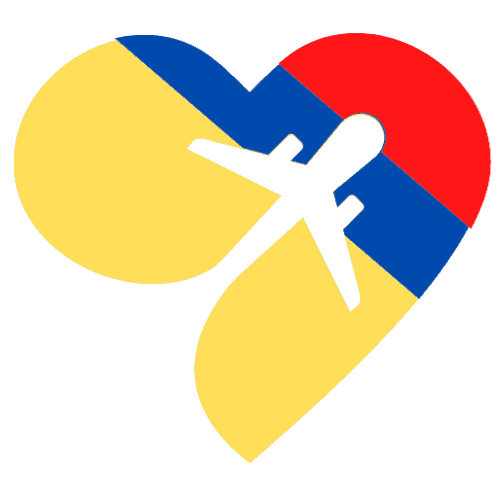
How To Breakdown Backpacking South America Budget? Here The Best Complete Guide 2024

The idea of backpacking through South America on a budget might be every backpacker’s dream, but it can also be quite intimidating to do it all on your own. Particularly for budget travelers.
But don’t give up just yet! Taking you one step closer to your goal is Giorgy’s mission! In fact, you can turn South America’s dream into a reality with a little research and planning!
It is a well-known fact that South America doesn’t do small. It is indeed a large continent, and its diversity is quite impressive. From the Amazon Rainforest to the Andes mountains, it has some of the world’s most impressive historical sites.
In terms of history, local culture, and landscape, each country offers a unique experience and plenty to explore.
This rough guide will help you plan how to backpack South America trip on a tight budget. This way, you’ll be more prepared and confident during your trip by knowing what to expect!
Embark on an unforgettable journey from the magnificent Cartagena, Colombia! Download my comprehensive Guide to explore the wonders of this incredible destination, and set off on your adventure feeling at ease and safe from the get-go.

Backpacking South America Budget [2024]
When compared to places like Europe, backpacking in South America is an excellent experience and your money goes a long way!
So, how much money do you need for backpacking in South America? Eheh, Giorgy is about to reveal it to you, keep calm, and don’t worry!

I am just giving an idea of how much money you should budget to best prepare for your next adventure. And remember that backpacking is not only dependent on price, but on your lifestyle and the country you are in as well!
However, the following countries Chile, Argentina, and Peru are usually the most expensive countries to visit in South America, followed by Ecuador, Brazil, and Colombia . Indeed cheaper countries such as Bolivia and Paragua could make you save a lot of money.

Backpackers who sleep in hostel dormitories, cook for themselves or eat at local restaurants, select their activities, and use public transportation are considered to maintain a tight budget of approximately $1000 a month.
If Giorgy’s math is on her side, the result is 30 dollars per person per day. You could also travel on a shoestring budget (by camping, hitchhiking, and hiking in South America the most popular trails on your own) for half the price! So, backpacking in South America in 2024 is not cheaper than a shoestring budget.
Chile, for instance, is safer than Bolivia, which allows you to camp more—allowing you to save on lodging.
You may have to spend a bit more on your backpacking South America on a budget if you want to experience some unique destinations or experiences such as the Galapagos Islands or South America hiking in Machu Picchu in Peru, but these are once-in-a-lifetime experiences you should definitely budget for.

Traveling solo and figuring out everything on your own isn’t everyone’s idea of fun, but Giorgy has a solution for those who need a little extra boost to embark on solo adventures.
For those who don’t have an interest or prefer traveling South America as a couple, there are organized overland tours to explore backpacking Latin America, in which you can simply sit back and enjoy the ride.
Cost Of Backpacking South America On A Daily Basis
The following is a brief breakdown of prices you might expect in South America. Giorgy is going into more detail about each country later on. So you can get a better idea of what to expect and choose where to go.
🥭Cost Of Backpacking South American Street Food: $1-5 dollars.
🍴Cost Of Backpacking Local South American Restaurant: $5-30 dollars.
🫕Cost Of Backpakicng Tourist Restaurant Food: $10-30 dollars.
🫗Cost Of Backpakcing South America’s Water: is less than $1 dollar.
🍺Cost Of Backpacking Beer In South America: $0.50-3 dollars.
🛏️Cost Of Backpacking South American Hostel Bed: $4-30 dollars.
🏨Cost Of Backpacking Private Room In South America: $15-60 dollars.
One of the most significant difficulties when budgeting your trip for 3 to 6 months in South America is the fact that there’s quite a big variation between countries and it can be an expensive destination!

Summary Tips For Budgeting Your South America Trip 2024
Hey Goofball! As an addendum to the above list, I’d like to share my top travel tips for keeping your budget even tighter.
Ready to know the trick to breaking down South America in a low-budget style in 2024? Keep in mind these tricks could be also helpful for a tight budget of 3 months or 6 months in South America.

🫰🏼 Less expensive country . Rather than spending most of your great time in the most touristy areas such as Rio de Janeiro , opt for a cheaper country like Bolivia (a hostel costs about $4 per night).
🌦️ Low/shoulder season . Besides saving money, traveling during the rainy season means fewer people and places all for yourself! This is most relevant if you are traveling on a budget for backpacking South America long term (3-6 months).
🚍 Type of transportation. Traveling by bus could break down your budget drastically. Use the following app to find and compare cheap bus tickets: Busbud . Keep in mind that sometimes flying can be cheaper.
Check any kind of possibilities to backpacking around south America before impulsively booking.
👩🏼🍳 Become your own Masterchef . Trying local specialties and street food is a great experience, and your wallet won’t cry either. Then why not cook your own food based on local ingredients from the local markets ?
This technique is going to weigh a lot on your budget especially if you are backpacking for 3-6 months in South America.
If you want to have extra food while traveling, you can even bring a Tupperware container.
🌃 The secret of the Nights Out . Is there a rule that says you must drink alcohol whenever you go out? Definitely not! It is still possible to have fun without alcohol, and not drinking on a nightly basis can also significantly reduce your travel expenses.
👣Free walking tours . Walking tours are usually offered free of charge in most of the big cities I visited. As well as getting to know new people, you will be able to learn more about the city’s history and local culture.
🏧 Cash vs Digital banking. Almost all of South America is embracing digital banking. By doing this, you will save money rather than constantly withdrawing from an ATM.
🧘🏼♀️ Slow travel. In addition to saving money, traveling long-term allows you to include more free days around the city and explore what you like without having to rush – which will also allow you to incorporate more free time.
Country-by-country Cost Of Backpacking In South America
A variety of factors can affect the cost of living in South America, including exchange rates and where you are in the country (e.g. big cities versus countryside, mainland versus islands, and so on).
Take into consideration a combination of countries based on the sights you want to see – this way, you can plan a trip according to your budget. Islands in South America are generally expensive regardless of the country, but don’t ignore them because they are worth it!

In general, backpacking is more expensive in Uruguay, Argentina, Brazil, and Chile. There are, however, many must-see sights in these countries, including Patagonia and the Atacama Desert.
The cheapest backpacking countries to visit are Paraguay, Peru, Colombia, and Bolivia, mainly due to favorable exchange rates. There aren’t many expenses on the mainland of Ecuador, but you can get very expensive on the Galapagos Islands.

It’s common for backpackers to visit the above-mentioned countries, but Guyana, Suriname, and French Guiana are also worth considering. You shouldn’t completely discount these destinations because they aren’t necessarily budget-friendly.
On the other hand, Venezuela backpacking is extremely cheap due to the political instability of the last few years. Check with your State Department equivalent prior to traveling here, as your decision to travel south america cheap, well here should not be taken lightly.
Note. Using exchange rates as a guide is always advisable because they can change quickly. When planning your trip, you are advised to seek an up-to-date conversion.
How To Backpack South America, Backpacking Argentina On A Budget
- Exchange rate: 1 USD = 147 Argentine peso
- Daily Backpacker’s budget: $30 dollars per day
- Daily Shoestring budget: $15 dollars per day
- Daily Midrange Holiday budget: $60-100 dollars per day

There’s a good reason backpacking Argentina is one of the top South American destinations!
It has gorgeous, chic cities such as Buenos Aires and Rosario, the lush countryside of La Pampa, and Mendoza’s wine country. Then there’s the Perito Moreno Glacier in Patagonia, a bucket list item. When you’re there, don’t miss an Asado with a nice glass of wine and some Argentinian beef.
Although asado can be expensive, there are many cheap food options, including Argentine empanadas, choripan, and pizza. Food is always cheaper in local supermarkets, so shopping there is always a good idea.

There is a wide range of accommodations available, included hostels in South America. From 🛏️ dormitory-style hostels (from $12 USD per night) to private rooms (from $50 USD per night) , or camping ⛺ in national parks (from $5-7USD per night).
From the Buenos Aires metro ( Subte 🚇) to an interconnected network of local buses covering the entire country, Argentina has great public transportation. The size of Argentina means large distances between major attractions, so ✈️ flying to Patagonia or Ushuaia may be your best option when planning your trip.
In the off-season, the popularity of these trips means that flight prices are expensive even on budget airlines like Aerolineas Argentinas.
A ticket to see the ⛰️ Perito Moreno glacier at Los Glaciares National Park costs $ 13 USD, but there are many parks that are much cheaper or free of charge in other places. It is also common for individual wineries to charge a much more reasonable tasting fee compared to a winery tour in Mendoza🍷, which can cost up to $ 200 USD per person.

How To Backpack South America, Bolivia On A Budget
- Exchange rate: 1 USD = 7 boliviano
- Daily Backpacker’s budget: $30-40 dollars per day
- Daily Shoestring budget: $17 dollars per day
- Daily Midrange Holiday budget: $50-100 dollars per day

Numerous wonderful adventures are waiting for backpackers in Bolivia, which is often considered the cheapest country in South America.
There is so much to discover for outdoor enthusiasts. Whether it’s cycling Death Road 🚵🏼♀️, marveling at the Salar de Uyuni 🧂, hiking South America the Amazon 🌱, or visiting Lomas de Arena. There is a thriving foodie scene in Cochabamba, and you won’t want to miss a ride on the cable car Mi Teleférico to see La Paz from above.
The cost of lodging isn’t quite as low as you might think, despite the fact that most things are very inexpensive. It will cost about $6-9USD per night to stay in a dorm room 🛏️, and about $15 USD per night to stay in a private room .

It is right, however, that food and transportation are extremely cheap, so be sure to savor the delicious fare at your local markets while you can. Bus and taxis are the best ways to get around, but keep an eye out for pickpockets and scams.
How To Backpack South America, Backpacking Brazil On A Budget
- Exchange rate: 1 USD = 5.50 Brazilian reales
- Daily Backpacker’s budget: $40-50 dollars per day
- Daily Shoestring budget: $25 dollars per day
- Daily Midrange Holiday budget: $80-120 dollars per day

In spite of being incredibly large, backpacking Brazil is a wonderful destination for backpackers. You can enjoy Carnaval 🎭 or a soccer match in Rio de Janeiro, hike in the Pati Valley or Tijuca National Park 🏞️, learn the samba or capoeira, or savor its delicious cuisines.
Backpacking Brazil, however, prices can rise very quickly, even up to quadruple normal levels, especially during peak season (December to March) . Unless you have your heart set on Carnaval, consider skipping it and going to San Salvador or Sao Paulo instead.
Its street food is very budget-friendly, similar to other countries street food. Restaurants often can be expensive, so consider grocery shopping and cooking in the hostel, but definitely sample feijoada (a stew of meat, a Brazilian national dish) while you’re there.
Due to its vast size of Brazil, there are many options for accommodation, including hostels 🛏️ (from $11 USD per night) , budget hotels 🏨 ($20 USD per night) , and camping (from $8 USD per night).

There are many convenient and widespread public transportation options in Brazil , but it is best to avoid them at night. Pay attention to your surroundings and take precautions against pickpocketing, carjacking, and other forms of theft.
In order to protect your valuables from sight, Giorgy suggests you invest in a money belt or alternative.
How To Backpack South America, Chile On A Budget
- Exchange rate: 1 USD = 964 Chilean peso
- Daily Midrange Holiday budget: $100-150 dollars per day

The world’s narrowest country can be a bit like Chile. Bring a jacket!
With a long and slender shape, Chile boasts a staggering array of biodiversity, from the peaks of Torres del Paine in Patagonia ⛰️ to the Atacama Desert ✨, one of the highest in the world.
In addition to the interesting Moai sculptures on Easter Island , you can visit the parks, museums, and architecture of Santiago, Valparaiso, and Via del Mar.
Its charming Lake District, its poet-diplomat Pablo Neruda’s homes, and its wineries rival those in neighboring Argentina’s Mendoza attracting tourists from around the world.

The cost of a 🛏️dorm-style hostel room starts at $10 USD, while a private room begins at approximately $ 40 USD. Due to Chile’s long coastline, there is an abundance of reasonably-priced seafood, as well as set lunch menus starting at $ 6 USD.
🚍 Bus travel is convenient and inexpensive, but not always feasible due to Chile’s length. It is largely considered safe to drive yourself places by renting a car or ✈️ flying with budget airlines.

According to the World Safety Organization, Chile is one of the safest countries in the whole of South America after Uruguay!
In spite of the fact that many natural attractions are free, Torres del Paine however charges non-Chileans about $ 25 USD per person. If you don’t know ahead of time, this can take a toll on your wallet.
It is also more challenging (and perhaps impossible) to visit Torres del Paine during the off-season because Chile has a less-developed tourism infrastructure in Patagonia than Argentina.
How To Backpack South America, Colombia On A Budget
- Exchange rate: 1 USD = 4529 Colombian peso
- Daily Backpacker’s budget: $35-45 dollars per day
- Daily Shoestring budget: $20 dollars per day
- Daily Midrange Holiday budget: $40-80 dollars per day

This is one of the most popular backpacking destinations for a good reason: good hostels in South America, parties, and excursions abound.😍
Beautiful beaches , colonial architecture, and great weather make this a great place to take Spanish lessons. Some of the more notable cities are Bogota, Cartagena , Cali, and Medellin , and Santa Marta , Rosario Islands , San Bernardo Archipelago , and Playa Blanca offer great beaches.
Besides coffee production , Colombians are famous for their music, which includes Juanes, Shakira, Fonseca, and many others. Trekking to the Lost City, sailing to Isla Gorgona, and exploring Tayrona National Park 🏞️ are all available for outdoor enthusiasts.

It is possible to find a comfortable bed in a 🛏️ hostel dorm room for as little as $4 USD per night, but it is important to keep in mind that budget accommodation is often not air-conditioned, and mosquitoes may prevent you from opening the windows.
Depending on the season, a private room with AC will cost between $10USD, and $20 USD per night.
Do Colombian beaches resort to anyone? Here is a list of the best ones you could find in the whole of Colombia!
There are also set lunch menus for $3-4 USD, and street food like arepas and empanadas costs as little as $1 USD.

🚍 Minibusses , called colectivos, are the best way to travel within the country, as well as intercity (charter) local buses. There are many great deals on flights with Viva Air ✈️- often cheaper than taking the bus, although with a greater environmental impact.
Avoid renting a car, or renting a boat alone or walking around too much after dark to avoid pickpockets and robberies.
How To Backpack South America, Ecuador On A Budget
- Exchange rate: US dollars are used in Ecuador

Having all sorts of sights that are eminently accessible to backpackers, Ecuador’s size-to-activities ratio is unbeatable. Whether you’re looking for outdoor adventure in Baos or Ibarra, an urban vibe in Quito, or natural wonders in Cajas National Park, Ecuador is the perfect place for you.
The Amazon 🌱 is within easy reach, as are the Cotopaxi Volcano and Laguna Quilotoa ?, as well as the Incan splendor of Ingapirca. The country of Ecuador is one of 17 countries with a megadiverse ecosystem and the Galapagos are just one part of Ecuador’s rich culture.

Furthermore, mainland Ecuador is much cheaper than the Galapagos. 🛏️ Hostels in South America, on the mainland can be found for as little as $6 USD, and 🏨 budget hotels can cost between $20 and $30 USD.
Many attractions are relatively inexpensive, and street vendors or markets sell cheap food as well as set lunch menus. If you’re feeling adventurous, you might also want to try guinea pig or cuy, along with Ecuadorian empanadas and arroz con pollo.
Long distances can be covered by comfortable local buses🚍.
How To Backpack South America, Paraguay On A Budget
- Exchange rate: 1 USD = 6978 Paraguayan Guarani
- Daily Backpacker’s budget: 25 dollars per day
- Daily Midrange Holiday budget: $50 dollars per day

Among South America’s lesser-known destinations, Paraguay is often overlooked. Don’t do it! The place is very budget-friendly, less touristy, and offers a rare opportunity to get off the “gringo trail” and discover something new.
UNESCO World Heritage sites, Jesuit ruins, and the Itaipu Dam await visitors at two unesco world heritage site in Asunción and Encarnación.
Visiting Iguazu Falls💦 in Brazil or Argentina is sometimes cheaper and easier than Paraguay – the falls are close to Ciudad del Este, in eastern Paraguay. Nature is plentiful in Paraguay, from the vast Chaco wilderness to Parque Nacional Ybycu, the country’s most popular park.

A dormitory bed 🛏️ costs around $6-10USD per night, and a private room costs around $ 20 USD plus. It is inexpensive to use public transportation, but (as in other places) beware of pickpockets.
😋A nice dinner with drinks for $10-20USD can be had at a local restaurant starting at about $3 USD per person.
How To Backpack South America, Peru On Budget
- Exchange rate: 1 USD = 3.90 soles

The country offers many other fabulous experiences besides 🗿 Machu Picchu and the Inca Trail, are two absolutely transformative ones!
There are lots of budget-friendly and fun best things to do in Colca Canyon , Lake Titicaca , Lima , and Cusco, including South America hiking and exploring Rainbow Mountain 🌈. Backpackers flock to Peru for a good reason!

If you didn’t have the chance to try guinea pig in Ecuador , you can try it in Peru in a variety of filling and substantial dishes with root vegetables and lean proteins. Ceviche is a delicious dish from Peru that you must try.
A full meal of Peruvian food can cost as little as $2 USD at a local restaurant. When you stick to local restaurants, you’ll be able to eat out almost every meal without going overboard on your budget.

The cost of accommodation is also quite affordable, with dorms 🛏️ costing as little as $7 USD per night, and private rooms costing as little as $20 USD. If you’re traveling a long distance, you can take ✈️ cheap flights or a bus around the country.
Taking a flight will not necessarily save you money, but it will save you a lot of a great time!
Does It Snow In Peru?❄️ If you are a curious kiddo like me, yes it does! Let’s find out all the details about snowing in Peru in my travel guide.
How To Backpack South America, Uruguay On A Budget
- Exchange rate: 1 USD = 40.80 Uruguayan pesos
- Daily Backpacker’s budget: $50 dollars per day
- Daily Midrange Holiday budget: $70-100 dollars per day

South America’s most expensive country for backpackers is Uruguay. Don’t rule it out, though! Besides Montevideo, there is much to see in Punta del Este and Colonia del Sacramento (where the 🚤 ferry to Buenos Aires leaves from).
Get in touch with nature here via horseback riding or hot springs, and see Carlos Páez Vilaró’s stunning seafront Casapueblo.

Even a 🛏️ dorm-style accommodation can cost upward of $20 USD per night in Uruguay and nightly rates can reach $ 35 USD in high season. For budget travelers, the best time to visit Uruguay is off-season, as you’ll save a lot on accommodations.
?It is likely that a set lunch menu will cost between $7-8 USD per person and a cup of coffee will cost over $2 USD. You might be better off shopping for groceries while in Uruguay than eating out.
The cost of traveling by bus is relatively low, though not as low as other destinations in South America!
How To Backpack South Amreica, Venezuela Backpacking On A Budget
Foreign offices around the world strongly discourage travelers from visiting the beautiful, dangerous, and destroyed country of Venezuela. The country used to be one of the richest in South America , with huge oil reserves, but it became a country of poverty and unrest because of political corruption.
This is, unfortunately, the sadness true behind Venezuela!

How To Backpack South America, The Guianas
Three territories in South America are known collectively as the Guianas: Guyana, Suriname, and French Guiana. Most travelers in South America skip the Guianas because they are difficult to reach and expensive.
Despite being located in South America, French Guiana is a part of the EU and therefore a part of the French communist party. The country does not have many tourist attractions and no backpacking facilities at all.

Travel Budget French Guiana: $80 per day.
Dutch is the official language in Suriname , formerly known as Dutch Guiana. The Cloud Forest covers more than 90% of Suriname, which has some awesome fauna and flora to see, such as river dolphins, 1,000-pound leatherback turtles, and gold-footed tamarind monkeys.
Travel Budget Suriname: $60 per day.
Located between Venezuela and Brazil and bordered by the Atlantic Ocean in the north, Guyana is the only English-speaking country in South America. Kaieteur Falls💦 is the tallest free-falling waterfall in the world, a site that attracts tourists every year.

As well as massive freshwater fish, Arapaima, giant anteaters, piranhas, tarantulas, and jaguars, you can also see piranhas, tarantulas, and jaguars in the Amazon jungle🌱 and savannahs of Guyana, and for birders, the 900 species of exotic birds make this a must-see trip.
Travel Budget Guyana: $70 per day.
Is South America Safe?
This is the main question of a lot of people wondering if backpacking Latin America is generally safe for solo travelers and whether how is traveling south America as a couple.
I can confidently say South America 🌎 is safe not only because I fell in love with this part of the world and left a great impression. But because I experienced with my own skill and saw with my own eyes the truth behind Hollywood’s lies.

It is possible to wind up in the wrong place at the wrong time. And, if I am being honest, European countries and North American states are more likely to have problems than regions in Central and South America .
As these places could be especially dangerous, guided tours would be more appealing. In Colombia, Comuna 13 and Rio de Janeiro , for example. But as you are traveling solo or traveling as a couple in South America, you are going to be alright!

The Safest Countries in South America
I know not everyone believes in Giorgy *sigh* , but you can find out for yourself with the Global Peace Index . The safest countries in the world are Iceland and New Zealand. France is ranked 55th and the United States is 122nd!!!
Uruguay is the most peaceful nation in South America, followed closely by Chile in 55th place. Argentina comes in at 68, Paraguay at 75, Peru at 86, and Ecuador come in at 88. Bolivia’s ranking is 105, and Brazil’s at 128. Colombia is 144 and Venezuela 152.

That’s right, I didn’t lie to you! Traveling in some South American countries is safer than traveling in the USA or many other countries around the world!
Experiencing South America Alone
The Latin American continent is generally safe to visit as a solo female traveler 🙆🏽♀️ (and not just) . Giorgy is indeed always willing to provide support to my Gextremers when they set out on a South American adventure.

As a result, I will be sharing some of my findings from my solo travel (as a female) to South America.
Hey Goofball! I am sorry to disappoint you if you were looking for travel tips on how is traveling in South America as a couple…
USEFUL TIPS FOR SOLO TRAVELERS IN SOUTH AMERICA Solo Female Travel South America: Safety Girls Tips! How To Planning Your First Unforgettable Solo Travel Trip!
Staying Safe As You Travel
Here are some travel tips I would like to share with you all about staying safe when traveling around South America.
Know where you are heading. There are certain areas people should avoid, and South America is no different. Be sure to do your research before visiting a foreign country.
You should also be aware that taking an overnight bus (which is great if you’re able to sleep anywhere and want to save money on accommodation) is a little riskier, especially if you arrive very early or very late at night.

❤️ What travel insurance do I need for backpacking in South America? I cannot express how important travel insurance is if something happens to you (accident, illness, etc.). It save my ass when I had my accident in Nicaragua , and it’s better to be covered instead of asking yourself the famous question: “What now?” . Lol, it’s saving you thousands of dollars.
😷Altitude sickness is not a joke. Most people are not aware of altitude sickness above 2’500 meters (8’200 feet), yet South America has many high-elevation locations, such as Cusco and La Paz.
Don’t let the altitude keep you from experiencing a bucket-list adventure because you are sick! You can beat altitude sickness by eating coca leaves, drinking coca tee, or chewing coca candies.

🍹Drink in moderation. You are not only saving money by not drinking alcohol, but you are also protecting yourself from unwanted situations since it makes you more vulnerable. If you are traveling to high altitudes, remember that alcohol slows down your body’s ability to acclimate.
💎 Not be outstanding . Also, try to avoid attracting the wrong kind of attention with unusual gadgets or jewelry.

🫂Reassure the beloved ones. Sharing your South America Backpacking itinerary will help your beloved ones to know where you are.
👀Become a local . It is true that South America has a wide variety of indigenous languages and local cultures, but Spanish is spoken almost everywhere (Portuguese in Brazil) and English is not widely spoken.
The more Spanish and Portuguese you know, the easier it will be to get around Latin America and communicate with the locals! Fortunately, Giorgy’s native language (Italian) is similar enough to Spanish to allow her to learn it while traveling.
For those who are really interested in learning Spanish, I suggest Duolingo app 🗣️. Otherwise, a translator will still be able to get you backpacking around South America and handle emergencies if you don’t have much time.

Meet my Galapeños Couchsurfing host, and now international friend, Felix , and help him outreach the goal of hosting at least one person from each country around the world!
🪪Having a copy of your documents are part of your backpacking essentials South America . You never know what could happen, so always keep a copy (paper and digital) of all your essential documents. You might encounter fake police in your area, so always show them a copy of your documentation.
Get the Complete Travel Safety Tips for FREE!
We respect your privacy. Unsubscribe at anytime.
South America’s Best Cheapest Backpacking Countries Flying Destination
There are several direct flights from Europe to South American capital cities , especially from Spain and Portugal✈️ (Iberia or Air Europa), as well as from major cities like London, Amsterdam, and Frankfurt. Viva Colombia and Spirit Airlines often fly to South America at a good price from the US.
You can use a flight search engine such as Skyscanner to find the best flights from your location. Try to find a great deal by being flexible on the dates, the days of the week, and the airport.

Avianca, a Colombian airline, has its hub in Cartagena , often offering good fares. However, Giorgy flew from Madrid to Santa Cruz in Bolivia with Air Europa. As a result, I flew straight into La Paz instead of gradually acclimatizing to the altitude in Bolivia due to price and logistical reasons.
Check Skyscanner ✈️ for the best flight deals here, or download the Skyscanner app .
The Best Time To Travel South America 2024
South America is a big continent with different climates, so it is important to decide when to travel . So let’s discover together South America at its best!
You must consider what you want to do during your trip and which places you wish to visit before you decide when to travel.
Generally, the southern hemisphere experiences summer☀️ between November and February and winter❄️ between June and August. May to September is summer in the Northern Hemisphere.

Traveling during the peak season will generally require booking months in advance and everything will be more expensive. The best time to travel to South America would be April and May or September and October when the temperature is still pleasant and the prices are more affordable.?
In addition, it’s a good idea to check the opening hours of the region you’re planning on visiting. February is a closed month for the Inca Trail , for example. As with most amazing things, some places also have peak seasons, such as the Galapagos Islands , which are popular during July and August.
Backpackers’ Accommodations In South America 2024

Backpacking Latin America, you can find one accommodation that fits your tight budget! Most backpackers opt for hostels in South America or Couchsurfing 🛋️, where people offer a free place to stay in their houses. As implied by the name, they usually offer their own couch.
It would be a good idea to participate in a program such as work away. Providing beds and boars in exchange for volunteering… all sorts!
Consider booking a private room through a hotel or Vrbo if you are looking for something more peaceful.
Hostel Anyone?🛌🏼 Hey Goofball! Keep in mind that staying in hostels in South America isn’t always easy. Indeed, if you want to know what’s the concept behind it, read my hostel experiences !
The Best Way To Travel South America In 2024
People would say a piece of cake! Indeed backpacking around South America is generally easy and also cheap. Whether you ✈️fly from one country to another, or you use international services to move around all of the other capitals.

I happen myself to travel to South America by 🚍bus because it is convenient and usually inexpensive (ask the staff at your accommodation for more details about the bus you have to take and the fair) !
The long the bus ride takes to reach the destination, the less expensive the bus tickets become. It also depends on how much time you have on your holiday schedule and on your budget too.

🚉Trains? Kind of inexistent in South America, only if you want to take a scenic route which is pretty much pricy. But you will encounter ferries, a common mode of transportation in the Amazon region , or while exploring Patagonia.

A popular way to travel backpacking around South America at your own pace is by Overlanding in a campervan. During my stay in Ecuador , I had the opportunity to meet two brothers cycling in South America on bicycles and a couple traveling around the world with their motorcycles?!
Where To Backpacking In South America On A Budget In 2024?
After giving you all an inside of South America, it’s time to choose where to start your next goofy budget backpacking adventure of weeks… 3 months or 6 months in South America!

Best Places To Backpack In South America
As I mentioned earlier, South America is a pretty large continent, so you must at least have an idea of the places that interest you!
Whether your unmissable destination is Galapagos Island in Ecuador, hiking in South America some specific spots, exploring the Rainforest Amazon , or discovering ancient ruins , plan an itinerary around amazing things that you really want to do. Then focus on how best to make it happen!
So you won’t get overwhelmed or lose a lot of time on your day trip. So whatever you decide is going to be the best places to backpack in South America!

The Best South American Countries To Visit
There are a number of beautiful, magical, fun, and exciting things to do in each of the South American countries, although some are more popular than others.
For instance, I personally enjoyed Colombia the most, followed by the Amazon Rainforest (I know it’s not a Country but it’s part of 5 countries lol) Ecuador, and Peru, but it really depends on what you are looking for.
👩🏽💻Digital Nomad! Colombia is one of the most welcoming countries for this, and the enchanting Cartagena is your go-to destination. I have an in-depth guide on digital nomads in Colombia that you don’t want to miss!
Listed below are some Travel Guides for each country, so you can decide which is the best South American country for you to visit!

🇨🇴 Colombia 🌱 Amazon Rainforest 🇪🇨 Ecuador 🇵🇪 Peru 🇧🇷 Backpacking Brazil
If you are still unsure where to head, head back to one of my previous posts where I mentioned my top destinations in South America travel guide.
South American Immigration & Border Control
Check each individual country’s entry documents, vaccinations, and visa requirements before you travel to South America.

Local people usually do not have to follow the same border procedures foreigners are required to do, so when you cross any border, make sure you get an exit stamp for the country you’re leaving, and an entry stamp for your destination – you may have to request that your bus wait for you.
Visa Requirements 🛂 check this website for up-to-date travel advice and entry restrictions when planning to backpack South America.
Suggested Central And South America Backpacking Trips
Honestly, I don’t feel like giving you a South America backpacking itinerary for a week, one month, three months, or six months. Each of us has a different taste in adventures since we are all unique in our own way.
Like I always say: “Part-time dreamer, full time Goofball”.
Unlike me, you love cities and food more than hikes and camping . Or maybe you are more interested in exploring volcanic terrains in Central America.
You are probably thinking about where you want to go at this point and making plans in your head about where you want to go already. Just keep in mind to have fun!

What To Pack For South America Backpacking On A Budget Adventure 2024
Because of the diversity of terrain and varying weather conditions , backpacking south america packing list for your backpacking trip in South America can be a tough challenge.
So, what to pack backpacking South America?
As a backpacker, it’s important not to overpack and your luggage needs to be as light and practical as possible, so to help you achieve that, I’ve created a backpacking south america packing list of some of the essential items you need to pack.

🎒 Backpack South America
This is the most important item for your adventure because it will be your companion on the road.
Backpack Vs Bag?️ Check this article to understand better whether a Backpack or a bag is better for your next travel experience!
Your backpack should carry everything you need and still be comfortable to wear. Generally, it’s a good idea to pick a backpack that is sturdy, offers some back support, and doesn’t attract too much attention.
As for the backpack size, it’s measured in liters, for a short trip (a few weeks to a couple of months) I recommend getting a backpack that ranges from 45 to 60 liters.

👕 Clothing Backpacking Essentials South America
When packing clothes for your trip, it’s smart to pack for a week or less and then wash your clothes when needed (most hostels in South America offer to wash your clothes for a few boxes).
This backpacking south america packing list is adjustable according to your needs and preferences, but these are some best things that I think are essential to pack – Well, expect to find out useful and also unusual stuff in here, I am the Goofball, remember?
- 7x underwear.
- 2x bras (regular or not, depending on the activities you are going to do).
- 1x long-sleeve top.
- 2x short sleeve cotton T-shirts.
- 1x hiking trousers.
- 2x leggings.
- 1x light dress.
- 1x scarf (that you can easily transform into a pillow wherever you are traveling to).
- 4x socks (include also two pair of hiking socks in case you plan some hikes along your journey).
- 1x fleece jacket.
- 1x light waterproof jacket .
- 1x jumper/hoodie.
- 1x hiking boots .
- 1x everyday best shoes for backpacking South America (the most comfortable walking shoes).
- 1x flipflops/sandals.
- 1x beanie/warm hat.
- 2x swimsuits.

🪥 Toiletries
- 🧼 Travel liquids worries-free: LUSH offers essential, travel-friendly beauty such as toothpaste, shower gel, and shampoo. Allowing you to travel the world and travel liquids worries-free.
- Deodorant: Wild is so far one of my best deodorants. Ecofriendly and offers refills so not being in need to buy a completely new box.
- 😎Sunscreen: treat yourself with care instead of making your poor skin cry!
- 🦟 I nsect repellent: if you don’t want to be eaten alive, I truly recommend taking a good insect repellent;
- 1x razor and spare blades
- Cotton buds
- 💊 Sanitary products: if you’re a tampon user, it might be a good idea to stock up on tampons as they are less available and more expensive. Pads are widely available in South America or switched on the menstrual cup’s use!
- First aid-kit
🪪Documents, Money & safety
- Passport/visa
- Waterproof bag: a dry bag is coming in handy to keep your electronics or any important belongings dry.
- Any booking confirmations (plane/bus/train/hotel/tour)
- 🩺 What Travel Insurance do I need for backpacking South America?
- Credit card/ Debit card and emergency cash
- 🔐Padlocks for hostel lockers

Miscellaneous items
- 👝 Packing cubes : They make it so easy to organize and save a lot of space in your luggage (A LOT, they saved me in a few situations) .
- 😎 Sunglasses : If you would like to copy my Goofball style, this is the only pair of sunglasses I use.
- 🫗 Water bottle: Water is important, bring a reusable bottle with you that you can fill from wherever you are.
- 🎧 Earplugs aka headphones: buy two in one!
- Your Personal Eletronics.
Enhance your exploration of South America with this comprehensive packing list specifically tailored for Colombia! Discover more and make the most of your journey with these essential travel essentials.
Wrap-Up: In-Depth Guide To Backpacking Through South America On A Budget in 2024
Don’t be intimidated to embark on your journey through South America on a budget. If you plan ahead, this myriad of cultures and landscapes is going to be one of the most valuable experiences of your life!
Whether you plan on traveling for a week or a year, there is no shortage of amazing things to do.

I hope this guide helps you navigate your trip confidently and easily. Don’t forget to stay open and flexible and enjoy the beautiful culture and landscape that awaits you!
Have a good experience in South America Ext(d)re(a)mer!
South America Backpacking Travel Planning Guide
🚑 Should I buy travel insurance? 100% YES! — With basic coverage averaging just $50 for your stay, enjoy peace of mind with a plan from Travel SafetyWing , one of the biggest names in travel insurance. ( Read more ) 🚰 Is it safe to drink water in South America? Yes! — It is indeed safe to drink tap water in most South American cities. Not in all areas but people usually do not get sick and prevent it by using the Water-To-Go filtered bottle. ( Read more ) 🚗 Is it safe to rent a car in South America? Yes — Renting a car is one of the best ways to see the country because public transportation cannot reach everywhere! I always rent with Discover Cars , which checks both international companies and local companies, so you get the best rates. ( Read more ) 🎒 Is it safe to travel to Latin America? Absolutely yes! —I am going to reveal all the secret tips that no one tells you about safety in Latin America! (Read more) 📴 Will my phone work in Cartagena? Maybe — It depends on your company, so check with your provider. If you don’t have a free service, buy a SIM Card once landed in South America. ( Read more ) 🛌🏼 What’s the best way to book my accommodations? For hotels, Booking is the best site, but for hostels, use Hostel World . If you’re considering a flat on Vrbo , don’t forget to also check Couchsurfing , which is free and you stay with locals. 🧳 What do I pack for South America? Head to the Ultimate Cartagena Packing List to get all the info you need on packing for Latin America (and what not to wear) . 🛩️ What’s the best site to buy flights? For finding cheap flights, I recommend Skyscanner . 🛂 Do I need a visa for South America? Likely Not — U.S., Canadian, and most European Passport holders don’t need a visa for South America. BUT check here for more travel requirements. The majority of travelers will receive a 90-Day stamp Tourist Visa upon arrival.

The 12 Cheapest Countries to Visit in South America
By Author Arakita Rimbayana
Posted on Last updated: 24th January 2024
South America is popular among all types of wanderers, including budget travelers. Not only does it offer various affordable (and even free) activities, the cost of accommodation, dining, and transportation here is generally low.
For that reason, South America promises a thrilling travel experience without breaking the bank.
We’ve ranked the cheapest countries to visit in South America based on the average amount you can expect to spend in each. These costings include accommodation, public transport, and meals.
Keep in mind that the cost of food can vary greatly depending on the type of restaurant, location, and dining habits. The same applies to accommodation; that’s why we provide both hostel and mid-range hotel rates.
Click to navigate this article:
So here’s our list of the cheapest countries to visit in South America.
Note: Some countries in South America are going through political unrest, which influences their economy, and means prices can go up (or down) significantly. As a result, this list may change from time to time as we try our best to stay up-to-date with the current situations.
Exchange rates are also accurate as of late 2023, so double-check these against the latest rates for the most accurate conversions and bear in mind that cash is king in many countries in South America, so while a credit card can be handy in major cities, you’ll want to either use an ATM (and check it doesn’t charge you extra for withdrawing money) or a currency exchange offering a decent rate when you arrive.

1. Paraguay ( from $15 USD per day)
- Budget hostal: $8 USD
- Budget restaurant: $6 USD
- Overnight bus journey: N/A
- Cost per day: $15
The cheapest country in South America is Paraguay, a non-traditional tourist destination, which makes this country an attraction of its own.
With 110,000 PYG ($15USD) a day, you stay at a hostel (58,000 PYG or $8 USD per night) and a three-course meal (around 44,000 PYG or $6 USD per meal).
Whether it’s to see the colonial architecture of the well-preserved Jesuit missions , explore the vast, unspoiled wilderness of Chaco, or taste the tantalizing flavors of its one-of-a-kind cuisine, you get to experience all that with fewer crowds.
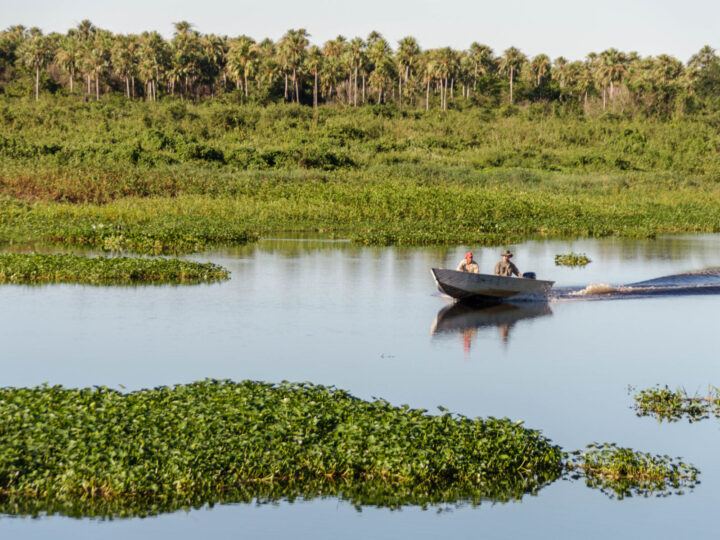
It’s relatively safe to explore cities in Paraguay on your own, but the lack of other tourists can make it a very strange experience! However, we recommend joining a tour or hiring a local guide if you plan on navigating off the beaten path, particularly if you don’t speak much Spanish.
2. Ecuador (from $21 USD per day)
- Budget hostal: $5 USD
- Overnight bus journey: $14 USD 9 hrs
- Budget restaurant: $2 USD
- Cost per day: $7 + $14 = $21 USD
The second cheapest country to visit in South America is, Ecuador, which packs a punch with its diverse attractions: from the unparalleled wildlife of the Galápagos Islands to the fascinating and rich culture.
Budget-savvy travelers will love that a daily budget, excluding the cost of a Galápagos tour or cruise, of just $21 USD can go a long way in this friendly country.
When it comes to food, basic meals cost around $2 USD, but if you want more than rice and potatoes, expect to pay around $6.5 USD per dish.
As one of the cheapest places to visit in South America , it’s not difficult to find hostels in Ecuador, especially in popular tourist destinations like Quito and Cuenca. A hostel bed costs from $5 to $20, but private rooms (even at hostels) may cost anywhere from $20 to $50.
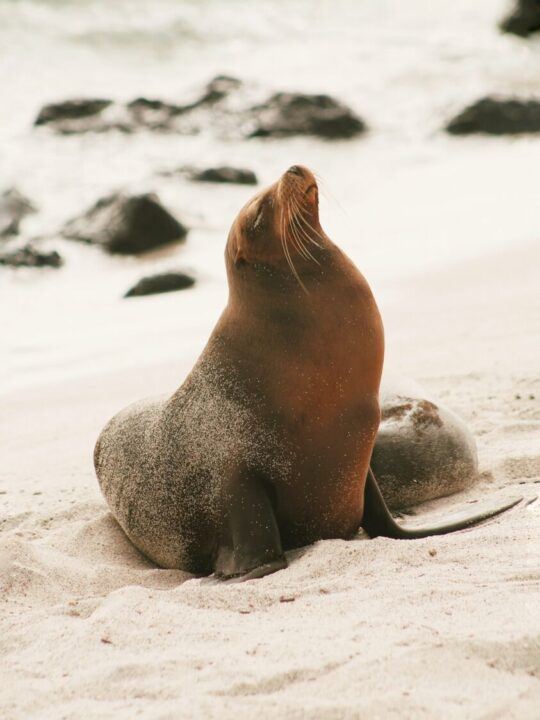
Interestingly enough, Ecuador uses the US dollar, so the added bonus of visiting this country is that you don’t need to worry about finding a good exchange rate!
3. Peru (from $23.5 USD per day)
- Budget hostal: $7 USD
- Budget restaurant: $2.5 USD
- Overnight bus journey: $14 USD 18 hrs
- Cost per day: $9.5 + $14 for buses = $23.5 USD
The third cheapest country to visit in South America is Peru, where an average day traveling here costs around S/89 or $23.5 USD. A meal at a local restaurant can cost anywhere from S/ 20 to 30 (about $5 to $8 USD), while street food and snacks are half the price – relatively cheap for such a thriving culinary scene that pretty much guarantees delicious food, even at street food stalls.
When it comes to accommodation, you can expect low prices of around S/ 27 or $7 USD per night at a hostel (but triple for a mid-range hotel).
Peru’s archaeological sites and breathtaking nature make it one of the most beautiful countries in South America, too. Among them is its focal point, Machu Picchu, the ever-popular Inca Trail , and the magical Sacred Valley , all of which never cease to attract visitors.
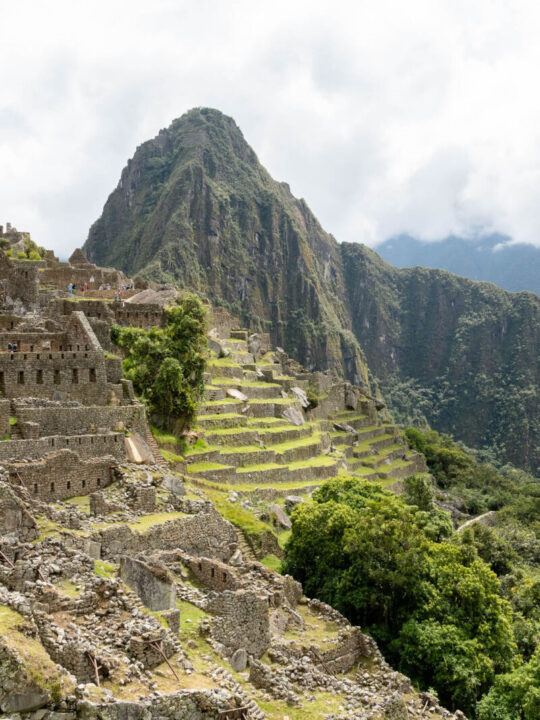
Before the 2023 protest, Peru was one of the safest countries in South America for independent solo travelers. Unfortunately, the latest incidents have had significant impacts on its tourism; some sites are temporarily closed, and others require local guides.
If you plan on visiting Peru in the near future, please keep yourself up to date through our guide to the safest South American countries to visit and read up on when to visit Machu Picchu to help you navigate the best weather for visiting this UNESCO World Heritage site.
4. Bolivia (from $26.5 USD per day)
- Budget restaurant: $4.5 USD
- Overnight bus journey: $17 USD 9 hrs
- Cost per day: $9.5 + $17 for buses = $26.5 USD
Coming in just behind Peru is Bolivia, which ranks as the fourth cheapest country to visit in South America.
To explore Bolivia conveniently, you’ll need around 183 BOB ($26.5 USD) per day. Dining at local restaurants costs anywhere from 30 to 50 BOB ($4.5 to $7.25 USD), while higher-end restaurants in cities like La Paz or Santa Cruz can be more expensive, with prices ranging from around 100 BOB ($14.5 USD).
The gap also applies to accommodation. While hostel rates are around 34.5 BOB ($5 USD) only, mid-range hotels can charge 221 BOB ($32 USD) or more.
Transportation can also be very affordable, with bus rides the most economical means of getting around the country – although, for safety reasons, taking a flight can often be better.
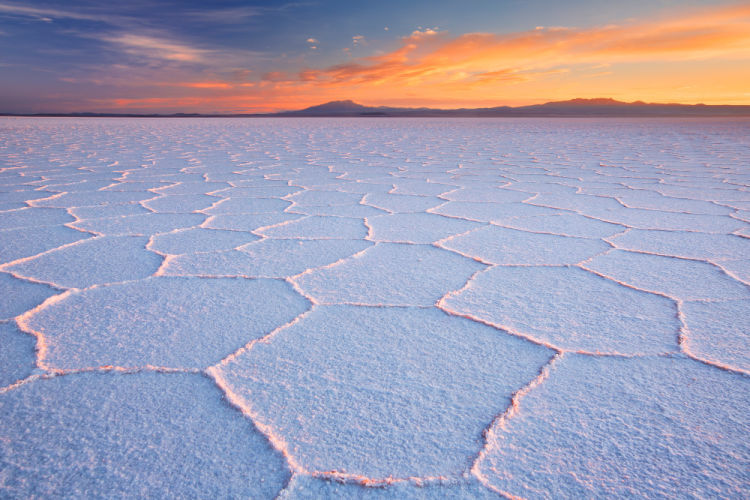
Being the home to the world’s largest salt flats, El Salar de Uyuni , makes Bolivia one of the best South American countries to visit. The country’s indigenous communities and ancient civilizations have left behind a fascinating history and cultural traditions that are still present today.
Bolivia is relatively safe to visit independently, although we recommend traveling with friends, especially if it’s your first time in South America.
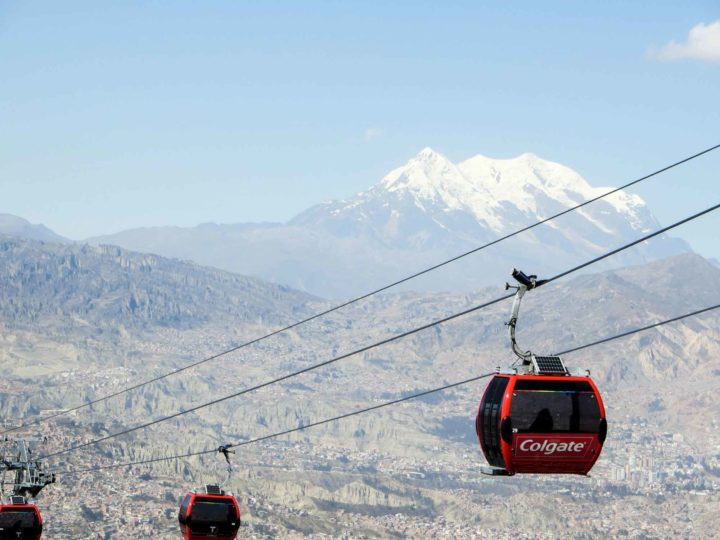
Those who insist on going solo should find our article about things to know before visiting Bolivia helpful, whether they’re hitting the Salar de Uyuni, Lake Titicaca , or heading deep into the jungle and Madidi National Park .
5. Colombia (from $34 USD per day)
- Budget hostal: $4 USD
- Budget restaurant: $1.5-$3 USD
- Overnight bus journey: $27 USD 9 hrs
- Cost per day: $7 + $27 for buses = $34 USD
Surprisingly, Colombia comes in middle of the pack when it comes to the cheapest countries in South America, Here, on average, you can expect to spend around 144,000 COP ($34 USD) per day if you’re staying at hostels (which cost around 17,000 COP or $4 USD per night).
Perhaps due to the cheap cost of travel here, but probably also because it’s a truly incredible destination (it’s among founder Steph’s favorite countries in South America), visitor numbers to Colombia have rapidly increased in the last decade, making it one of the most popular destinations to visit in South America.
So captivated by the country’s charm – whether it’s the mega biodiversity, friendly local people, low living cost, or all of the above – some have also been unable to resist making Colombia their permanent home.
Colombia is a great place to visit if you’re on a tight budget thanks to the affordable price of traveling here.
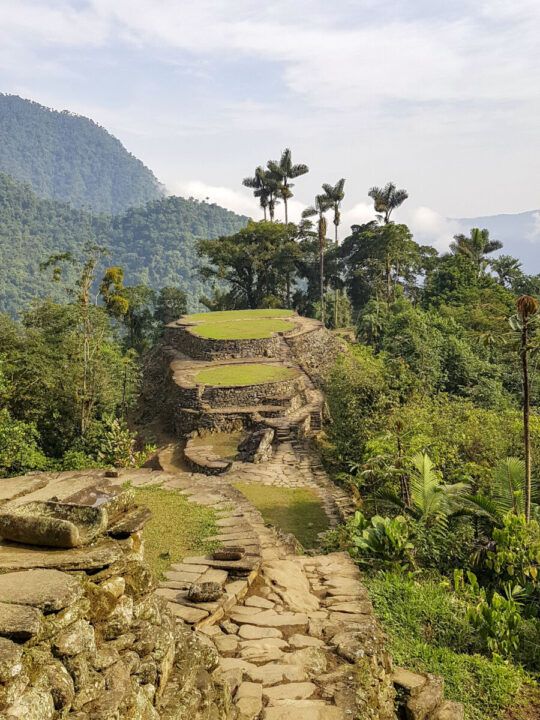
Meanwhile, one night at a mid-range hotel for a double room costs almost as much as the average daily budget, so you can expect to pay around $50 USD per day if you’re traveling as a couple.
A meal at a local, mid-range restaurant is around 17,000 to 25,000 COP (about $4 to $6 USD). Street food and snacks can cost as little as 7,000 to 14,000 COP ($1.5 to $3 USD).
A big factor that sets Colombia as the most affordable country in South America is how easy it is to explore the country on a budget.
Planning Your Trip to South America?
Save time, stress & money with a customized travel itinerary planned for you by a South America expert
Most of what we consider to be the top places to visit in Colombia don’t require you to join a tour, so you’re free to set your own budget and time and can head out to Colombia’s beautiful beaches, glorious national parks , and major cities such as Medellin and Cartagena at your own leisure.
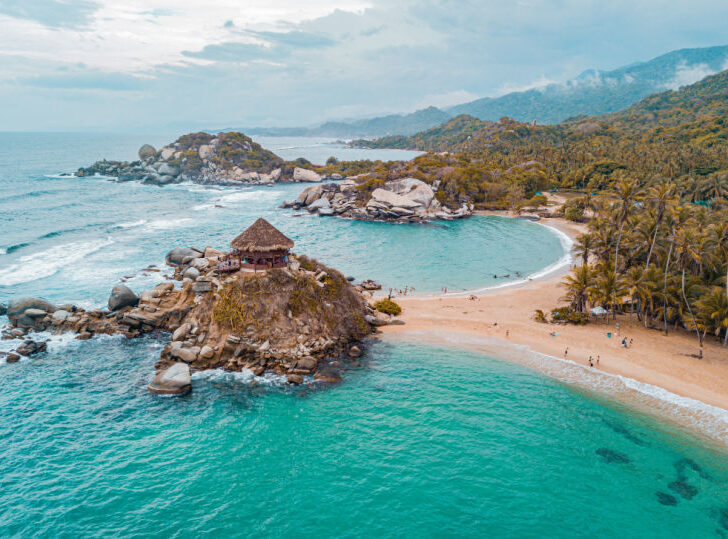
6. Argentina ($43 USD per day)
- Budget restaurant: $6.5 USD
- Overnight bus journey: $84 USD 17hrs
- Cost per day: $11.5 + 84 = $95.5
Argentina is a land of breathtaking beauty and eclectic wonders, where soaring mountains and glittering cities share the stage with wildlife colonies, world-class vineyards, and the monumental Iguazu Falls.
Argentina economy update
The Argentine economy is a huge mess at the moment, with inflation expected to hit 200% this year. Using Argentine pesos can therefore be a nightmare – and mean you lose a lot of money. The blue dollar (an unofficial exchange rate that gives you a better conversion than the official rate) is around, but if you want to avoid carrying lots of cash, you can now pay using your credit card and get an exchange rate similar to the blue dollar rate. You must choose to pay in Argentine pesos (not USD!) to secure this rate.
Both Mastercard and Visa give you what is called the MEP rate, which is almost as good as the blue dollar rate. Mastercard will charge you the official rate but refund you the money a few days later; Visa will charge you the MEP rate from the beginning.
If you do want to have some Argentine pesos for paying in cash (which I highly recommend as you will need them for some restaurants and attractions), it’s best to use Western Union, whereby you send cash to yourself using the Western Union app and then withdraw it in Argentine pesos from one of their branches in Argentina. Bear in mind, those in El Calafate and Ushuaia can run dry of notes, so it can be easiest to do this in Buenos Aires.
Additionally, you can bring USD (unmarked and untorn hundred dollar bills), which you can exchange at “cuevas” (unofficial exchange houses). These will be able to give you the blue dollar rate and any hotel owner will be able to tell you where your nearest one is. Souvenir shops in most parts of the country will be able to give you pesos in exchange for dollar bills – although they might not give you the best rate.
Avoid cash machines. Currently, the maximum withdrawal is the equivalent of $15 USD in Argentine pesos and it will cost you $10 USD in fees.
Its capital city, Buenos Aires, attracts millions of foodies and football fanatics alike, so it should come as no surprise that it’s the most popular country in South America to visit (according to Wikipedia’s world tourism ranking ).
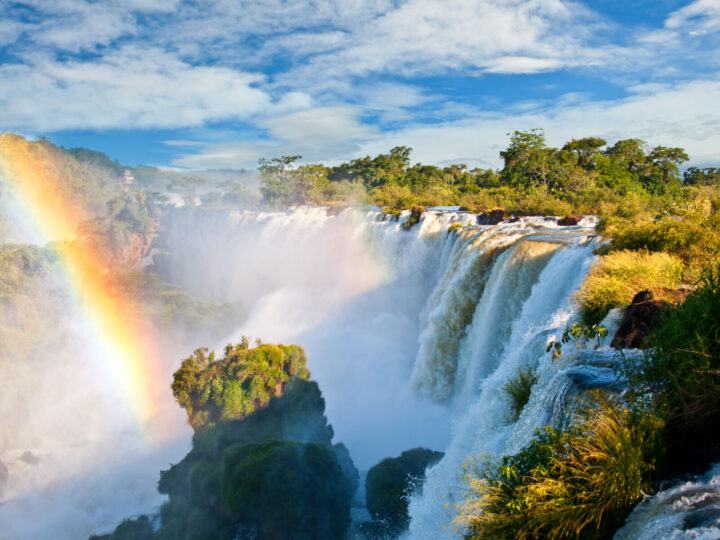
8,200 ARS ($43 USD) should be your daily budget in Argentina. Basic meals cost around 1,200 ARS ($6.5 USD) on average, but if you fancy a dish at one of the local steak houses (asados) in Buenos Aires or beyond, expect to pay at least 1,700 ARS ($9 USD).
The home to 2023 World Cup winners is popular among backpackers and solo travelers. As a result, hostels are affordable (around 950 ARS or $5 USD per night), making them only the second cheapest after Colombia.
However, mid-range hotels can be ten times more expensive, hovering around 9,500 ARS ($50 USD), especially during the high season. Our guide to the best time to visit Argentina can help you avoid these elevated costs
7. Brazil ($48 USD per day)
- Budget hostal: $12 USD
- Budget restaurant: $7 USD
- Overnight bus journey: $81USD 1d 7hrs
- Cost per day: $19 + $81 = $100
60% of the Amazon Rainforest lies in Brazilian territory, offering plenty of adventure tourism opportunities for those looking to head deep into the jungle.
On the other side of the country, Brazil’s long coastline means unlimited sun, surf, and sand, particularly in the vast seaside city of Rio de Janeiro, home to a thriving music, dance, and food scene – and, lest we forget, riotous carnaval celebrations!

A bowl of feijoada at a local restaurant usually costs around 37 BRL ($7 USD), while accommodation rates range from 63 BRL ($12 USD) for a hostel to 230 BRL ($44 USD) for a mid-range hotel. In total, a day in Brazil should cost around 251 BRL ($48 USD).
As long as you stay safe – such as by avoiding city beaches after dark and keeping possessions close – it’s doable to explore Brazil’s touristy areas alone. But if you wish to dig deeper into its villages and rainforest, it’s best to join a tour or be accompanied by a local guide.
8. Chile ($74 USD per day)
- Budget hostal: $20 USD
- Budget restaurant: $20 USD
- Overnight bus journey: $20 USD 11hrs
- Cost per day: $40 + $20 = $60USD
We’ve come to the more expensive side of the cheapest countries to visit in Latin America: Chile . Notice that there’s almost a $20 USD jump in daily expenses compared to Brazil at #7.
It’s mainly due to the expensive rate for accommodation, especially in remote areas like Chiloé Island, Rapa Nui (Easter Island) , Patagonia , and the Atacama Desert .
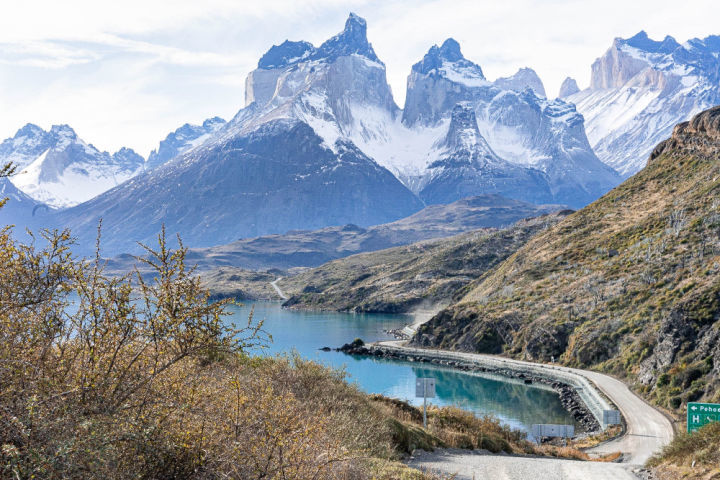
On average, a bed in a hostel costs around 16,000 CLP ($20 USD), while a mid-range hotel room is a lot more, ranging from 40,000 to 60,000 CLP ($50 to $75 USD). That said, Chile is packed full of brilliant hotels and guesthouses , so it’s worth being open to splurging a little where you can.
The Chilean culinary scene is dominated by restaurants in the big cities, so you need to budget around 16,000 CLP ($20 USD) or more for one meal. In contrast, in small towns like Dalcahue on Chiloé Island, you’ll find local markets offer mouth-watering delicacies at more wallet-friendly prices.
Despite the higher cost, the plethora of activities, sights, and experiences more than makes up for it; from the serene, breathtaking landscapes of Tierra del Fuego to the lively, picturesque coastal city of Valparaíso .
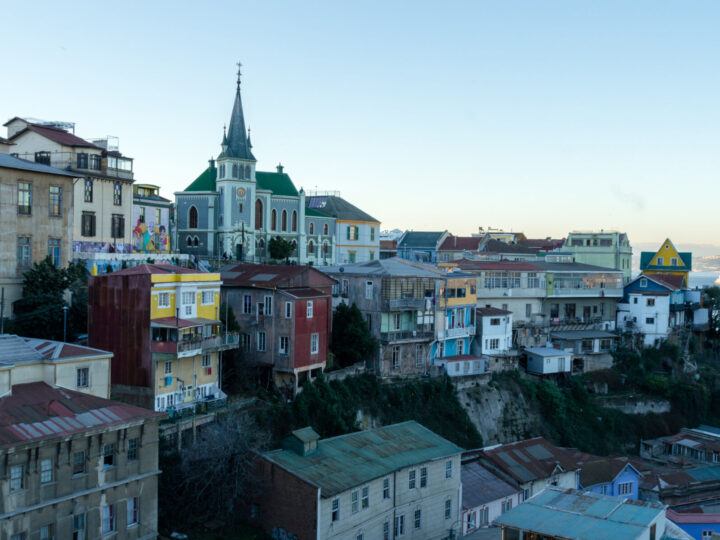
And let’s not forget, it’s the second safest South American country to visit, meaning you’ll face fewer safety concerns than elsewhere and be able to concentrate on the beautiful scenery and incredible natural landscapes, instead.
9. Uruguay ($80 USD per day)
- Budget hostal: $28 USD
- Budget restaurant: $10 USD
- Cost per day: $38
Nestled in Uruguay are several charming colonial towns that offer visitors a window into the country’s rich history and cultural heritage. In addition to these historical gems, Uruguay boasts stunning beaches.
To top it off, Uruguay was declared the safest South American country to visit by the 2022 Global Peace Index , making independent travel a worry-free option.
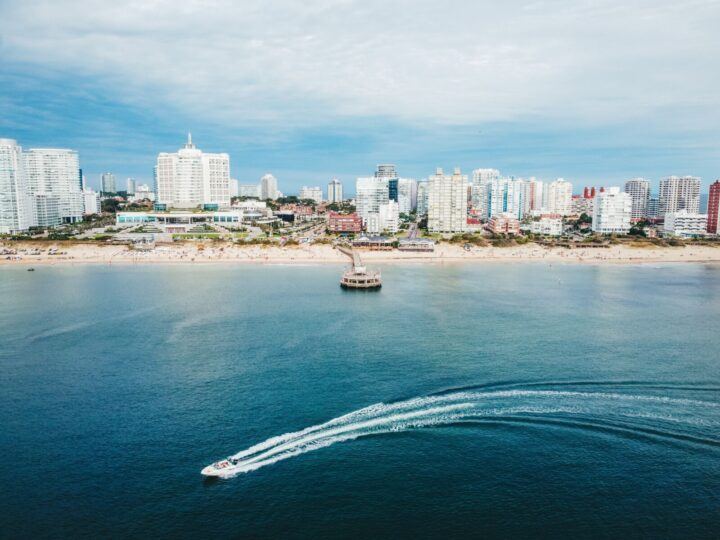
Living costs in Uruguay are among the most expensive in South America, with hostels setting their nightly rate at around 1,100 UYU ($28 USD), and mid-range hotels costing at least double.
Typical meals like empanadas and chivitos cost around 400 to 500 UYU ($10 to $15 USD) or even less if you choose street food stalls. Overall, expect to spend around 3,130 UYU ($80 USD) a day in Uruguay.
10. Venezuela ($100 USD per day)
- Budget hotel: $50 USD
- Cost per day: $60
A must-see when visiting Venezuela is the Angel Falls, one of South America’s most magnificent waterfalls . Apart from that, its capital city Caracas offers visitors museums, art galleries, historic sites, and street food stalls selling local fare. It’s unfortunate that this country has faced numerous struggles over the past few views.
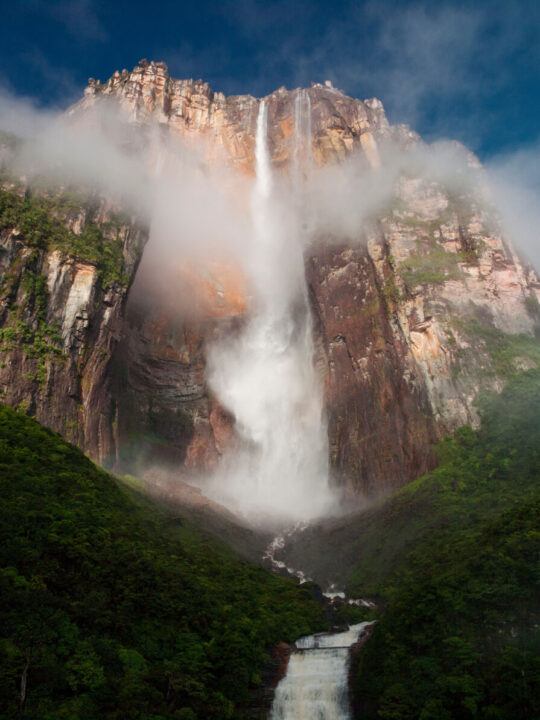
The economic collapse in Venezuela has resulted in severe hyperinflation and a shortage of basic goods, causing prices to skyrocket. This significantly influences your South America vacation budget if you want to include Venezuela – however, we highly advise against visiting the country right now, due to safety concerns.
Currently, a regular meal at a local restaurant can cost $10 to $13 USD, which is usually what a dish at a mid-range restaurant would cost in most South American countries, while a mid-range hotel room charge from $50 to $80 USD. In total, you’ll need $100 USD per day in Venezuela.
11. Suriname ($110 per day; including tour/guide fees)
- Budget restaurant: $9 USD
- Cost per day: $37
From Paramaribo’s Dutch colonial architecture to pristine rainforests, waterfalls, and rivers, Suriname has something for every kind of traveler. But since it’s one of the most challenging places to visit in South America, even an avid traveler should consider joining a tour or hiring a local guide.
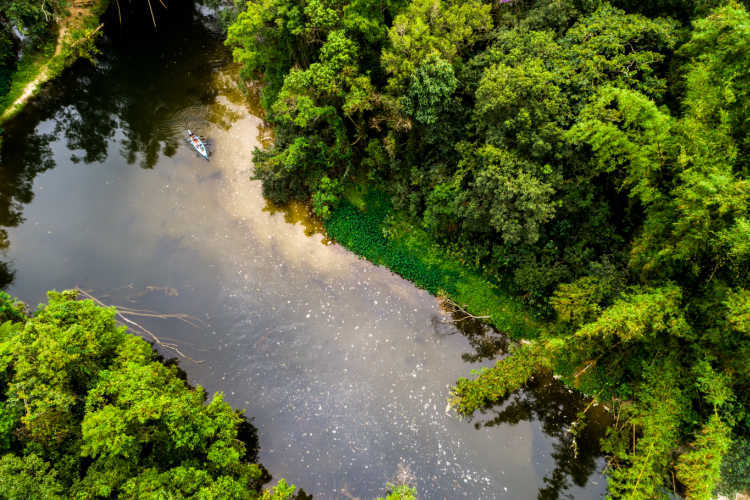
Set aside a 3,500 SRD (around $110 USD) daily budget to have a hassle-free experience in Suriname. A basic meal costs around 290 SRD ($9 USD), while for budget-friendly accommodation options, hostels and basic hotel rooms will cost between 900 and 1,130 SRD ($28 to $35 USD) per night.
Alternatively, Wilderness Explorers offer customizable trips to Suriname that include transportation, meals, and activities, and make it significantly easier to have a comprehensive experience of the country – all while visiting Guyana and French Guiana, too. As they’re one of our trusted local partners, you’ll receive a 5% discount if you mention Worldly Adventurer.
12. Guyana ($115 per day; including tour/guide fees)
- Budget restaurant: $12 USD
- Cost per day: $24
With its vast areas of pristine rainforest, Guyana offers opportunities for outdoor activities like hiking, kayaking, and wildlife watching. For the latter, Rupununi Savannah is a must-visit; it’s the home to a diverse array of wildlife, including anteaters, giant otters, and jaguars, and is an absolutely unmissable destination for nature lovers.
Meals and accommodations in Guyana are affordable (ranging from around 2,500 GYD or $12 USD). But since most areas are not served by public transportation, getting around is challenging and expensive.
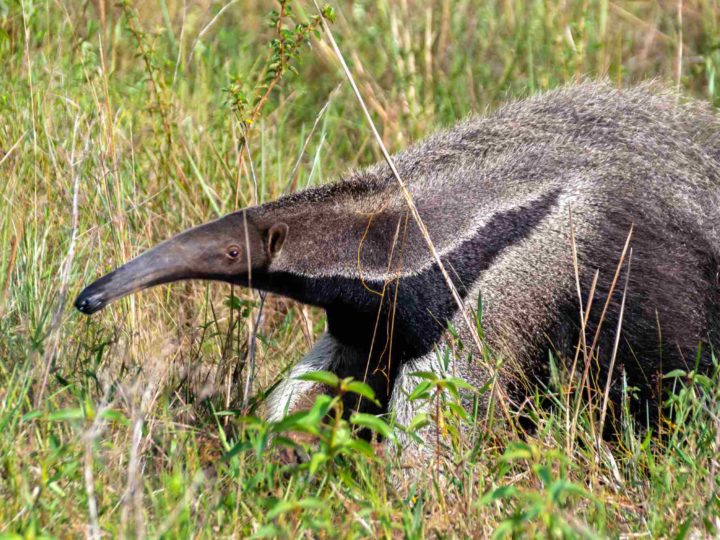
Even with Guyana being one of the few English-speaking South American countries, it’s almost impossible to explore Guyana without a tour due to its remoteness. Wilderness Explorers is one of the few tour operators here and founder Steph had a brilliant time visiting Guyana with them a couple of years back.
Their nature experience tour gives a brilliant introduction to the country, with visits to Kaieteur Falls, the world’s tallest single-drop waterfall, and remote lodges where endemic wildlife species roam all part of the itinerary. Again, mention Worldly Adventurer for a 5% discount.
What is the cheapest country in South America to visit?
Colombia is often considered one of the most budget-friendly countries in South America. Its affordable accommodation options, low-cost local transportation, and delicious street food make it possible to enjoy a comfortable and memorable trip to Colombia on a budget.
You can find a basic hostel for around 20,000 COP or $4 USD per night, and a delicious meal at a local restaurant for as little as 20,000 to 30,000 COP (about $4 to $6 USD).
But the fact that the country’s diverse landscapes and rich cultural heritage can be enjoyed without incurring a high cost makes it the most affordable country in South America and an increasingly popular place to explore.
Is it cheap to visit South America?
South America can be both cheap and expensive, depending on several factors. These include which countries you plan to visit, the type of accommodation you prefer, and the activities you plan to participate in.
However, it is possible to go on cheap vacations in South America by choosing budget-friendly accommodation options, eating street food or cooking your own meals, and avoiding expensive tourist traps. You can also save money by traveling during the low season when prices tend to be lower.
How much should I budget for a trip to South America?
On average, a budget-friendly trip to South America can cost between $50 to $100 USD daily, while a mid-range trip can cost between $100 to $200 USD daily. This doesn’t include entrance tickets to famous places in South America, such as Machu Picchu , Torres del Paine National Park , or the Galapagos Islands.
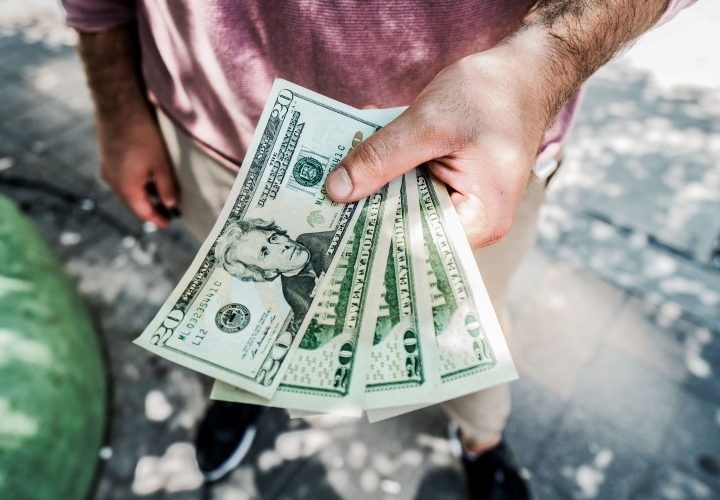
It’s important to remember that prices can vary greatly between countries and even between different regions within a country. For example, countries like Colombia, Bolivia, and Peru tend to be more budget-friendly than Argentina and Brazil.
Planning to visit more than one country? Save money by flying into the cheapest country in South America and making it the starting point of your trip.
How much money do I need for two months in South America?
If you’re traveling on a tight budget, you can cut your expenses to as low as $1,500 USD for two months. That is more than enough to stay in the cheapest countries to visit in Latin America.
But, if you prefer mid-range accommodations and activities, you should budget closer to $2,500 to $3,000; more if you plan on visiting remote tourist attractions in South America, such as Patagonia , which can be a lot more expensive (although we do have tips for traveling to Patagonia on a budget ).

Wednesday 24th of January 2024
Thank you for the great information.
Steph Dyson
Friday 9th of February 2024
You're welcome! Steph
Přejít k obsahu | Přejít k hlavnímu menu | Přejít k vyhledávání

- Three months traveling through South America on a budget
- < Destinations
Destinations
By David Szmidt October 6, 2022
By David Szmidt | October 6, 2022
Last update: October 17, 2022
South America is one of the most amazing continents in the world, but if you’re thinking about going, you’ll need to do some planning. Budget, paperwork, when to go, what to pack, vaccinations, which countries to visit, and how to get around… we’ve got all this covered
This is Kiwi.com ’s guide to South America , and it’s in two parts. Firstly, we’ll look at some of the most common questions asked about backpacking around South America , and then we’re going to talk to someone who’s actually done a lot of the things you’ll want to do. Let’s explore!
How much money do you need to backpack around South America?
A typical budget is probably around €1,000 a month, but will, of course, vary depending on where you stay, which country you’re in, and what you decide to do. Use €1,000 as an estimate and adjust accordingly.
What are the best countries to visit in South America?
‘ Best ’ is, of course, very subjective. What do you want to do? Let’s take the five most popular countries and see why people go there.

Buenos Aires , the capital, is one of the most colorful and cultured cities in South America, with tango rhythms and passionate people. The scenery is spectacular as well, giving you a little bit of everything: rainforests in the subtropical north, the great plains that are home to the gauchos (Argentinian cowboys) and vineyards , and the mountains and ice fields of Patagonia.

The country with a reputation as the place for a party comes in second. No wonder, with cities like Rio de Janeiro and São Paulo to explore. Spend your days on the beach , your nights in the bars, and when you’re exhausted from city life, explore the jungles of the interior. The Amazon is one of the great natural wonders of the world, and ethical/ecotourism is a great way to see it for yourself.

A narrow strip along the edge of the continent, Chile includes the wonderful city of Santiago, from which you can explore further. Skiing in the Andes, exploring the almost martian landscape of the Atacama Desert, or heading to the end of the world in southern Patagonia, Chile is almost South America in a nutshell.

Many people visit Peru because it’s home to Machu Picchu , one of the most-visited sights in South America, but stay to explore the colorful towns and other places that hark back to the Incan civilization, such as the city of Cusco.
View this post on Instagram A post shared by Kiwi.com (@kiwicom247)
For years a bit of a no-go spot, Colombia is now immensely popular. Cities like Bogotá , the capital, and Medellín, attract visitors for their lively arts scenes and bouncing nightlife. There’s history in places like Cartagena, and beaches that rival any of those on the islands of the Caribbean.
When’s the best time to travel?
As with what you want to see, this will depend on what you define as ‘best’. The one key thing you have to remember if you’re coming from the northern hemisphere, the seasons are the opposite. However, it’s also, as mentioned, a vast continent, so if you’re planning to spend time in the north (Colombia, Venezuela, and so forth), try May to September. The very south — Chile, Argentina and the like — are best between October and April .
Things to book before traveling to South America
If you’re a planner, this sort of trip might not be for you! Of course, you’ll have places you’d like to go, but aside from flights onto the continent and back again, the best thing to do is decide when you’re there. Internal travel is pretty easy (and great value, and popular, as we’ll see), and while there are things that need booking (the Inca Trail or an Amazonian trek, for example), the best thing to do is use your judgment. After all, in most cities, there’s such a wide variety of places to stay that if you’re booked in advance for five nights somewhere that turns out to be a bit grim, that’ll either dampen your enthusiasm, or cost more again if you decide to move somewhere else.
Do you need a visa to travel to South America?
Visa requirements will depend on your nationality, naturally, but if you’re an EU citizen, it’s unlikely you’ll need one before you go. Most countries will grant tourists a 90-day travel visa upon entry, and this is also true for US , Australian, New Zealand , Canadian (and a whole bunch of other) travelers. You will need a passport that’s valid for at least six months from your entry date, but to be absolutely 100% sure, check each country’s individual guidelines before you go.
Do you need vaccinations for a trip to South America?
The coronavirus pandemic made vaccination restrictions one of the most-searched topics around, and people quickly realized that things could change very quickly. The same applies here. Check each individual country you’re planning to visit at least three months before you travel, but you’ll probably need a vaccination against yellow fever at the very least. Brazil, for one, will need a yellow fever vaccination certificate to grant you a tourist visa at the border.
You might also consider malaria tablets if you’re thinking of traveling into the rainforests, and if you’re heading into the mountains , there are also pills you can take to combat altitude sickness . This all depends on your itinerary of course, but it’s still good to keep in mind.
With the basic questions answered, we talked to Bára Vrzáková, an adventurous traveler who spent six weeks backpacking through Chile, about her experiences

“It’s not exactly the same, but what I experienced in Chile gave me a pretty good idea of what traveling in South America is about.” That’s true, and we don’t want to fall into the trap of thinking the whole continent is one homogenous place, but talking to Bára gives a vivid impression of many common aspects of such an adventure.
“Overall, prices were comparable to, say, a small town in Spain . A bit more [than the Czech Republic , where Bára is based], but not much. What did surprise me was the fact that you could pay by card pretty much everywhere — a couple of people I met in a rural area took me to a bar that was basically a wooden hut, but even there you could pay by card. Oh, and the beer is great in Chile! Maybe it’s something to do with German settlers coming there, I don’t know!”

Bára is a graphic designer, and one of the ways she funded her trip was by working on a farm. “It was like a farm with a restaurant attached. Or a restaurant with a farm attached, I don’t know which!” Having looked on workaway.info for something suitable, she found this project.
“It was in northwest Patagonia. You just find a project you like, message them, and see what happens. This particular project wanted people who could bring something extra, so I was doing the basics like picking and washing carrots, you know, but also doing graphic design. They wanted illustrations of the flora and fauna of the farm and surroundings, so when people walked around the farm and gardens , they’d see my illustrations and read a small explainer. Guests would know what flower or herb they were looking at and, therefore, what they were eating. In exchange, I got free accommodation and free food .”

Exploring the region was easy as well. “ Buses are super comfortable, and probably the most common way to get anywhere, particularly long-distance overnight buses. On those long journeys, you get a blanket and a snack, which was a nice surprise. Everything is easily bookable online; I’d like parts of Europe to reach the comfort and ease of some parts of South America!
“Hitchhiking is common too, and seems generally safe in rural areas, if you’re traveling between small towns or villages. Stick your thumb out and either the first or second car will stop.
“People were generally just really nice. Even when I got a bit lost in Santiago, the absolute first person I asked for directions was happy to help. The second person even gave me their map!
“You do need to speak at least a little bit of Spanish, ‘survival Spanish’, let’s say. ‘Where is the…?’ ‘Can you take me to…?’ and so on, but communication is easy, and when people find out you’re a foreigner, they love to try and chat.”
@kiwi.com Do you agree?👽 #whytravel #alwaystravel #travellife #traveltiktok #travelblog #cheapflights #freetravel #budgettravel #cheaptravel #wehacktravel #wehackthesystem #kiwicomtravel ♬ original sound – Kiwi.com
It seems that one of the perks of traveling like this is that you meet a lot of like-minded people . “I’m still in touch with a couple of the people I met” says Bára, but she also told me that one of the disadvantages — if you see it that way — is that hostels are full of (generally European) tourists, all trying to do the same, to create their own adventure . Couchsurfing is still a big thing though, and she found this was one of the very best ways to meet the locals and discover things she’d never have found by herself.
A South American adventure just for you
@kiwi.com You’re on the right track, if you’ve been looking for cheap flights!😇 #cheapflights #freetravel #budgettravel #cheaptravel #wehacktravel #wehackthesystem #kiwicomtravel #HavaianasLivreDeCliches ♬ BORN FOR THIS – Foxxi
No matter what you choose to do, how you travel, or where you go, Kiwi.com is the place to be for low-cost travel on planes, trains and buses. Try using Nomad to plan a multi-city trip, set up a price alert to book when your flight drops to a price you like, or create itineraries that wouldn’t usually exist using self-transfer .
Kiwi.com’s travel hacks will help make your South American adventure even better.
Did you like this article? For more travel inspiration, visit Kiwi.com Stories .
Argentina Bogotá Brazil Chile Colombia Peru South America
Popular routes on Kiwi.com
- Cheap flights from Dubai to London
- Cheap flights from Vilnius to Tenerife
- Cheap flights from Nairobi to Eldoret
- Cheap flights from Tenerife to Vilnius
- Cheap flights from London to Prague
- Cheap flights from Barcelona to Tenerife
- Cheap flights from London to Athens
- Cheap flights from Cairo to Dubai
- Cheap flights from Berlin to Istanbul
- Cheap flights from Istanbul to Baku
- Cheap flights from London to Warsaw
- Cheap flights from London to Lisbon

World Travel Hackers: How to avoid paying at the airport for oversized baggage
Don’t you just hate it when airlines charge you extra simply for bringing cabin baggage? Our World Travel Hackers share their tricks for avoiding these fees, and they take on more budget travel challenges

World Travel Hackers: Exploring Bohol, the Philippines on just €20
Can ChatGPT work as a travel guide? Plus, see how Kiwi.com’s newest travel hack works, and how to explore Medellín, Paris, and Bohol on a budget

The 10 hardest marathons in the world
These 10 races are some of the toughest on the planet. Steep, hot, in thin air or other challenging conditions, these 26.2-mile runs show that not all marathons are created equal

Top fun facts about flags
Here are some interesting things you might not know about flags. Which flags are not rectangular? What is the study of flags called? What do the stars mean on some national flags, and which flag is the oldest? Find out here…

These are the airlines with the most legroom
Here are the best airlines to choose if you want the most legroom in economy. We look at the US, Europe, Asia and beyond to find the airline to choose for flying in comfort

10 of the most amazing natural phenomena from around the world
Check out this list of the most interesting and incredible things you can see in nature around the world. The best part about these 10 crazy natural wonders? You can see many of them for free!

David Szmidt
David is a lead writer for Kiwi.com, as well as a football-watcher, music-listener and beer-appreciater. @UtterBlether

Prague airport contains a wild illusion sculpture you have to see

Paris on a Budget: 10 Ways to Save Money When You Visit

Los Angeles on a budget: 10 ways to save money when you visit

I spent 9 months traveling the world. I had a great time, but I'd never do it again.
- I spent nine months traveling the world , and I wouldn't do it again despite having a great time.
- Because I was on a tight budget, I often found myself turning down cool experiences to save money.
- I also struggled to make genuine friendships and missed having a space to call my own.
When I was working remotely in 2021, my boyfriend and I packed up and traveled to 22 countries across Europe and Latin America.
Although these were some of the best days of my life, I quickly learned that a lot of the videos I saw on social media that glorified full-time travel didn't always showcase the downfalls of the lifestyle.
More and more people are becoming digital nomads — countries like Italy have even implemented specific visas for remote workers. But during my nine months abroad, I learned that the lifestyle isn't all it's cracked up to be.
Here's why I wouldn't travel full time again.
I found myself constantly looking for places and experiences that felt like home
While traveling full time, I found myself constantly looking for places and experiences that felt like home.
In some ways, it was cool to feel like a local in a new city. However, when I returned home and took shorter vacations, I started to value the places I was visiting for their differences rather than trying to find some semblance of home.
Nowadays, I like having a home base. Shorter trips help me to break up the monotony of life without sacrificing the comfort of home.
It felt like I was constantly thinking about money
When I was traveling full-time, I was on a strict budget . I either drained my wallet or ate cheap food to maintain some sort of financial security while on the road.
I talked myself out of going to every museum I wanted to and purchased cheap meals for dinner instead of indulging in local cuisine that might have been out of my budget.
The moments I would slip up on my spending were when I forgot this wasn't a never-ending vacation, but rather, my new everyday life.
During the first two weeks of our trip, I wanted to go to all of the must-try restaurants in Paris . However, I soon realized that came at the cost of establishing a strict daily budget for the remainder of our three weeks there.
Of course, it was worth it in the end to save money so that I could travel for nine months. However, now that I take a few shorter trips a year, I have more flexibility to make them everything I want them to be.
My friendships at home changed, and the new ones I made were fleeting
I think what travelers yearn for the most is community. When I was traveling, it was really hard to find the same quality of friends that I have at home.
When I did meet friends abroad, it was often short-lived. I found that many people traveling full time were only in a city for a few days. Even when I did find someone I connected with, it was hard to maintain a long-distance friendship.
Traveling full time also took a lot out of my friendships at home, as it seemed like they learned to live without me.
When I returned home, it felt like we didn't have as much in common as we used to. It took me months to get my friendships back to where they were before I left.
I missed having a space to call my own
While traveling, I stayed in 25 different places across nine months. Although seeing so many new places was cool, I missed having a space to call my own.
After spending so many nights in beds that weren't my own, it was an indescribable feeling to come back home. In fact, when I got back, I was able to create a space that took inspiration from the places I'd been.
I think traveling is something everyone should prioritize, but there are ways to see the world that don't involve doing it full time.
Nowadays, I plan to take at least four international trips a year, ranging from one to two weeks. This allows me to live a travel-filled life without giving up the comforts of home, career, and relationships.
If you enjoyed this story, be sure to follow Business Insider on Microsoft Start.
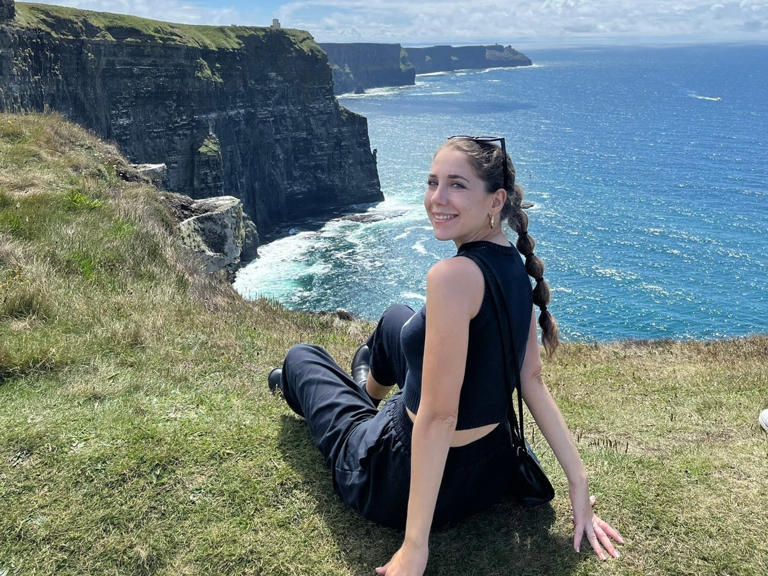

- December 20, 2021
- No Comments
The Ideal 2-Month South America Itinerary For Budget Backpackers
What’s the best budget backpacking route for 2 months in south america.
The variety of travel routes you can take through South America is endless.
The best route really depends on your goals and budget. 2 months in South America is a great amount of time. You can spend 20 days in three different countries or two weeks in each country and see 6 in total!
For 2 months in South America on a budget , I think the best travel route would be one that goes through Ecuador, Peru, and Bolivia as they are cheap compared to places like Chile and Brazil , close together, and the travel routes between them by bus and air are short and well established.

South America 2-Month Budget Itinerary – Ecuador, Peru & Bolivia
- Pros – the cheapest way to travel through South America, perfect for budget backpackers. This itinerary also has lots of flexibility to extend your stay in your favourite places as well
- Cons – you will be skipping some of the more popular sights such as the Galapagos islands, and taking some long overnight buses to stick to a budget
Here is a the complete 2-month South America itinerary for budget travellers:
Country 1 - Ecuador
- Day 1 – Quito
- Day 2-3 – Otavalo
- Day 4-5 – Mindo
- Day 6-7 – Quito
- Day 8-9 – Cotopaxi National Park
- Day 10-14 – Latacunga / Quilotoa Trek
- Day 15-17 – Baños
Day 18-21 – Montanita
- Day 22 – Travel day to Lima
Country 2 - Peru
- Day 23-24 – Lima
- Day 25-26 – Paracas
- Day 27-28 – Huacachina
- Day 29-33 – Arequipa / Colca Canyon
- Day 34-36 – Cusco
- Day 37-41 – Salkantay Trek/Machu Picchu
- Day 42 – Cusco
- Day 43 – Travel day to Copacabana
Country 3 - Bolivia
- Day 44-45 – Copacabana
- Day 46-48 – La Paz
- Day 49-52 – Rurrenabaque / Amazon Tour
- Day 53 – La Paz
- Day 54 – Travel day to Uyuni
- Day 55-57 – Uyuni Salt Flats Tour
- Day 58/59 – Uyuni /Return to La Paz /Home
Days 1-22 - Ecuador
Day 1 - quito.
For your first day in South America, best to take it easy and acclimatise to the higher altitude. You will only be here for the day but don’t worry though as you will be returning to Quito in a couple of days.
The easiest and cheapest thing to do is to explore the city on a free walking tour . The tour takes you to the main sights in the historical centre including Plaza Grande – the main square which includes the presidential palace, and La Ronda – the popular tourist street filled with galleries, craft shops, and restaurants.
For more great things to do in Quito including chocolate tasing, museums, and visiting the equator , head to the guide below:
- The 19 Best Things To Do In Quito As A Backpacker

Day 2-3 - Otavalo
Otavalo is a 2–3-hour journey north of Quito by bus. There are two reasons to come here: the huge indigenous market the town is famous for, and the crater lake hike at Laguna Cuicocha.
On your first day in Otavalo, you can visit the market which is the oldest and largest Indian handicrafts market in all of South America . It spreads out from the main square for blocks in each direction and sells everything from blankets and ponchos to jewellery, instruments, leather goods, spices, and more.
On your second day it’s time to try your first hike at altitude.
Laguna Cuicocha , which translates to Lake of Guinea Pigs, was given this name due to the shape of the two islands that can be seen in the middle of the lake. A circular trail goes around the lake, and you can hike around the entire thing for amazing views of the islands, lake, and Volcano Cotacachi off in the distance.
Everything you need to know about Otavalo and getting to the Laguna can be found in the two posts below:
- The Best Things To Do In Otavalo As A Backpacker
- How To Visit Laguna Cuicocha From Otavalo
Do You Want Cheap Flights To South America With Cashback?
I’ve been using WayAway Plus to book almost everything whilst travelling around South America.
You get cashback on:
- Flights – finds the cheapeast flights and gives you 5% cashback on all flights booked
- Accommodation – up to 20% cashback on selected deals with Booking.com and 6% with HostelWorld
- Tours – up to 8% cashback with GetYourGuide and 6% with Viator
Day 4-5 - Mindo
The Mindo cloud forest is the perfect escape from the high altitudes of Quito and Otavalo. The lush forest ecosystem of Mindo has the perfect conditions to grow what is known as some of the best chocolate in the world.
Spend your first day here on a tour around a chocolate farm that will show you how the cacao plant is grown and harvested, ending in a tasting session!
On your second day in Mindo, you have a wealth of options from tubing down the rivers to tropical birdwatching to hiking in the waterfall sanctuary.
Read our complete Mindo guide here with even more great things to do such as mountain biking and night forest tours :
- The 8 Best Things To Do In Mindo As A Backpacker

Day 6-7 - Quito
Now that you have spent some time adjusting to the high altitude of Ecuador, you can return to Quito to explore further.
On your first day back in the capital, you should ride the Teleferico – Quito’s cable car that takes you from 3000m at the edge of the city, all the way to 3495m at the summit of Volcano Pichincha. At the top, you will have unobstructed views of the city, as well as of the many volcanoes surrounding Quito. Make sure you book into one of the many great backpacker hostels as well to get more great views – Secret Garden is our favourite!
Then on your last day in Quito, it’s time to visit ‘Mitad Del Mundo’ or the middle of the world in English, which is where you can go to stand on the actual equator line.
Our complete guide to the capital where these days are broken down into a more detailed itinerary can be found here:
- The Perfect 3-Day Quito Itinerary
Day 8-9 - Cotopaxi National Park
Time to get treated to one of the best hostel experiences in all of South America.
Booking a two-night stay at Secret Garden Cotopaxi is the best way to see the National Park and experience the stunning Cotopaxi Volcano . The hostel sits directly opposite the volcano and the views are unrivalled. They also run tours into the park, so everything is taken care of for you.
Everything you need to know about booking and staying at Secret Garden Cotopaxi can be found here:
- Secret Garden Cotopaxi Review

Day 10-14 - Latacunga / Quilotoa Loop
The next town you visit after Cotopaxi is Latacunga, where you will be preparing for one of the best treks in Ecuador.
You will need to set aside 3 full days to complete the Quilotoa Loop Trek and add in a day after as well for rest and recovery. This self-guided trek through the beautiful Andean countryside comes to 40km in total.
The final day of the trek ends up at the spectacular Quilotoa Crater , one of the most popular tourist attractions in Ecuador.
All you need to know about preparing for the trek including where to stay in Latacunga and over the 3 days can be found here:
- The Best Hostels On The Quilotoa Trek
- The Complete Guide To The Quilotoa Trek
Preparing for your first trip to South America?
Here are 22 FAQ’s to help you prepare for the trip of a lifetime:

- How To Prepare For A Trip To South America: 31 FAQs Answered
How do you prepare for a trip to South America? Here are 31 commonly asked questions, answered an expert (me) so you can have the trip of a lifetime!
Day 15-17 - Baños
Baños is the adventure capital of the country.
But after 3 days of trekking, why not start with a spa and massage day with treatments fuelled by the volcanic activity around the town?
El Refugio is the best choice and one of the many public baths in town. Along with thermal baths, they have saunas, steam rooms, and offer a range of spa services such as massages, mud baths, and pedicures.
On your second day in Baños, it’s time to ride the ‘Route of Waterfalls’ – A single main road that winds its way through the Baños valley, with waterfalls dotted at almost every corner and bend on the way.
The best stop along the route is Pailon del Diablo , an insanely powerful waterfall that plunges 61 metres (200ft) into a pool of powerful rapids. With bridges and paths running through the gorge, and multiple platforms and viewpoints, this is an incredible natural wonder not to be missed.
On your final day, you have a choice of many other activities including white water rafting, trekking up Tungurahua volcano or just relaxing and enjoying the town.
For more information on all these activities in Baños including the best restaurants, hostels and transport tips, head to the full guide below:
- The Essential Baños 4-Day Itinerary

To end your time in Ecuador, we are heading to the beach to one of the best surf and party destinations in all of South America.
Montanita is a tiny surf town full of great Spanish schools where you can spend your time in the day, and lots of bars, clubs where you can spend your evenings partying away.
Our complete guide Montañita including Spanish schools, surf tips, and nightlife guide can be found here:
- Is Montanita Worth Visiting? 10 Great Reasons To Visit In 2023
Day 22 - Travel Day To Lima
Well done! You’ve ticked off your first country on this 2-month South America Itinerary.
On your final day in Ecuador, you will have to make your way to Guayaquil from Montanita which is a 4–5-hour journey. From there you can take a flight to Lima and continue the next part of this epic 2-month journey.

Days 23-43 - Peru
Day 23-24 - lima.
Your first day in Lima should be spent on the free walking tour of the historical centre. The tour will take you around the highlights of the historical centre such as San Martin Square and the Santo Domingo Church.
After seeing the historical centre it’s time to head to Miraflores . This is the preferred area for tourists and travellers with an abundance of trendy cafes and great restaurants all situated amongst the seafront parks and boardwalks.
On day 2, head to the bohemian district Barranco. Barranco is one of the city’s hippest neighbourhoods with colourful street art, mural-covered buildings, and hidden coffee shops all set within an old colonial-era mansion-style district.
Our Lima backpacker guides have everything you need to know:
- The Best Things To Do In Lima As A Backpacker
- Lima vs Cusco: Which Is Best For You If Short On Time?

Is This The Best Backpack For South America?
I love the Osprey Farpoint 50-70L.
It’s reasonably priced and perfect for first timers visiting South America.
Read more here about why it’s so great or head to the official site below:
Day 25-26 - Paracas
Paracas is Peru’s famous desert filled with rolling dunes and jagged cliffs that drop off to the crashing waves of the Pacific Ocean.
The entire area is a national park, and this untouched natural landscape is perfect for backpackers looking for exploration and adventure.
You can explore the park by bicycle , ATV, or guided tour on one day. And on the other, a trip to the Ballestas Islands is well worth it. The islands are known as Peru’s Galapagos Islands and you can see whales, sea lions, penguins, and thousands of sea birds on a tour.
All the information you need is for visiting the park can be found below:
- The 4 Best Ways To Visit Paracas National Park
- Paracas Backpacker Guide & 3-Day Itinerary

Day 27-28 - Huacachina
Visiting the desert oasis of Huacachina is a necessary stop on any backpacker’s journey through Peru for several reasons. You get to fly across the desert in sand buggies, sandboard down massive sand dunes and party the night away in the crazy backpacker hostels.
Our 2-day Huacachina itinerary with more information on hostels and restaurants be found here:
- Huacachina 2-Day Backpacker Itinerary
Day 29-33 - Arequipa & Colca Canyon
Arequipa is an underrated gem of a city bursting with beauty and charm. With tranquil cobblestone streets, fantastic local cuisine, and great rooftop bars , all surrounded by a backdrop of picturesque volcanoes, the city has a lot to offer.
On top of this, this will be your starting point for trekking into Colca Canyon , the second deepest canyon in the world.
Trekking down into the second deepest canyon in the world is an experience like no other. You’ll spend most of your time picking your jaw up off the floor as you walk around in awe of the canyon’s vastness. The tour will take a full two days and two nights before returning to Arequipa for a day of recovery.
Then from Arequipa, you will need to take an overnight bus to Cusco as it’s a long journey (14 hours). Best to do it whilst sleeping.
For more information on the Arequipa and guided treks into Colca Canyon:
- The Best Things To Do In Arequipa As A Backpacker
- Colca Canyon: Guided Trek Vs Without a Guide

Day 34-36 - Cusco
The ancient capital of the Inca Empire – known for a wealth of archaeological remains and beautiful Spanish colonial-era architecture – is now one of the most popular backpacker hubs in all of South America.
As always, start with a free walking tour on your first day and get a feel for the city. Or if you are feeling adventurous, we highly recommend trekking up to 5000m to the summit of Rainbow Mountain.
Then for your final day in Cusco, you have lots of options to choose from including chocolate tours, massages or partying in the many great backpacker hostels.
For more information on Cusco and the best activities outside of the city such as Rainbow Mountain, check out the posts linked below:
- Cusco Backpacker Guide & Best Things To Do
- Vinicunca vs Palccoyo: Which Rainbow Mountain Is Best?
Day 37-41 - The Salkantay Trek & Machu Picchu
One of the best ways to see Machu Picchu is via the 5-day Salkantay Trek.
On this trek, you will see many incredible sights along the way and it’s also the cheapest way to see the ancient citadel as your ticket and accommodation are all included in the price of the trek.
Laguna Humantay and Salkantay Mountain are just two of the incredible places you will visit. The best part though is the c.120km you’ll walk, the friendships formed, and the sense of accomplishment gained from trekking in the mountains with a bunch of random backpackers.
For everything you need to know on planning and preparing for the Salkantay Trek:
- The Salkantay Trek Guide & Itinerary
Day 42-43 - Cusco & Travel To Bolivia
After 5 days of trekking, a rest day in Cusco is needed to recover and wash all your dirty trekking gear. Check out our posts on the best backpacker hostels and restaurants so that your return to Cusco is set up for comfort and relaxation
Then the day, take the 9-hour bus from Cusco to Copacabana to start the final part of this 2-month South America itinerary in Bolivia.

Days 44-60 - Bolivia
Day 44-45 - copacabana & lake titicaca.
Lake Titicaca is the highest navigable lake in the world at 3,810 metres above sea level.
Half of it sits in Peru, the other half in Bolivia. The town of Copacabana on the Bolivian side is a small but pretty place filled with local markets and artisan restaurants, but it’s the lake itself that is the must-see.
Fun activities include walking up to the summit of Cerro Calvario to get beautiful views of the lake and taking a boat tour to Isla del Sol , the largest island on the lake. You can easily arrange tours through your accommodation or head down to the pier to book.
Day 46-48 - La Paz
Once you reach La Paz you have an endless list of things to choose from such as biking down Death Road , trekking in the Valley of the Moon , or climbing Huayna Potosi .
3 days is a good amount of time to cover it all. We recommend riding down Death Road one day and then using the others to explore in and outside of the city.
Follow our La Paz backpacker guide to help you plan further:
- The 13 Best Things To Do In La Paz As A Backpacker

Day 49-52 - Rurenabaque / Amazon Tour
The next step on this 2-month South America itinerary is a visit to the Amazon. From La Paz you can catch a 30-minute flight up north to the frontier town of Rurrenabaque.
Visiting the Amazon in Bolivia is much cheaper and easier compared to other countries in South America.
The standard Amazon tour is 3 days and 2 nights, and you will be picked up in Rurrenabaque. On the tour, your days will be spent on a longboat winding through the tributaries of the Amazon searching for caimans, anacondas, and exotic birds.
We took a day on either side in Rurrenabaque to enjoy the town and rest and recuperate. That’s the beauty of having 2 months travelling – you can slow down and not worry about rushing everywhere all the time.
Our complete guide to booking an Amazon tour and flying to Rurrenabaque from La Paz can be found here:
- How To Visit The Amazon In Bolivia
Do You want Cheap Data Anywhere In South America?
Airalo is my favourite eSIM for travelling around South America. Here’s why:
- Save Money – No more high roaming bills with access to the best eSIMs (digital SIM cards) for every country in South America!
- Easy – No more stress trying to buy a physical SIM. You can download and install a data pack and get connected as soon as you land.
Day 53 - La Paz
If you prefer to break your long journeys up, then take an extra day in La Paz here.
The flight back from the Amazon is short so if you prefer to save the day then you can either hop on another flight down to Uyuni or take the overnight bus which takes 8-9 hours.
If you decide to take a day here to rest, then make sure you book yourself somewhere nice. La Paz has a wide range of backpacker hostels from budget to luxury hostels.
For more on our favourite backpacker hostels in La Paz:
- The 10 Best Backpacker Hostels In La Paz

Day 54 - Uyuni
Once you arrive in Uyuni, go window shopping for the best salt flat tours (it’s cheaper to book in person!) and get yourself ready – it’s time to end this epic two-month South America trip with probably one of the best tours on the whole continent.
Day 55-57 - Salt Flats Tour
The 3-day Salar De Uyuni tour will take you from one unique landscape to the next, starting with the white expanse of the salt flat on day 1, to the high-altitude desert of the Andes on the next.
Your mind will be blown by all the incredible scenery and you will leave this trip leave on a huge high. The perfect way to end an incredible time in South America!
Uyuni tours can either drop you off at the Chilean border or take you back to the town of Uyuni. As we are at the end of the 2-month itinerary, we assume heading back to Uyuni is best.
Our Uyuni guides have all the information you need including the best tour company and what to pack:
- The Ultimate Uyuni Salt Flats Guide
- When To Visit Uyuni For The Mirror Effect

Day 58-59 – Uyuni / Return to La Paz / Home
Take one final night in the town of Uyuni before returning to La Paz. Once in La Paz, find somewhere nice to stay for your final night in South America before taking your last flight home!
That’s our recommended route and itinerary for travelling South America in 2 months on a budget.
For even more great itineraries that will fit every traveller’s need, check out these posts:
- How To Spend 3 Months In South America
- The Ideal 1-Month Backpacking Itinerary For Peru, Bolivia & Chile
- 4 Fantastic Three-Week Itineraries For South America

How Much Money Do You Need For 2 Months In South America?
To travel to South America for 2 months you need between $2000-$3000.
If you wish to travel South America on a backpacker budget, then $1000 a month is a good rule of thumb. You will need to eat at local markets most days, stay in the cheaper backpacker hostels and stick to local overnight buses for any long journeys.
Aim to take $3000 if you wish to eat out at a restaurant once or twice a week, if you want to pay for a more expensive tour every now and then and want to take the odd flight between countries to speed up your journey time so you have longer in each place you visit.
If two months is too much or not enough for you for an extended South America itinerary, check out the post below that summarises six of the best itineraries I’ve put together:
- How Many Days Do You Need In South America – 6 Great Itineraries That Work For Every Traveller
Popular South America Itineraries
If you have more than two-weeks to spare then why not check out our other South America itineraries ranging from three weeks to three months:
- 5 Expertly Curated Three-Week South America Itineraries
- The Comprehensive Six-Week South America Backpacking Itinerary
- 4 Epic 1-Month South America Backpacking Itineraries
- The Perfect 2-Month South America Itinerary For Budget Backpackers
- The Ideal 3-Month South America Backpacking Itinerary
- The Perfect 1-Month Peru and Bolivia Itinerary
- The 8 Best Digital Nomad Cities In South America
- 4 Perfectly Planned 10-Day Itineraries For South America
- 4 Fast-Paced One Week Backpacking Itineraries For South America
- A Flashpacker Five-Week South America Itinerary
- From North to South: The Complete 10-Week South America Itinerary
- Colombia, Ecuador & Peru Itinerary: From Two Weeks To Two Months
- Author Profile
- Posts by the Author
- Is Palomino Worth Visiting? 12 Great Reasons To Visit In 2024
- 14 Best Single-Day Hikes In South America For Nature Lovers!
- The 22 All-Round Best Backpacker Hostels In South America [2024]
- The 18 Best Party Hostels In South America
- The 10 Wildest Party Beaches In South America

Joe Bayfield
Hi I'm Joe Bayfield, Bayf for short. I love South America and want people to visit this incredible continent. I’ve travelled through Colombia, Ecuador, Peru, Bolivia, Chile and Argentina and also lived in Lima, Medellin and Buenos Aires. I write detailed South America itineraries to help you plan your next adventure!

Travel South America Like A pro
Travel South America Like An Expert


IMAGES
VIDEO
COMMENTS
South America on a SHOESTRING BUDGET. -Traveling on a very tight budget we spent $3881 in 275 days (over 8 months) so an average budget of $14.11 each per day. We camped a lot, hiked many of the most popular trails on the continent independent and did a lot of hitchhiking.
Daily Cost of Backpacking in South America - Quick Answers! Cost of street food in South America: $1-5USD. Cost of local restaurant food in South America: $5-30USD. Cost of food in a tourist restaurant: $10-30USD. Cost of water in South America: less than $1USD. Cost of beer in South America: $0.50-3USD. Cost of hostel bed in South America ...
As the first destination of our travels, it was hard to know what to budget for backpacking South America's most expensive country. We eventually set our budget for 4 weeks in Uruguay at £1800 - £450 a week - with max £30 a night on accommodation for both of us. Et voilà, in total we spent £1800, exactly on budget for 4 weeks in Uruguay.
In total, you will be paying around 2090 USD for activities from the ones listed above, as well as a flight to see the Nazca Line, climb an active volcano in Pucon, the Lost City Trek, a train trip to Machu Picchu, and more. Total Budget for 6 months in South America: $9,602 USD or around $50 USD per day.
6 Month South America Travel Itinerary - The Full 3-Course Latin America. 1.Rio de Janeiro, 2.São Paolo, 3.Iguacu Falls, 4.Buenos Aires, 5.Bariloche, 6.Torres del Paine, 7.Santiago, 8.La Paz, 9.Machu Piccu, ... Travelling South America on a budget can definitely be done.
The full costs of budget backpacking across South America over a six month long trip. Everything from food, accommodations, activities and more, I have got the entire breakdown just for you! The full costs of budget backpacking across South America over a six month long trip.
Ihla Grande. 2-3 Days. Brazil. Petropolis. 1-2 Days. Brazil. Rio de Janeiro. 3-6 Days. This South America backpacking route is designed for 6 months if you take it at a leisurely place and usually opt for the higher end of the suggested time-frames.
Colombia. Daily backpacker budget: $35 to $50 (€32 - 46) Travel costs in Colombia are mid-range by South American standards. It's gotten cheaper for many travellers over the past few years, as the falling value of the peso versus currencies like the US dollar has made it more favorable.
South America 6-month Itinerary: Adventurous Backpacking Route. With this 6-month South America backpacking trip itinerary, from Costa Rica to Brazil, you'll surf and relax in chill surf towns, test your limits in the Andes mountains and discover fascinating cultural traditions in historical cities and landmarks.
6 Month Backpacking South America Itinerary. We spent over 6 months in South America as part of our 12+ month backpacking journey through South and Central America right up to North America, ending in the USA. We started in Chile, headed east to Brazil and made our way north via Argentina, Bolivia, Peru, Ecuador and Colombia before heading into ...
Backpacking South America Budget. The costs of travelling in South America vary greatly depending on the countries you choose to visit, and the economic situation is like at the time. For example, Brazil was quite expensive when I visited in 2016 due to the relatively strong Brazilian real. ... South America Itinerary 3 - 6 Months + in South ...
South America Travel Costs. Let's take a look at the typical costs that you'll be spending on a day to day basis in South America. Remember these can and will vary depending on where you are! Average Dorm Bed = £4-10. Private Single Room in a Hostel = £10-15. A Street Food Dish = £1-2.
The answer is neither, take a hybrid backpack that has wheels to South America. I spent 6 months travelling South America and took with me an eagle creek 85L wheeled backpack. ... Total One Month South America Budget. $980. $1400. $2100. Check out the budget guide linked below to help you plan your spending: ...
Travel around the continent at a relatively relaxed pace, including time in most of the major countries and a budget for 6 months in South America might come to around $6000. This excludes the cost of flights to/from the region or any other pre-trip expenses such as the cost of travel insurance for your backpacking trip .
3 to 6 Month South America Itinerary. ... SOUTH AMERICA TRAVEL BUDGET. Travel in South America is in a very reasonable price range - between $40 and $60 a day for a backpacker style budget, averaged across all countries, assuming shared hostels, eating out once per day, and DIY traveling as much as possible. ...
This technique is going to weigh a lot on your budget especially if you are backpacking for 3-6 months in South America. If you want to have extra food while traveling, you can even bring a Tupperware container. ... Travel Budget French Guiana: $80 per day. Dutch is the official language in Suriname, formerly known as Dutch Guiana. The Cloud ...
Peru (from $23.5 USD per day) Budget hostal: $7 USD. Budget restaurant: $2.5 USD. Overnight bus journey: $14 USD 18 hrs. Cost per day: $9.5 + $14 for buses = $23.5 USD. The third cheapest country to visit in South America is Peru, where an average day traveling here costs around S/89 or $23.5 USD.
For a month backpacking in South America, you should aim to spend around $1500. Budget travellers will be able to manage a month on around $1000-1200 if they only stick to one or two countries, stay in dorms, and eat mainly at markets. Flashpackers who prefer smaller dorms (or private rooms) and eating at a restaurant once a day should aim for ...
A good rule of thumb for backpacking South America is $500 a week. So, for five weeks of travelling around South America, I would budget a minimum of $2500. However, the flashpacker five-week itinerary has you visiting five countries with several flights included. It also includes some of the best tours in South America such as Machu Picchu ...
How much money do you need to backpack around South America? A typical budget is probably around €1,000 a month, but will, of course, vary depending on where you stay, which country you're in, and what you decide to do. Use €1,000 as an estimate and adjust accordingly.
Total. $2850. A good rule of thumb for backpacking South America is $500 a week. So, for six weeks of travelling around South America, I would budget a minimum of $3000. However, this six-week itinerary has you visiting five countries with several internal flights as well as flights between countries.
I'm planning on travelling South America for 6-8 months solo, but I'm starting to realise that the kind of budget I will need may not be possible with current (future) earnings. I think for 8 months, I will need about £8000 to last comfortably but while still on a budget but I don't think this will be at all possible.
When I was working remotely in 2021, my boyfriend and I packed up and traveled to 22 countries across Europe and Latin America.
To travel to South America for 2 months you need between $2000-$3000. If you wish to travel South America on a backpacker budget, then $1000 a month is a good rule of thumb. You will need to eat at local markets most days, stay in the cheaper backpacker hostels and stick to local overnight buses for any long journeys.